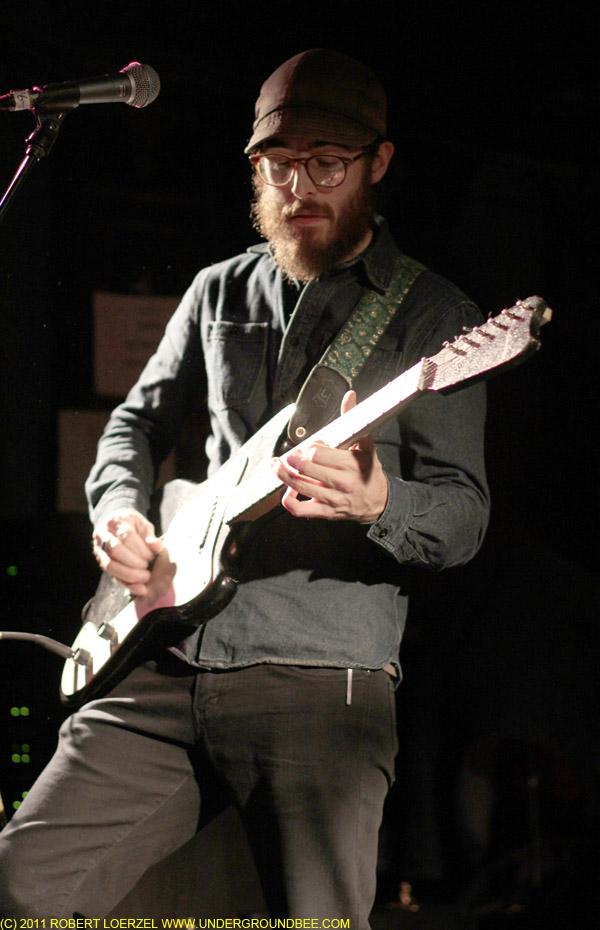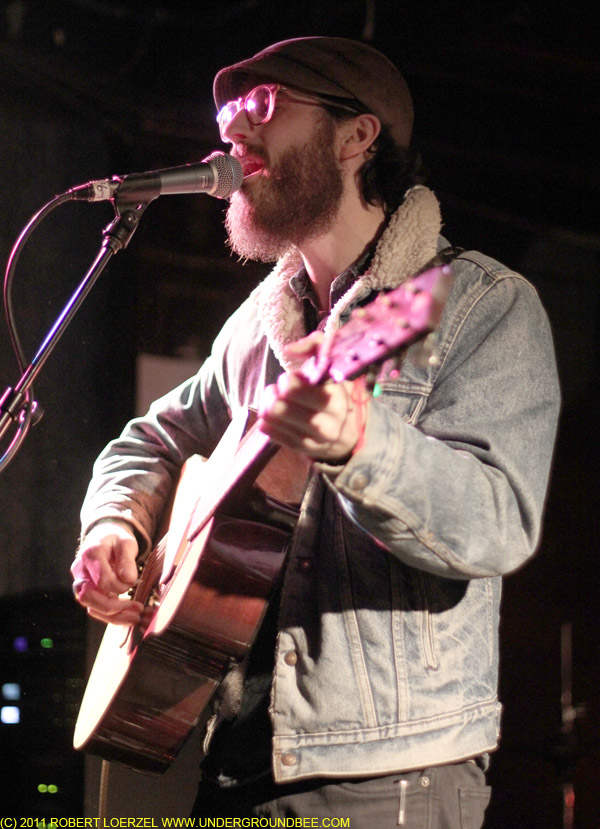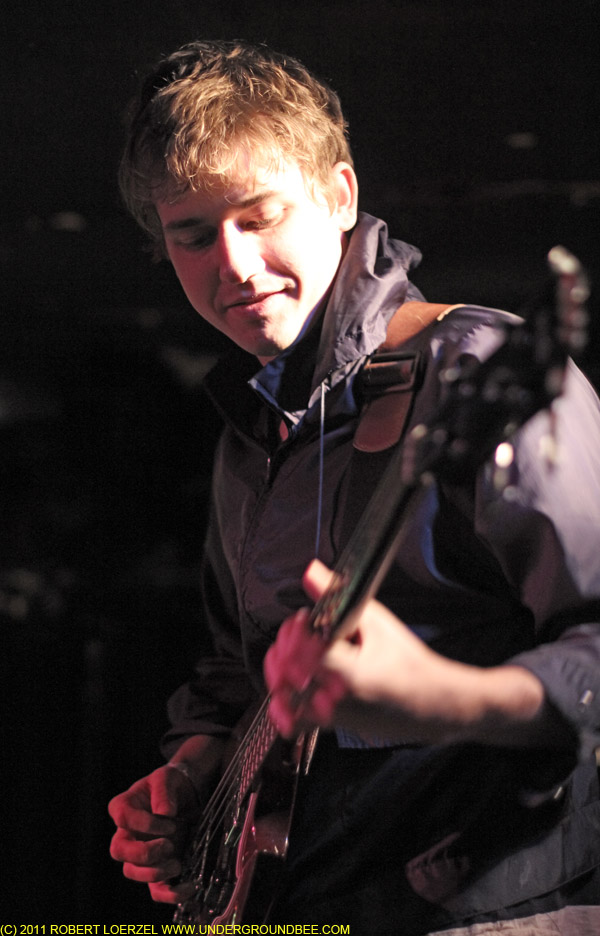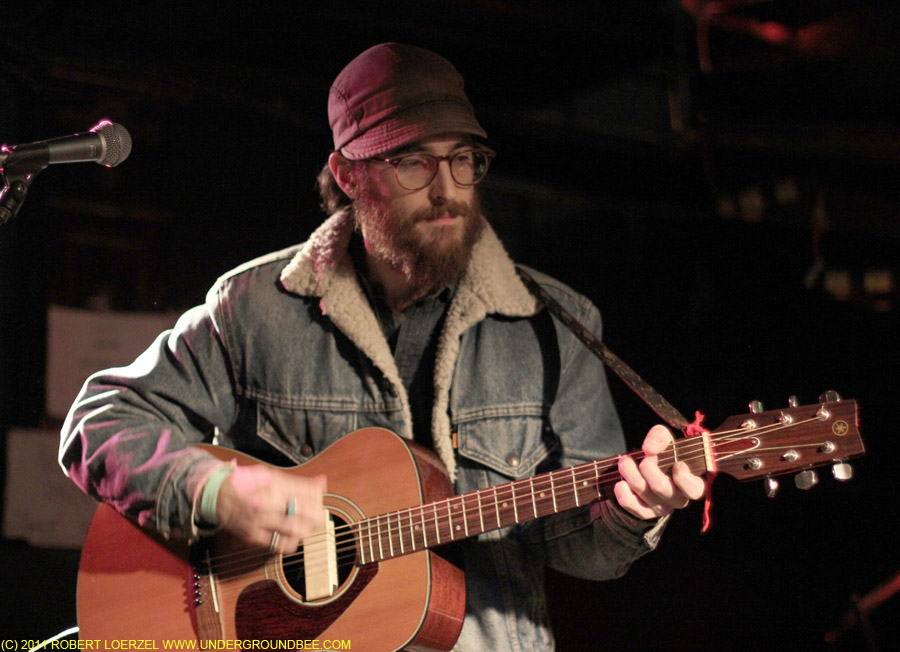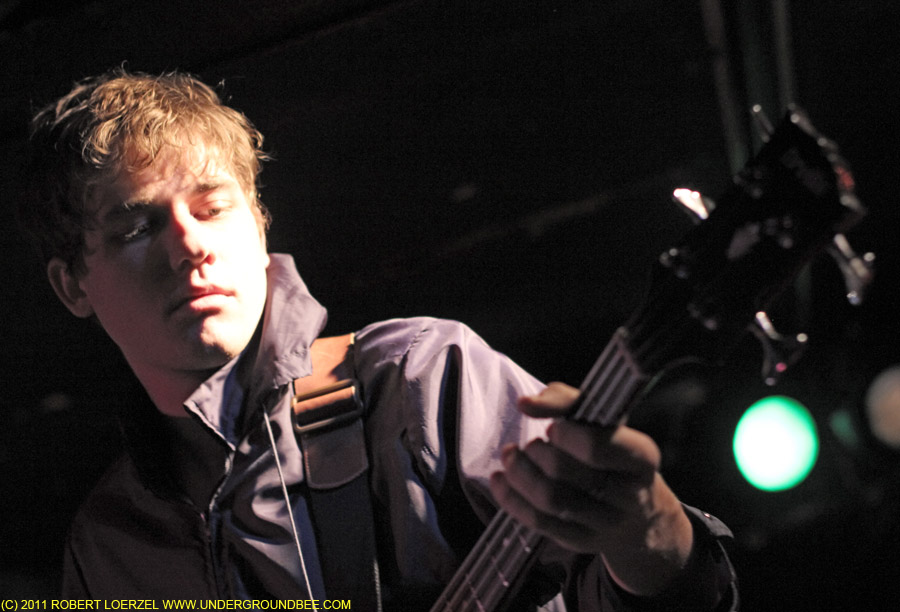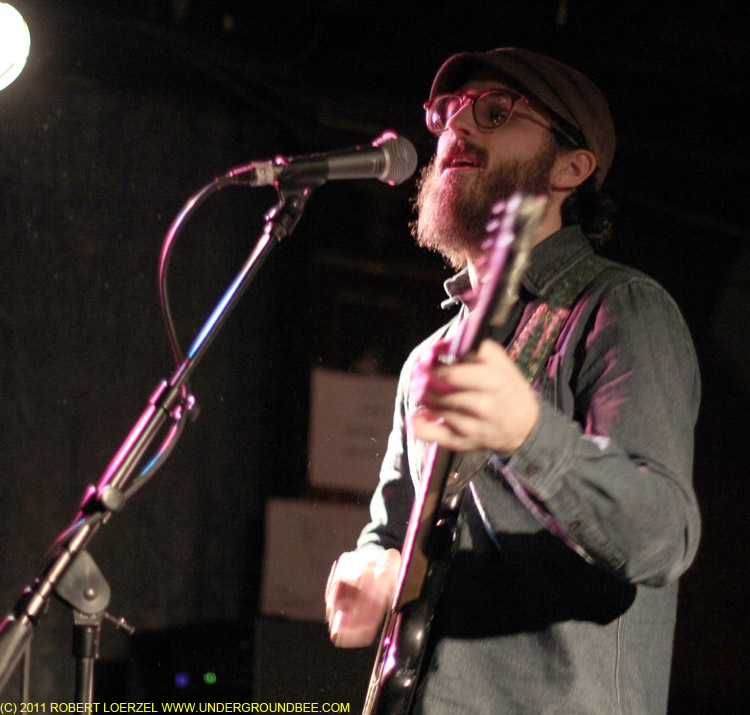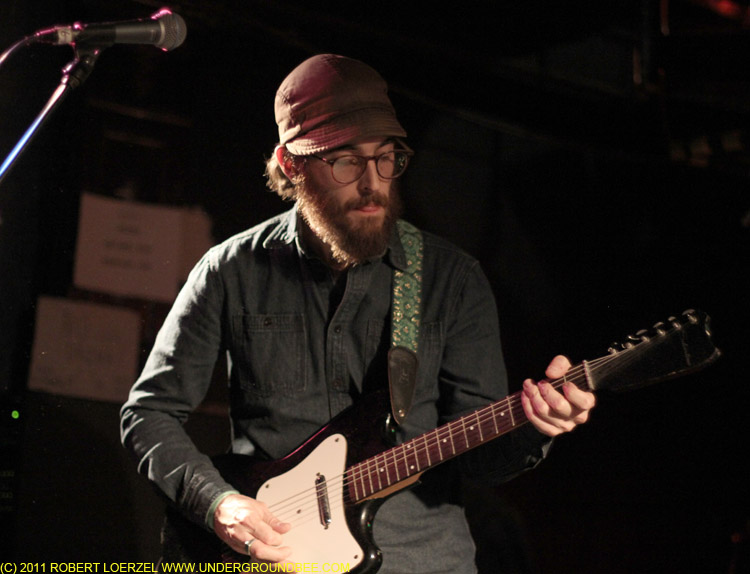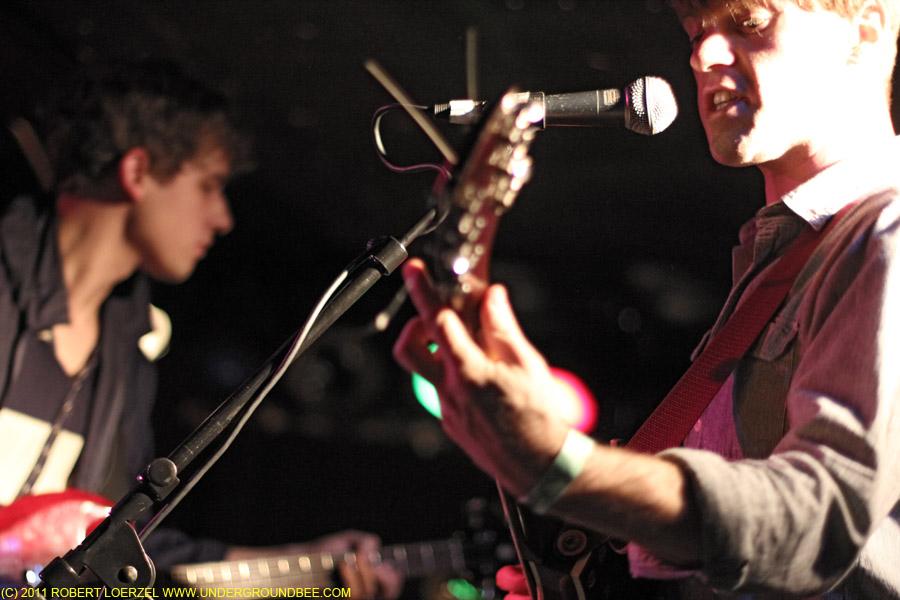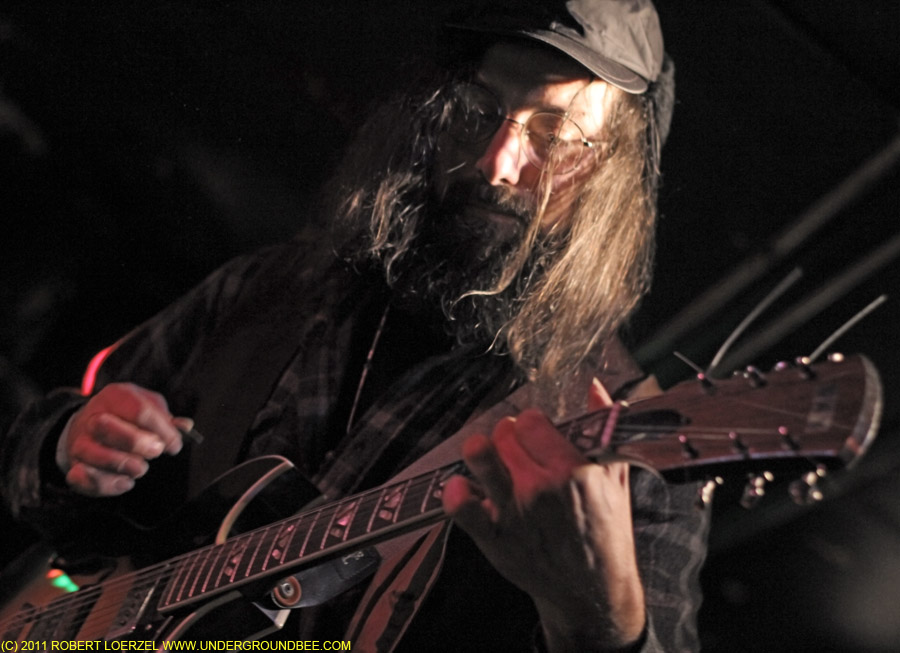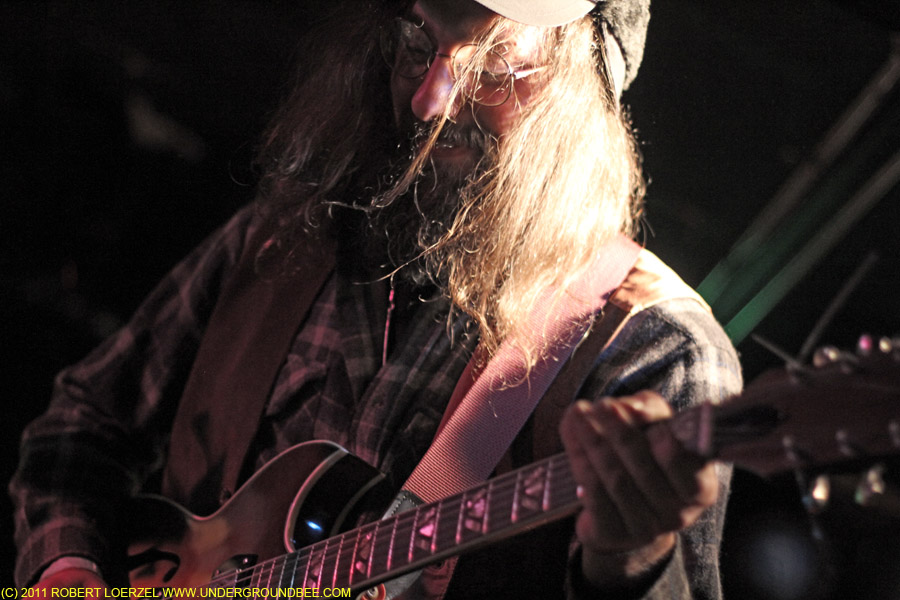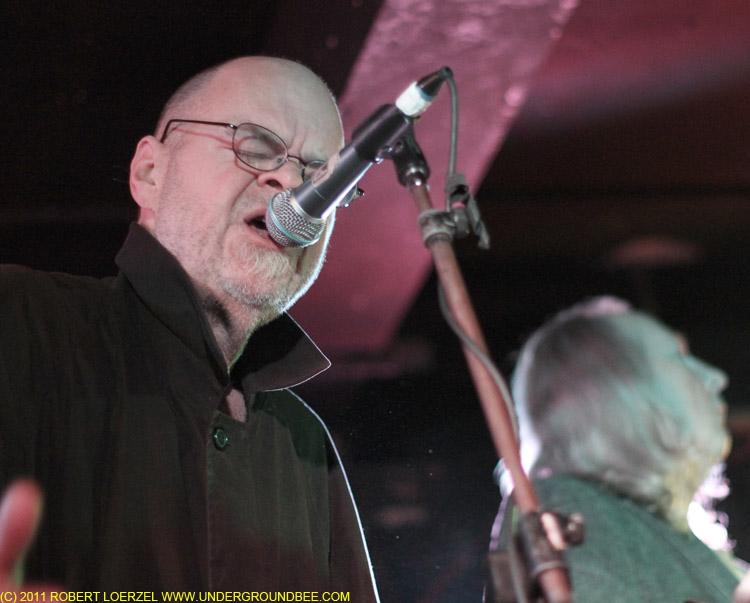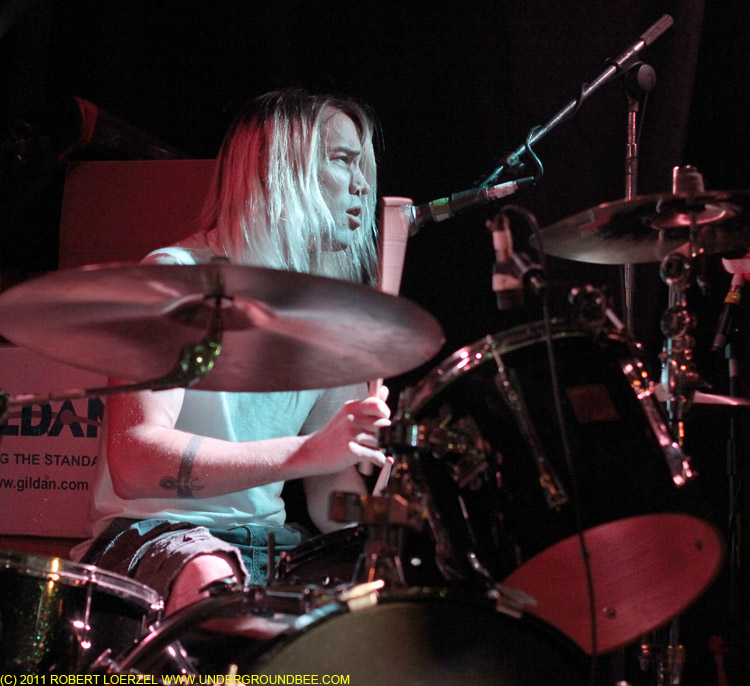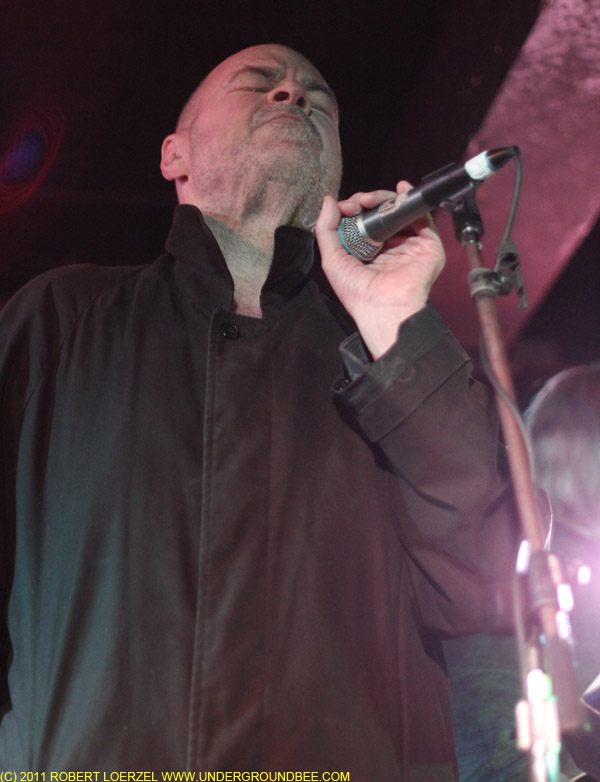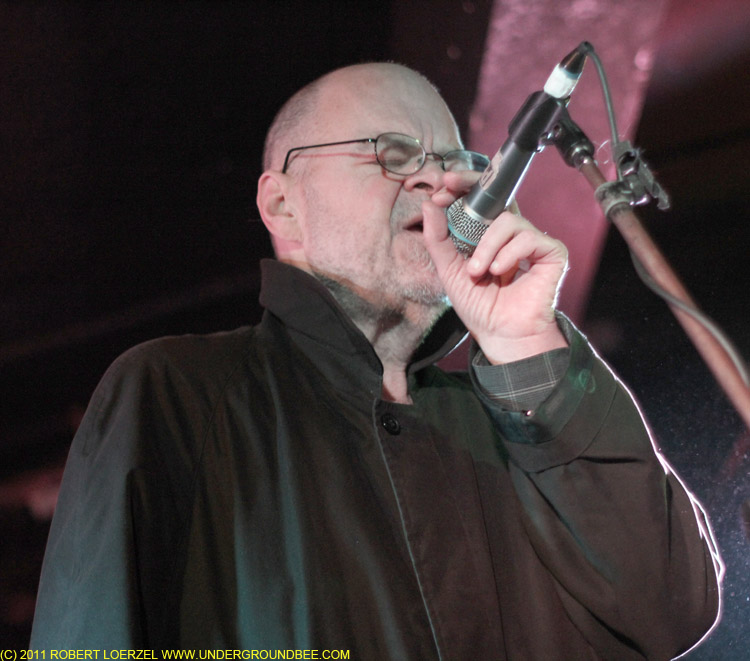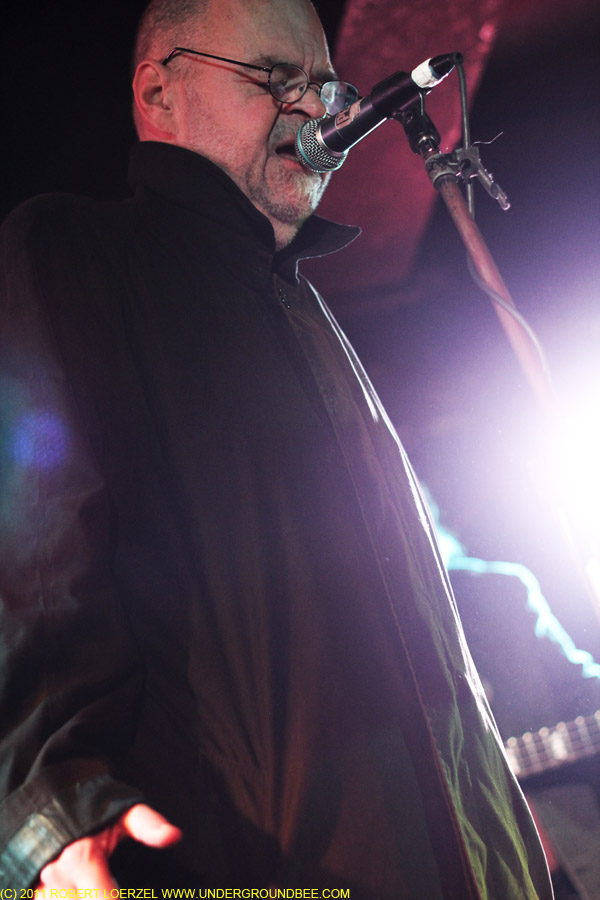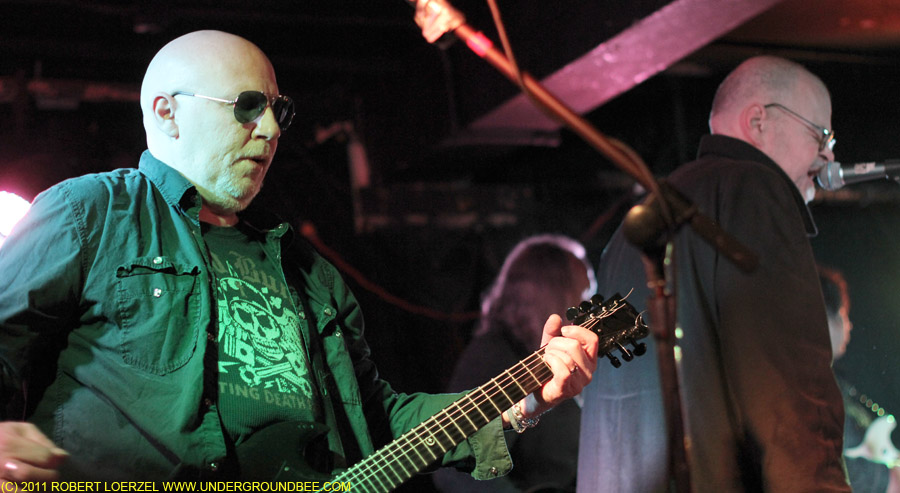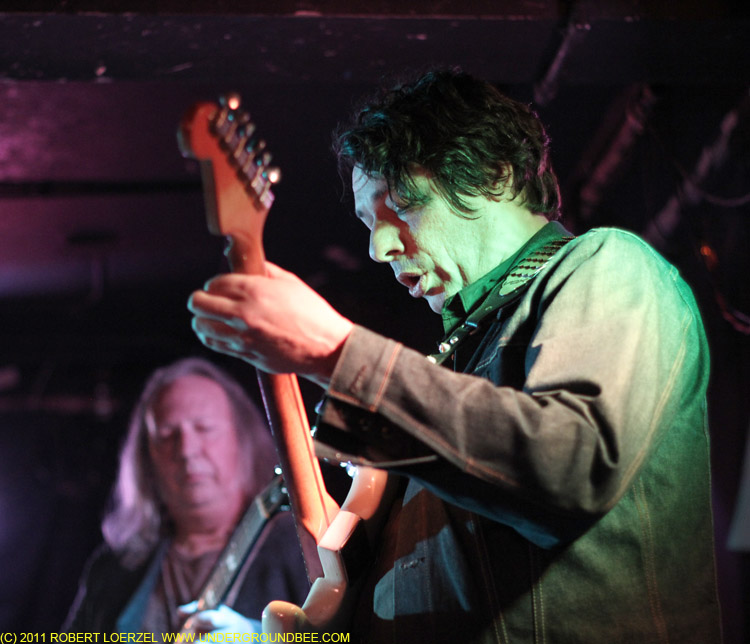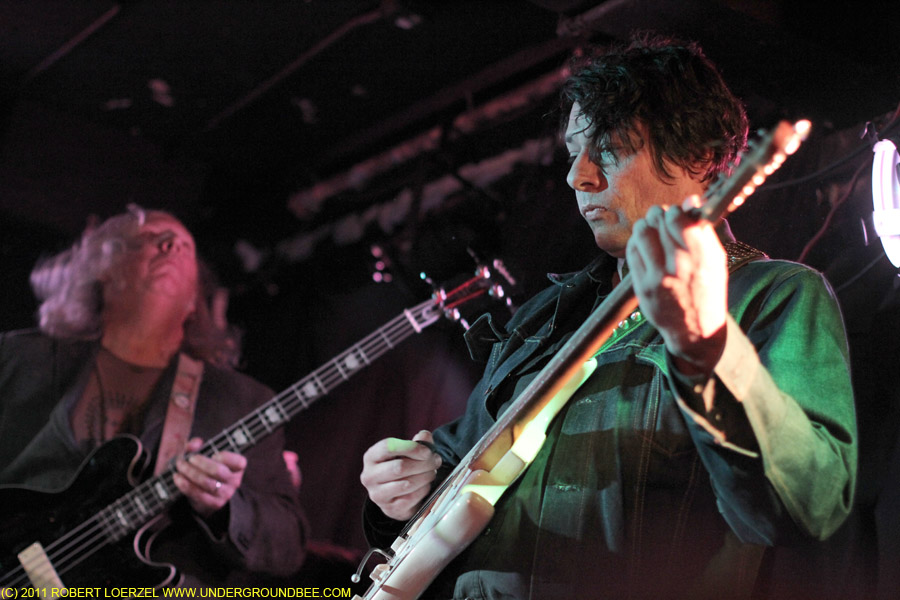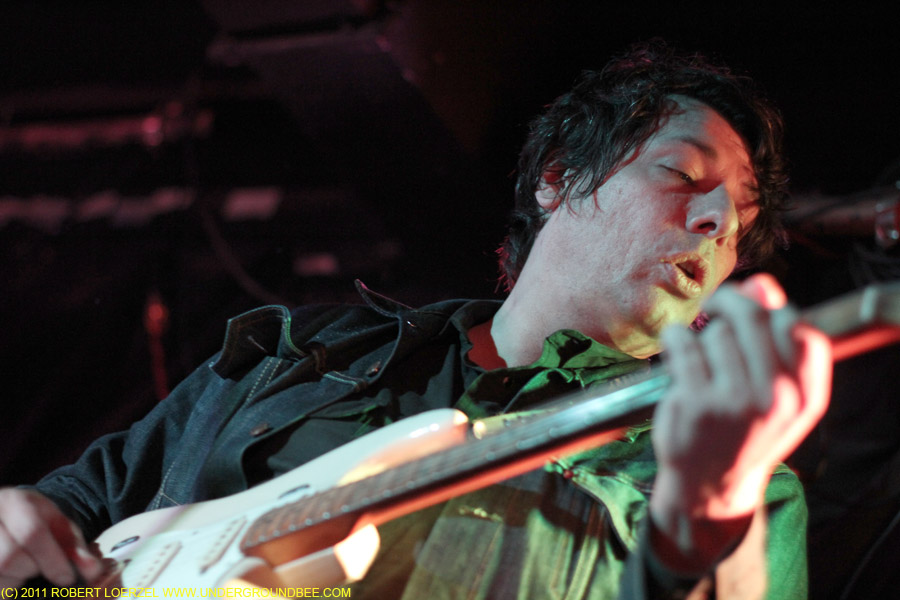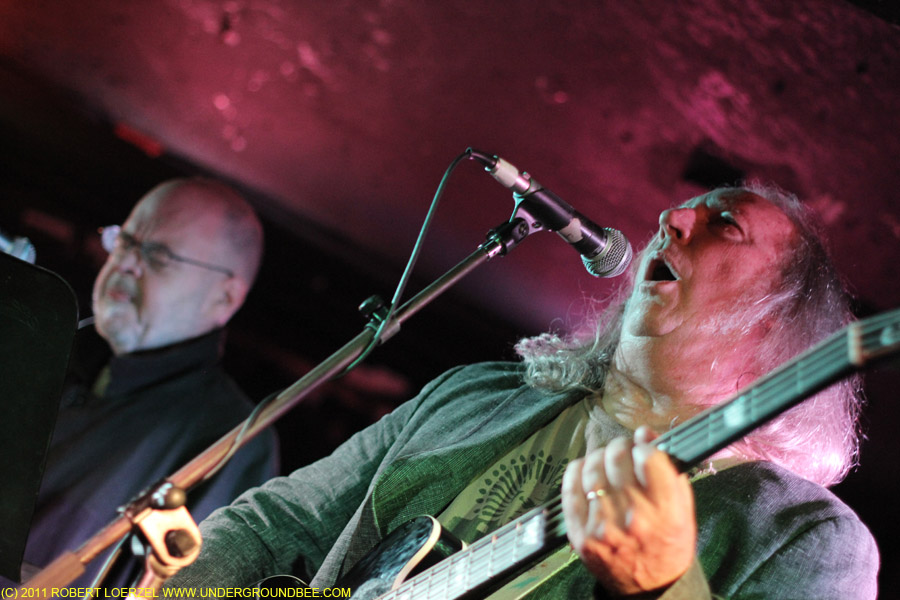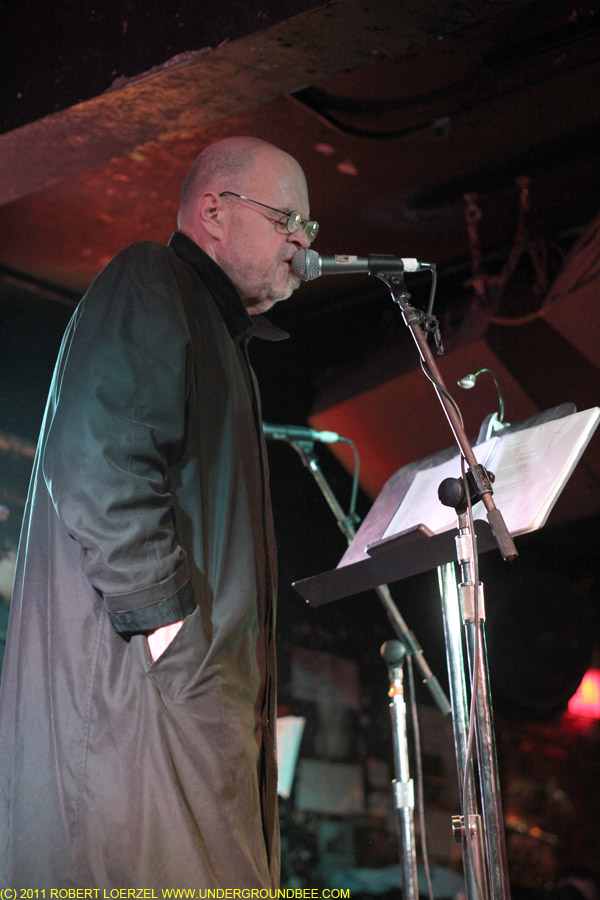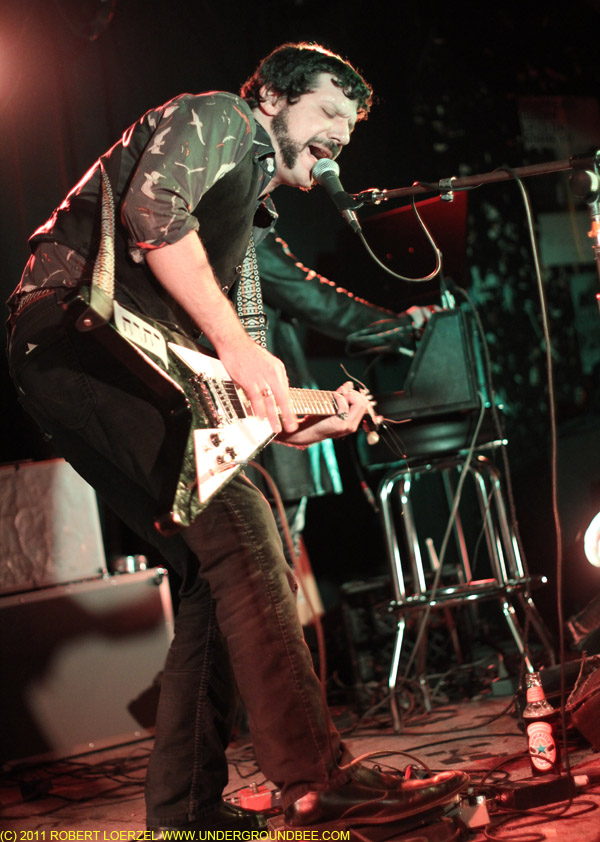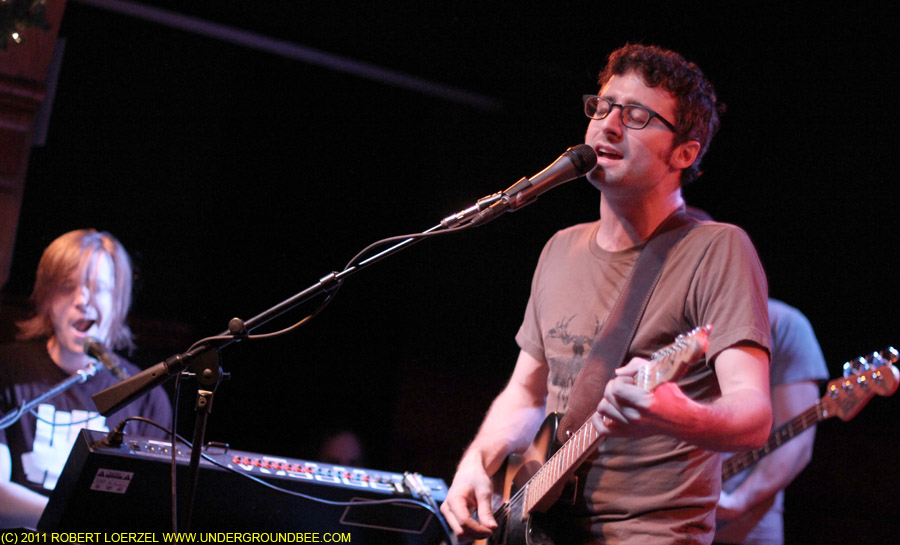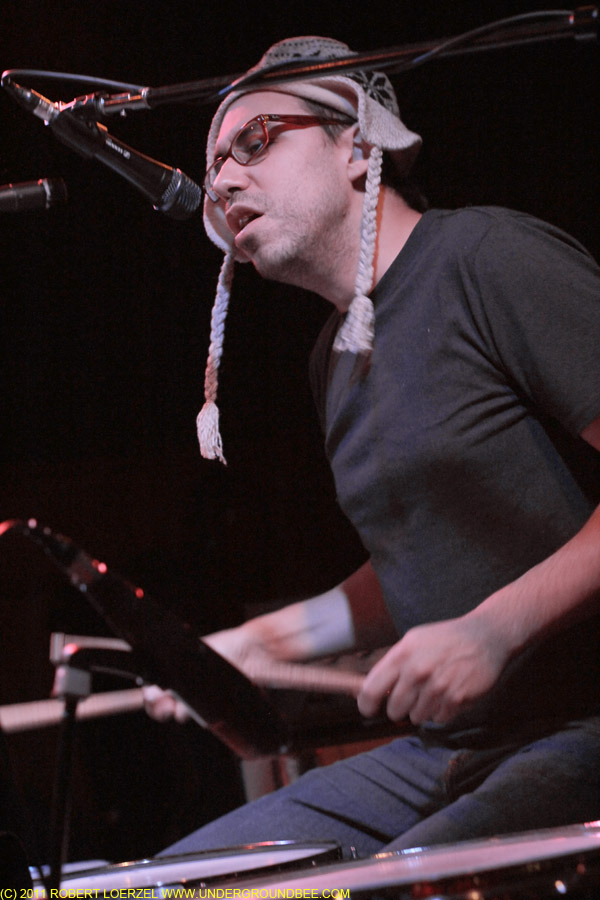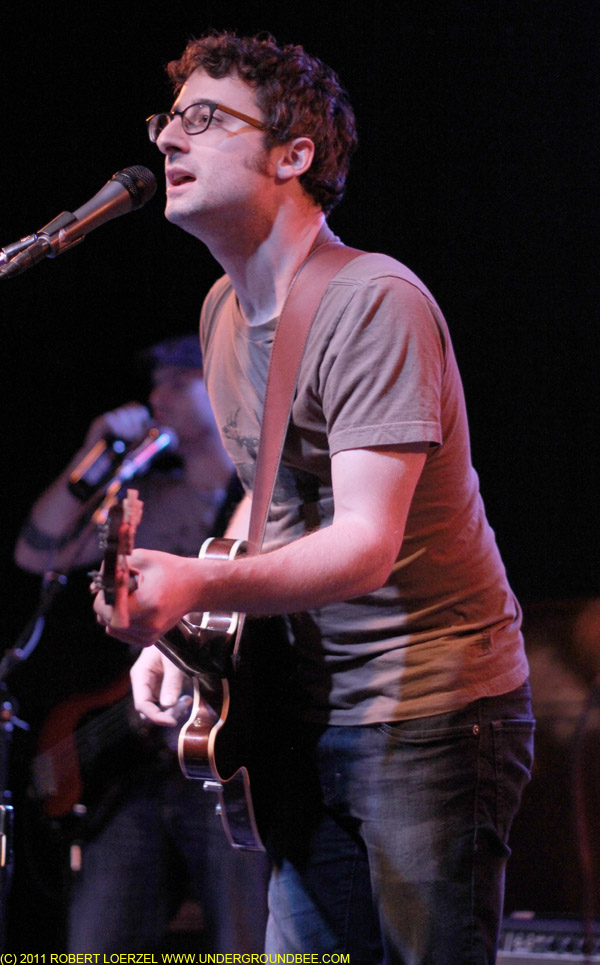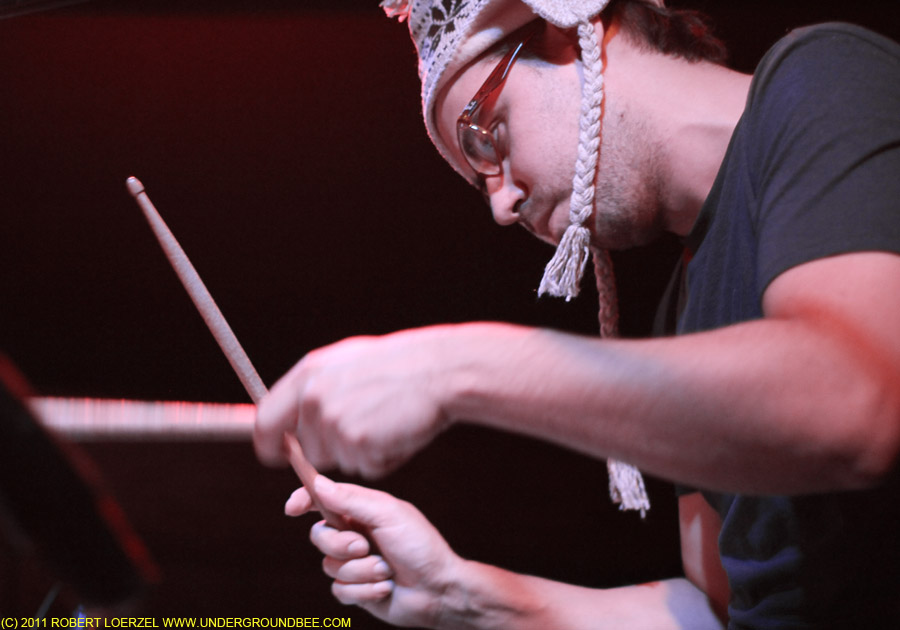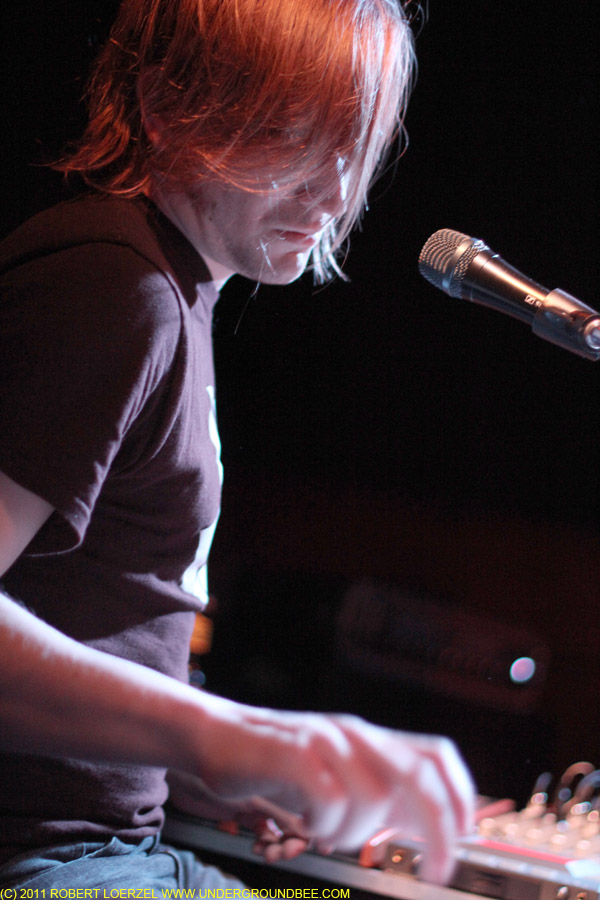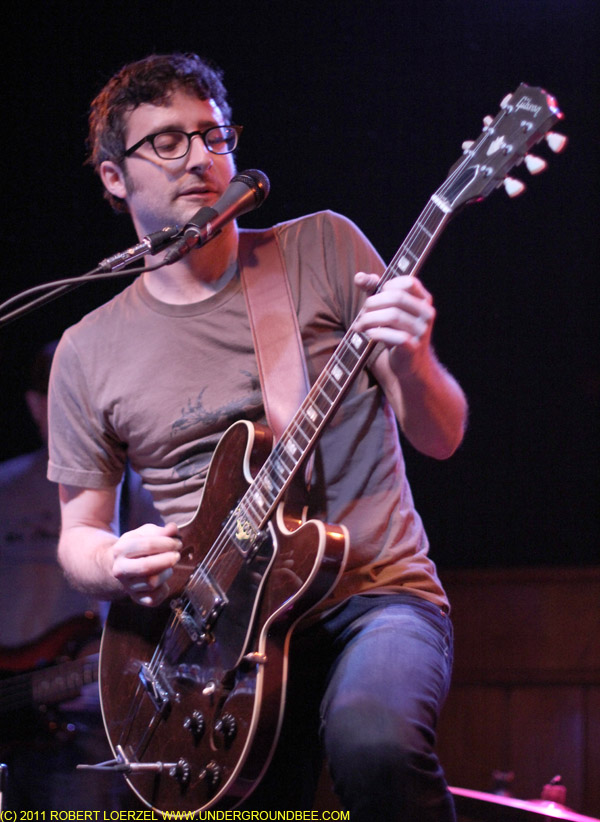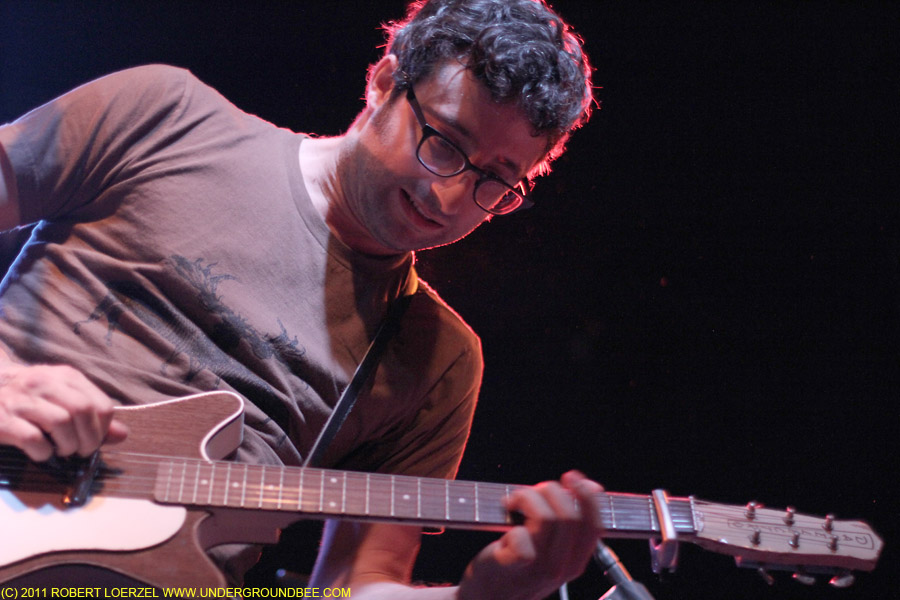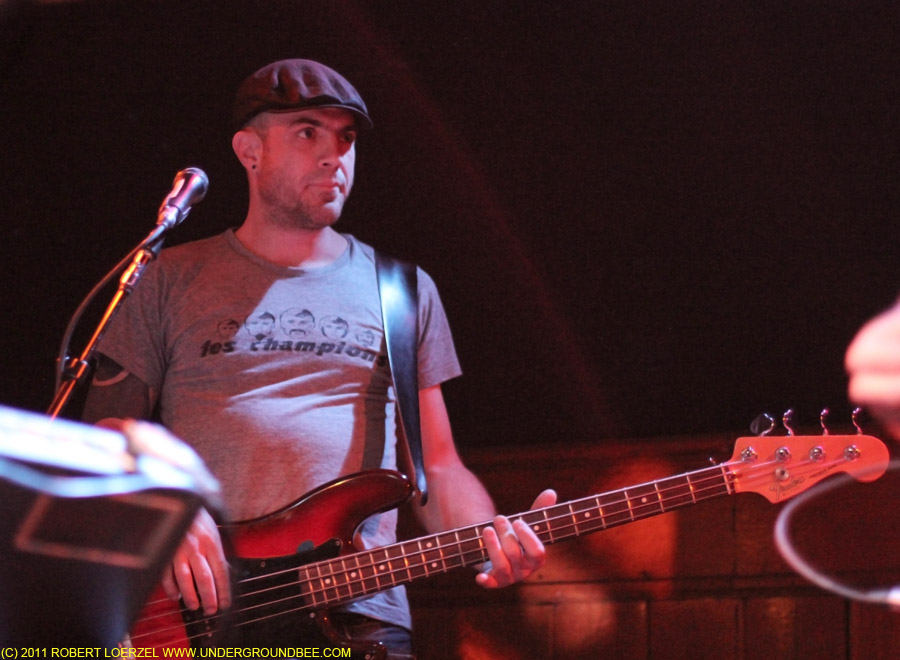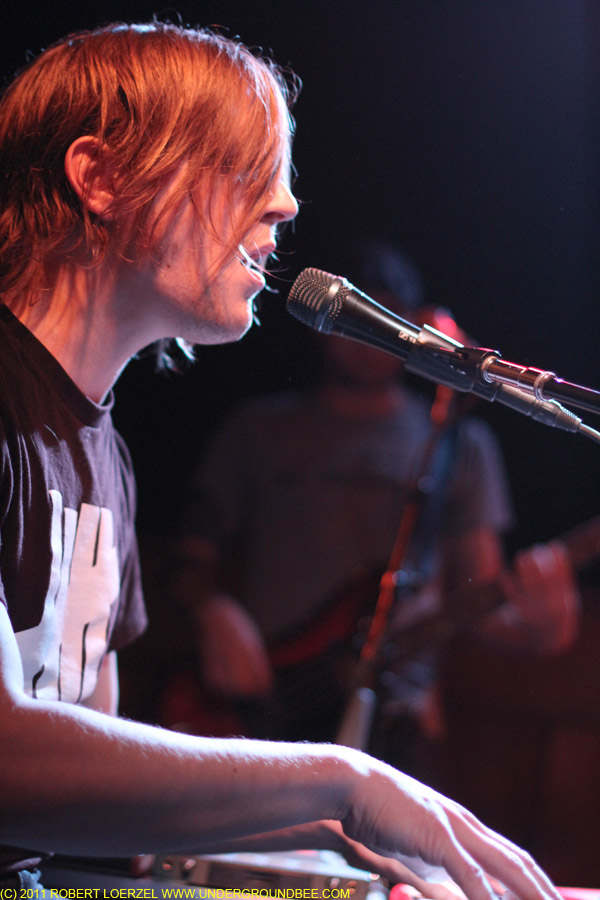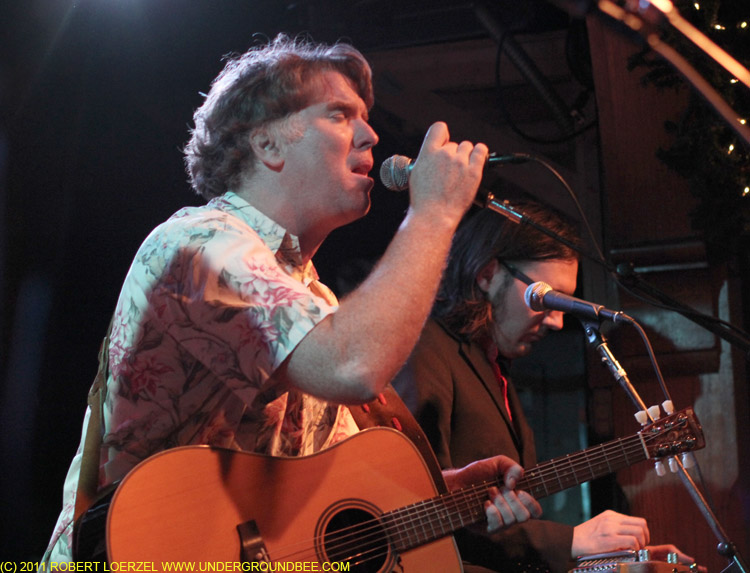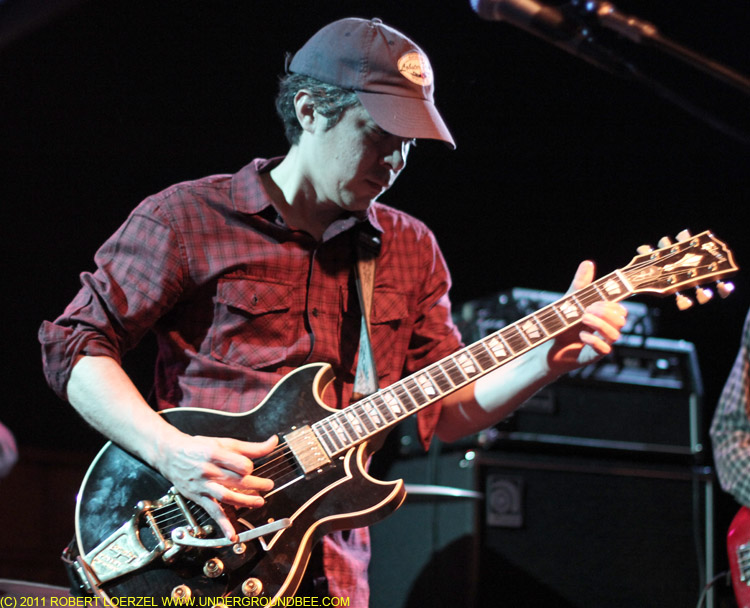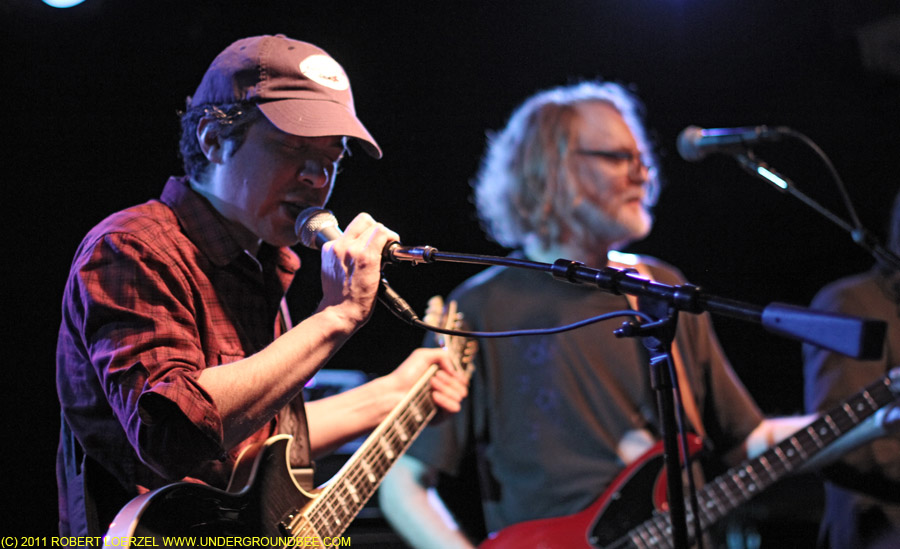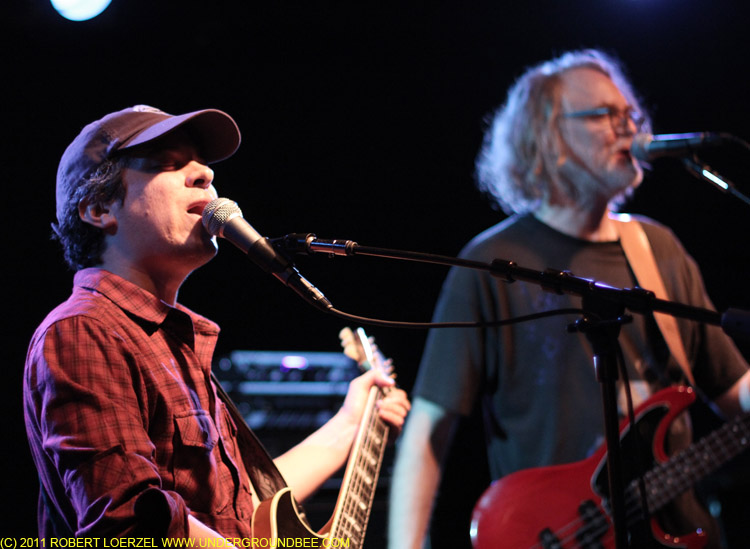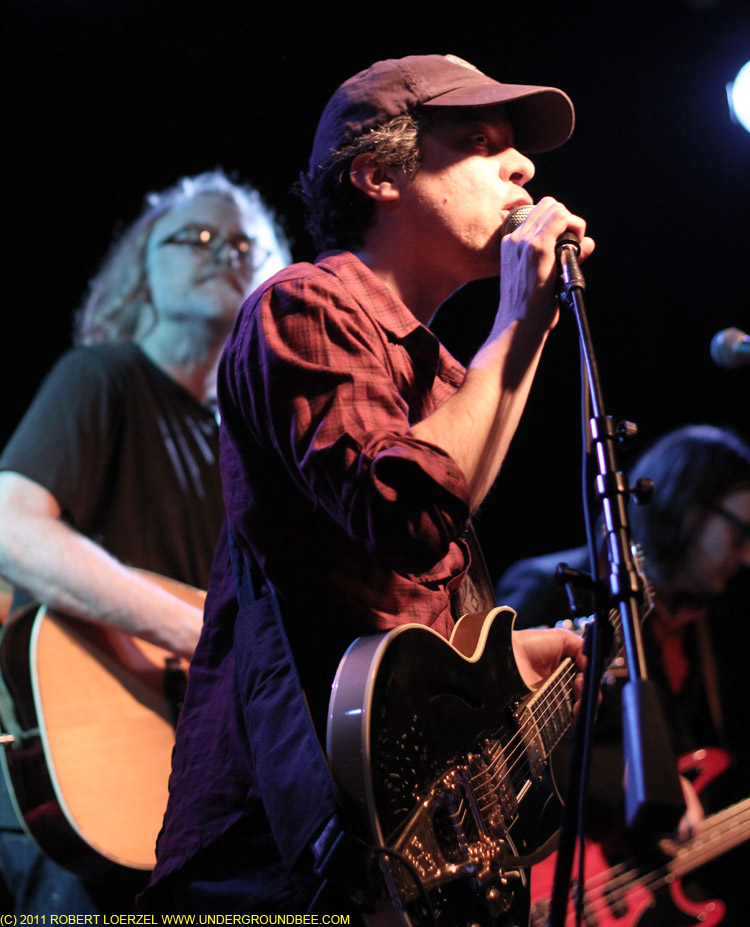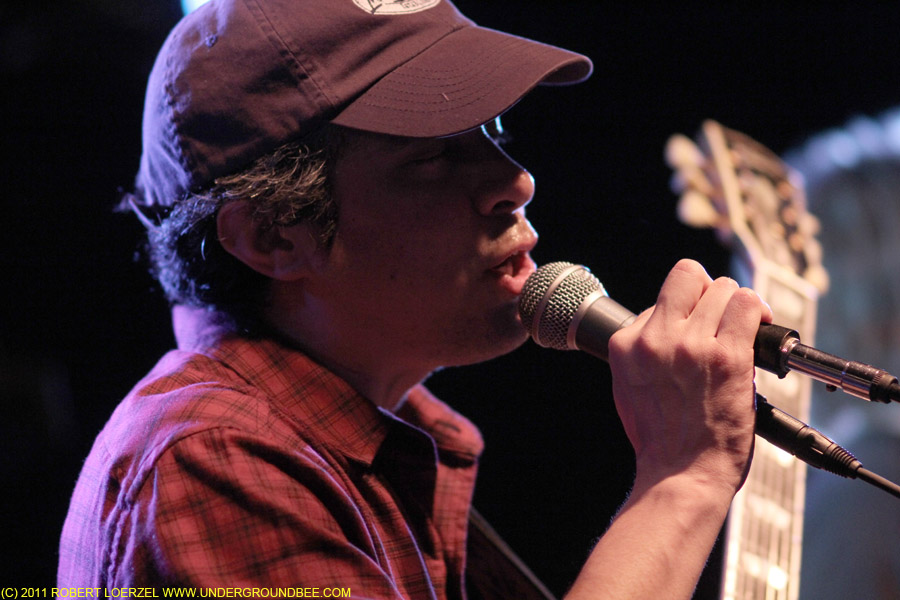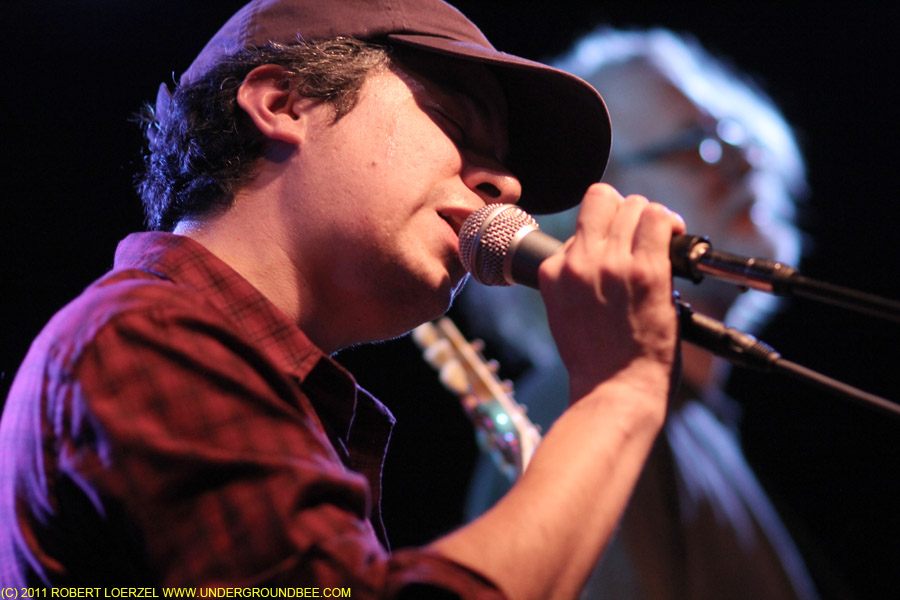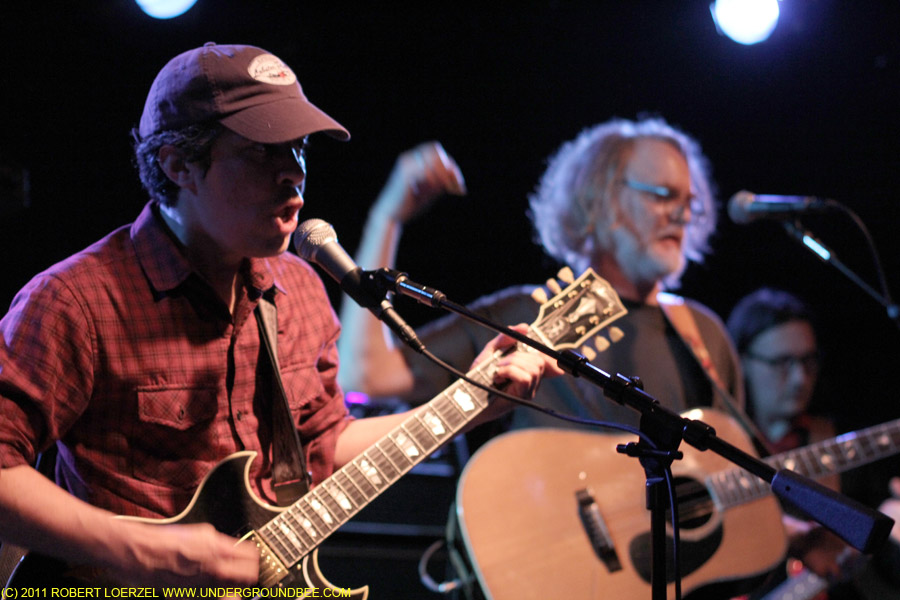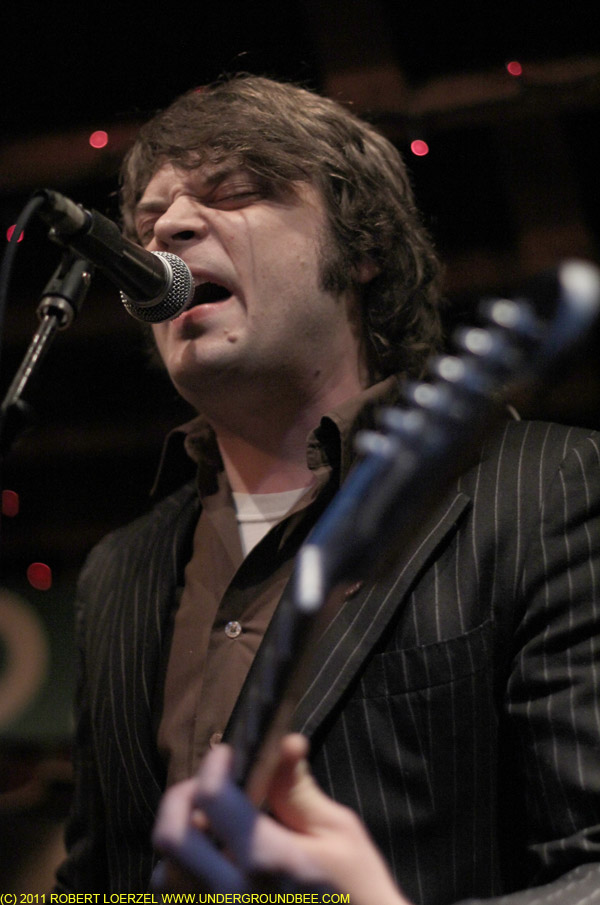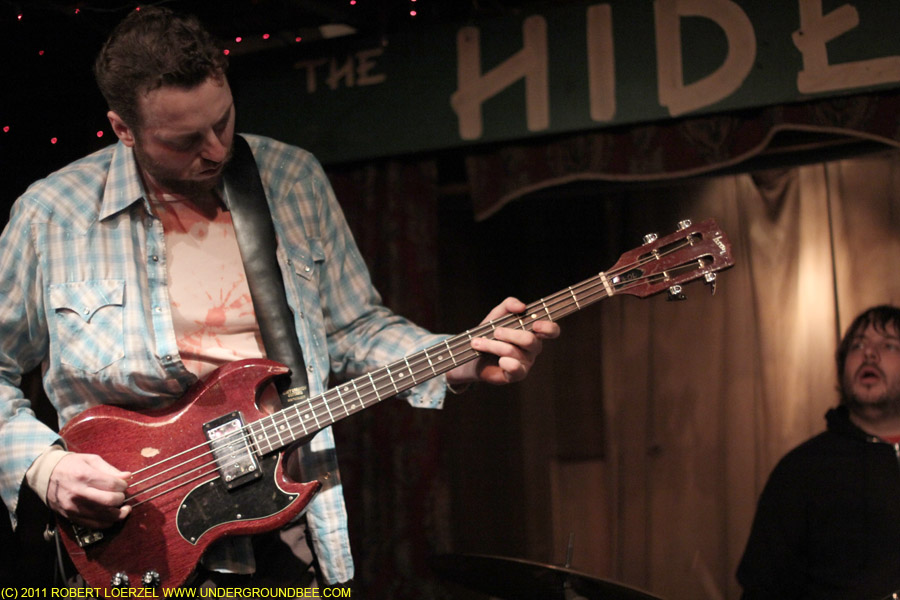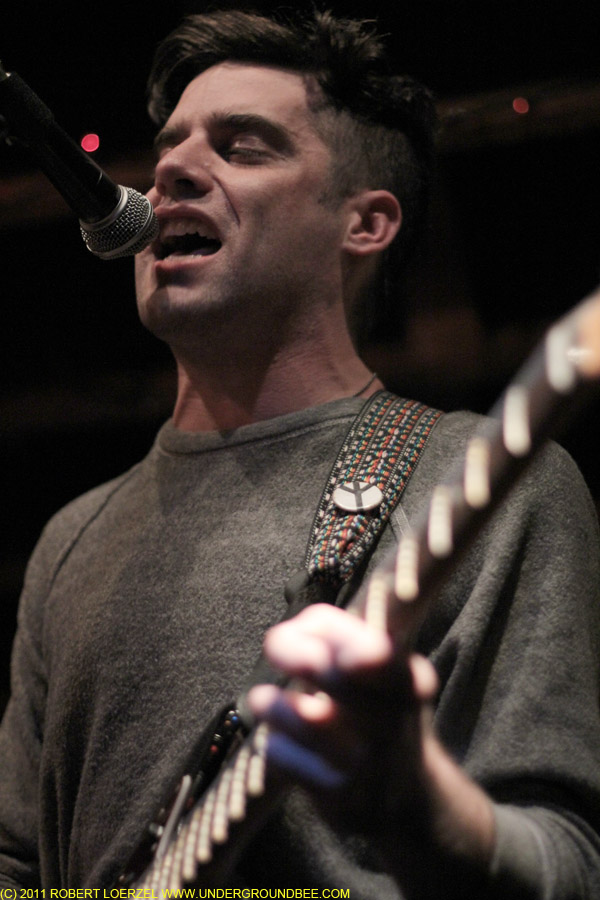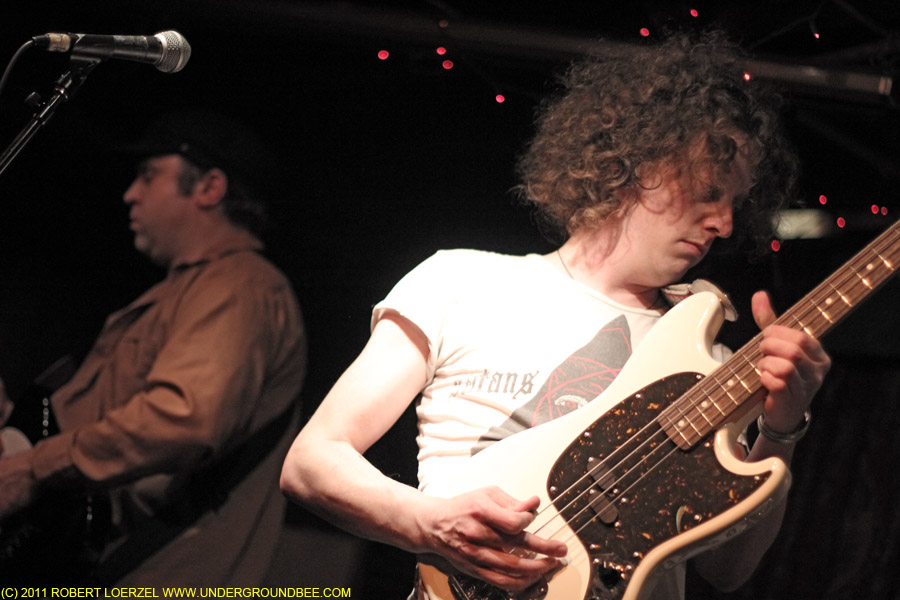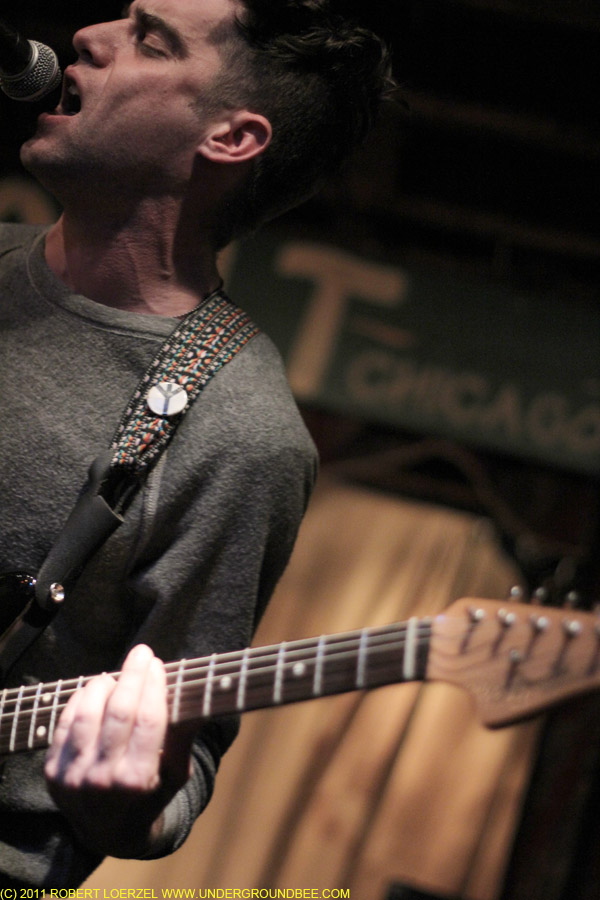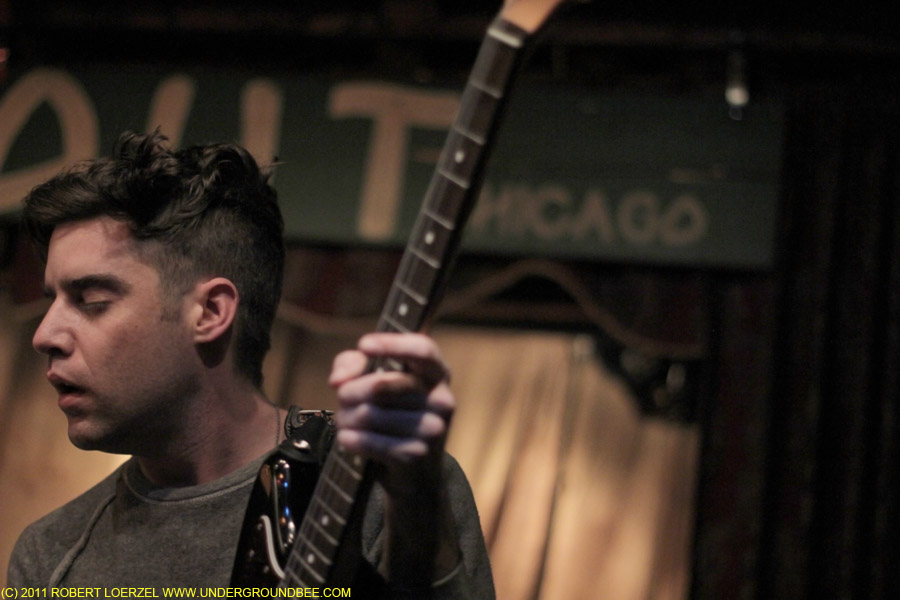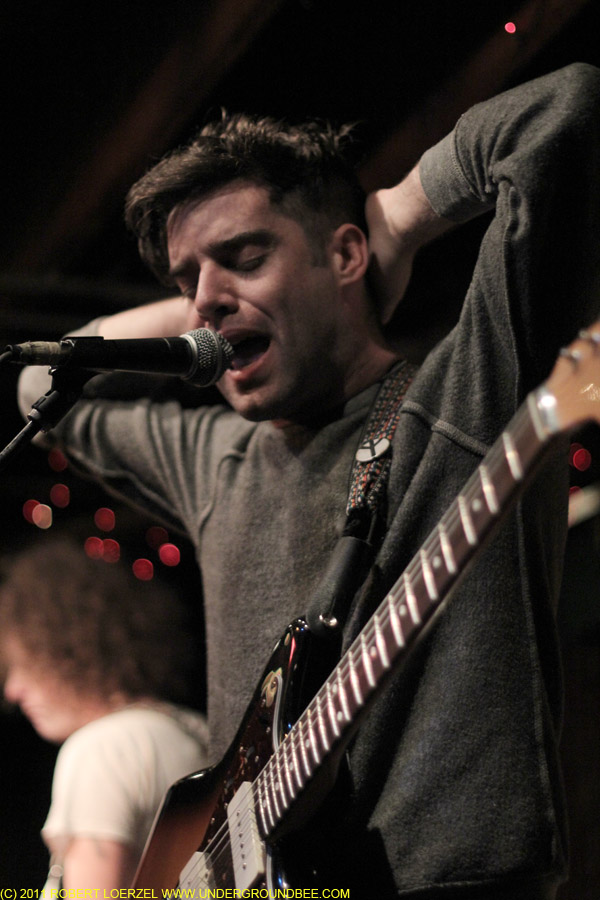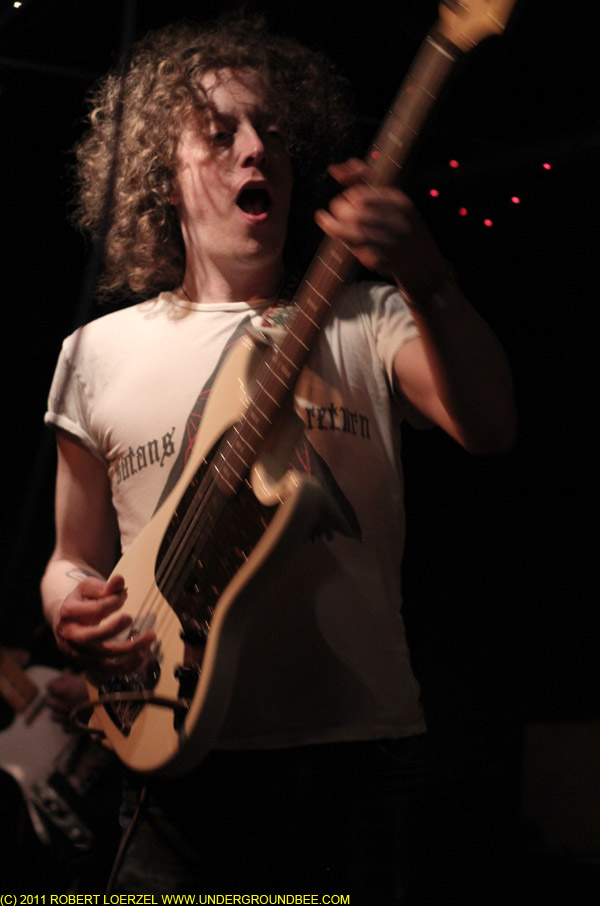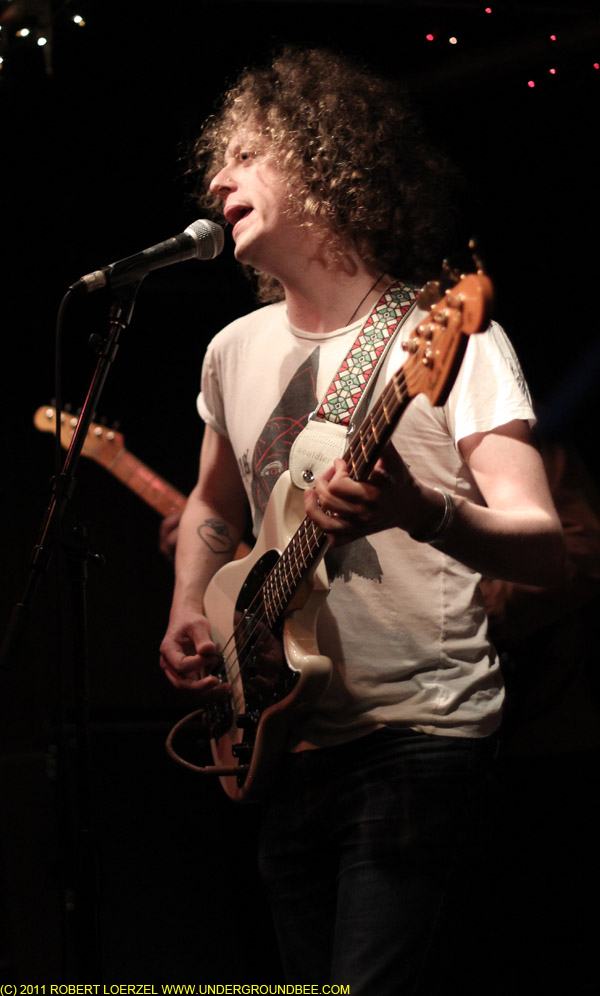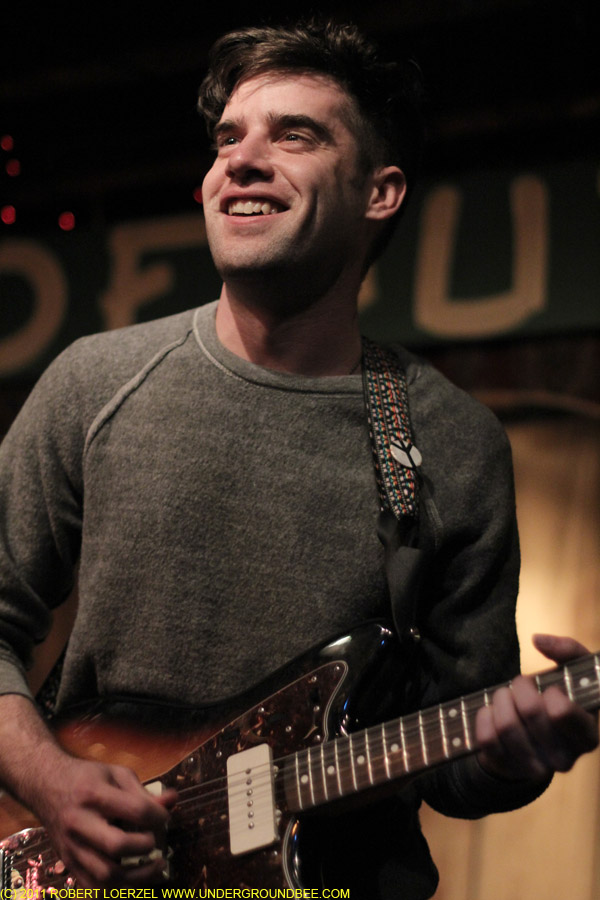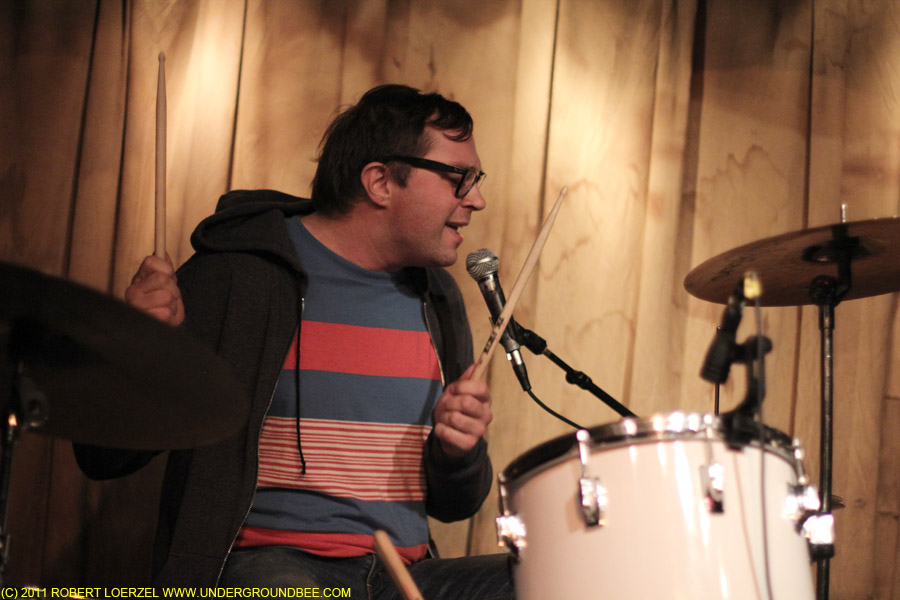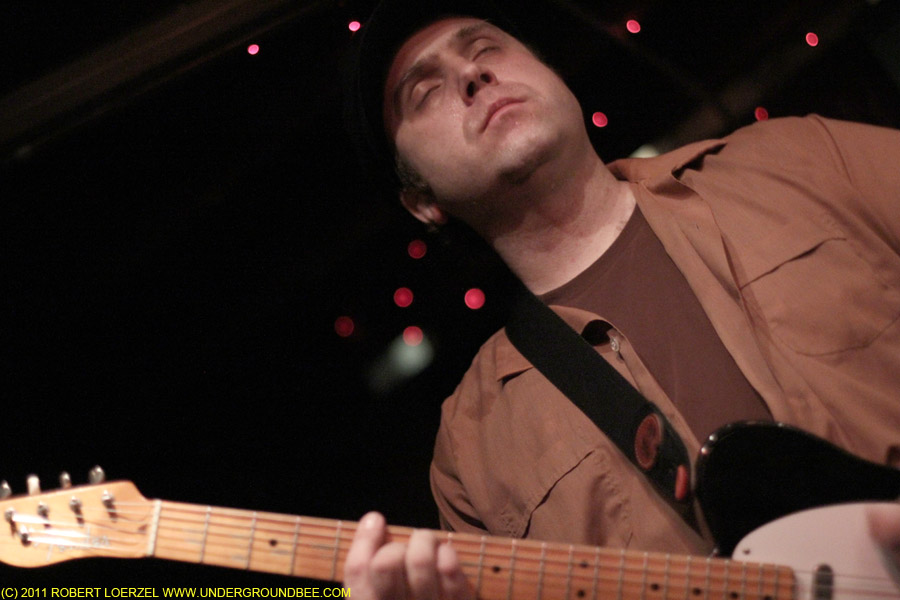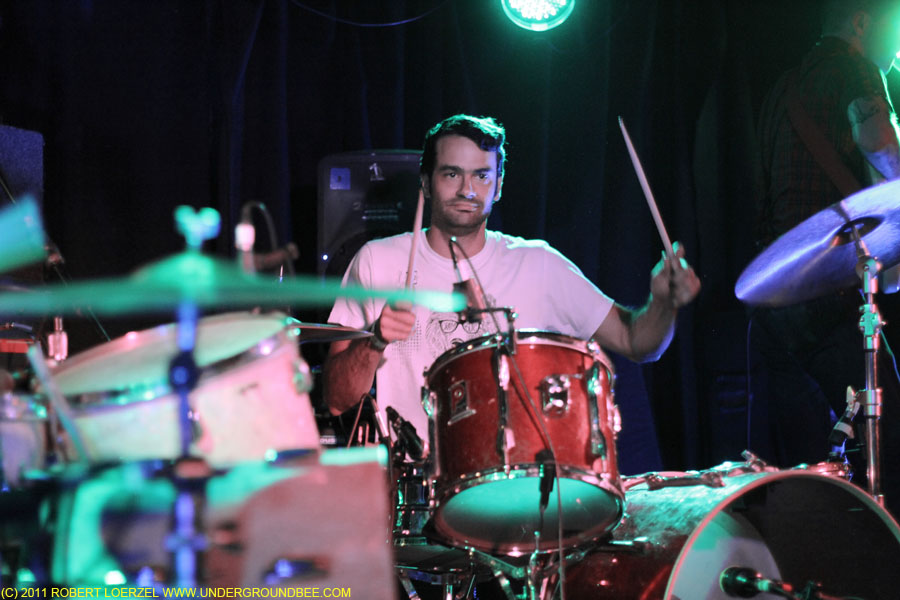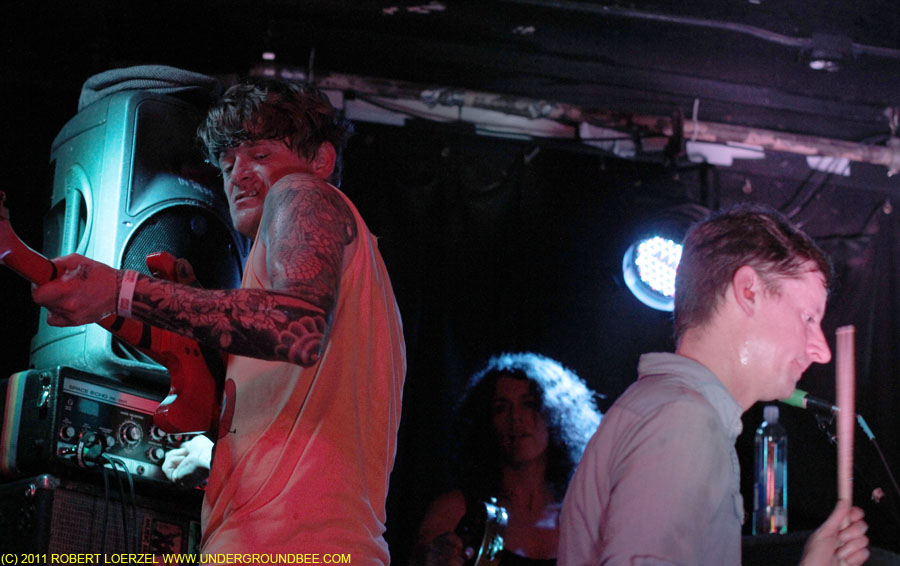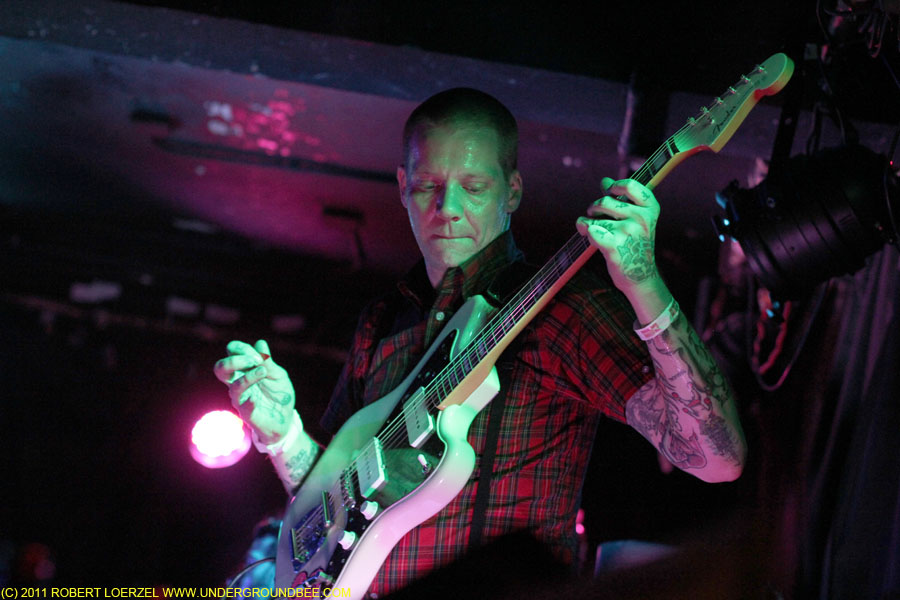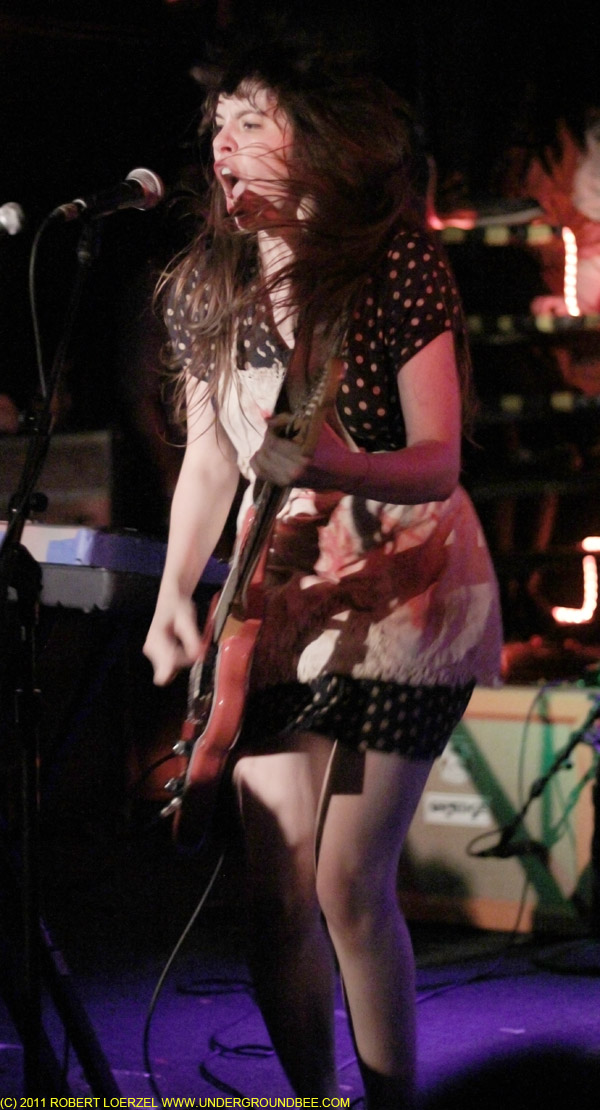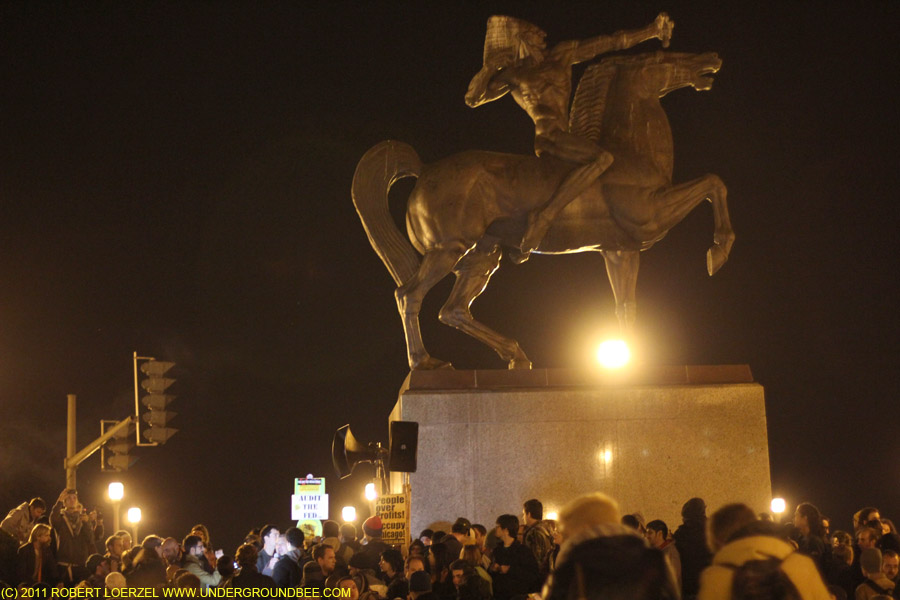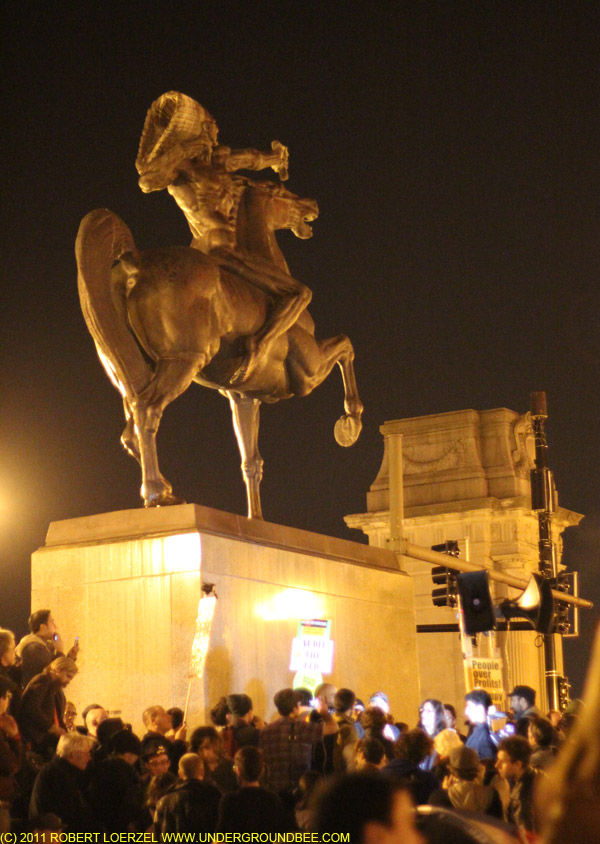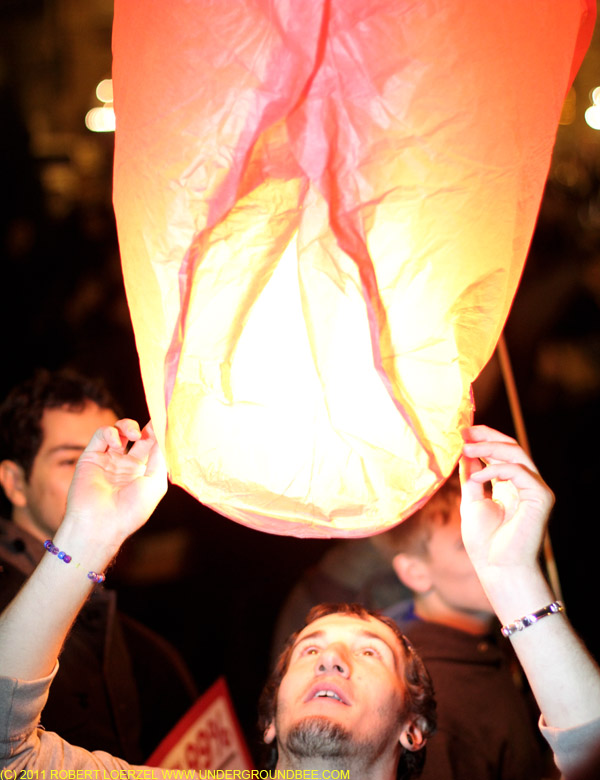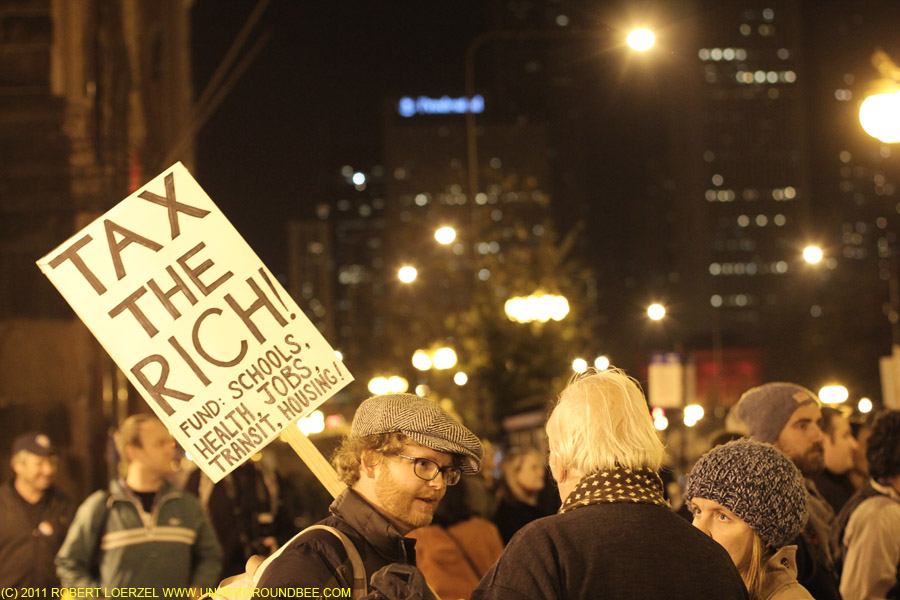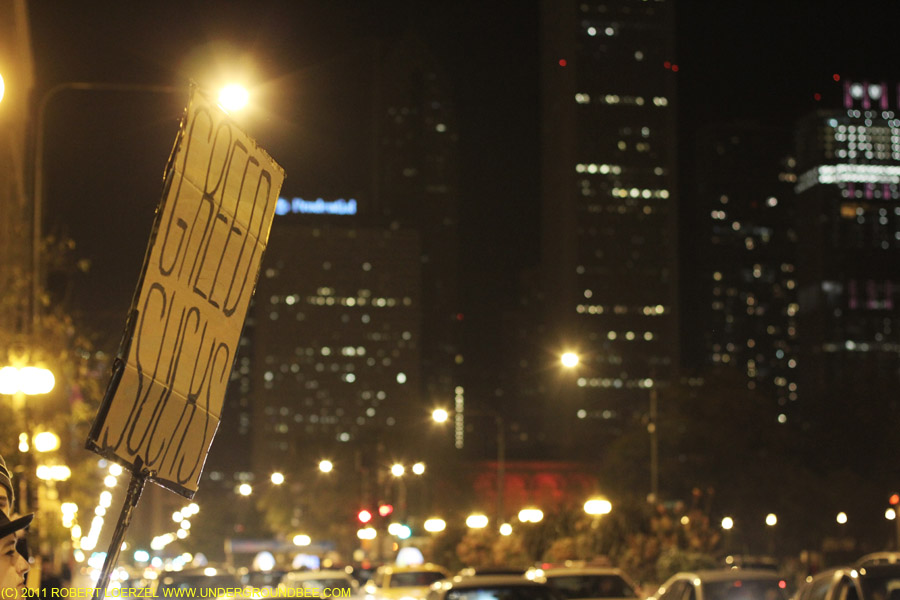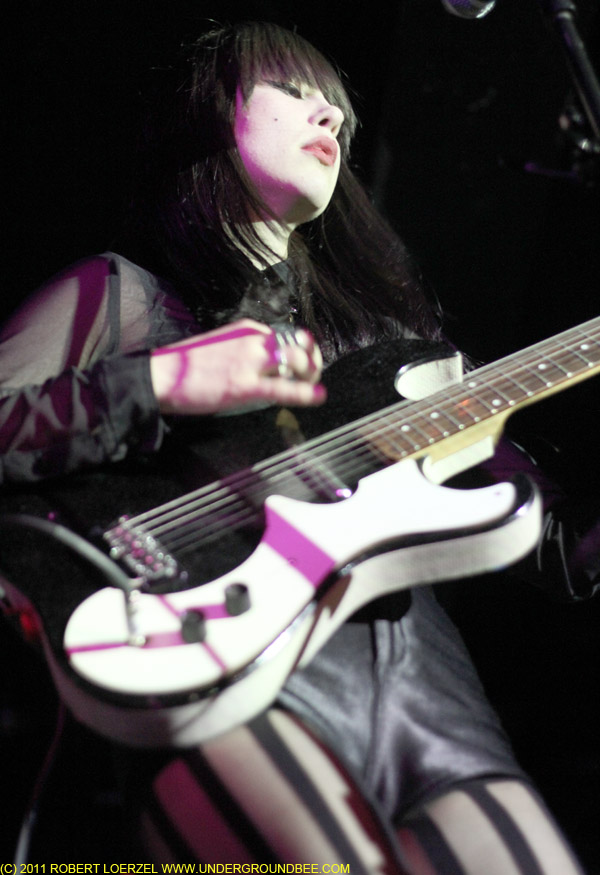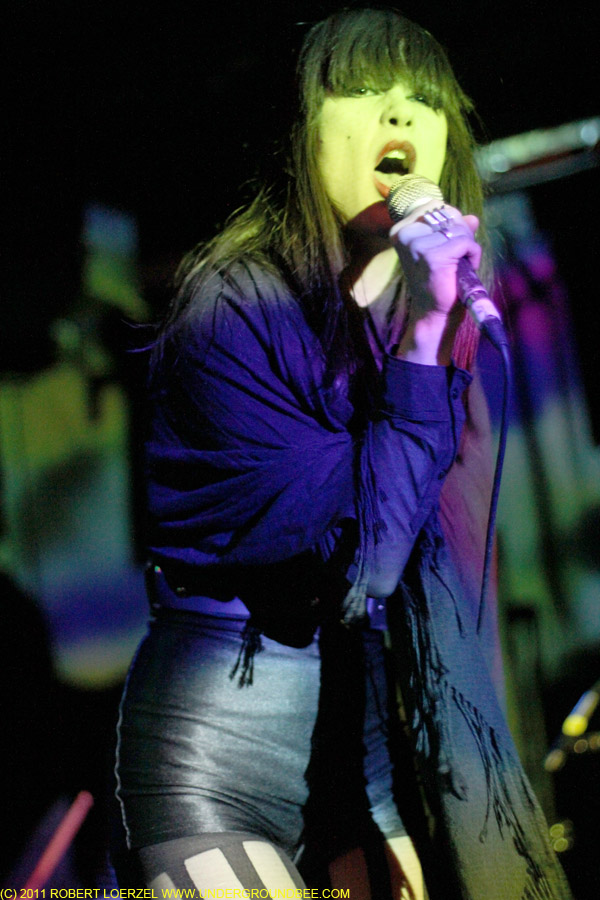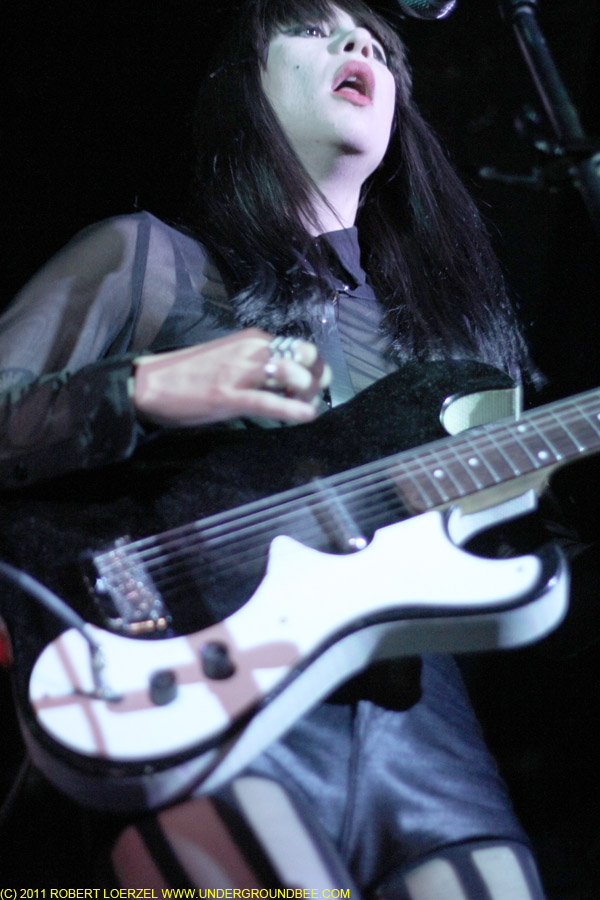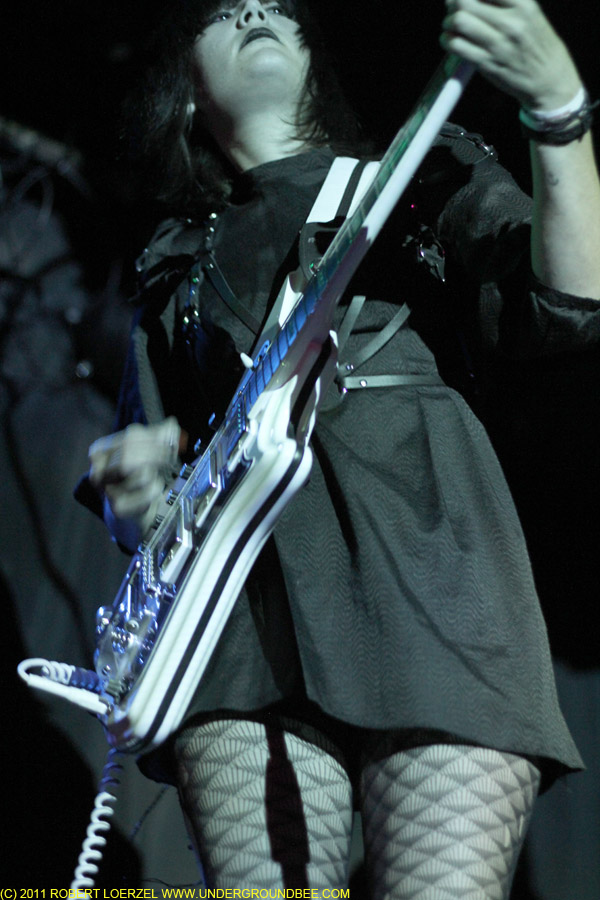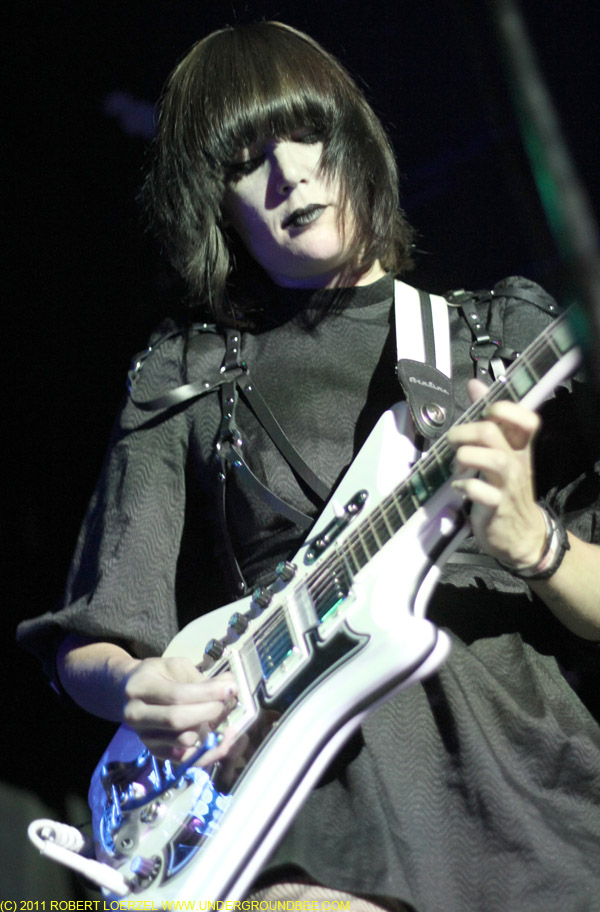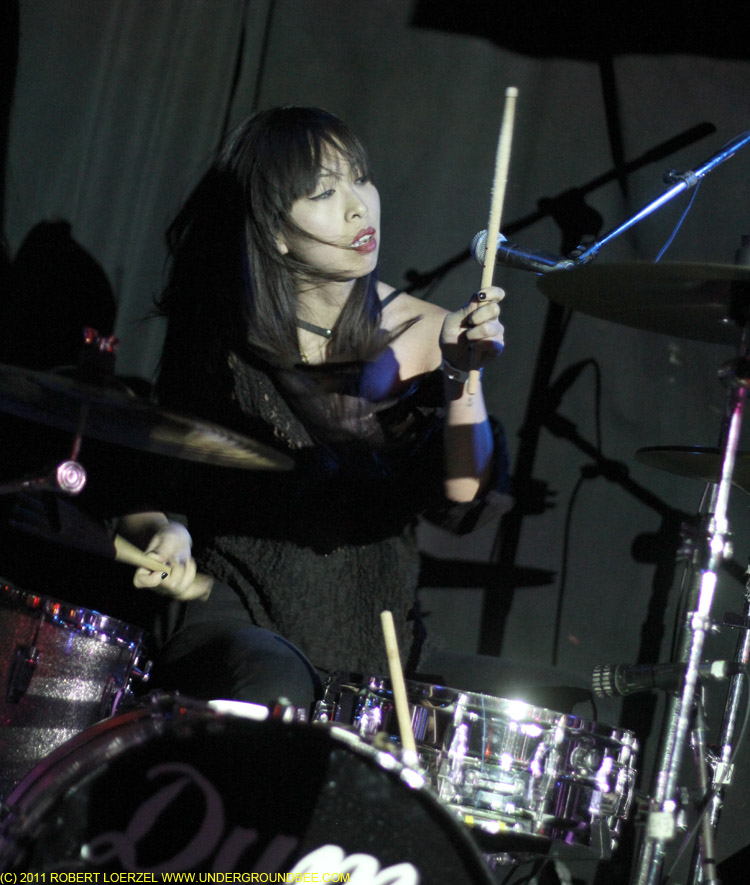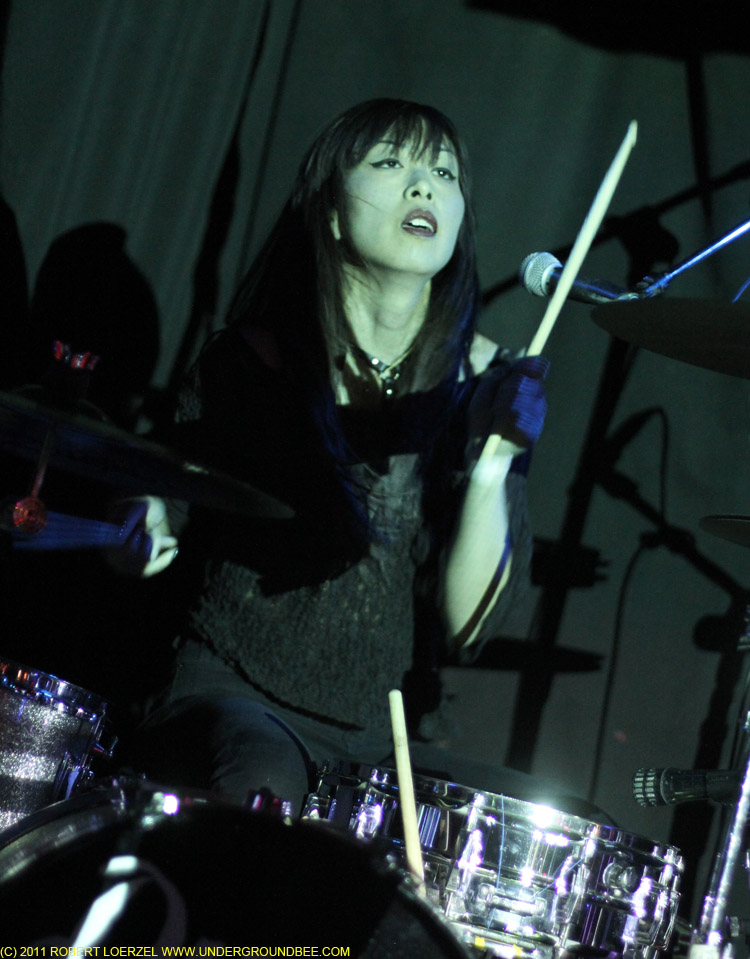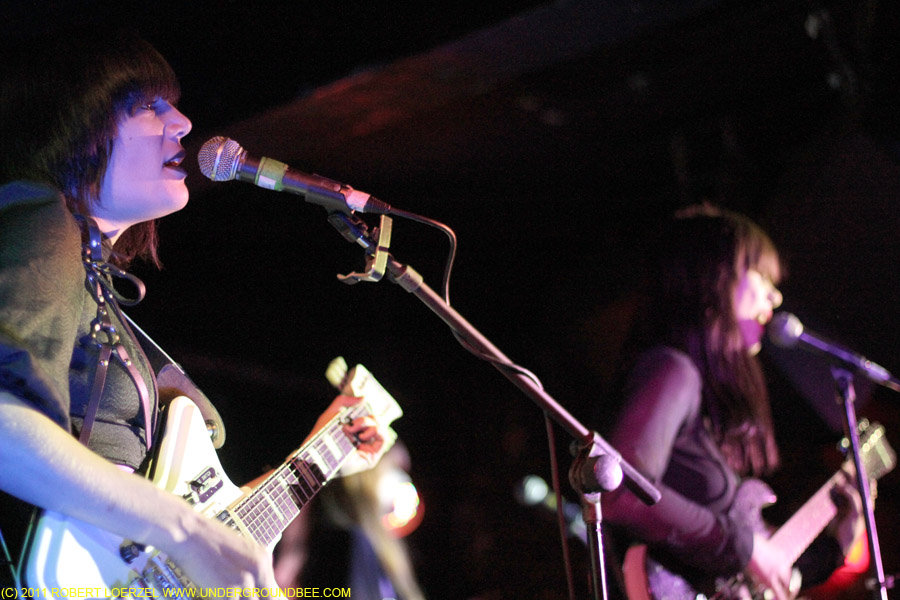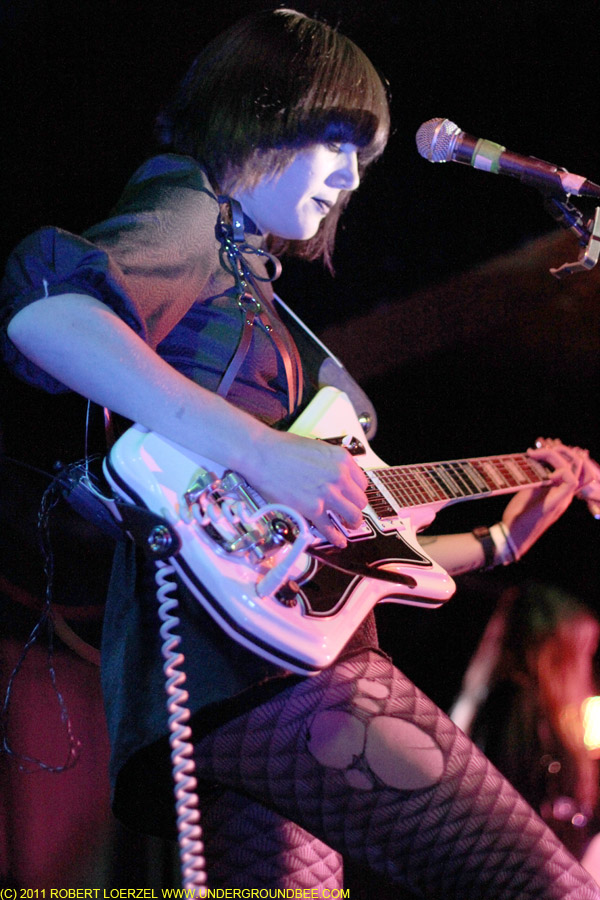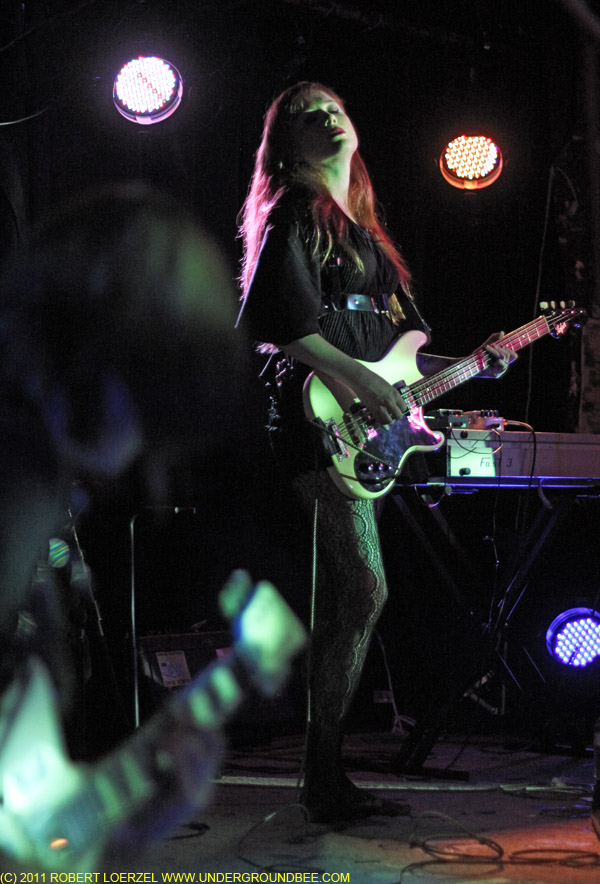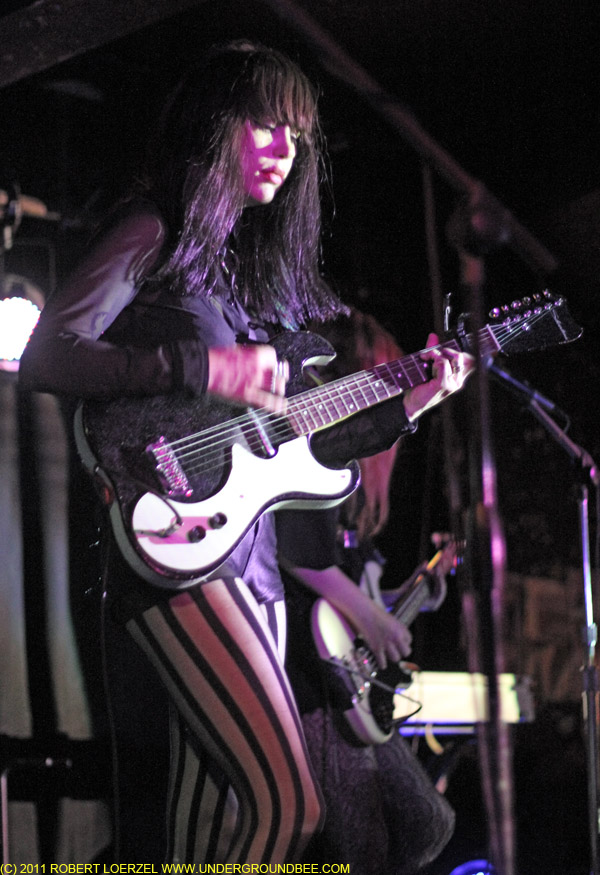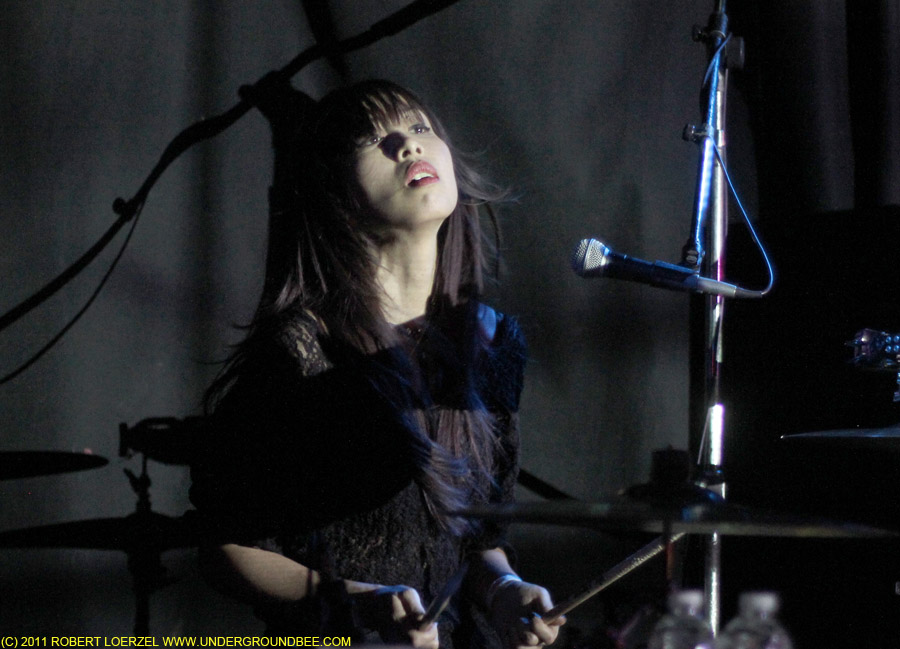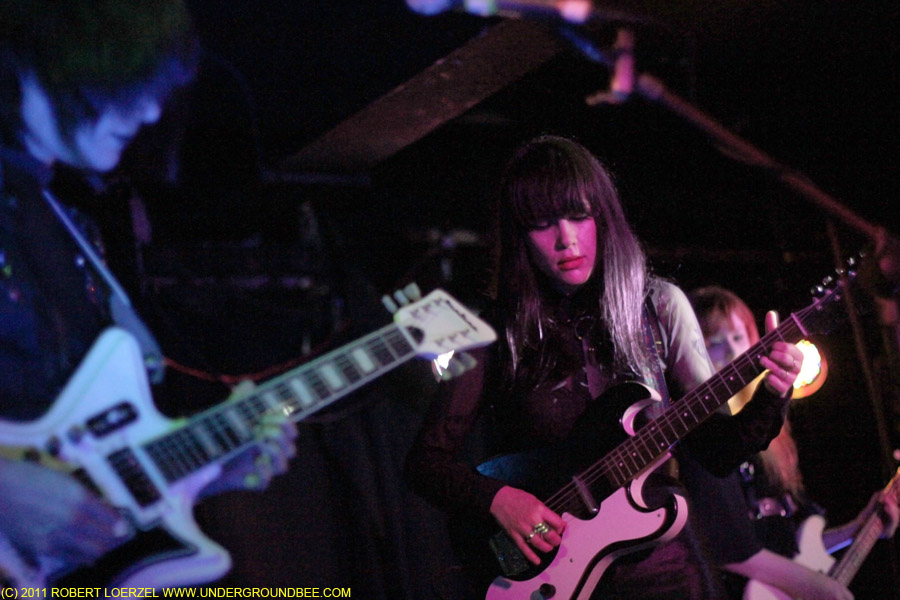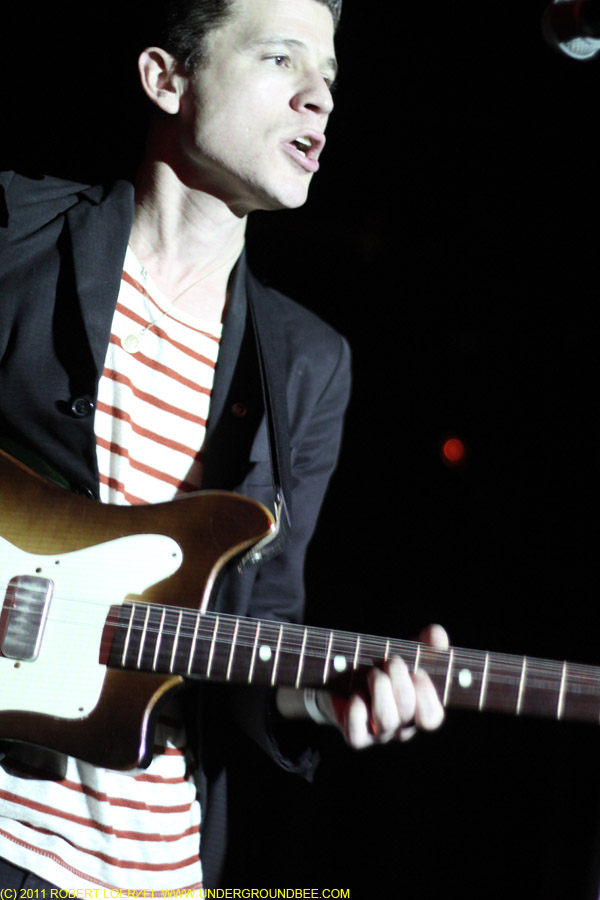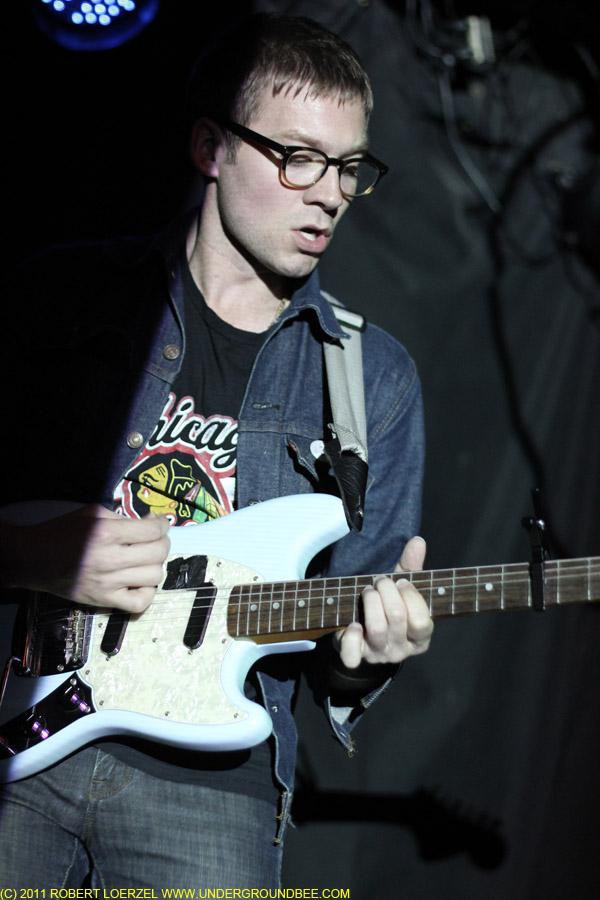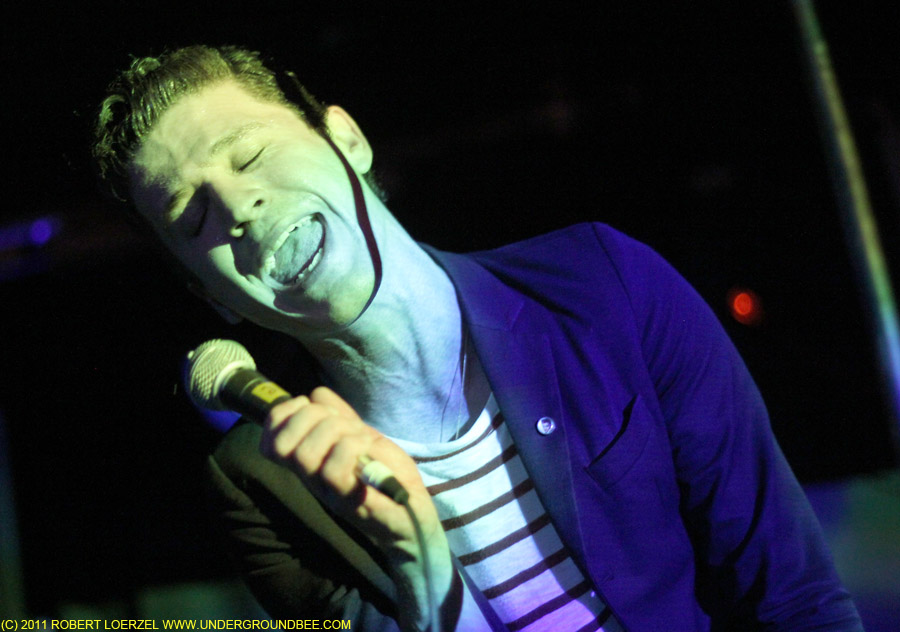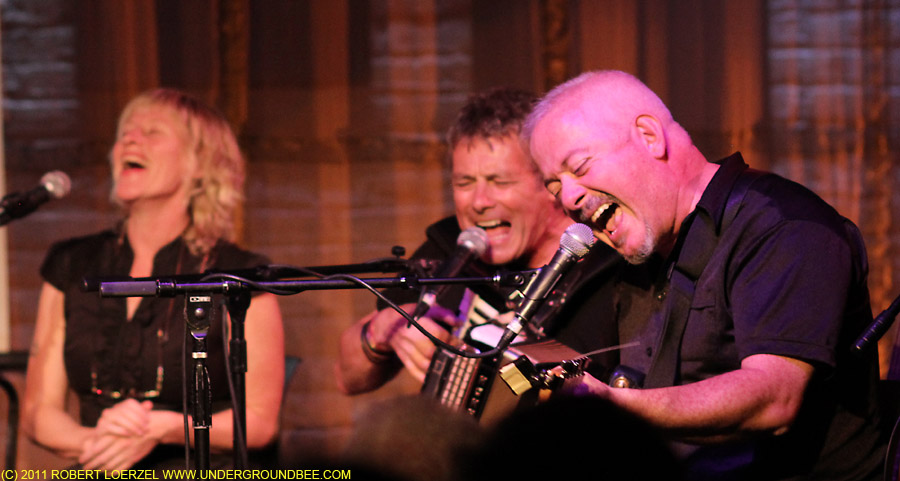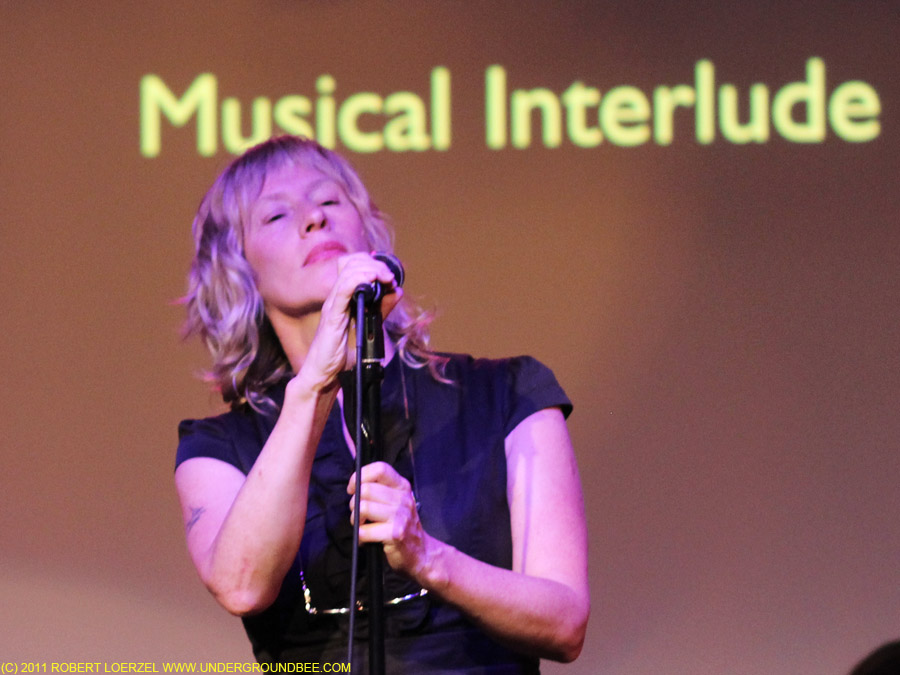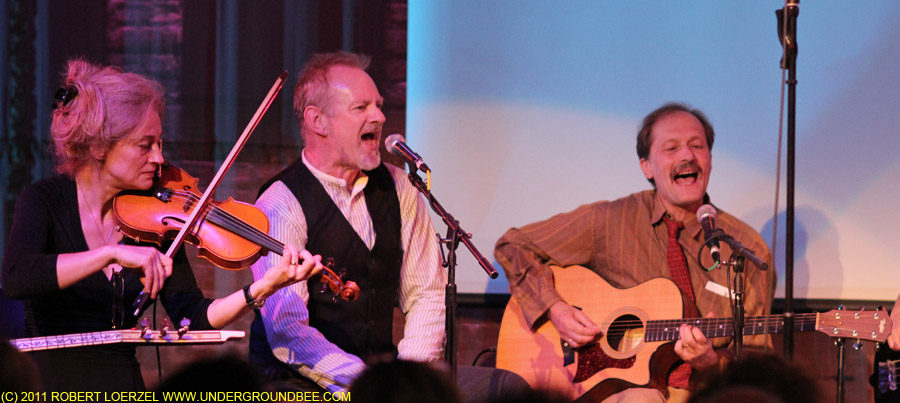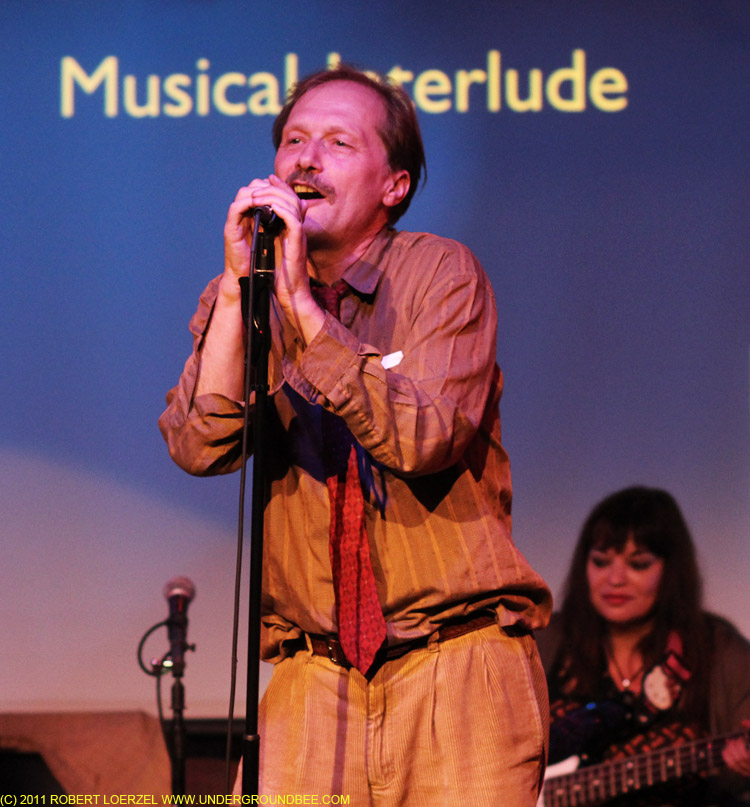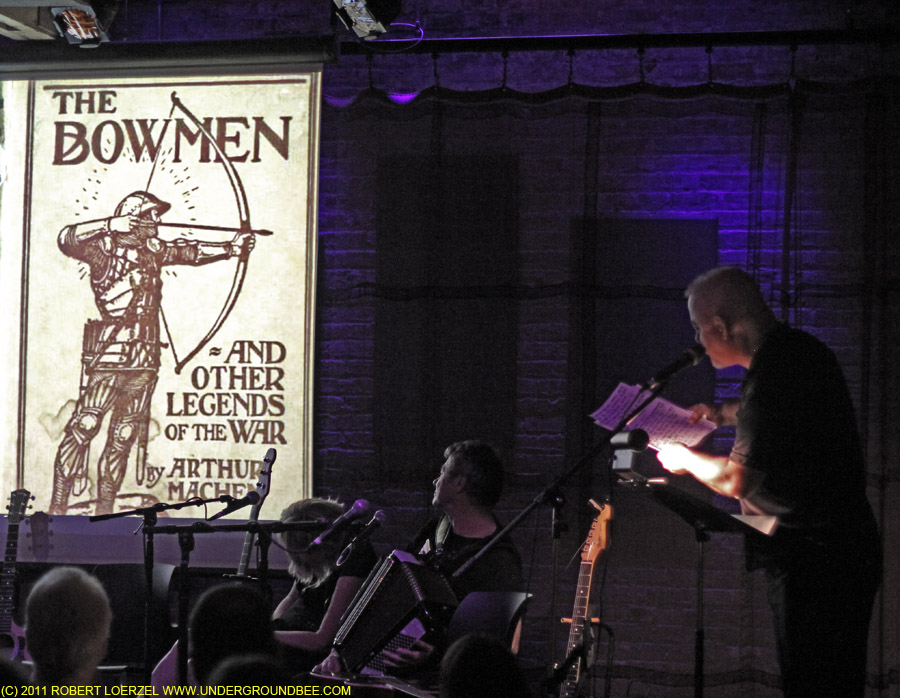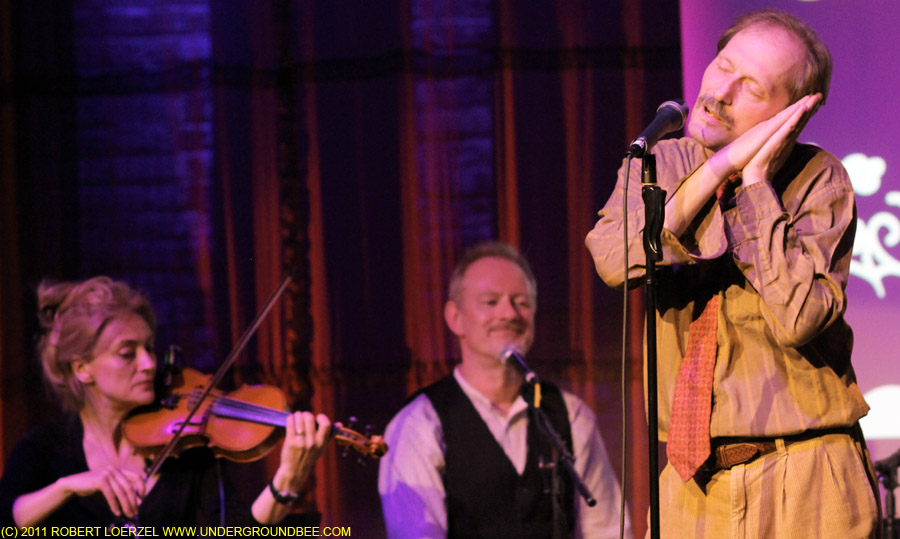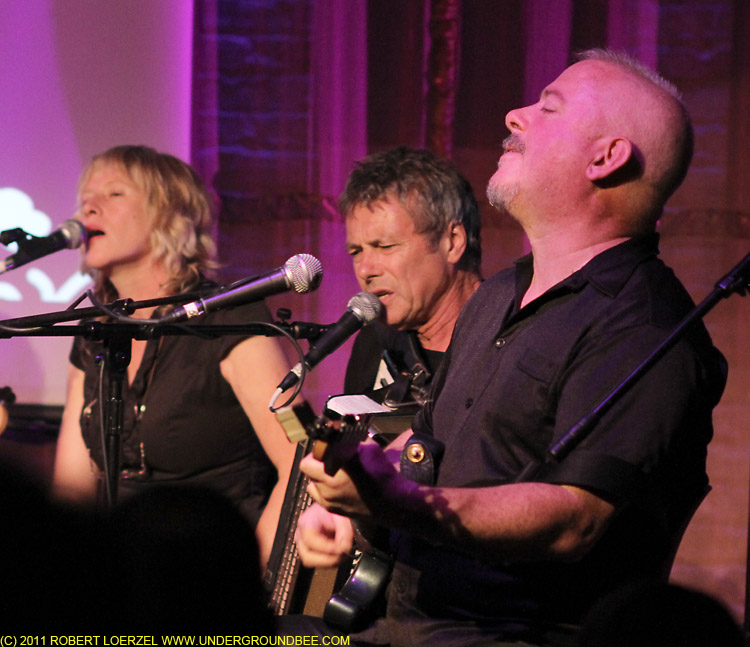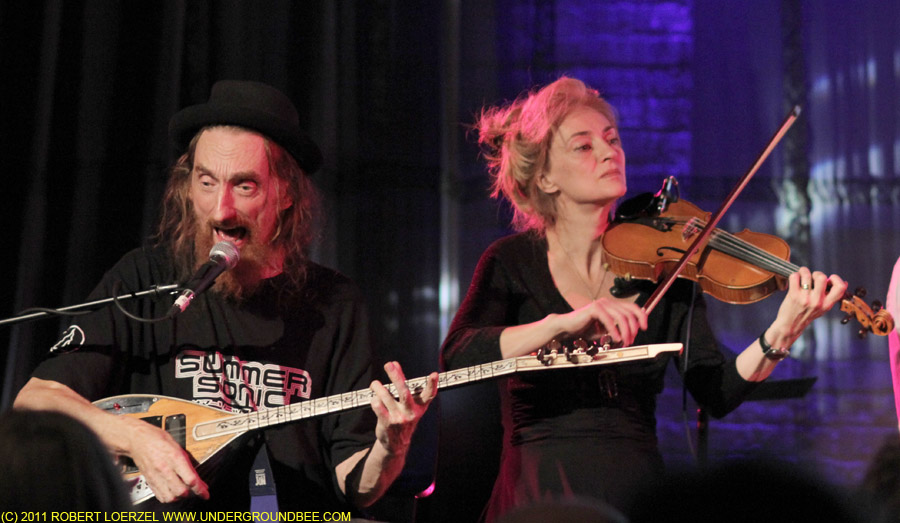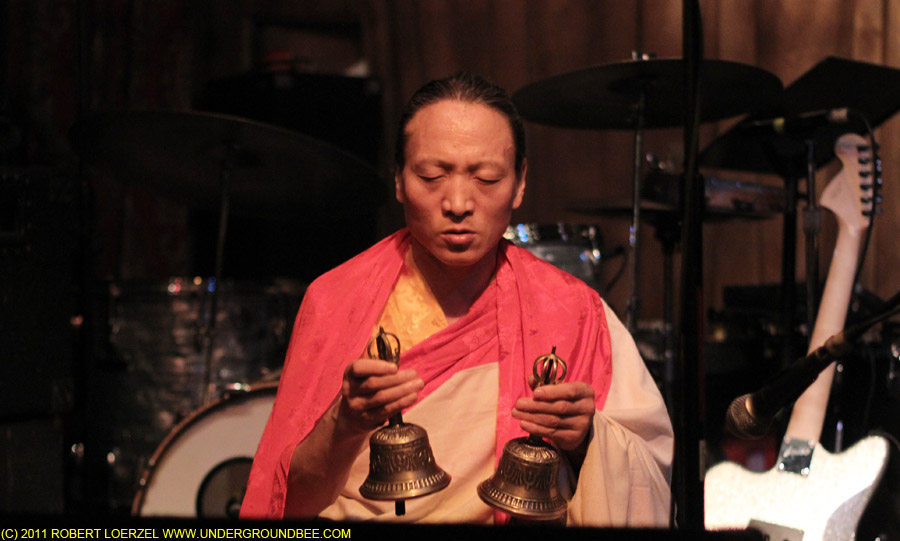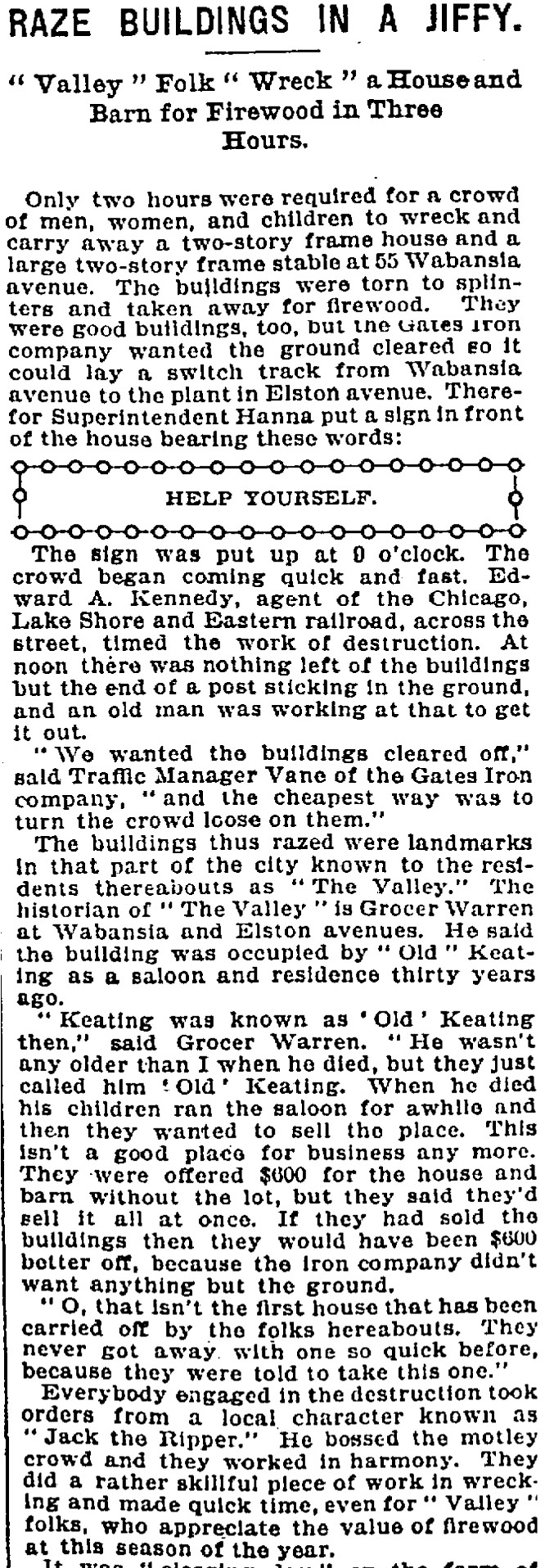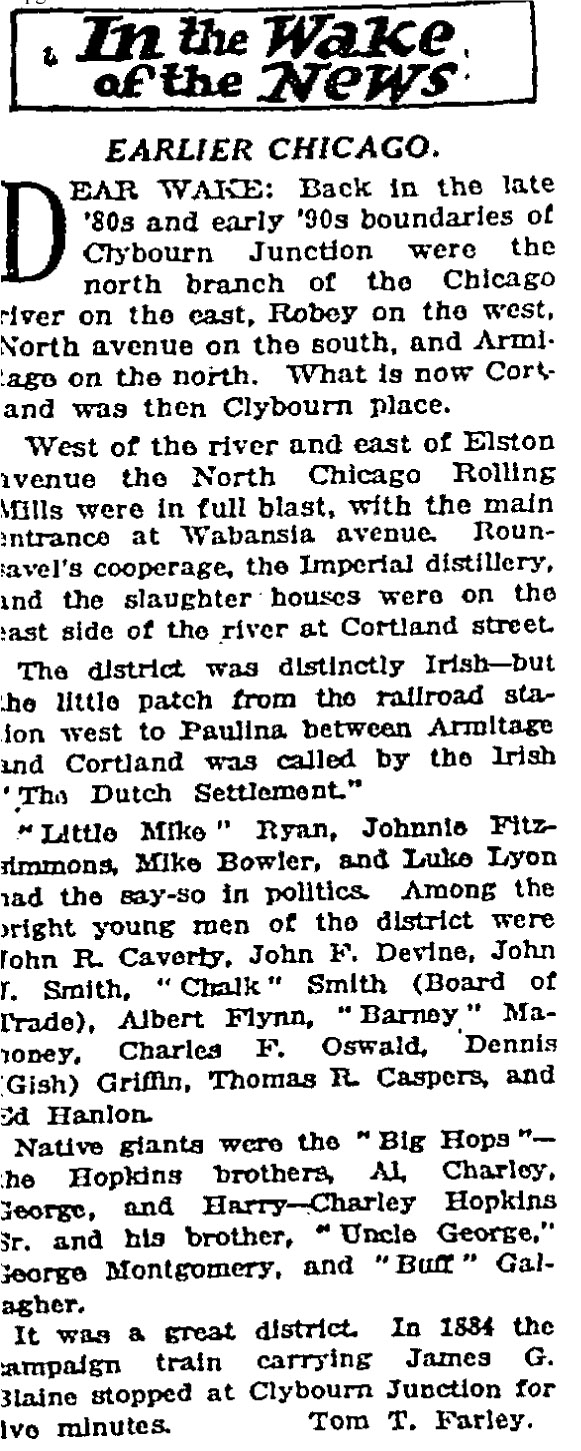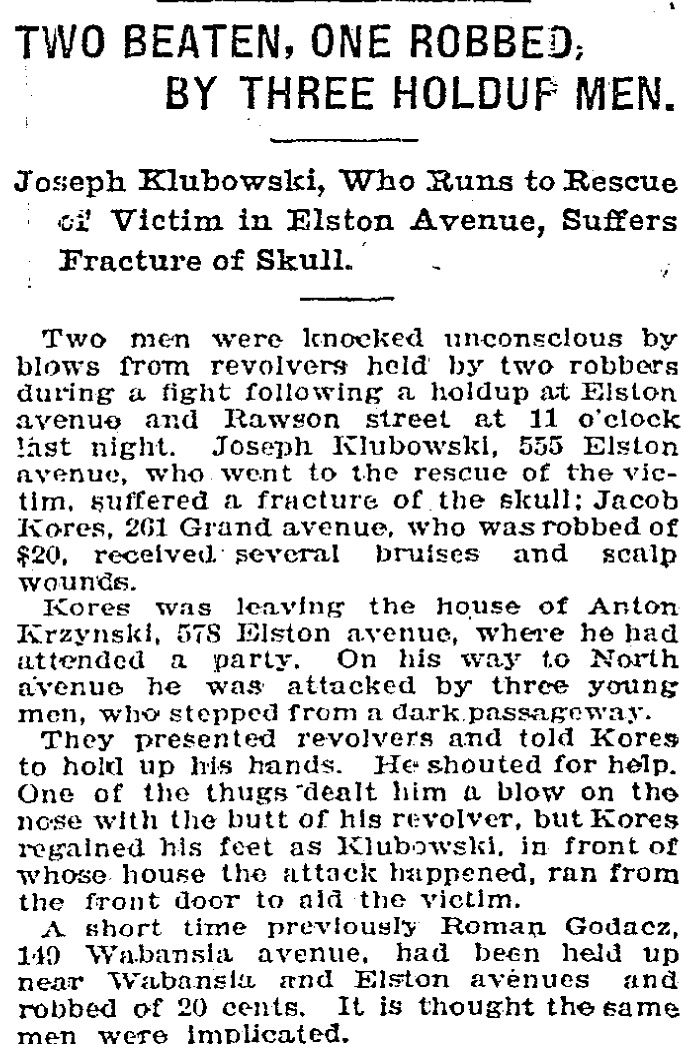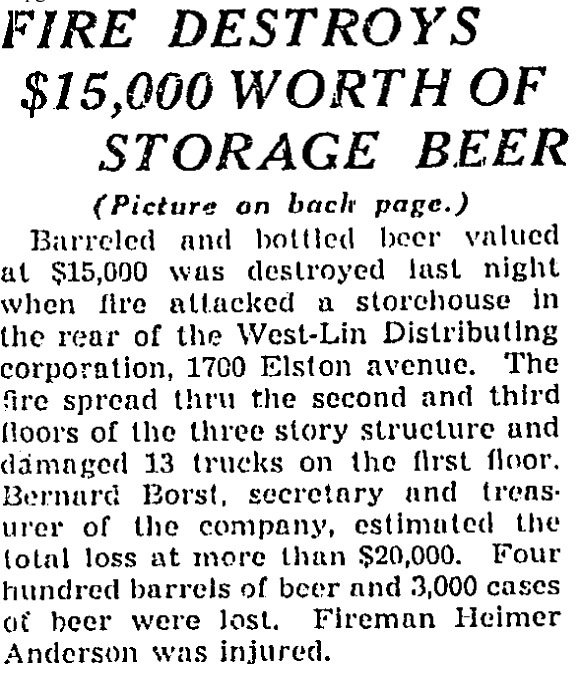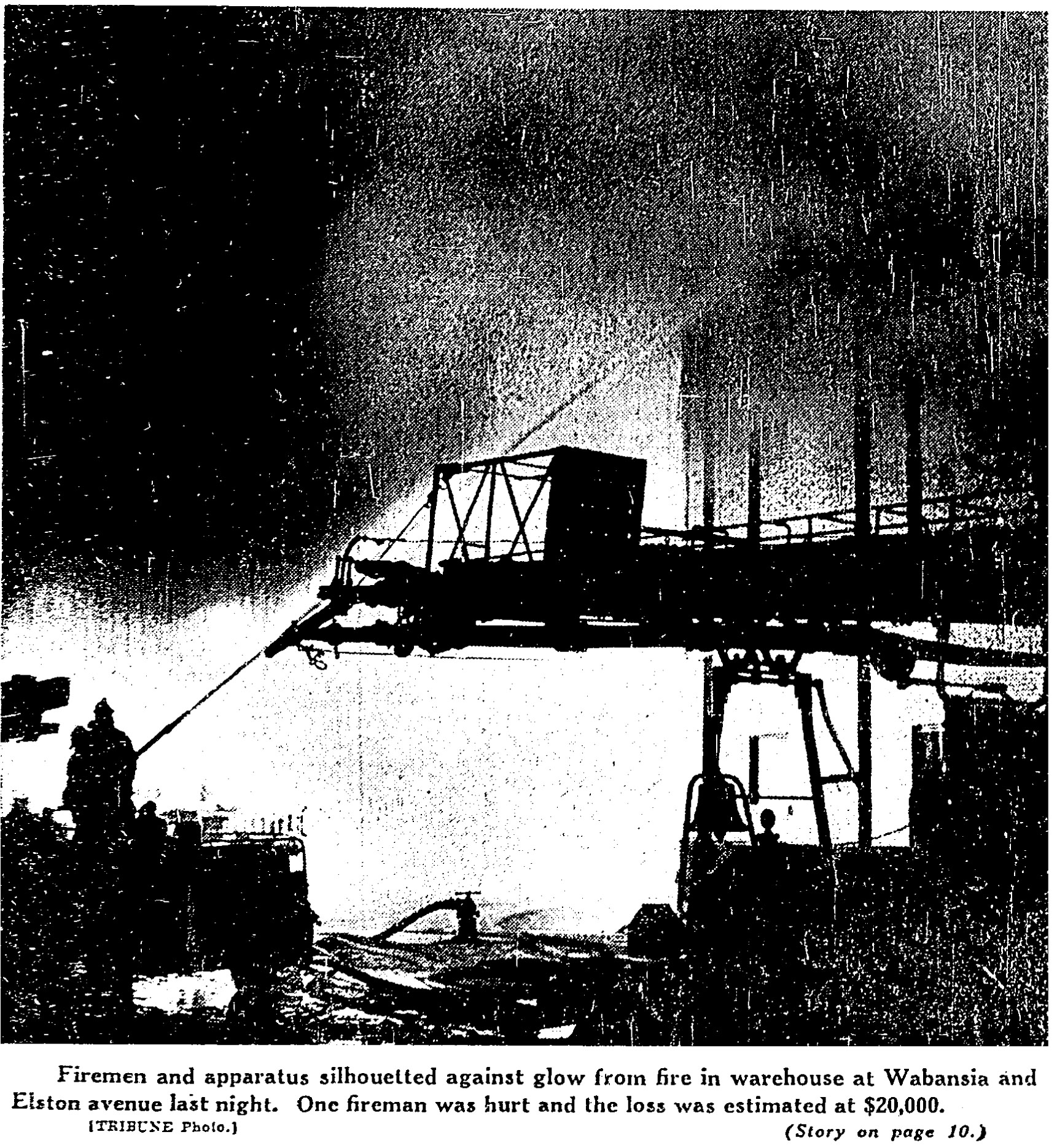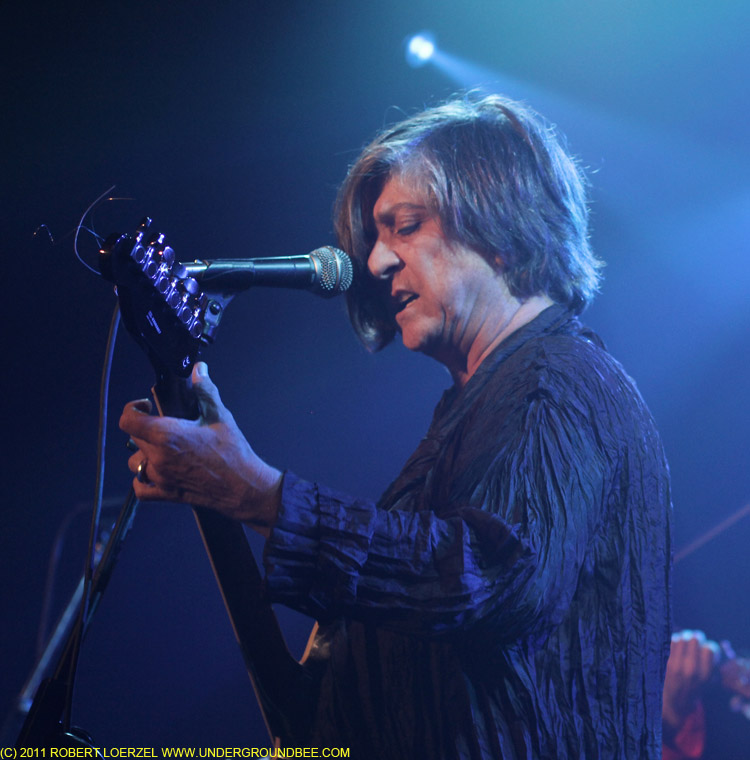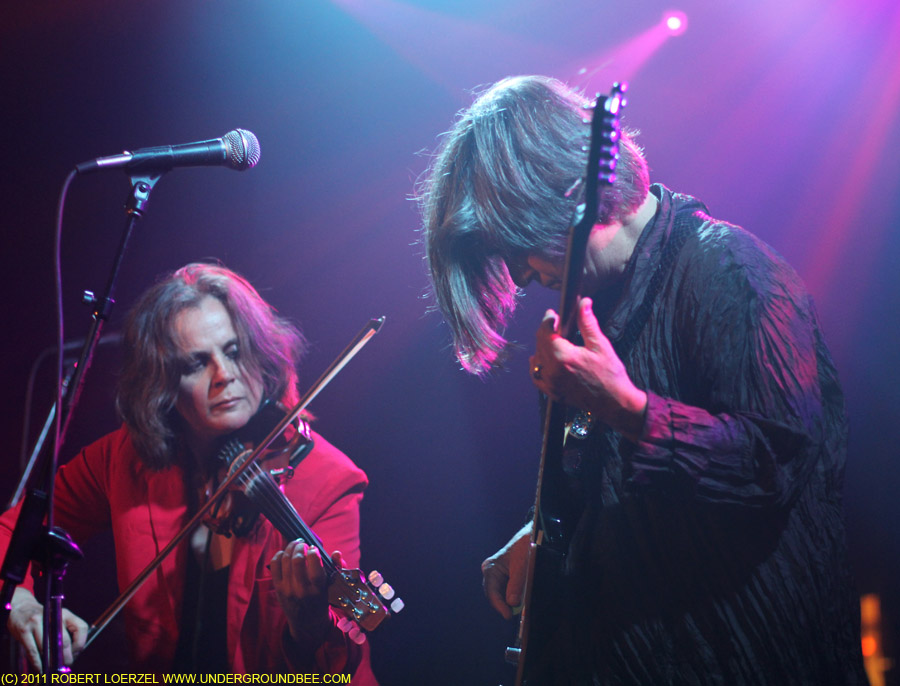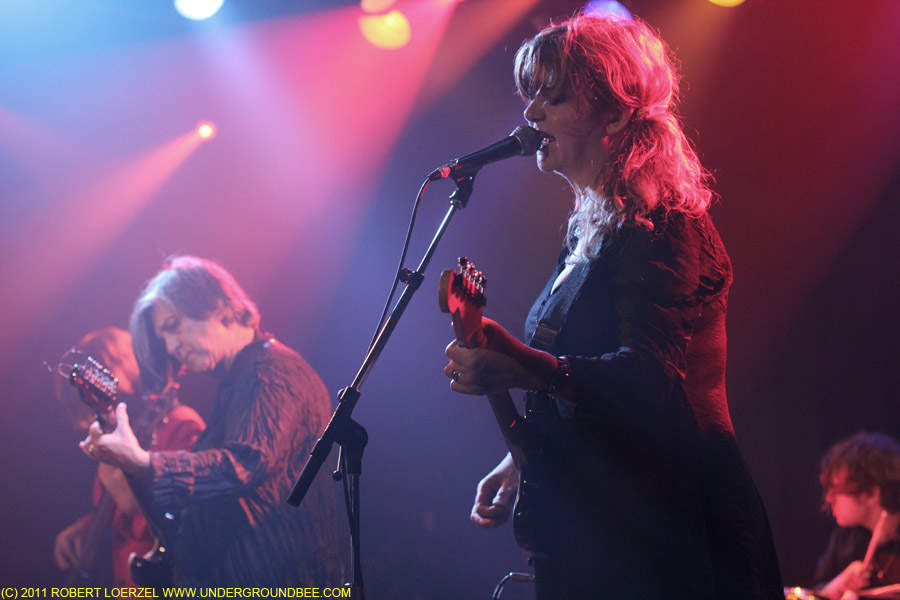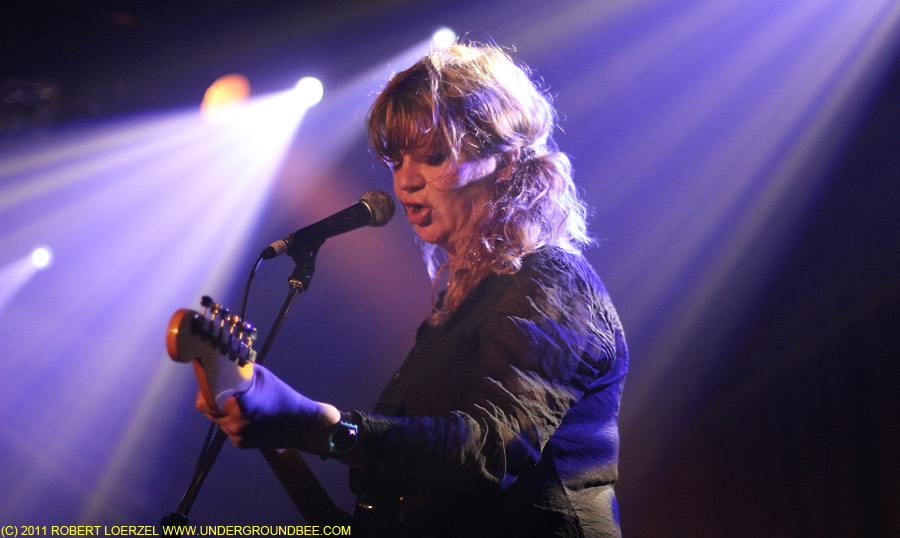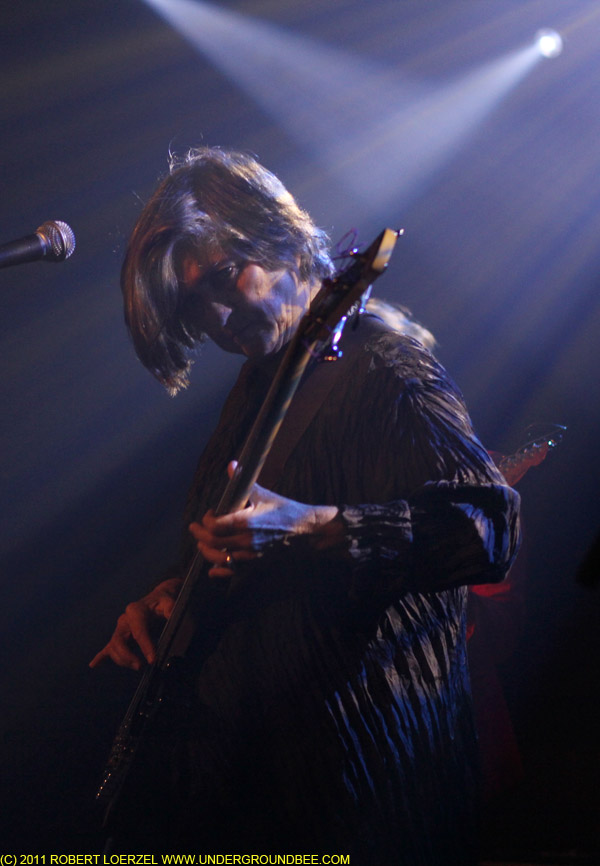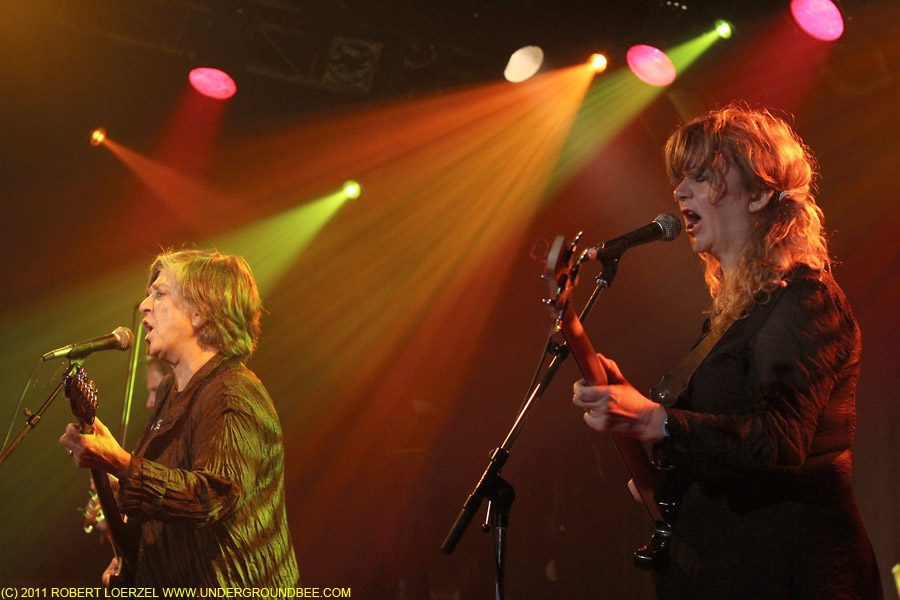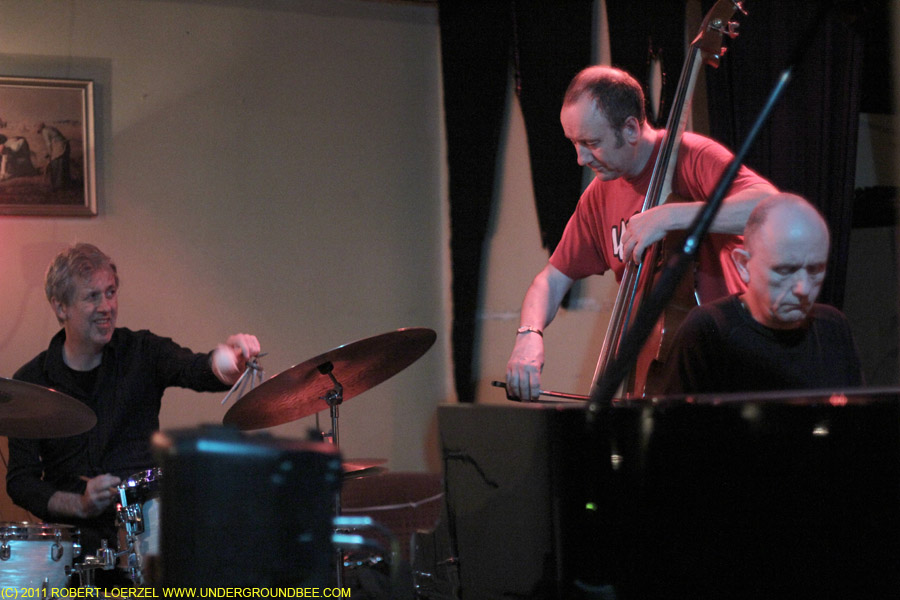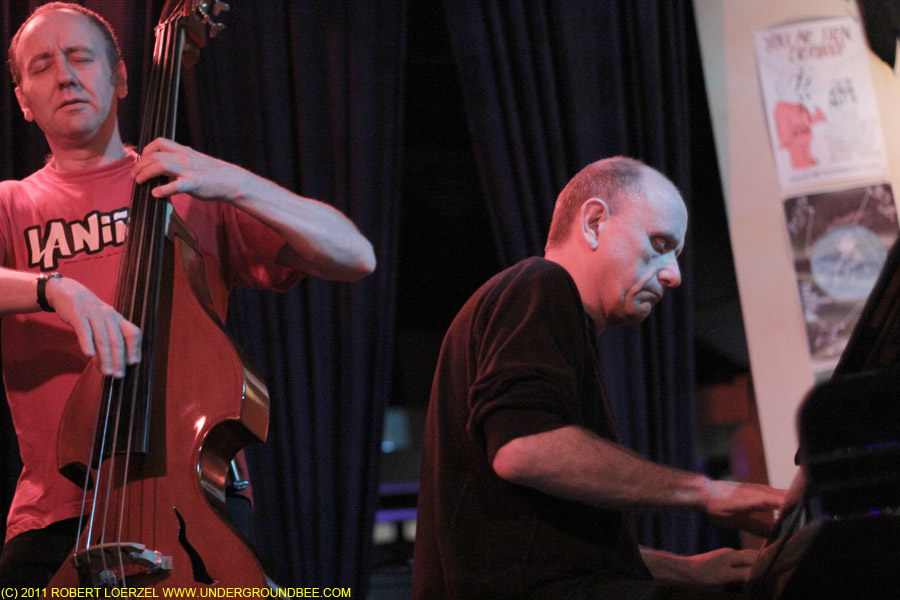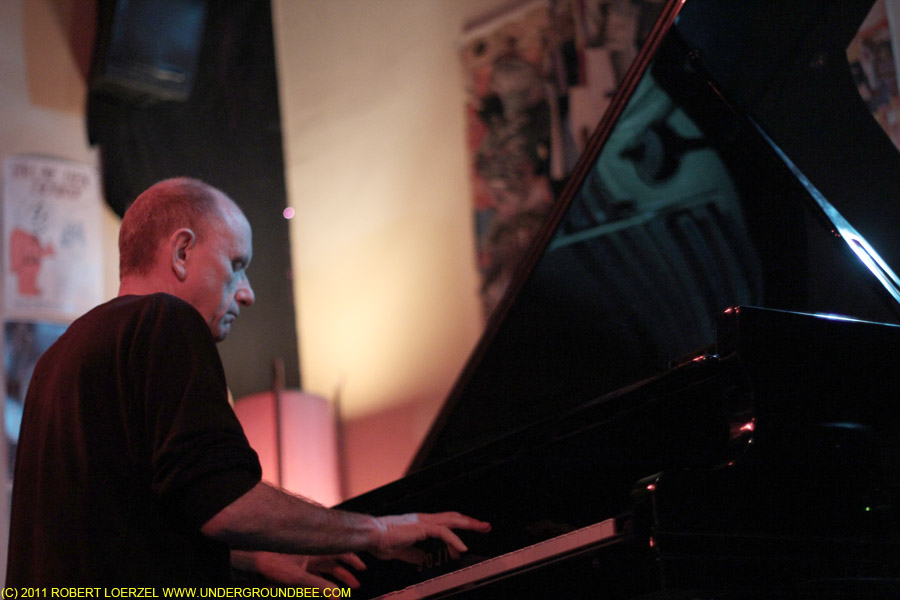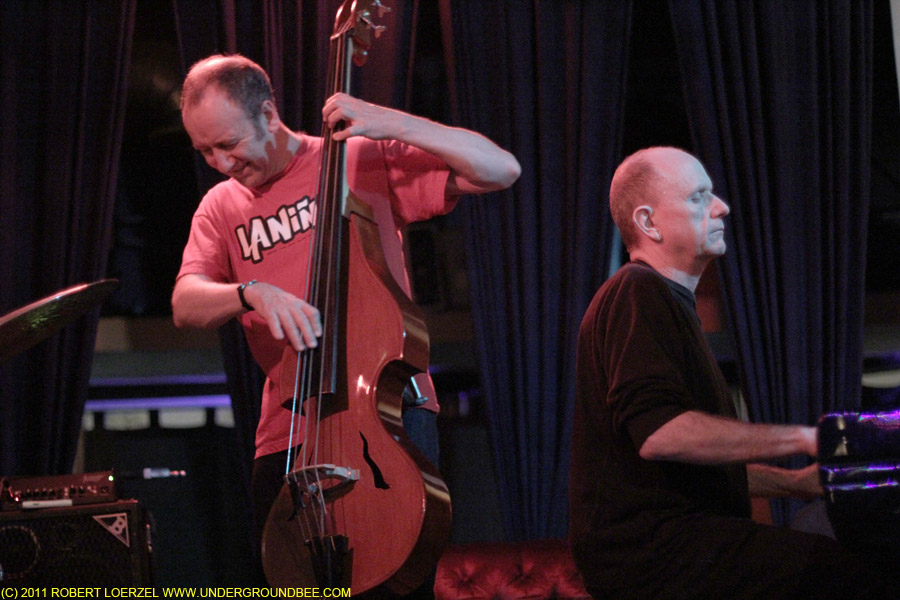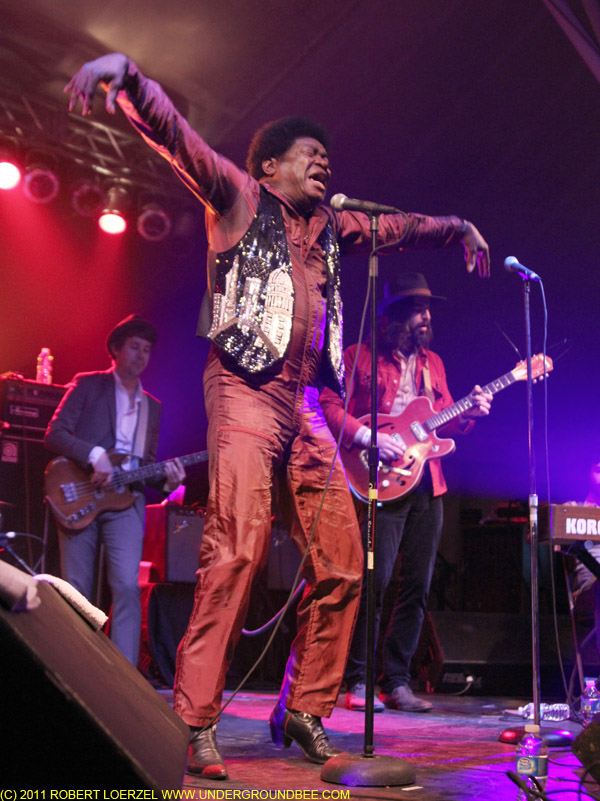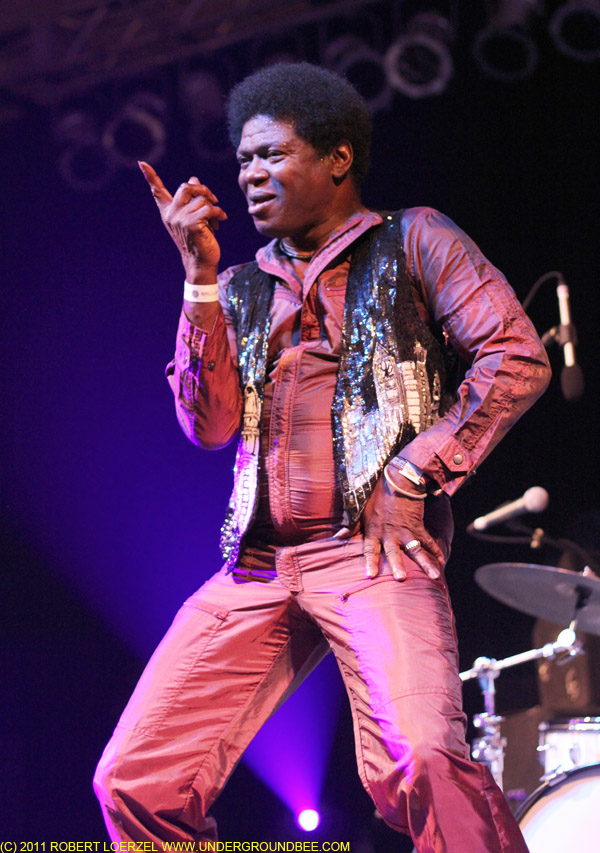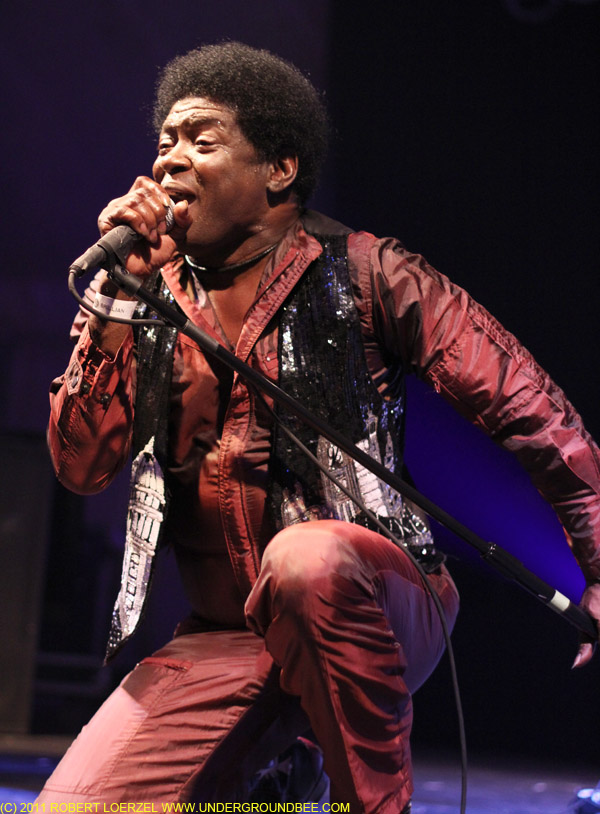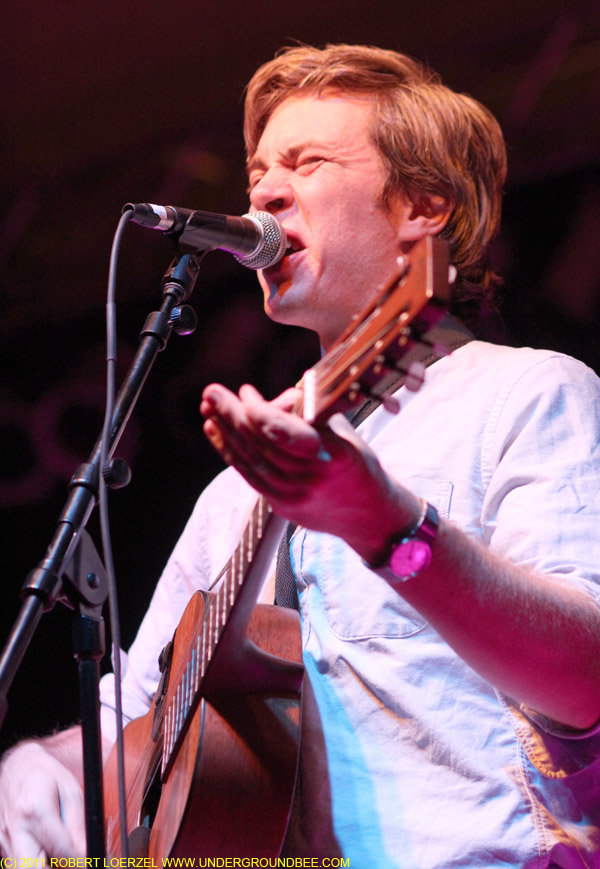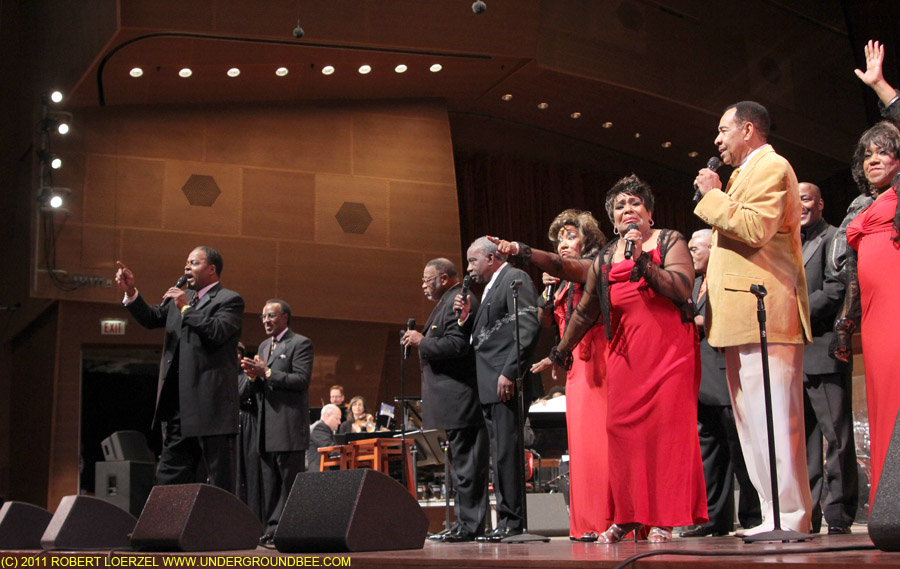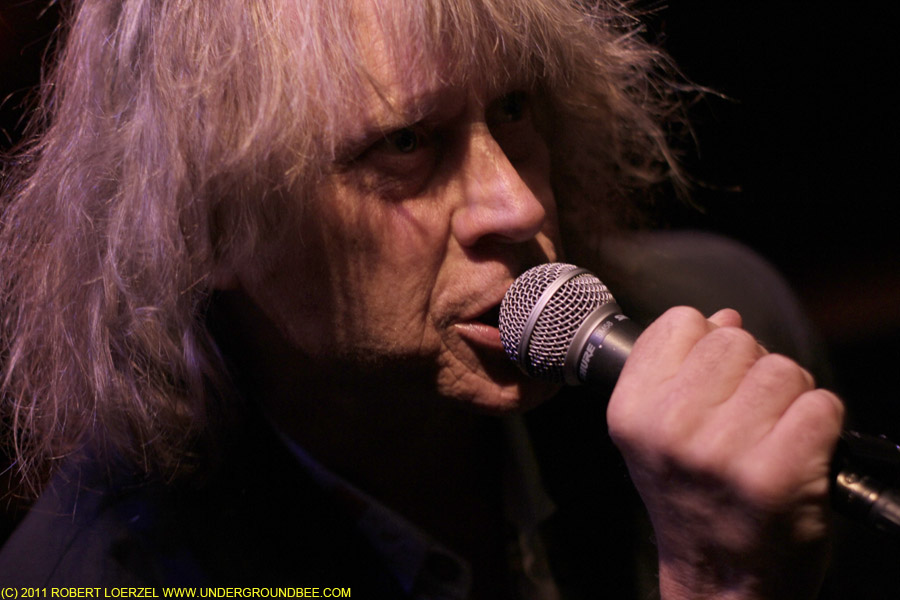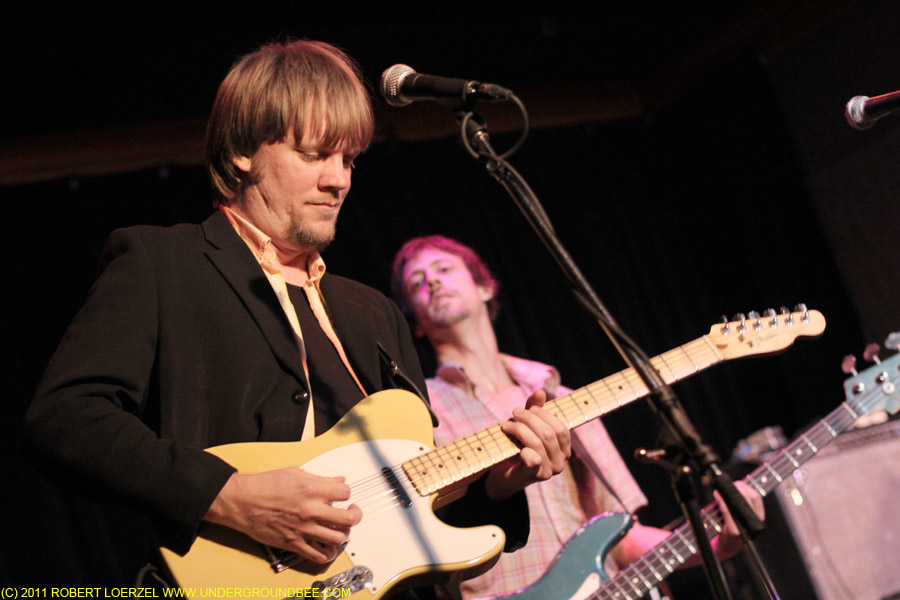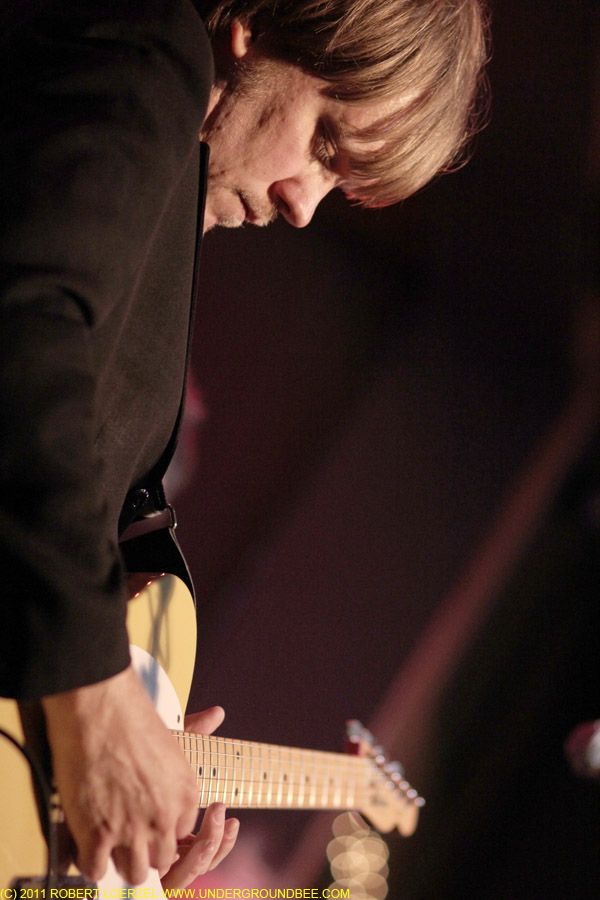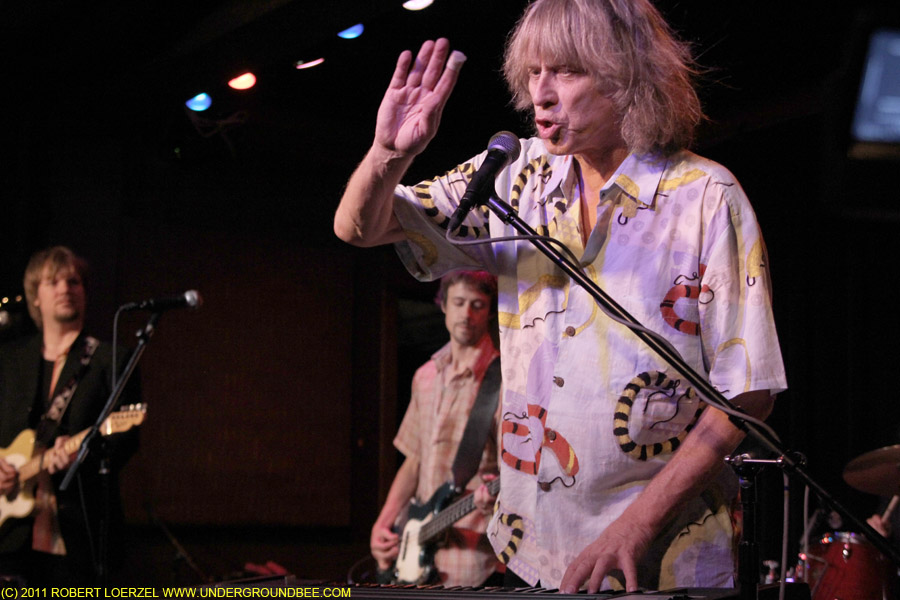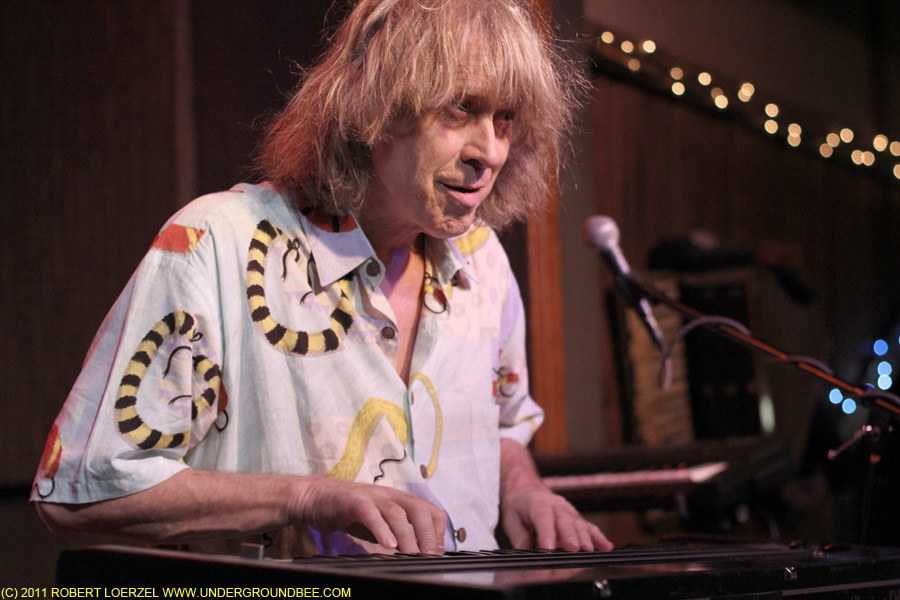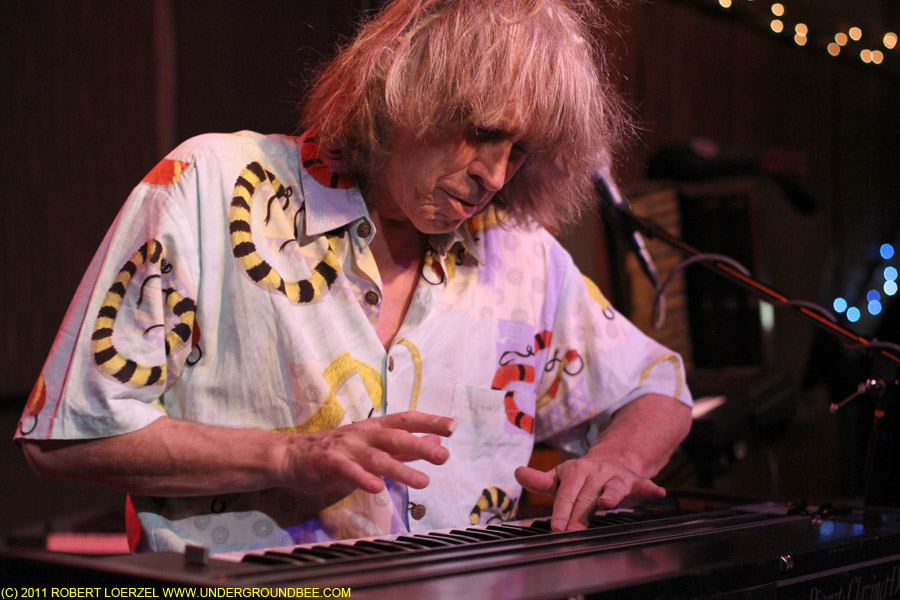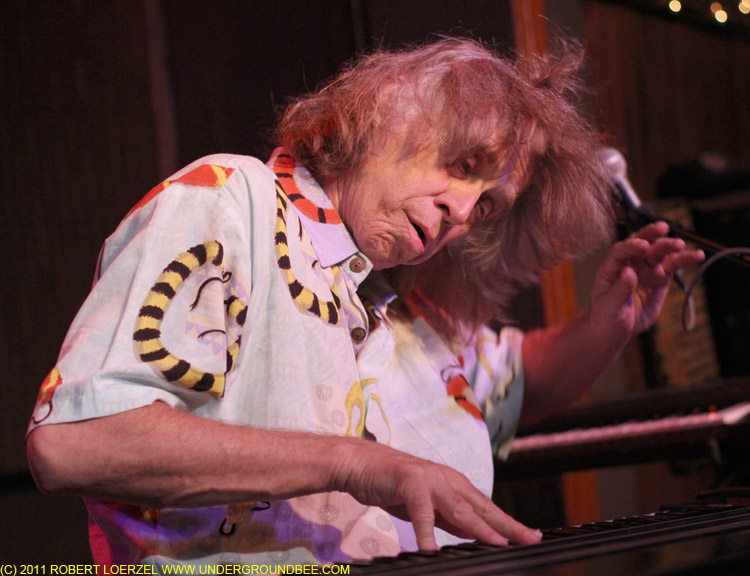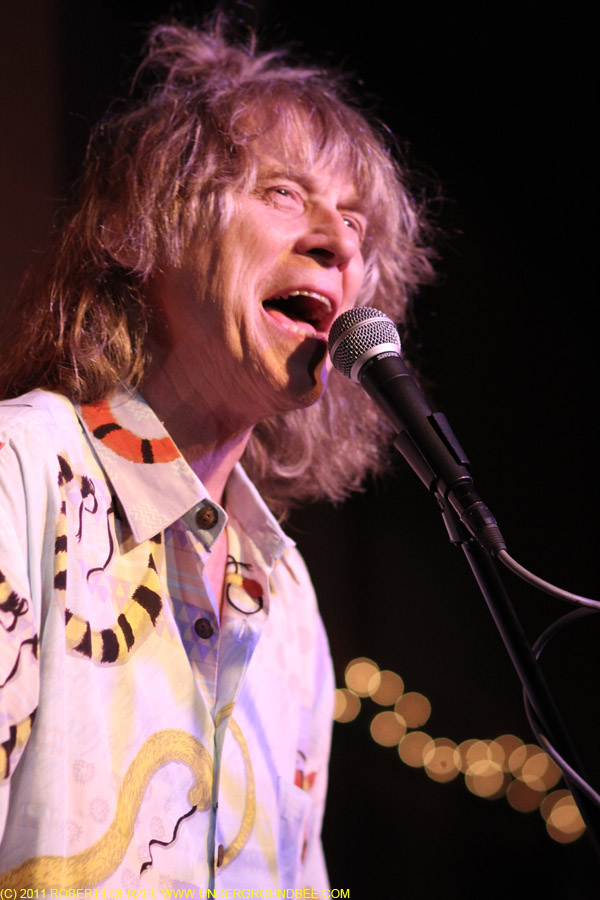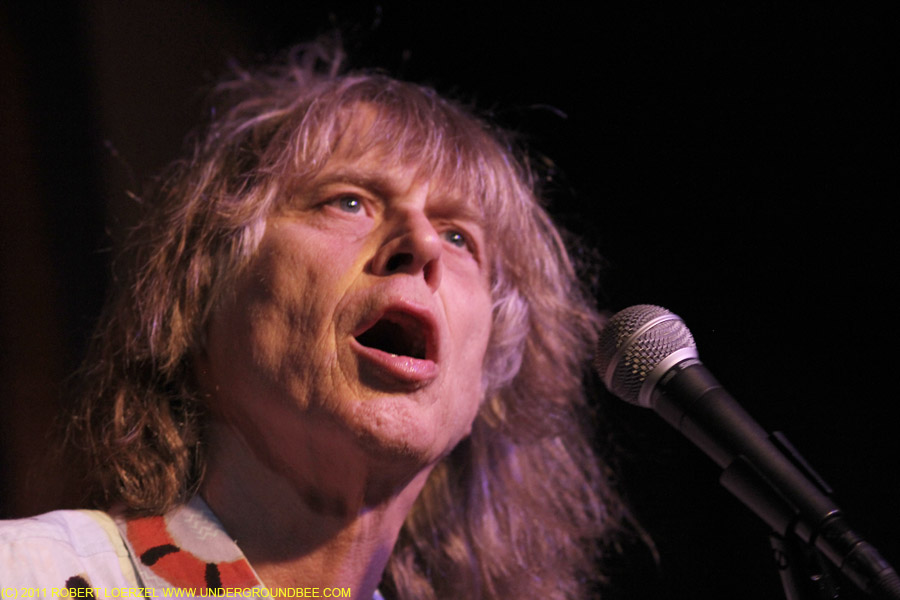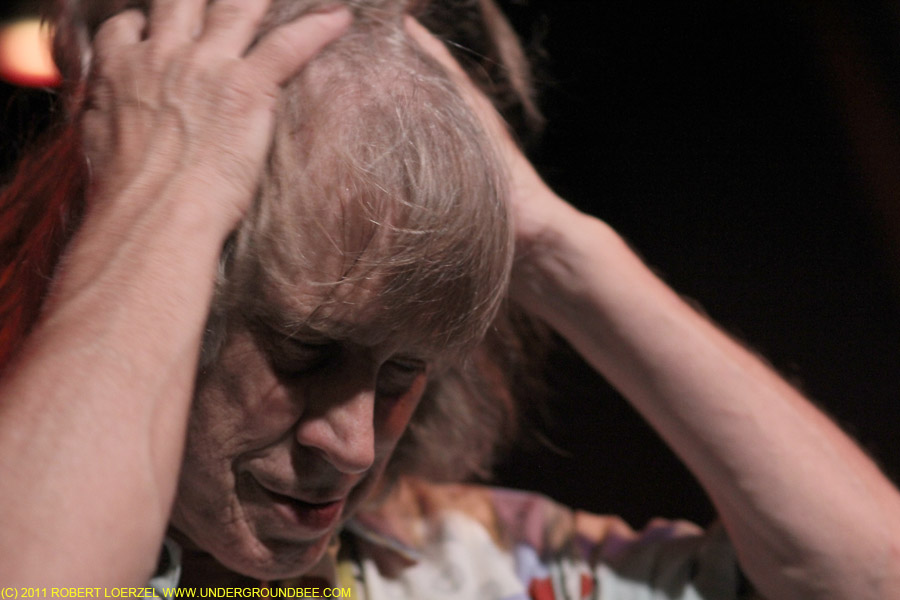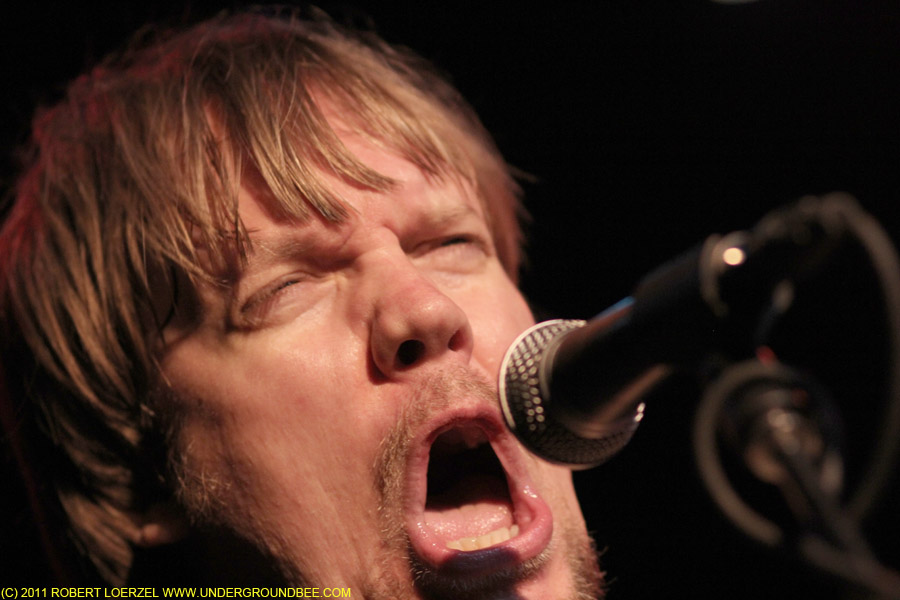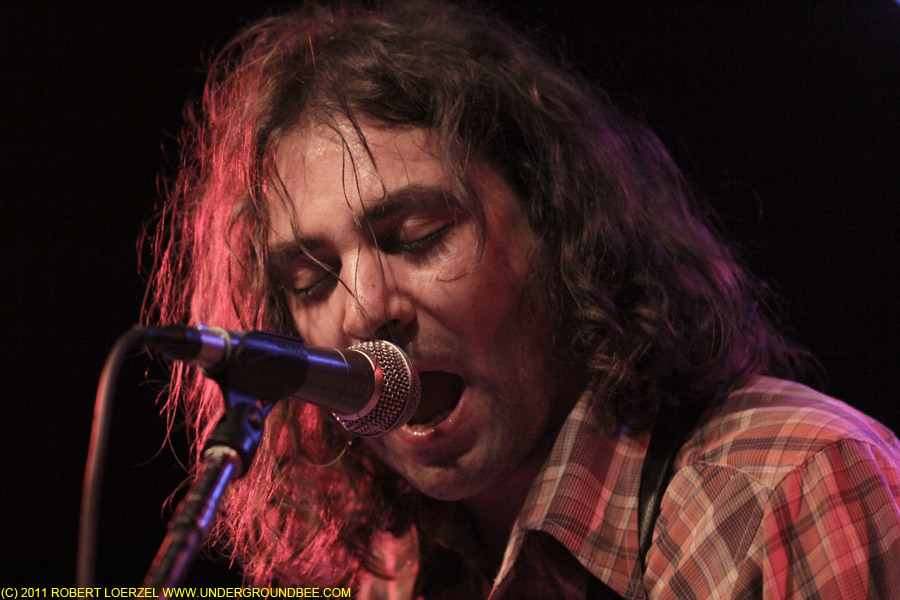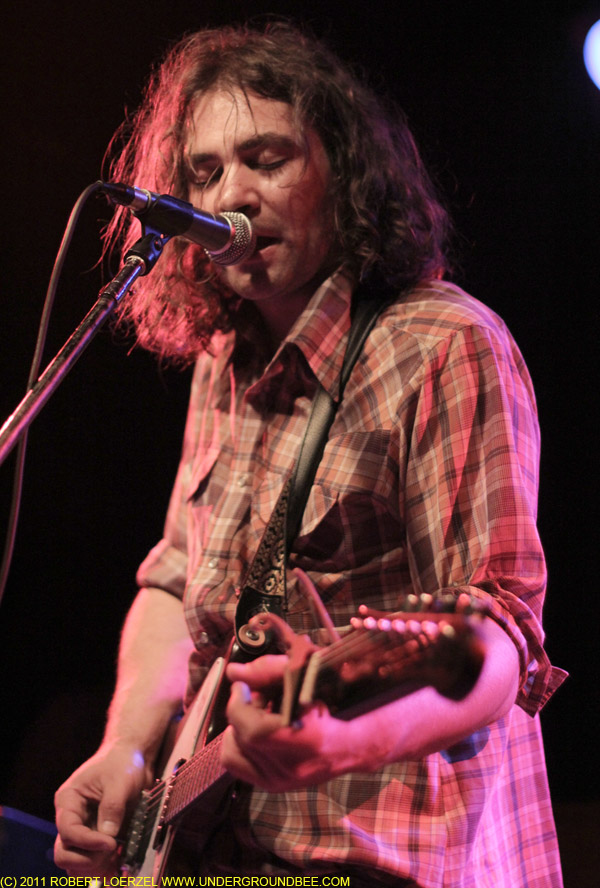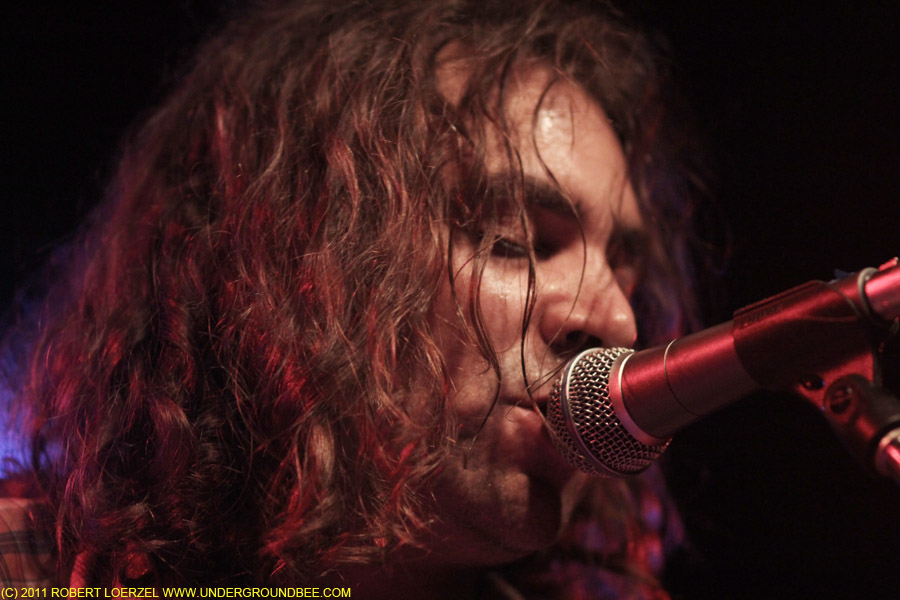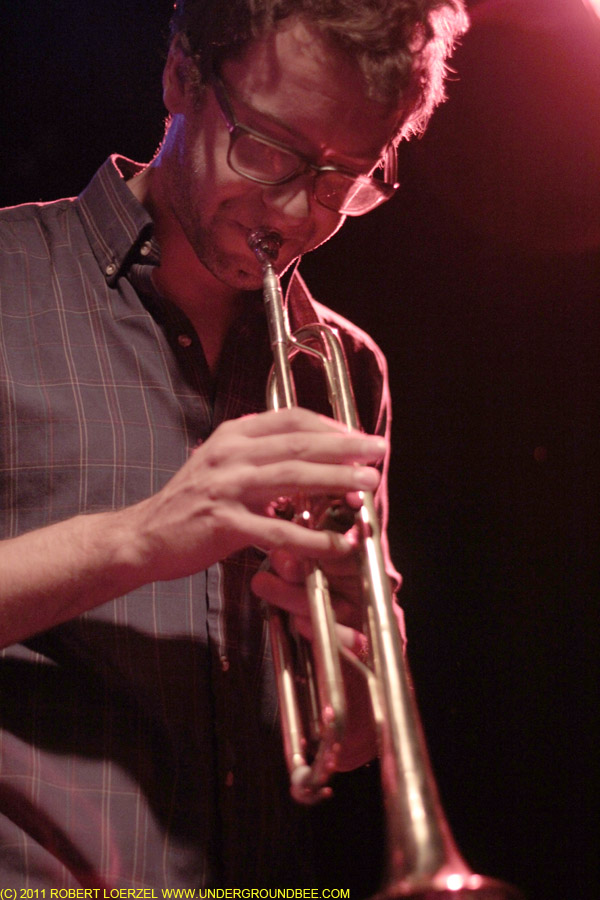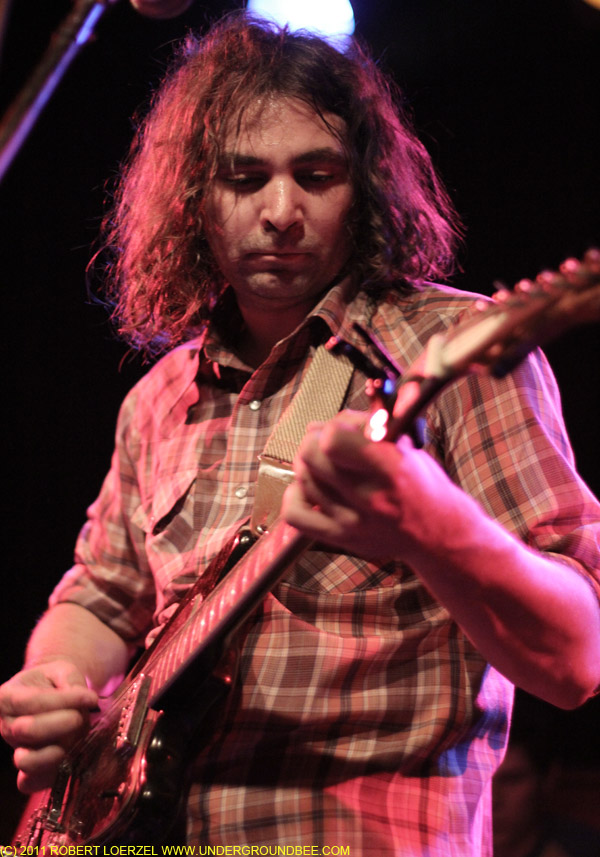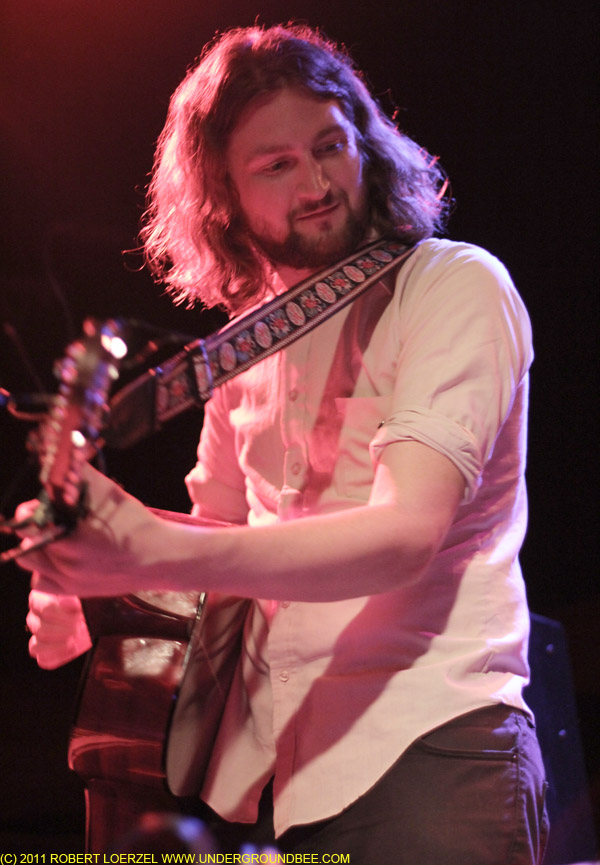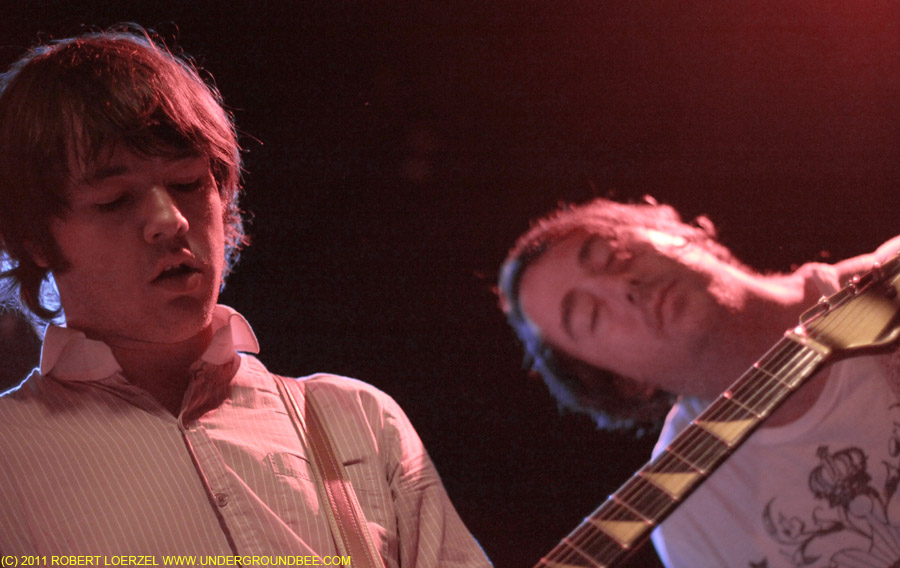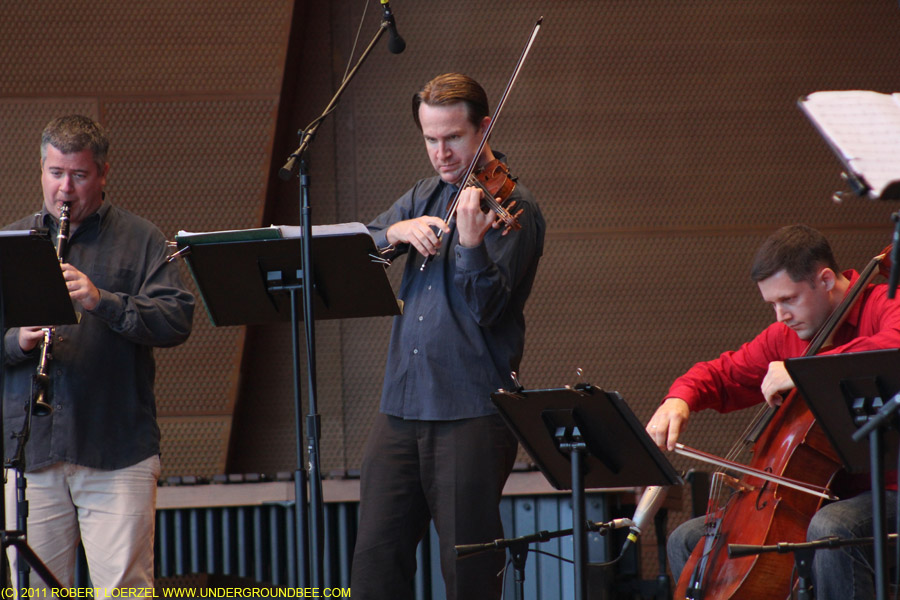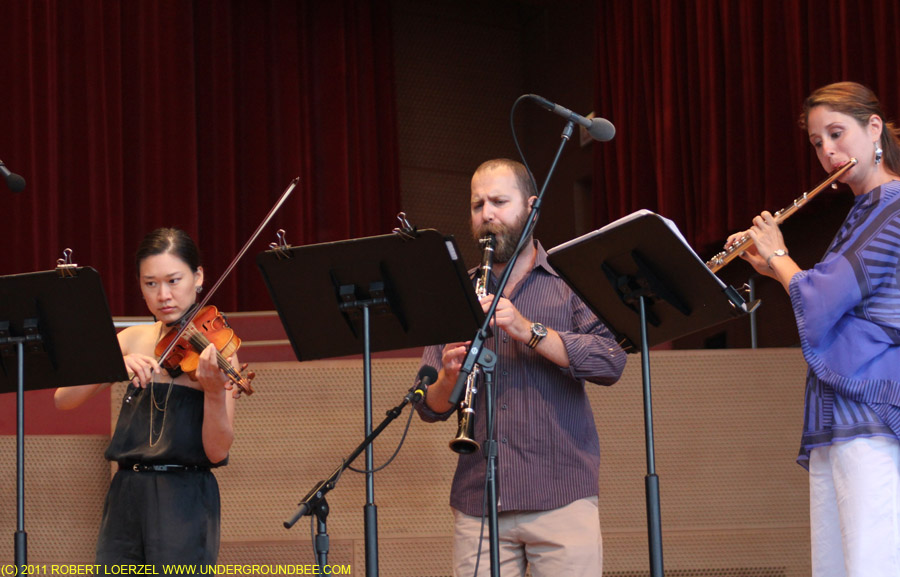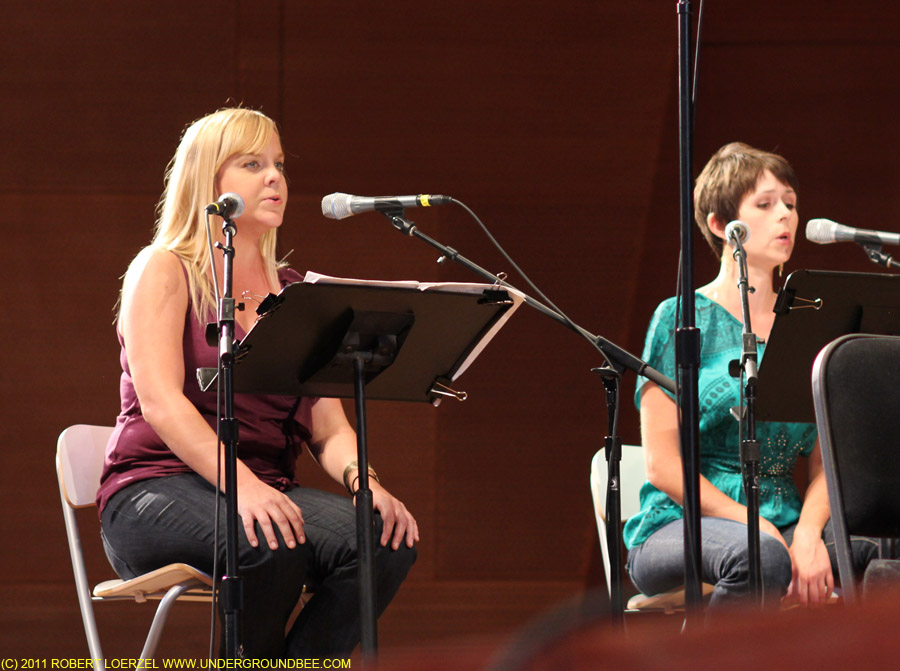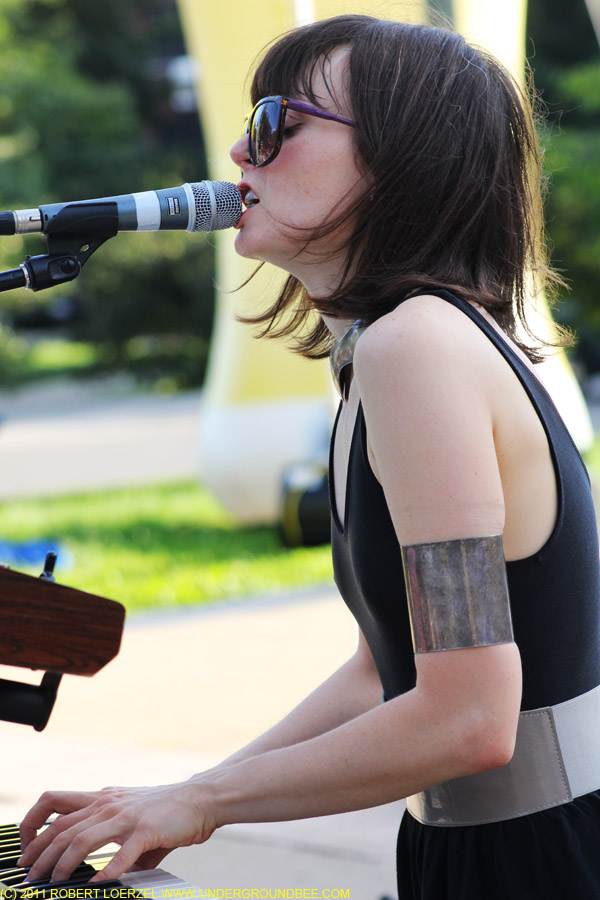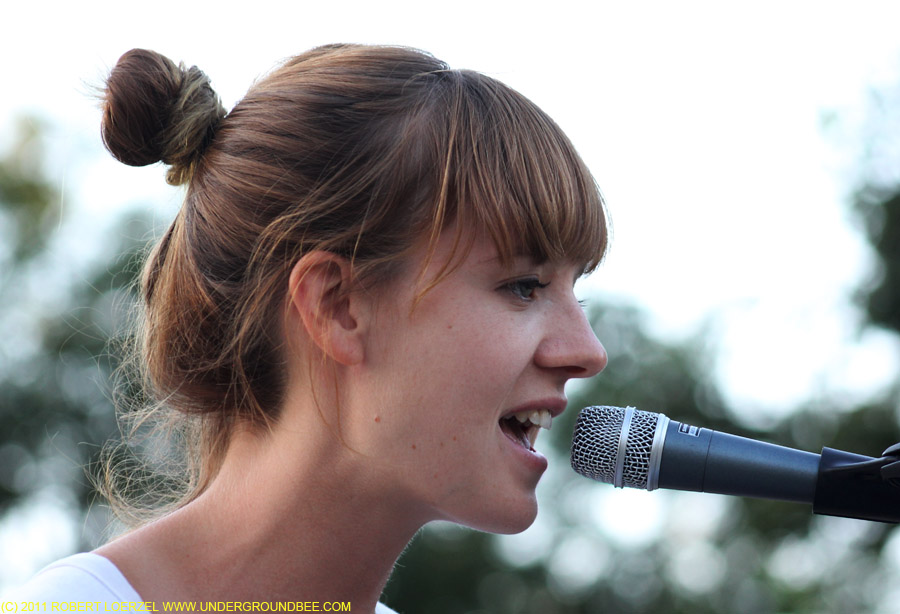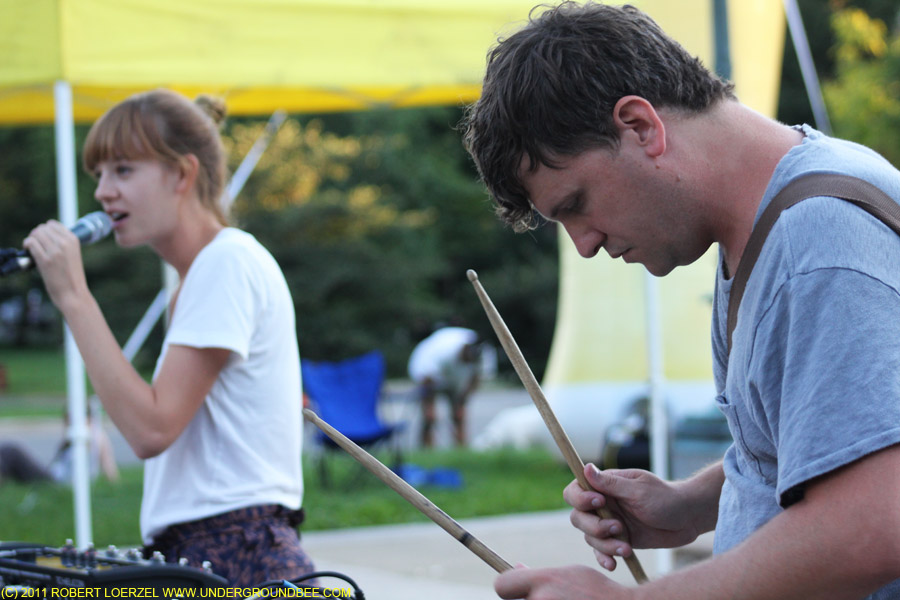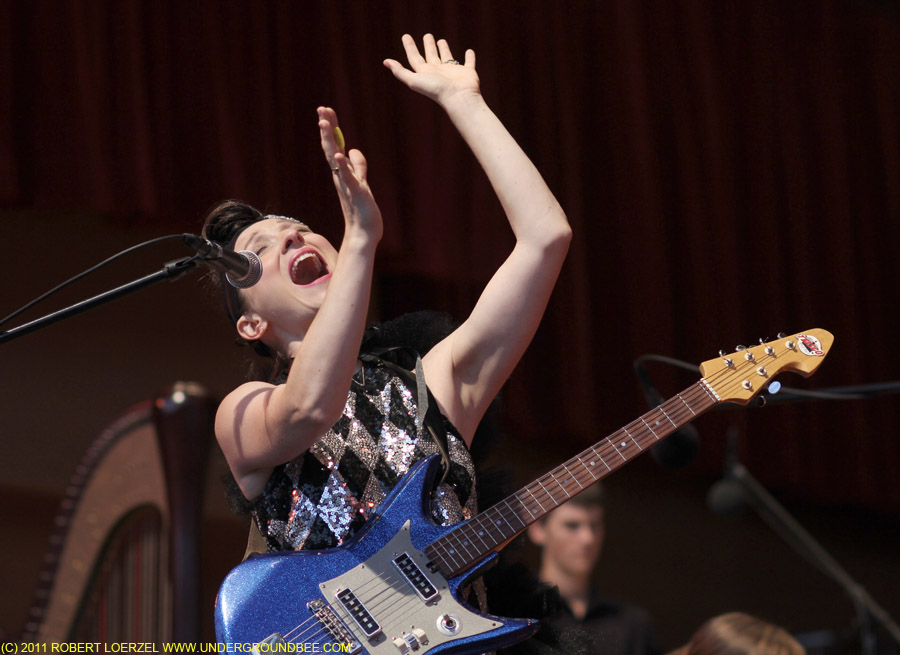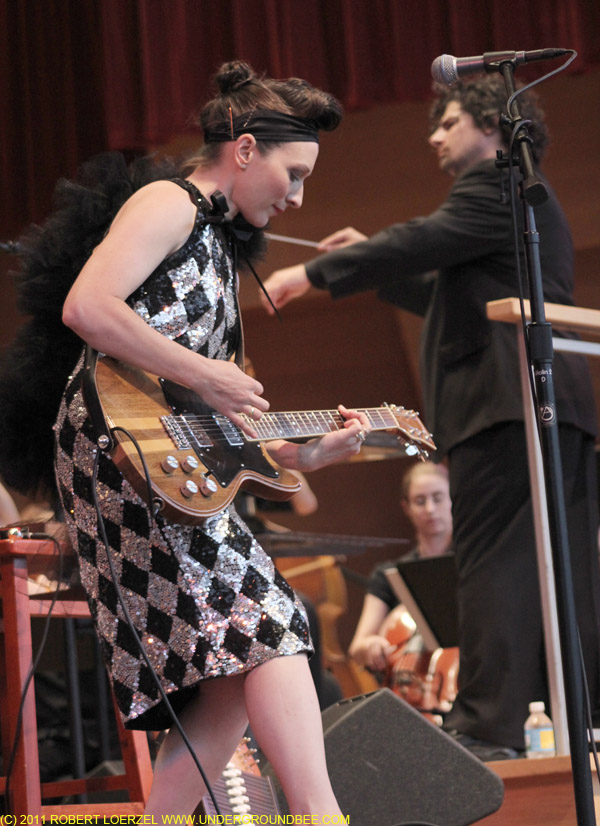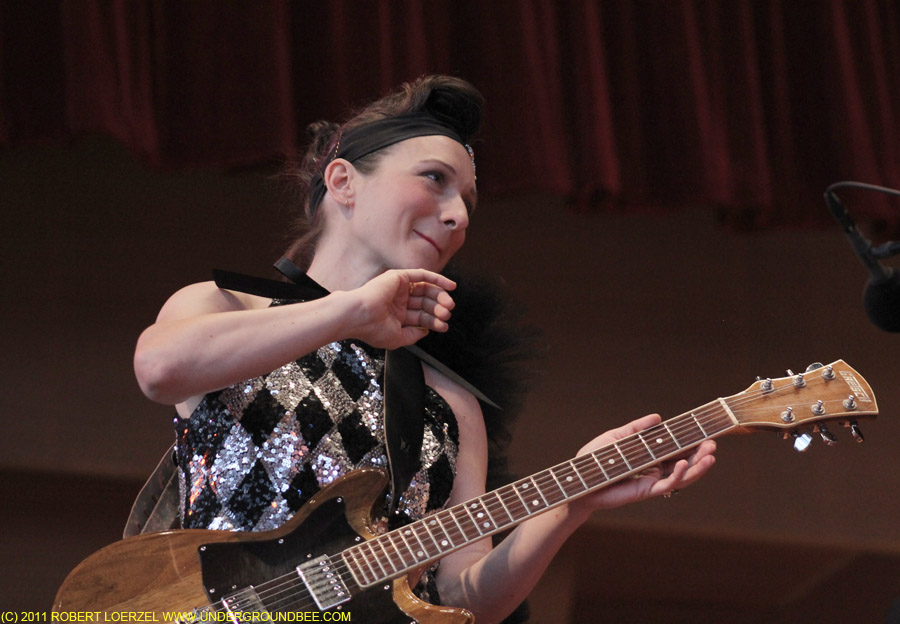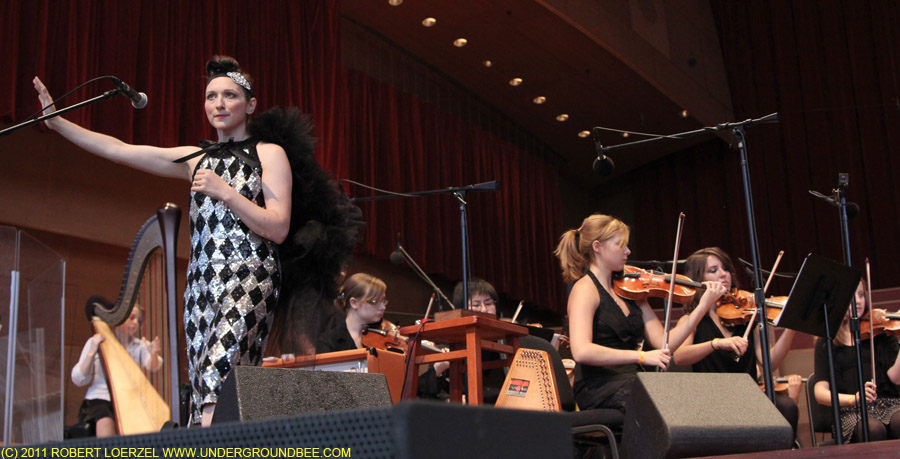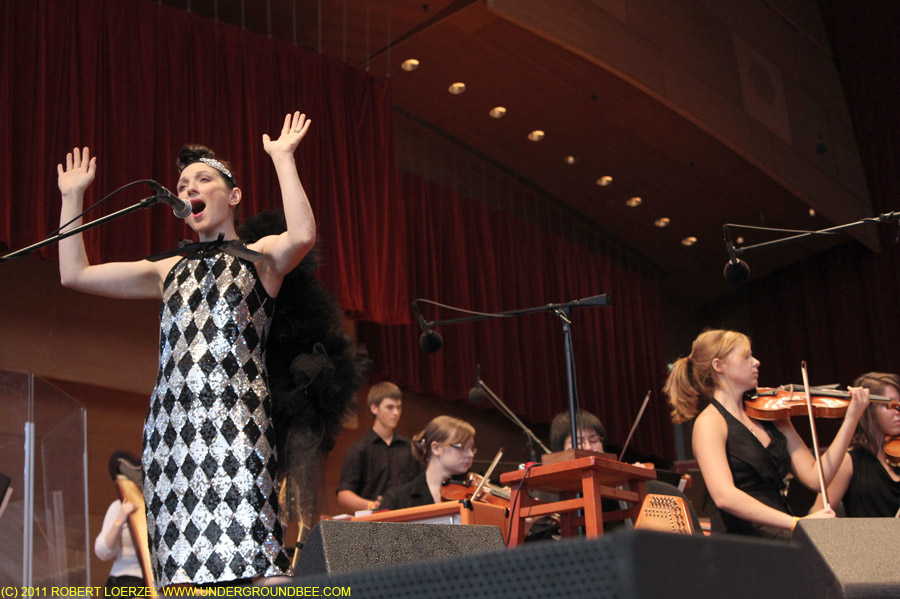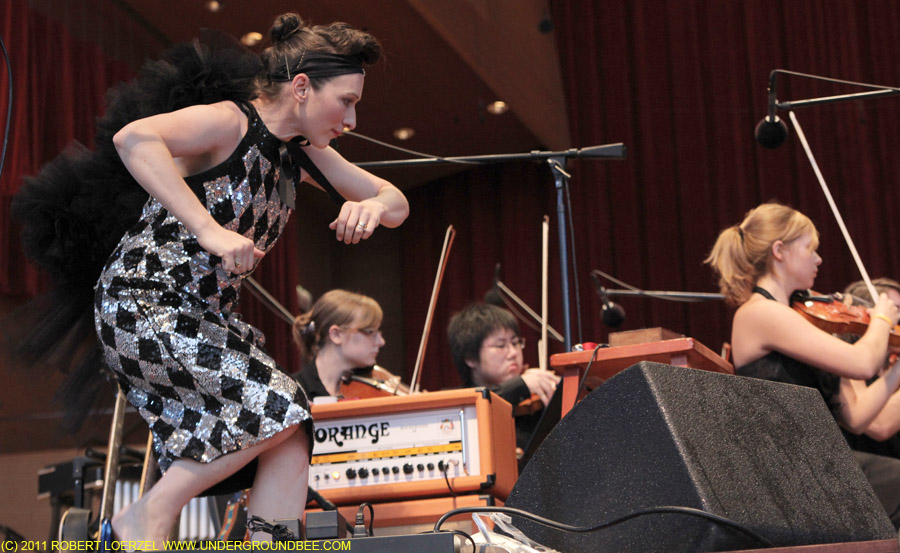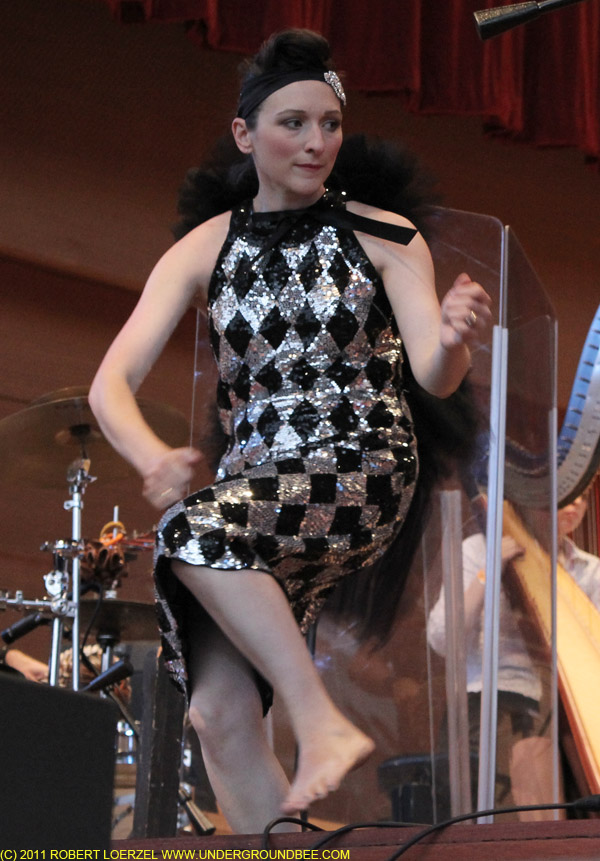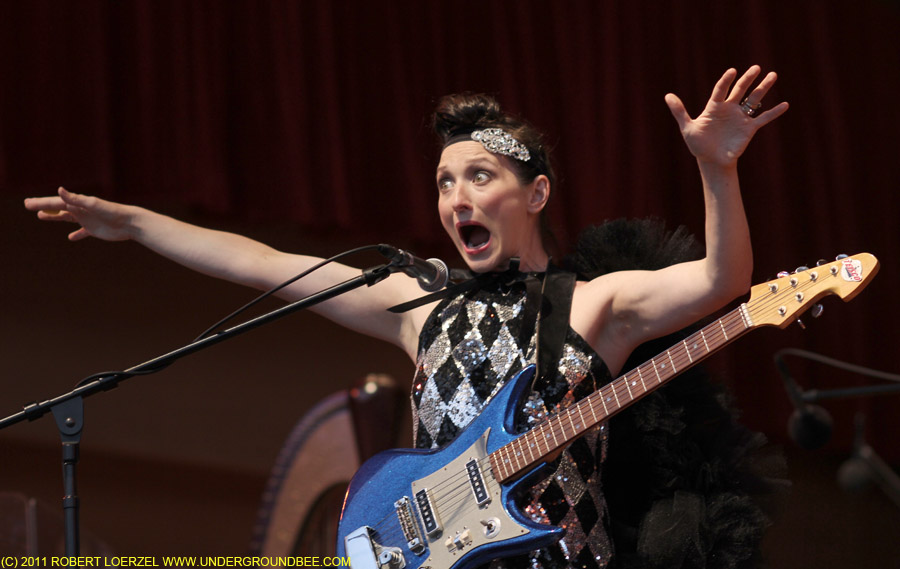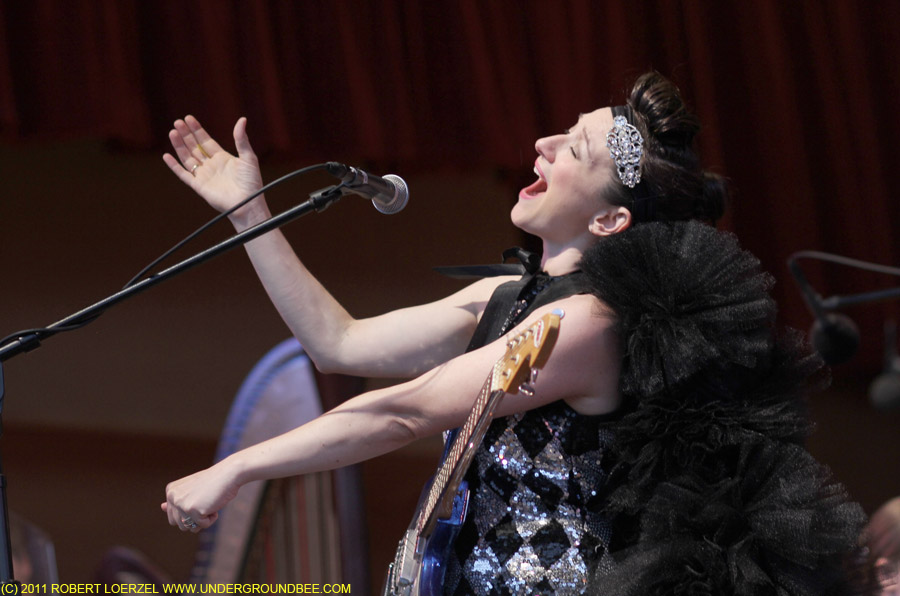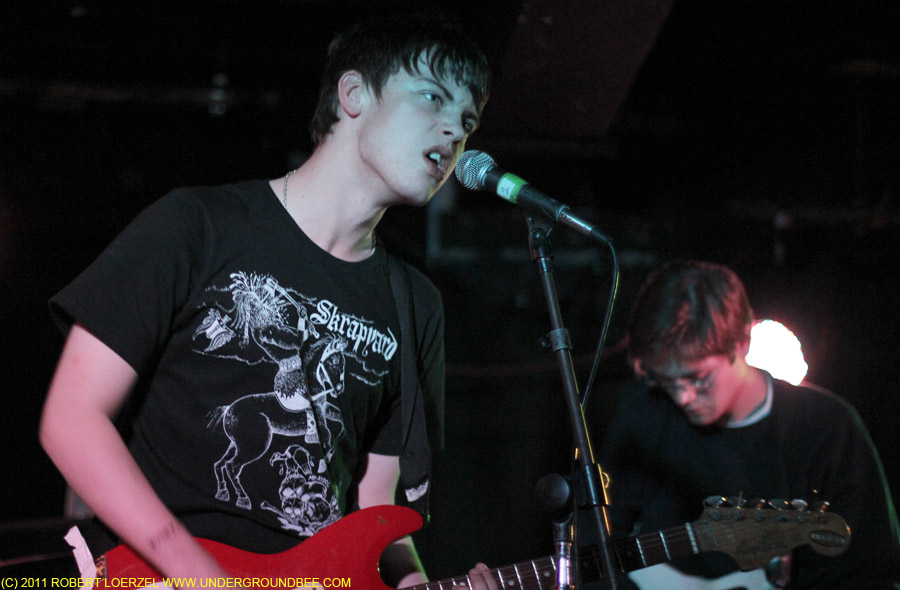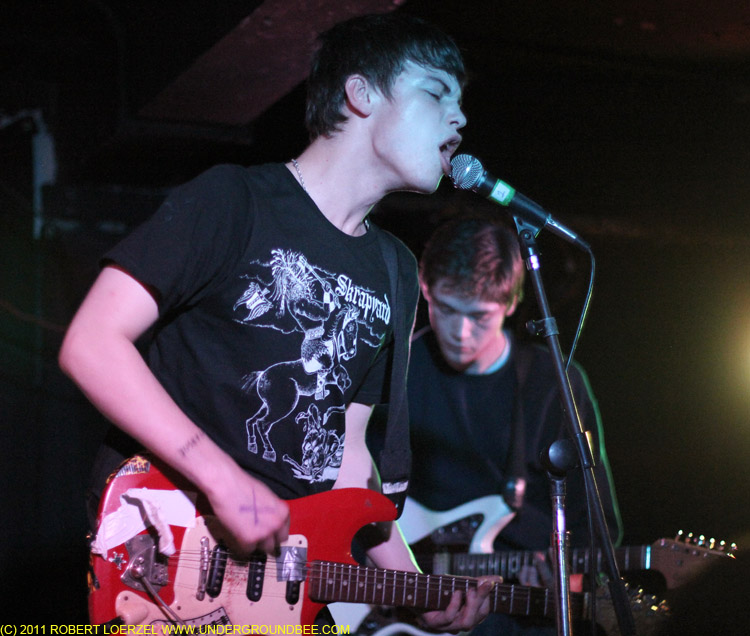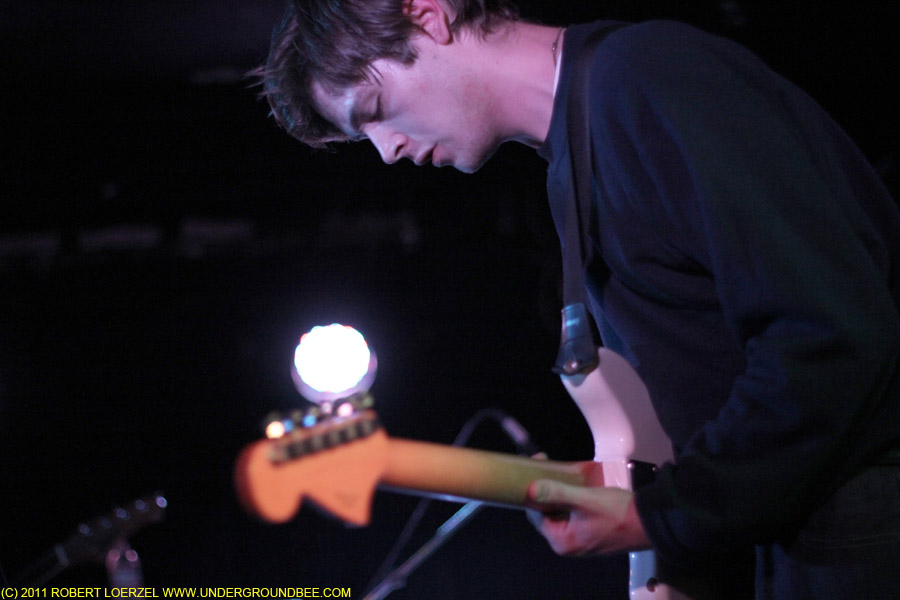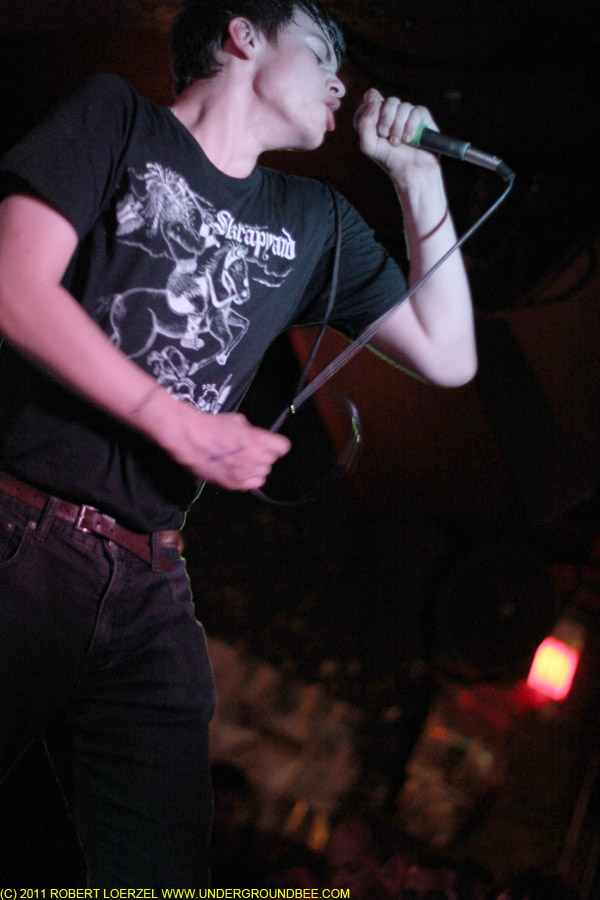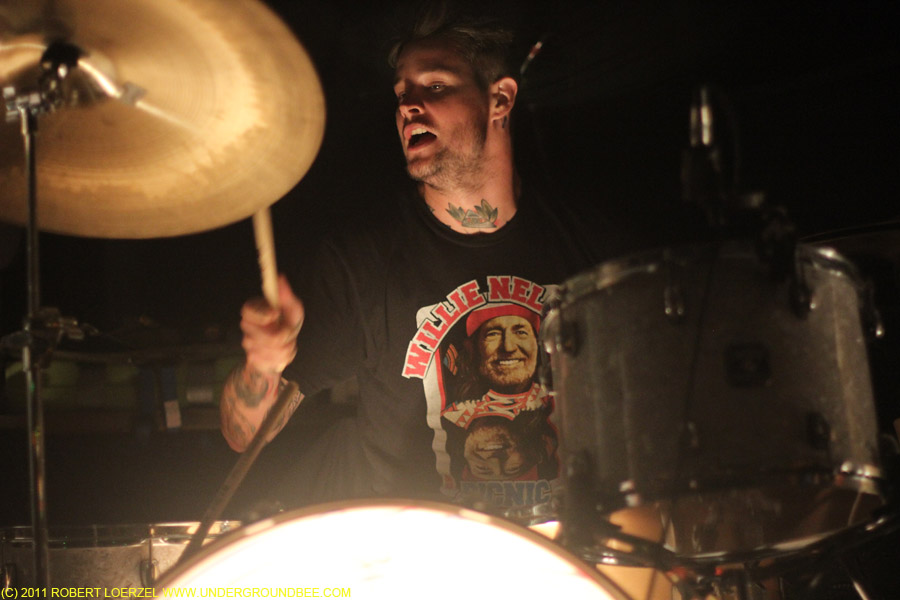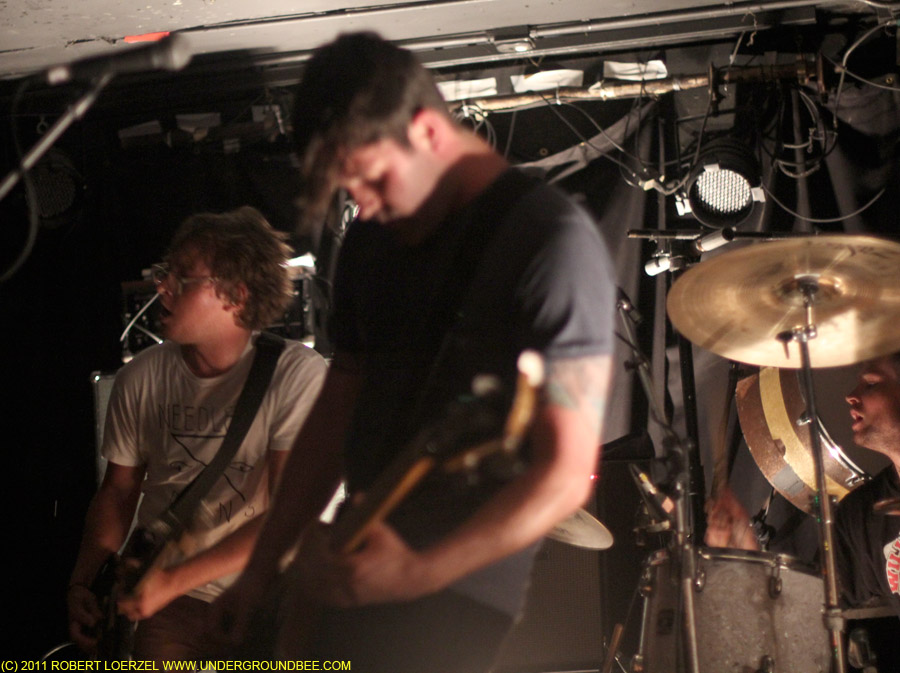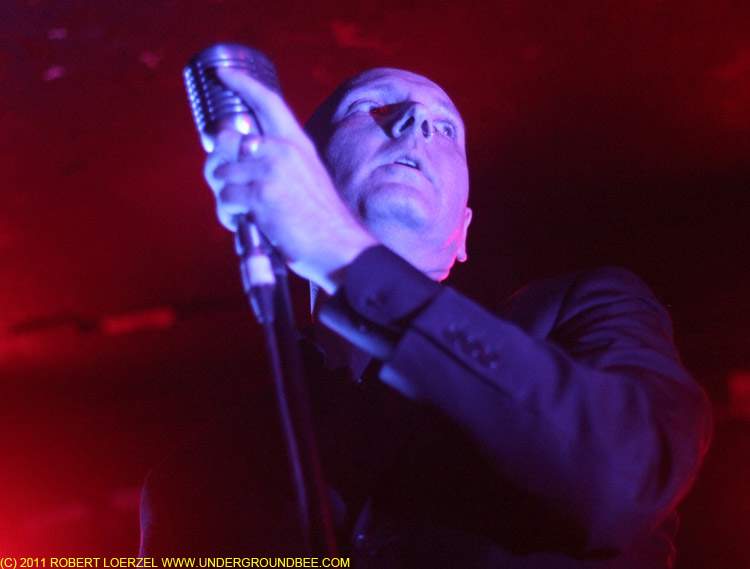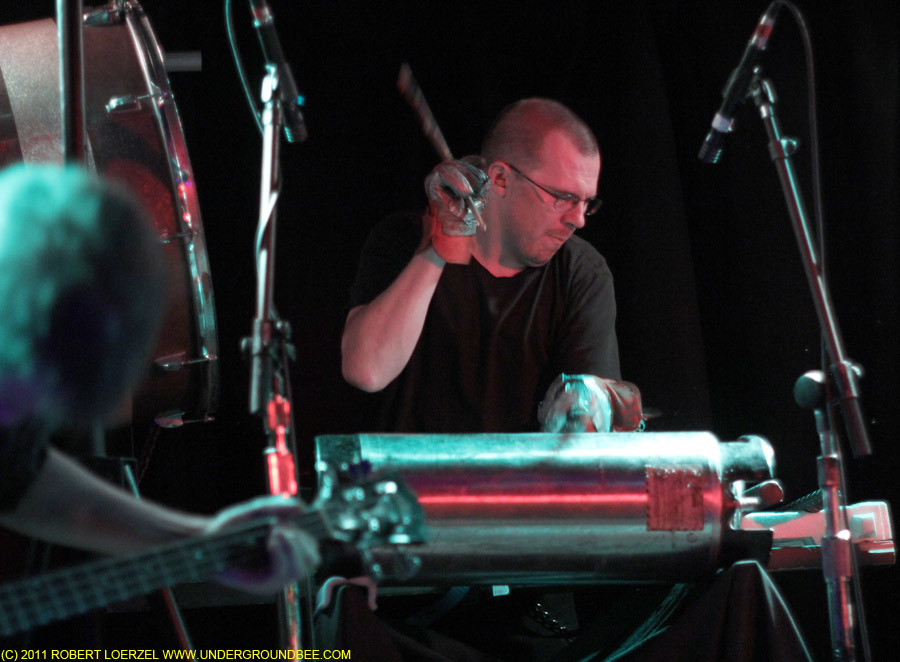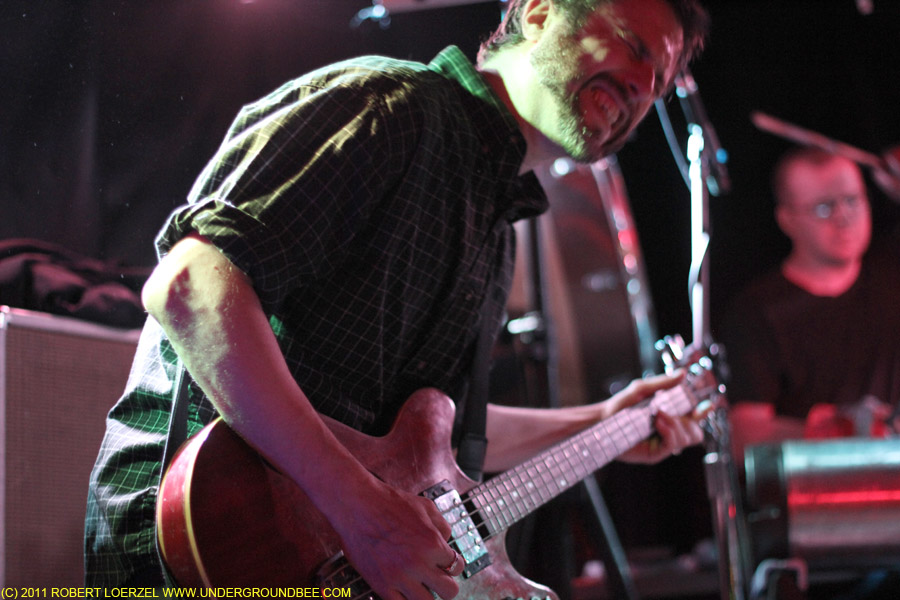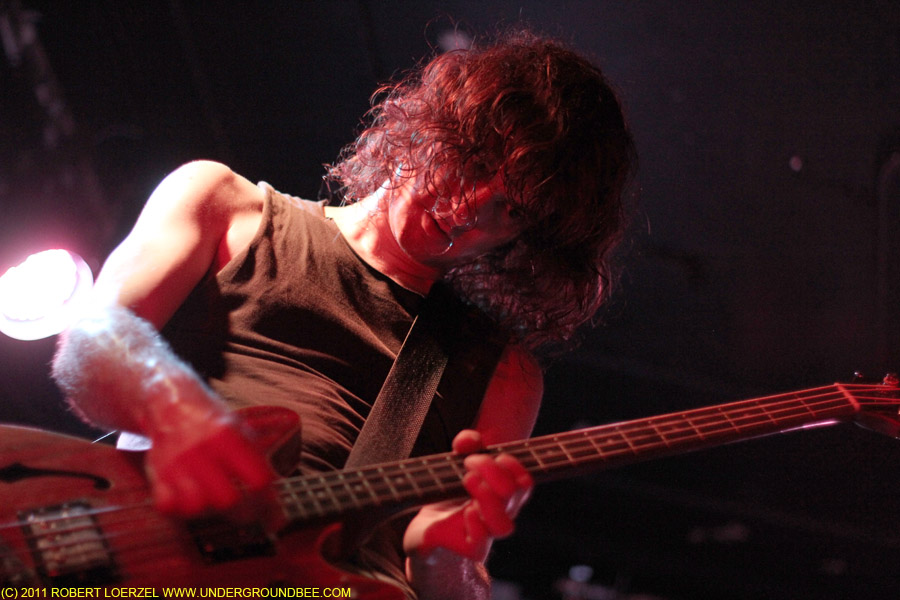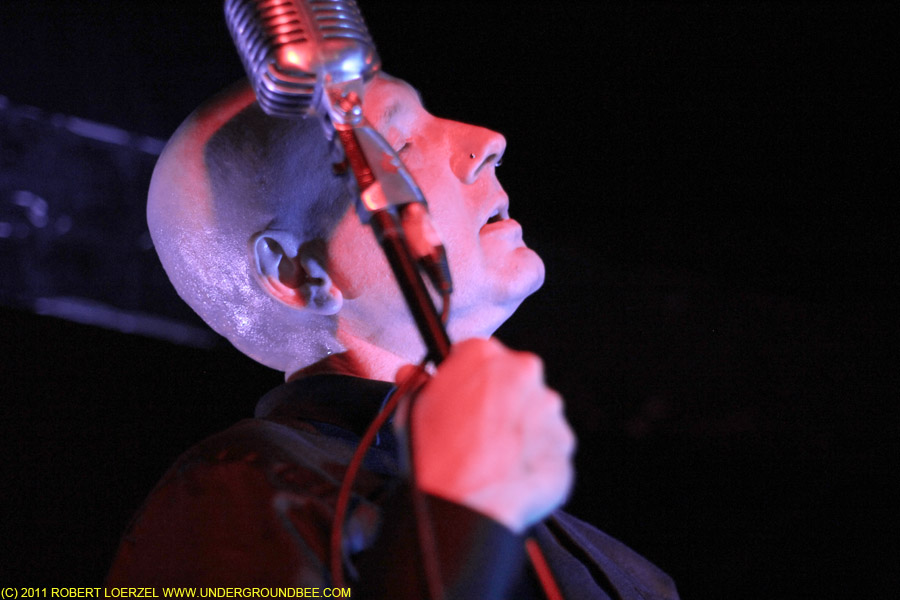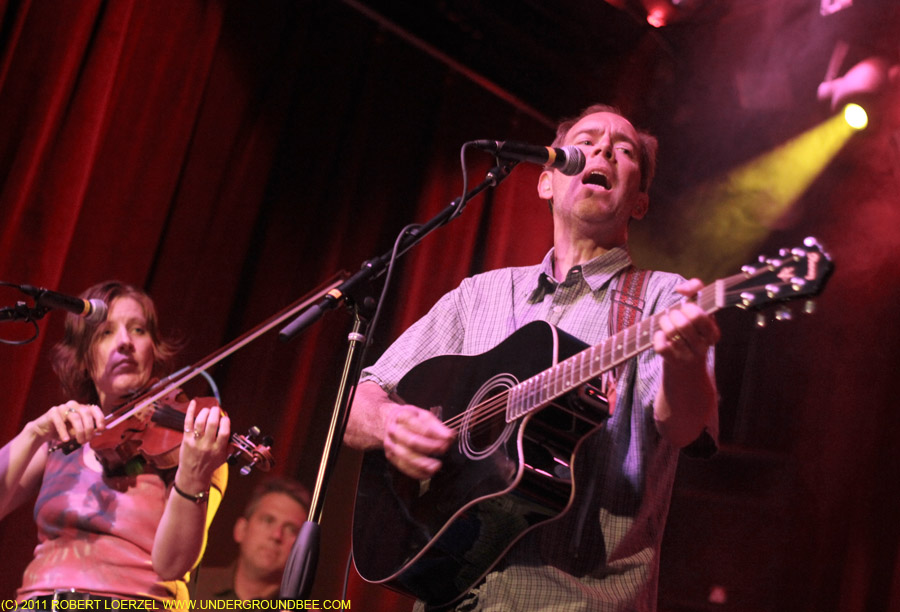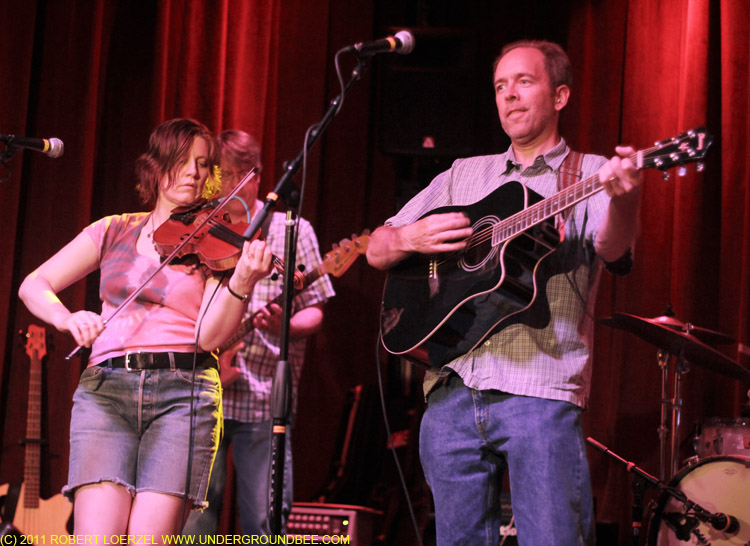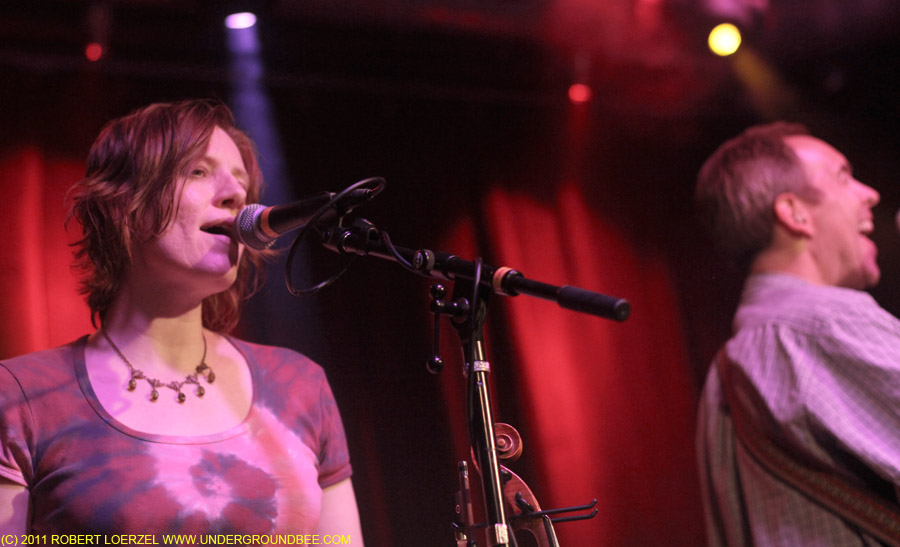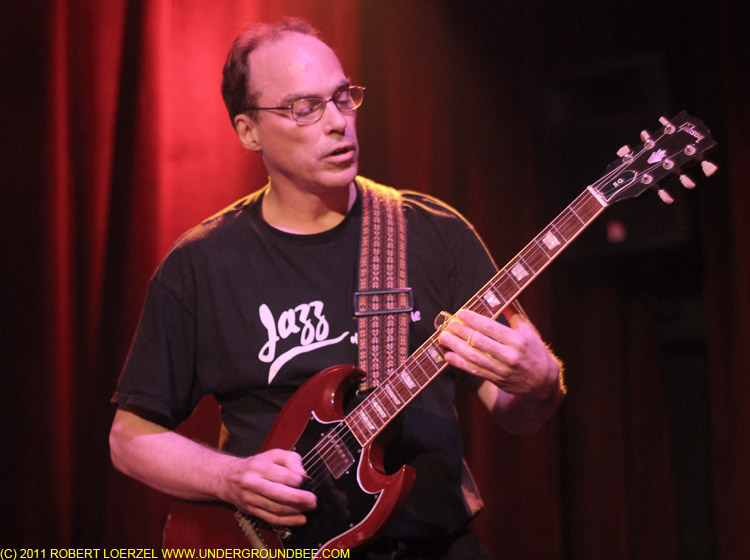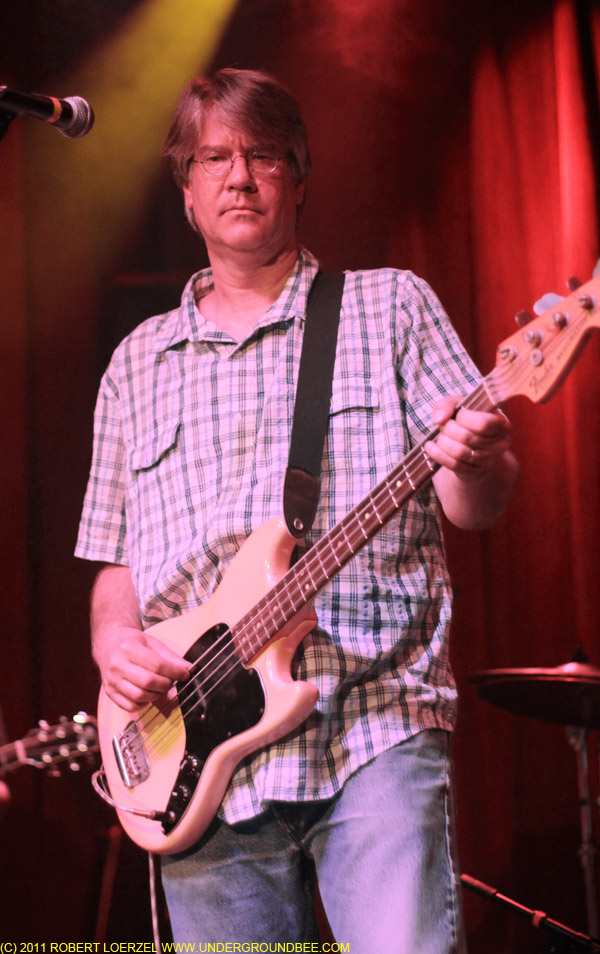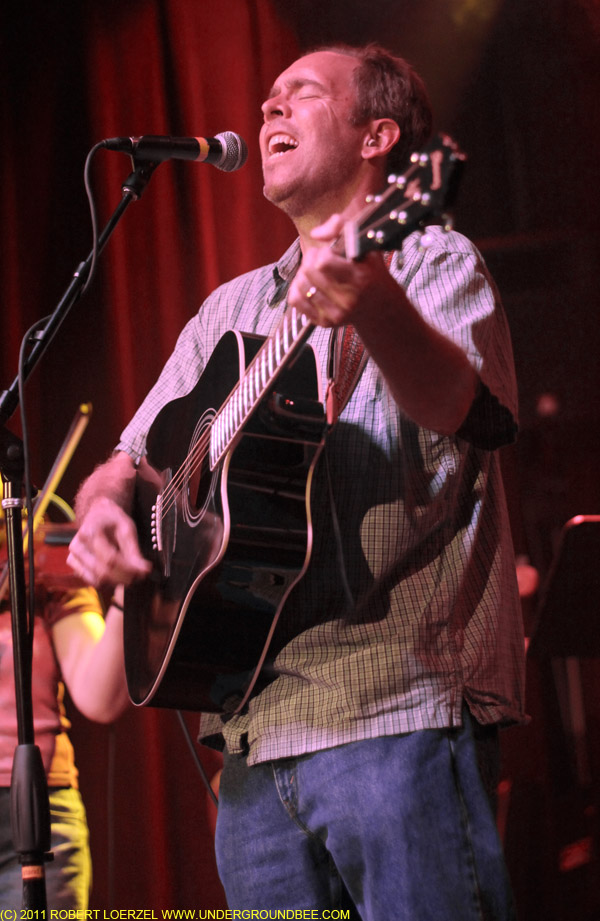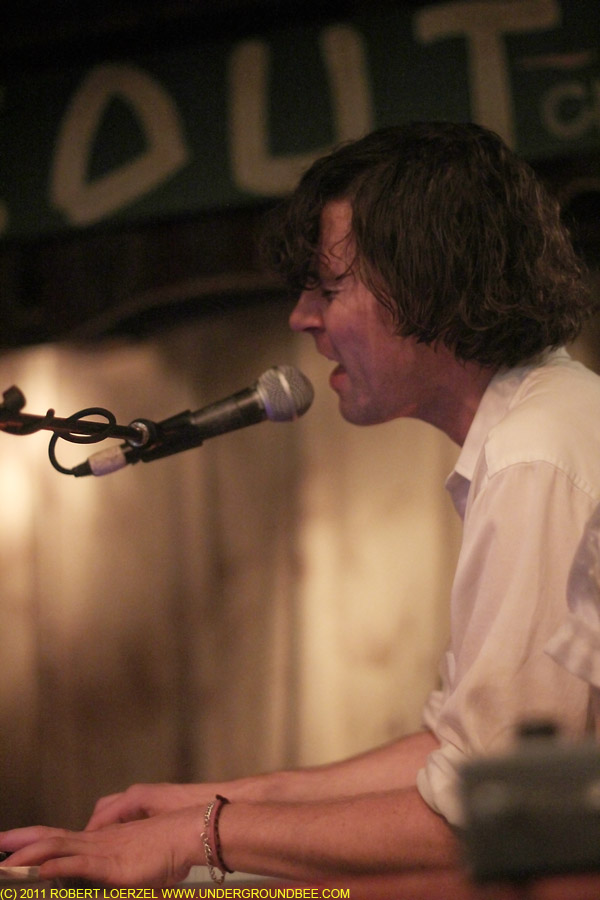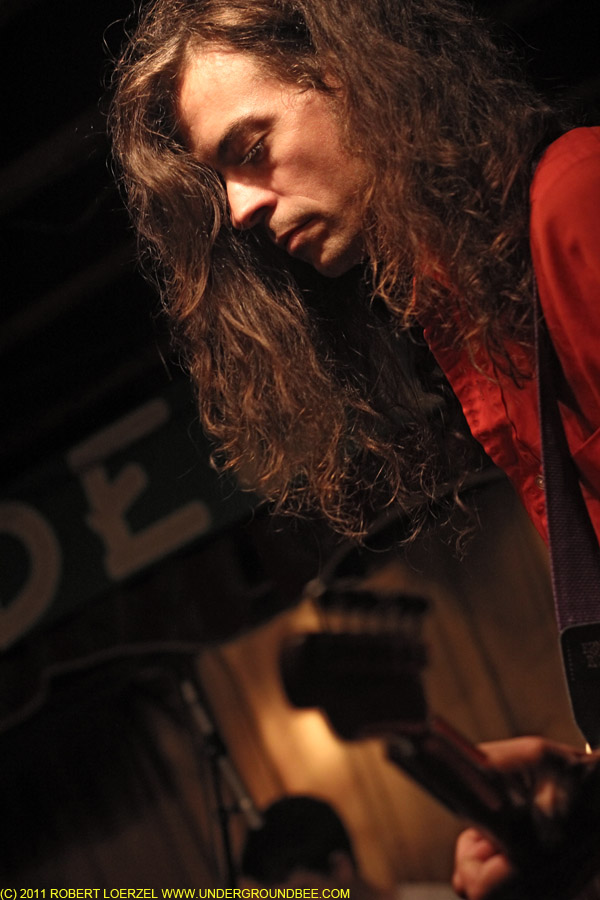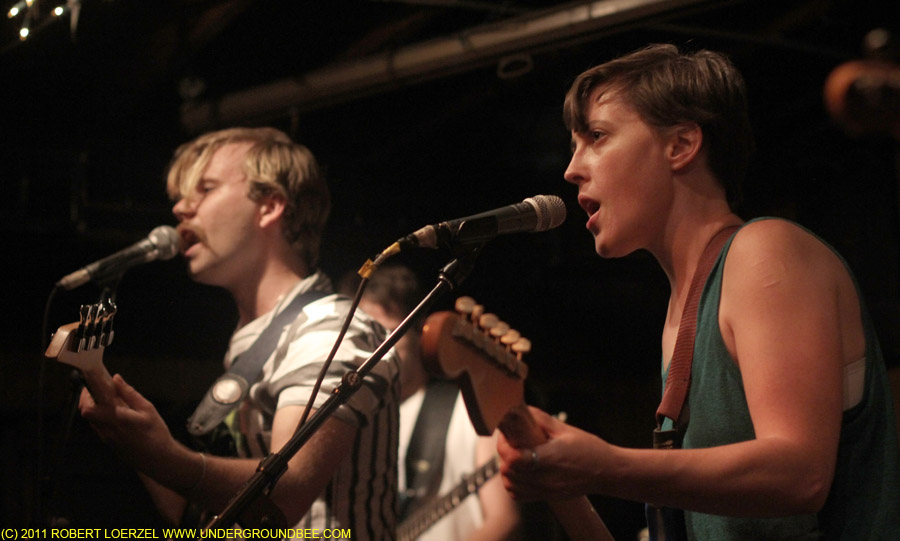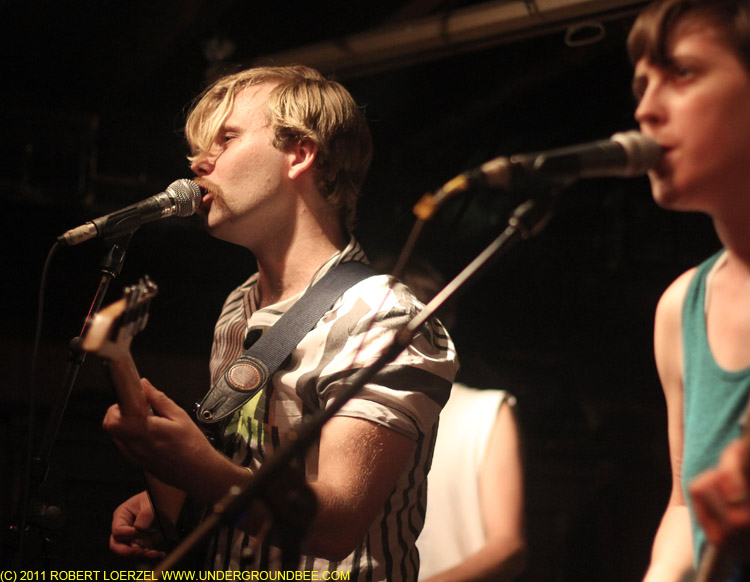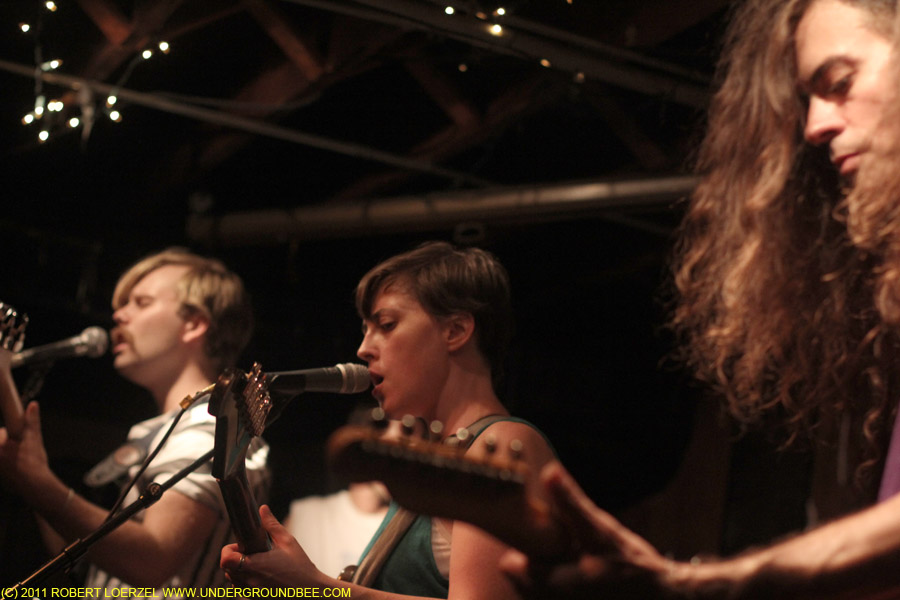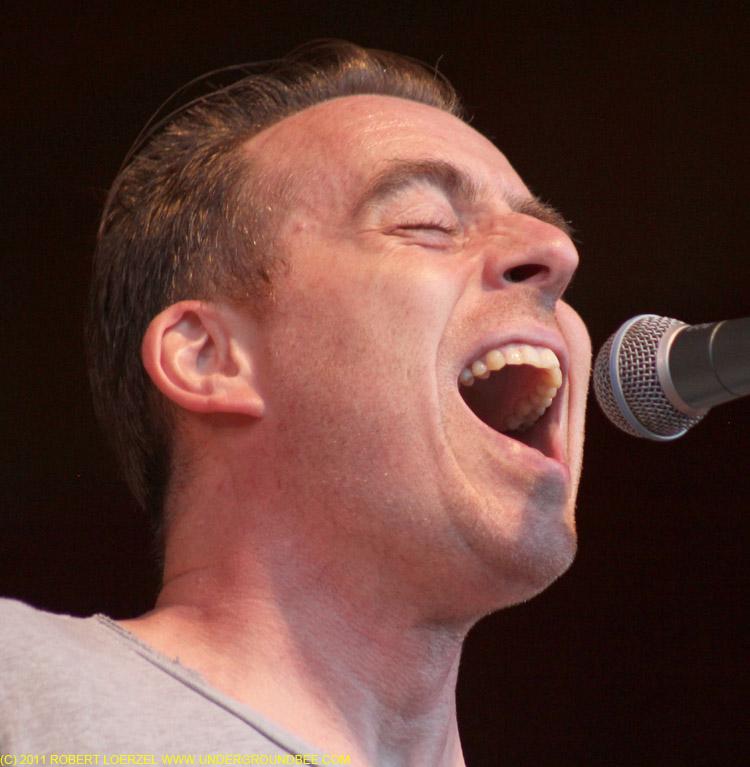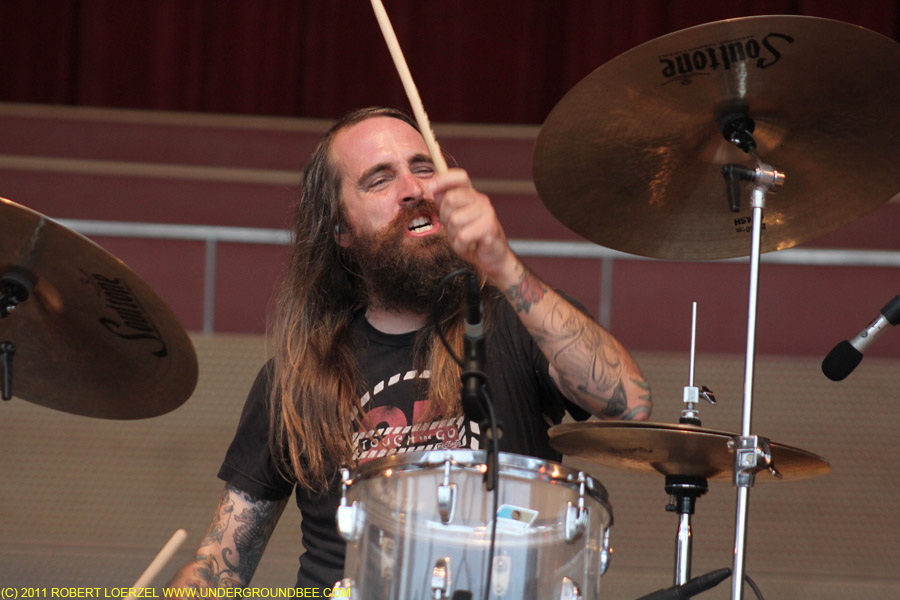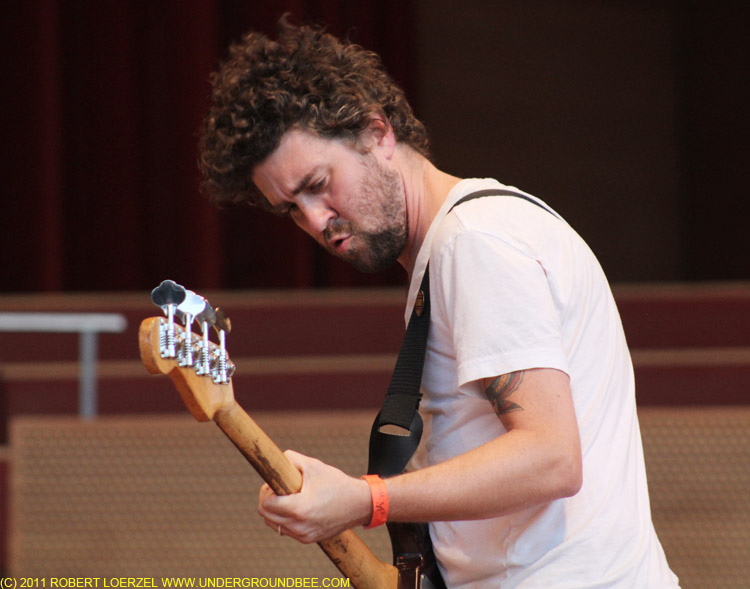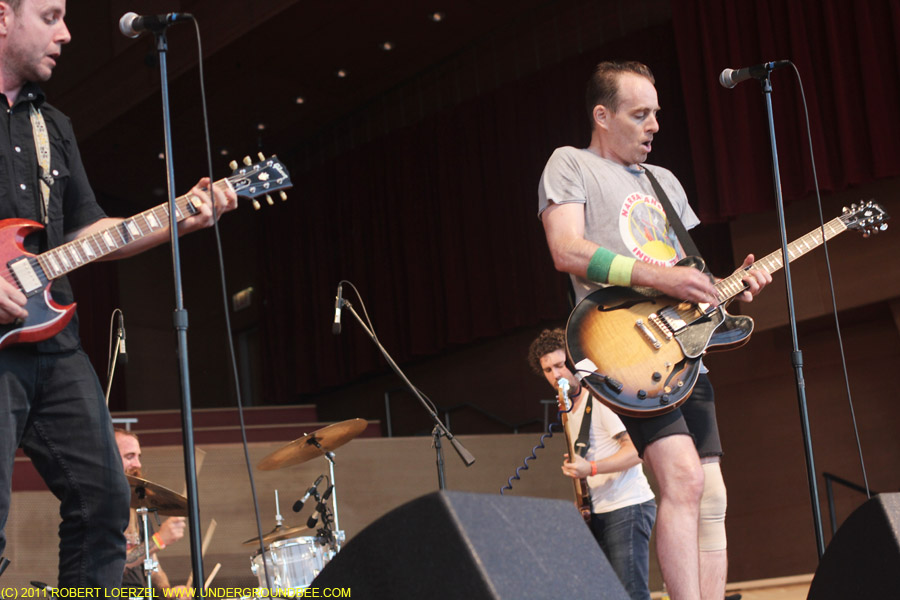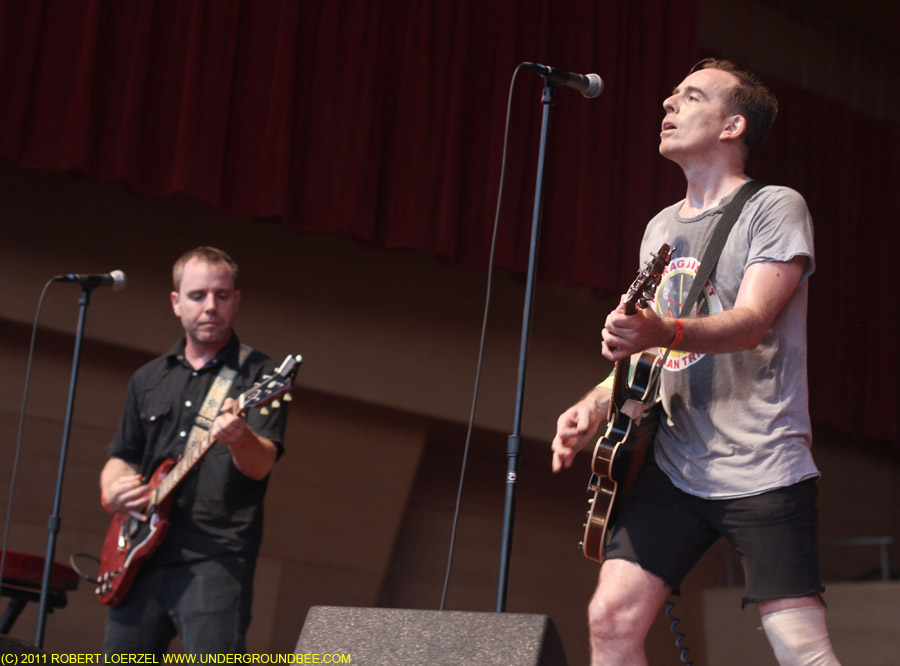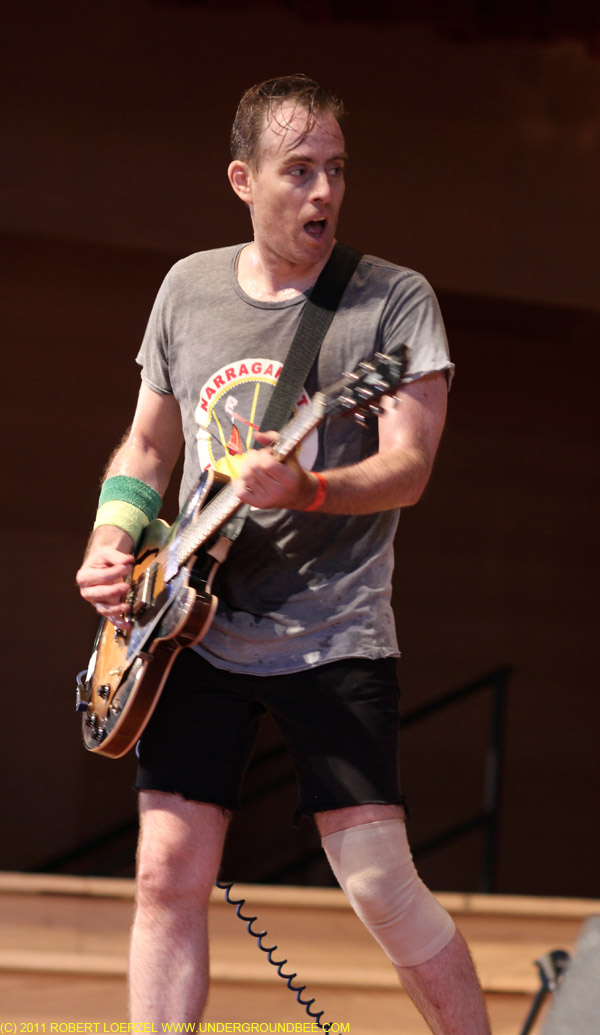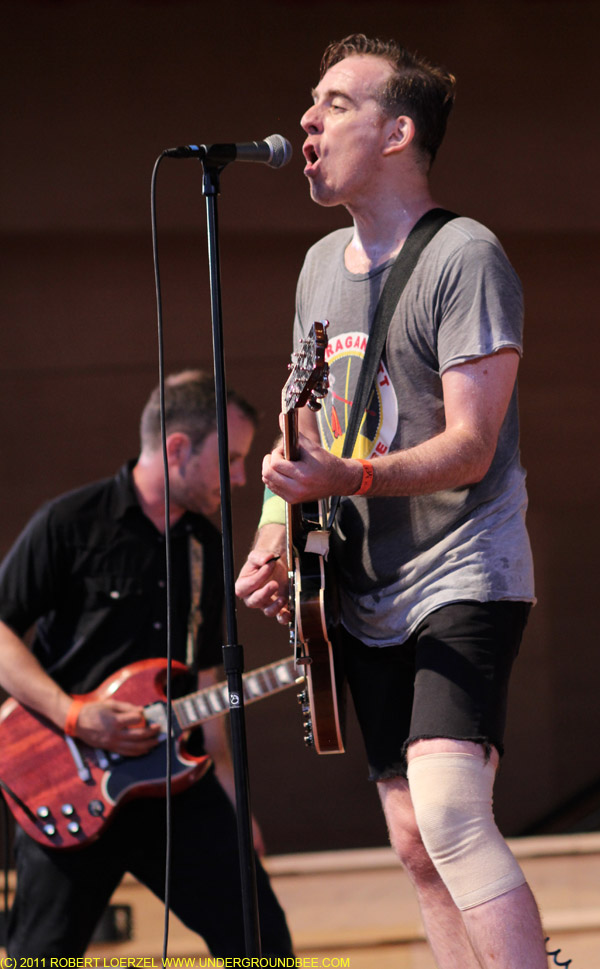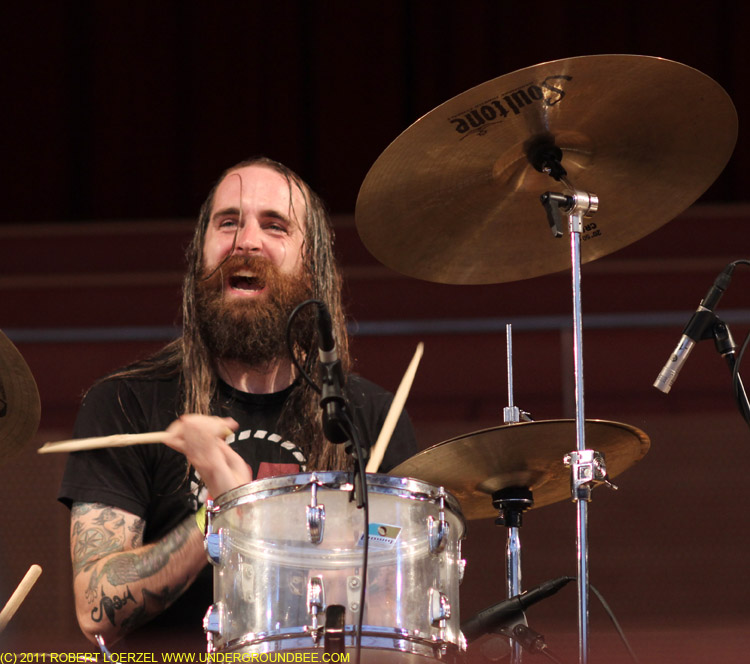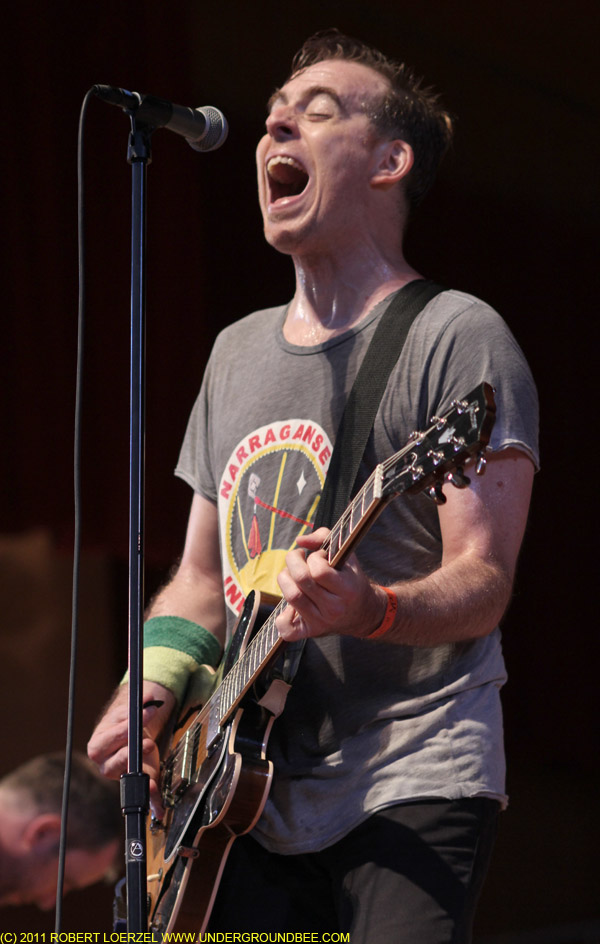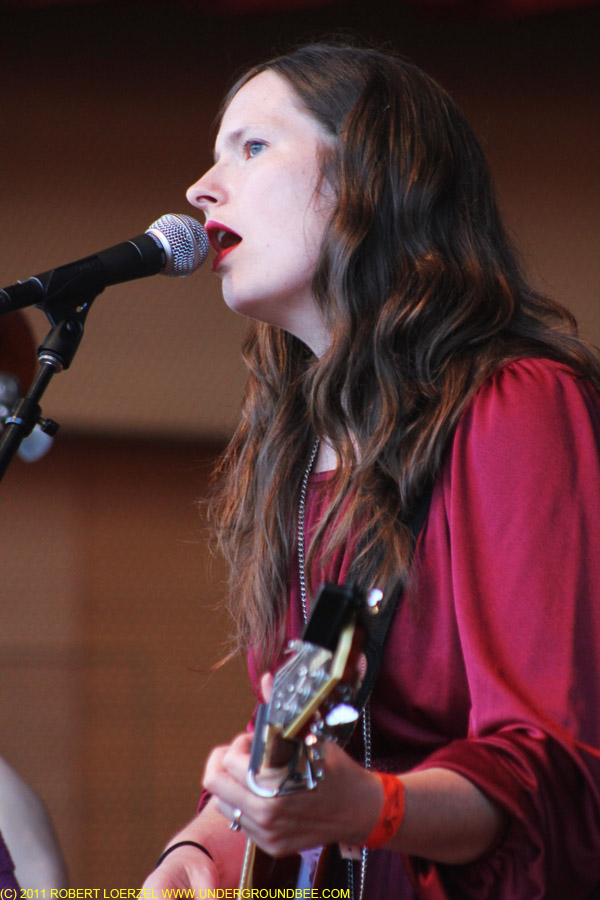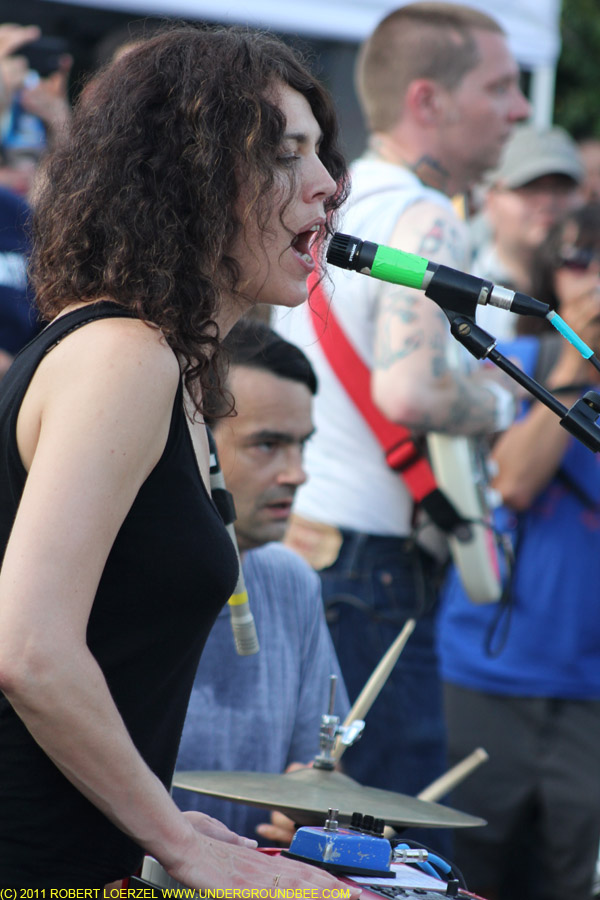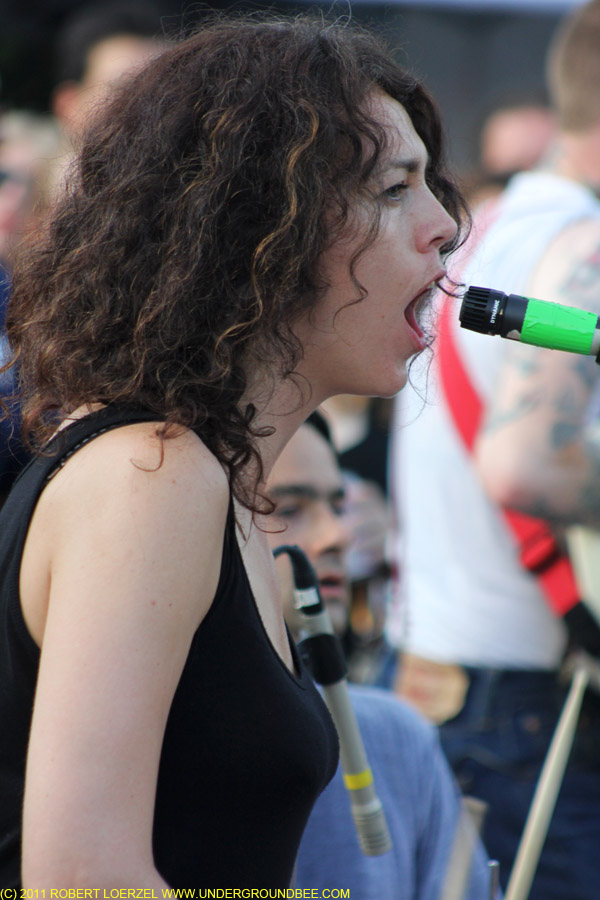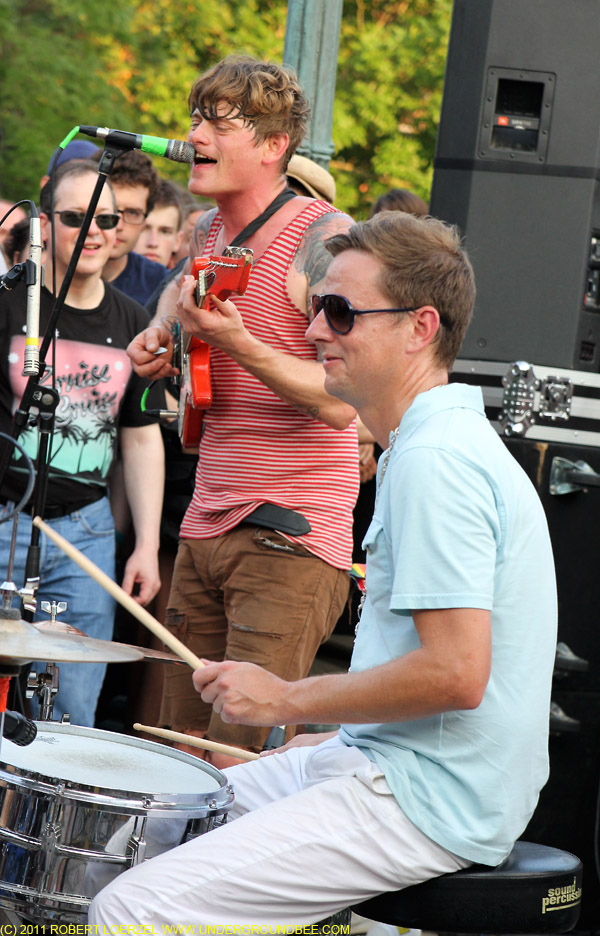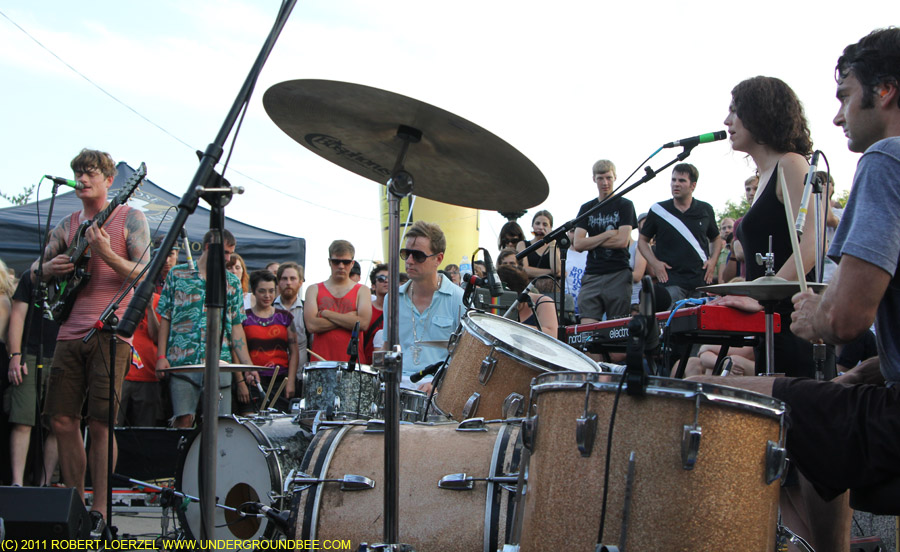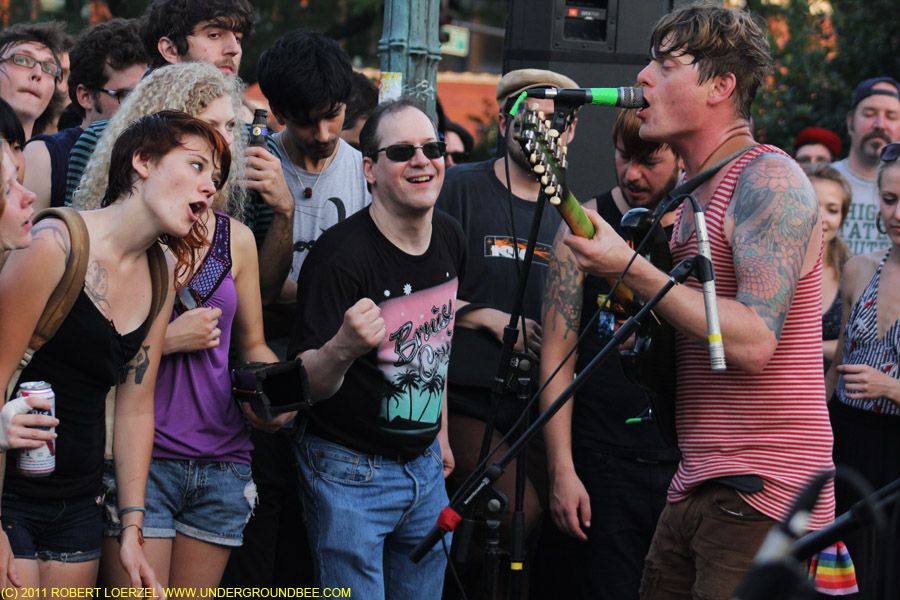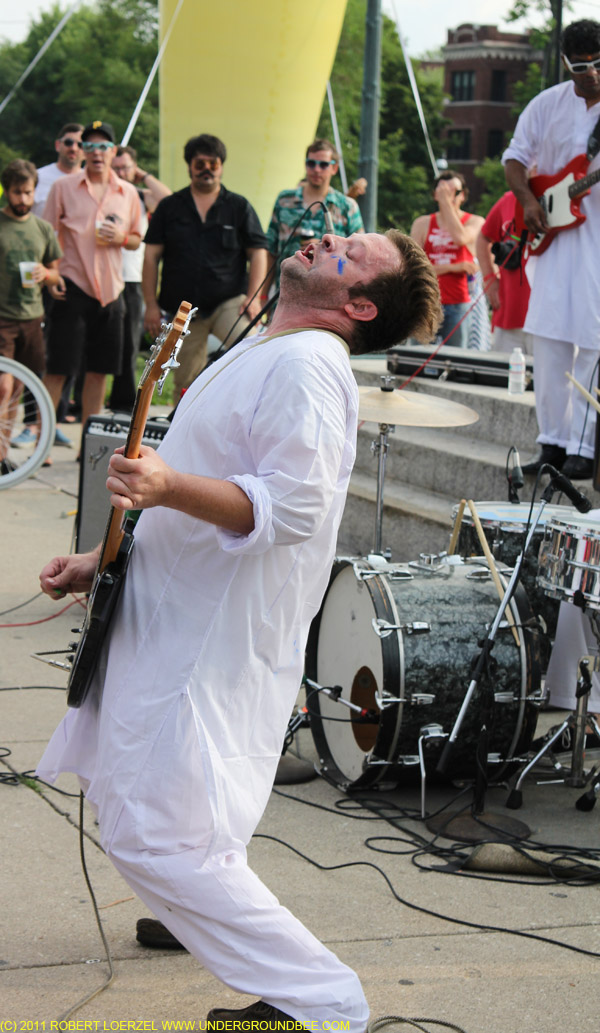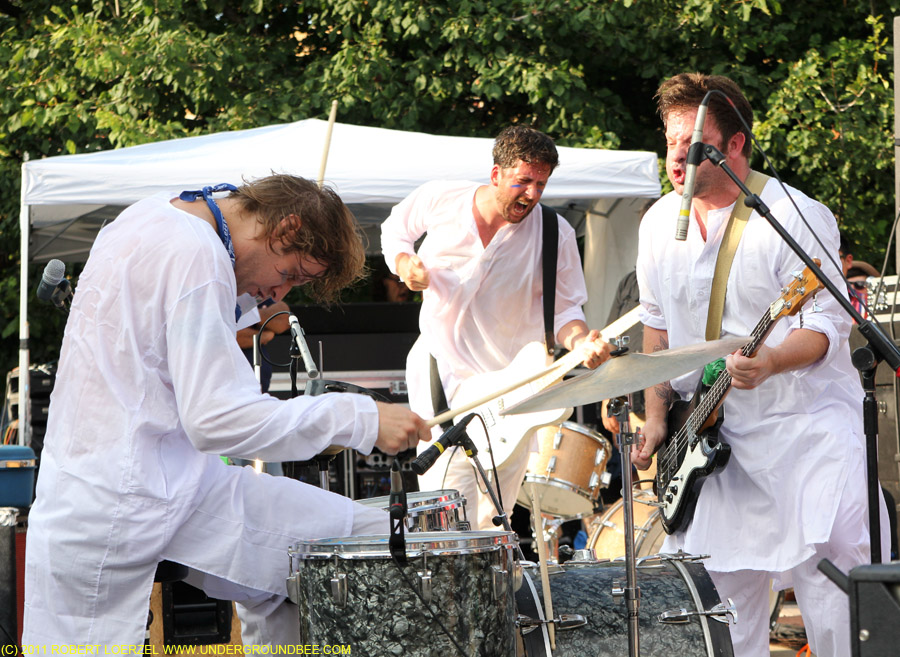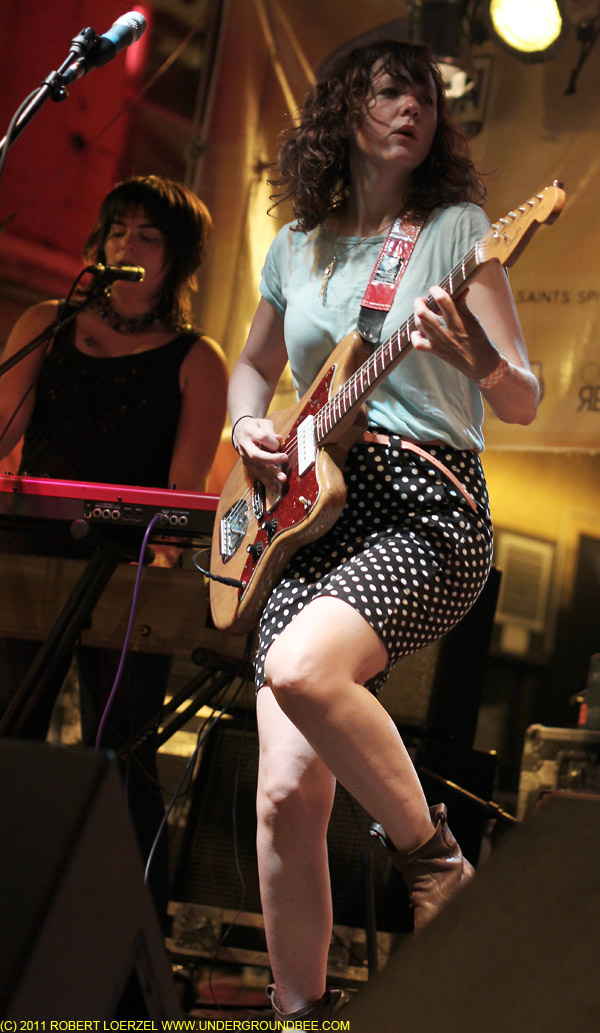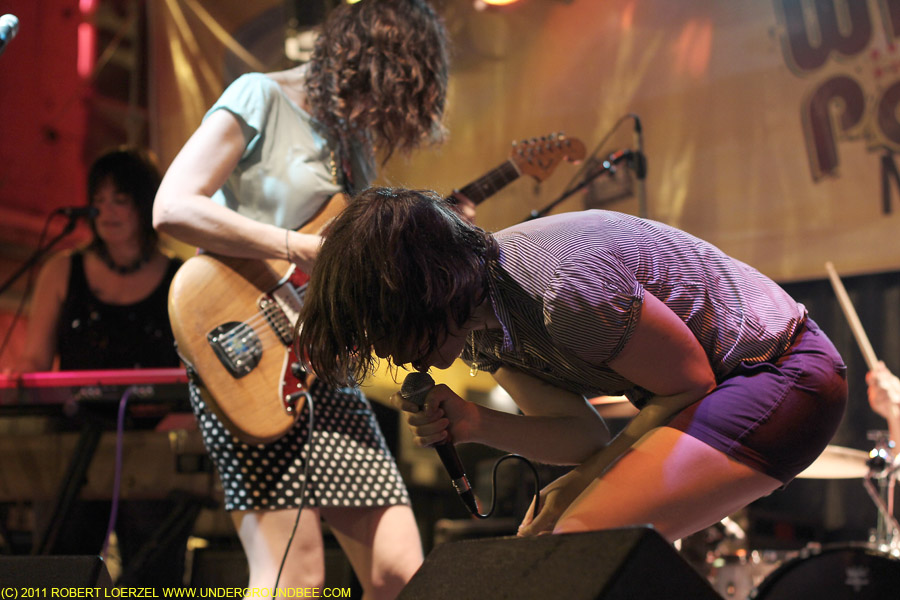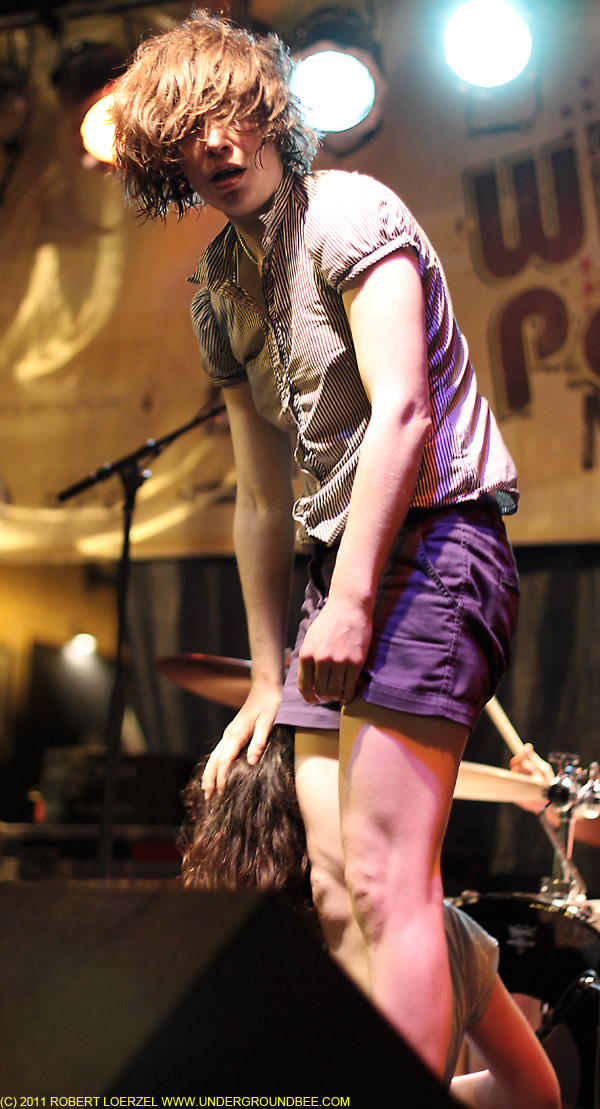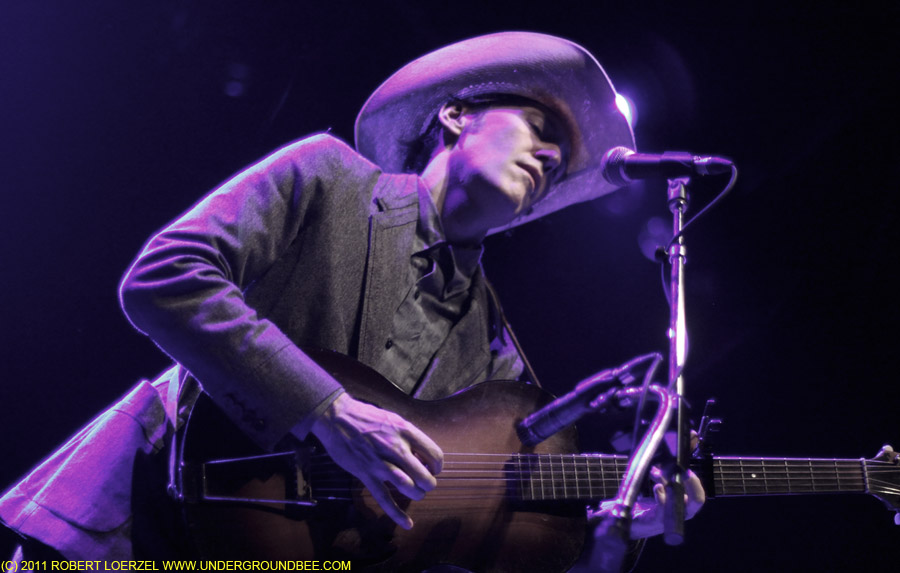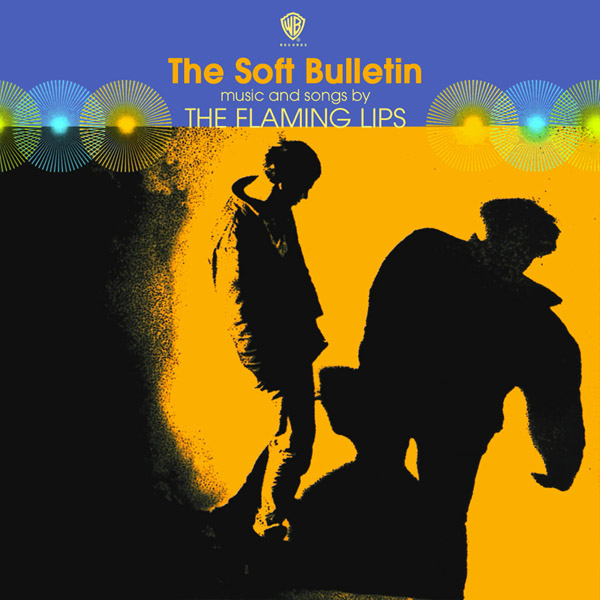The New York band Woods was back in Chicago last week (Dec. 10) at Subterranean, with what seemed to be a temporary change in its lineup. The band didn’t explain why, but the usual tape-effects guy and harmony singer, G. Lucas Crane, was absent. Matt Valentine, who is the “MV” half of the duo MV + EE, filled in for Crane, adding another guitar to some of the songs, while playing bits of harmonica and keyboards at other moments. It’s always hard to tell exactly what sounds Crane is adding to the mix as he hunches over his cassette tapes and sings into headphones. With his contributions absent, Woods’ sound was touch less psychedelic and more direct. Lead singer and guitarist Jeremy Earl’s stage demeanor was as low-key as usual, but he really let loose on some of the guitar solos, making for a hard-rocking set.
Wilco at the Riviera
Although I missed Wilco’s concert Monday at the Civic Opera House, the band’s website helpfully provides not just a set list, but also a pie chart showing how many songs Wilco played that night from each of its albums. From all reports, it was a pretty epic concert, and I sure wish I’d seen that encore with Nick Lowe and Mavis Staples teaming up with Wilco. The pie chart reveals that Wilco played songs from each of its albums except for the two Mermaid Avenue records, Wilco (The Album) and one of my favorites, A Ghost Is Born. One of my favorites, you may say with shock and amazement? Yes, although some folks slag that 2004 record, I insist it’s one of Wilco’s pinnacle achievements. The three studio albums since then have all been fine, with several great songs scattered across them, but they pale in comparison to Ghost and the few albums preceding it.
I did see Wilco’s second show in its five-concert Chicago run, Tuesday night’s (Dec. 13) gig at the Riveria, a venue that almost feels like home for Jeff Tweedy and his band. And this time, the band was in more of a Ghost Is Born mood. Shockingly, Wilco opened the show with “Less Than You Think” — the much-criticized Ghost track that meanders off into seemingly endless and tuneless electronic hum. (All that hum has never bothered me, but like everyone else I often skip past it; I think that was part of the idea.) In concert, the song began quietly, and the crowd hushed to hear Tweedy whispering the words into his microphone. The song dissolved into a drone that simulated the buzzing on the album, but with an actual beat pulsing through it. This was not a crowd-pleasing choice for an opening song, but Tweedy and his bandmates know just how fervent and devoted their fans are — and that some fans would appreciate or at least tolerate seeing the show begin with an unusual song.
The concert turned out to be an interesting and frequently surprising mix of songs from throughout Wilco’s huge and excellent catalogue. Wilco repeated only seven of the songs from the previous night’s show. Some regular concert favorites were omitted, such as “Jesus etc.” Some of the mellower recent songs weren’t all that exciting, but the band did a beautiful job of rendering them. This is one exceptional group of musicians, seemingly capable of playing anything. Is Wilco almost too good? At times, the band’s proficiency starts to sound like self-indulgent wankery, but just when I’m about to scoff at a guitar solo that goes slightly over the top, the band pulls off some subtle musical turn of phrase and I find myself surrendering to the experience.
Wilco continues to tinker with its old songs. Jarring outbursts of dissonance and drumming were layered on top of “Via Chicago,” somewhat awkwardly. “Reservations,” which started off the second encore, was more beautiful than ever, a lovely blend of Tweedy’s original acoustic version with the moody, atmospheric arrangement on Yankee Hotel Foxtrot. Just when it seemed like the concert was about to end, Wilco launched into its epic-length Ghost track, “Spiders (kidsmoke),” giving it a jazzier, funkier groove than past renditions, and giving Tweedy a chance to scrape out skronky solos on the electric guitar. (Nels Cline is Wilco’s resident guitar whiz, but I’d like to hear more of Tweedy’s rough-hewn solos.) Improbably, the song featured an audience clap-along before finally returning to its signature power chord riff. And then Wilco extended its marathon with one more track, not shown on the set list, “I’m a Wheel.” It felt like the band could play until morning, but Tweedy and the guys finally called it a night.
The evening started off with a strong opening set by Eleventh Dream Day, who have added Jim Elkington of the Zincs as a second guitarist. The five-piece lineup gave Rick Rizzo more space to play, and it bodes well for the future of this band with a long and illustrious past.
WILCO SET LIST: Less Than You Think / Art of Almost / I Might / Black Moon / Bull Black Nova / Side With the Seeds / Red-Eyed and Blue / I Got You (At the End of the Century) / Born Alone / You Are My Face / Open Mind / Kamera / I Must Be High / Always in Love / Capitol City / Handshake Drugs / Can’t Stand It / Dawned on Me / Hummingbird / ENCORE 1: Via Chicago / Whole Love / Late Greats / Walken / Just a Kid / Monday / Outta Mind (Outta Sight) / ENCORE 2: Reservations / Spiders (kidsmoke) / I’m a Wheel
Rocket From the Tombs at the Empty Bottle
This is one of the most unlikely reunions in the long history of rock ‘n’ roll reunions. Rocket From the Tombs was a short-lived protopunk band in Cleveland in 1975 that broke up before releasing a record. Barely anyone heard Rocket From the Tombs, and barely anyone had heard of them. But the former members of Rocket formed a couple of other famous bands, Pere Ubu and the Dead Boys. And some of the early songs they played with those bands had actually begun as Rocket From the Tombs tunes.
All of this was an interesting but obscure footnote in rock history until Smog Veil Records released the band’s long-forgotten rehearsal tapes and some live recordings in 2003. Rocket From the Tombs reunited, with legendary Television guitarist Richard Lloyd taking over for the late Peter Laughner. In 2004, the new lineup of the band finally recorded studio versions of those songs from three decades earlier. And most of us figured that was the end of that.
But Rocket From the Tombs reconvened this year, releasing an unexpected album of new songs, Bar Fly, and heading out on tour once again, including a stop Wednesday night (Dec. 7) at the Empty Bottle in Chicago. The current roster comprises David Thomas, Cheetah Chrome, Craig Bell, Steve Mehlman and Richard Lloyd. The show got started with strong opening sets of power pop by Warm Ones and reverb-drenched psychedelic noise rock by Plastic Crimewave Sound.
Pere Ubu’s mad genius weirdo, Thomas, sings most of RFTT’s songs, too, and he dominated the center of the stage, standing mostly still in a long trench coat. “Punk rock,” he grumbled at the start of the show, as he took out his reading glasses and began peering at lyrics sheets. Thomas can get cantankerous, and he showed a bit of that crankiness Wednesday, cutting off one song when he was unhappy with the shaky start it got from the band, insisting that the band forget playing it altogether. Despite that moment, there were only a few times when RFTT sounded rusty. More often, the band cranked out great guitar riffs, sounding like Pere Ubu’s punk-rock cousins. The new songs were good, but it was the old classics that the crowd really wanted to hear, and RFTT delivered, with strong renditions of “Amphetamine,” “30 Seconds Over Tokyo” and “Sonic Reducer.”
Karkwa at Schubas
The sparse attendance Tuesday night (Dec. 6) at Schubas confirmed my suspicion that few Americans know anything about the French-Canadian rock band Karkwa — despite the fact that the group won Canada’s prestigious Polaris Music Prize in 2010 for its fourth album, Les Chemins de verre. (Previous winners: Final Fantasy, Patrick Watson, Caribou and Fucked Up.)
About 40 people showed up to hear the band at Schubas, and singer-guitarist Louis-Jean Cormier sounded almost apologetic as he explained that he was about to — gasp! — sing lyrics in French. The fans in attendance clearly didn’t mind, of course. Karkwa’s art rock sounded even better in live performance than it does on record, with sophisticated but not overly fussy layers of guitar, keyboard and percussion that sounded a bit like early Radiohead at times. When the band returned to the stage for an encore, at the insistence of the crowd, Cormier seemed surprised to hear a few people calling out requests for songs. Yes, there are at least a few Americans who’ve caught onto Karkwa.
myspace.com/Karkwa
karkwa.com
M. Ward at Schubas
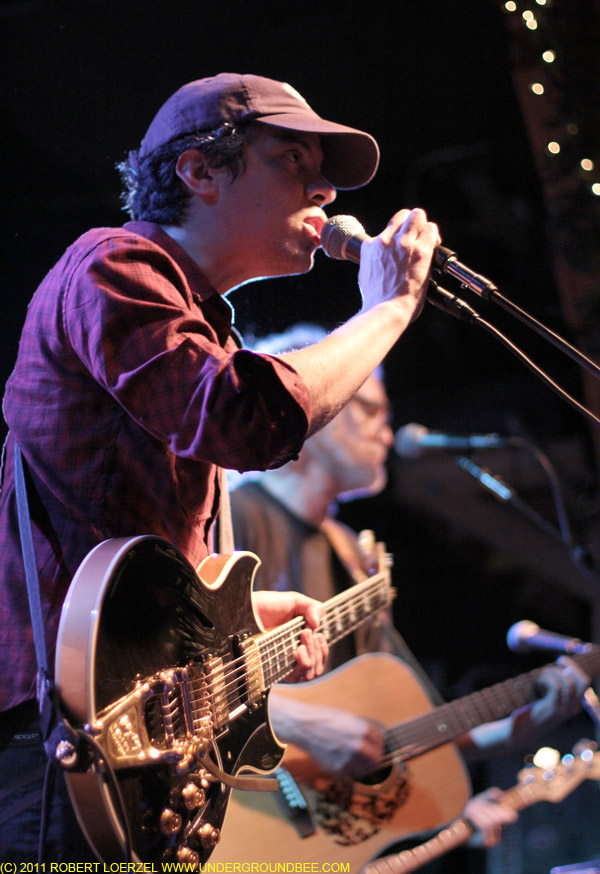
One of the first times I saw M. Ward perform in concert was at Schubas. It was Feb. 25, 2005, and the opening acts included a band almost no one had heard of called Dr. Dog. Both performers have since gained considerable fame and acclaim, and gone on to play much bigger venues. So it was a real treat to see M. Ward back at Schubas on Sunday night (Dec. 4). Chicago got lucky with this gig. Ward played a charity gig in the Quad Cities, and played this one additional show, calling it his “Rock Island Line” tour.
One thing that made it special was the opening set, which featured longtime Ward sideman Mike Coykendall along with their mutual friend, singer-songwriter Carlos Forster. Forster has a new record out, Family Trees, which was recorded by Coykendall and produced by Ward, with Ward signing a duet with Forster on the song “Campfire Songs.” Coykendall and Forster are both nice singers in their own right, and they were joined by Ward for a few songs, giving the whole thing the feeling of a basement jam session by old friends.
That vibe carried on during the main set. As in many past gigs, Ward wore a hat, almost seeming to hide his eyes as he performed. As always, Ward’s guitar playing was excellent, showing his virtuosity without showing it off, and he casually reached over to plink a few notes on the piano at times. Along with Coykendall, the band included drummer Scott McPherson and Nashville pedal steel player/multi-instrumentalist Chris Scruggs. The superb but too short set (barely more than an hour) ranged from hushed acoustic folk to rollicking, old-style rock ‘n’ roll. Ward didn’t say anything about the first song he played, but it was a Howlin’ Wolf cover — maybe a tribute to Wolf’s guitarist, Hubert Sumlin, who had died earlier in the day?
SET LIST: Howlin’ for My Darlin’ (Howlin’ Wolf cover) / Poison Cup / Post-War / Chinese Translation / Paul’s Song / Vincent O’Brien / Cosmopolitan Pap / Fisher of Men / Bean Vine Blues #2 (John Fahey cover) / Whole Lotta Losin’ (Monsters of Folk song) / Rock Island Line (folk song cover) / Roll Over Beethoven (Chuck Berry cover) / ENCORE: Magic Trick / Campfire Songs (Carlos Forster vocals) / We All Gotta Go (Mike Coykendall vocals) / Never Had Nobody Like You / ENCORE 2: 100 Million Years (Ward solo acoustic)
Mannequin Men and Vee Dee
The two Chicago bands playing at the Hideout Saturday night have been around for a few years, but they’ve both just released self-titled records. Does putting out a self-titled record imply that this is the one that defines your sound? Maybe, maybe not. But for both of these bands, Mannequin Men and Vee Dee, these 2011 albums are good starting points for anyone who wants to get familiar with what they’re doing. And both bands rocked pretty hard on Saturday night. Vee Dee’s label, BLVD, describes its music as “scuzz rock.” There’s a good amount of riffing ’70s hard rock, verging on heavy metal, in this trio’s sound, mixed up with garage, punk, glam and, yeah, scuzz.
The Mannequin Men have been playing catchy garage rock (or post-punk or what have you) with deliciously sneering vocals over the course of three albums now, and the new self-titled one is their best set of melodies and riffs so far. There’s even a touch of wistfulness amid the bratty snarling — just a touch. Singer-guitarist Kevin Richard sings lead on most of the songs, but the band’s secret weapon is drummer Seth Bohn, who handled the main vocals on a few of the best tunes Saturday night. The guys sounded loose but never sloppy (it’s a fine line), nailing the riffs when they needed to be nailed.
Thee Oh Sees at the Empty Bottle
California’s Thee Oh Sees are one of the best live rock bands at this moment. After delivering strong performances last year at Lincoln Hall and this summer at the Illinois Centennial Monument, Thee Oh Sees were back in Chicago for a couple of shows at the Empty Bottle on Wednesday night (Nov. 23) — and the late show may be the strongest set I’ve seen by them yet.
The prolific band just realized its second album of 2011, Carrion Crawler/The Dream, which was originally conceived as two EPs. Like the group’s live shows, the record is bursting with energy, sounding more intense than the last Thee Oh Sees record, Castlemania. But as well as this great new recording captures the live passion of the band, it’s still no match for seeing Thee Oh Sees on a stage. Somehow, Thee Oh Sees manage to make everything sound like it’s turned up and sped up a notch beyond expectations.
Leader John Dwyer and guitarist Petey Dammit both hold their guitars up high; Dwyer keeps his instrument unusually close to his face as he sings in spooky harmony with keyboardist Brigid Dawson. Practically every line of every song featured Dwyer and Dawson intertwining their voices, giving the’60s-garage-rock flavored tunes a somewhat ethereal mood, even as the two drummers, Mike Shoun and Lars Finberg, unrelentingly pushed the beat forward.
The opening sets by Paul Cary and Total Control were good, but it was the fantastic, charged music of Thee Oh Sees that sent the crowd into a writhing frenzy.
Ray Davies at the Chicago Theatre
Belatedly catching up now on something I intended to blog about earlier…
The legendary Kinks frontman and one of the all-time great rock songwriters, Ray Davies, performed a pretty delightful concert Nov. 11 at the Chicago Theatre. His new record, See My Friends, is one of those concept duet albums, featuring various stars singing or performing together with Davies on classic Kinks songs. Thankfully, the concert was just Davies and his backup musicians.
The show began with Davies playing eight and a half songs in mostly acoustic versions, backed by guitarist Bill Shanley. This intimate section of the show was really the high point of the night for me, packed with fantastic songs such as “Waterloo Sunset.” The half song was “Victoria,” which led into Davies reading a short bit of his autobiography, which led into “20th Century Man” as the full band took the stage. Davies’ band this time was The 88, who did a good job of sounding like the Kinks, keeping things a little bit loose as they nimbly responded to Davies’ occasional pauses to banter in the middle of songs. The 88 also played a nice opening set of somewhat Kinks-esque pop-rock songs.
As much as I enjoy hearing Davies talk about his songs and make jokes, at times his banter awkwardly interrupted the music. When Davies and his band ripped into the more rocking numbers, such as “You Really Got Me,” this 67-year-old Davies bounced around the stage like a much younger man.
Davies jested that he would fine himself $5 every time he mentioned the Kinks, but in truth, this show was essentially Davies doing a Kinks concert without the rest of the Kinks. He played only one of his recent solo songs (“Imaginary Man”), instead performing an excellent cross-section of the Kinks’ vast catalogue. At one point, someone in the crowd shouted out, “Where’s Dave?”
“Where’s Dave?” Davies replied. “Asleep. When he’s asleep, he can’t do any damage.”
A good-natured barb aimed at his brother. But it really would be nice to see Ray and Dave Davies playing together onstage again someday.
SET LIST: I Need You / I’m Not Like Everybody Else / Sunny Afternoon / Dedicated Follower of Fashion / Waterloo Sunset / See My Friends / Apeman / A Long Way From Home / Victoria (excerpt) + reading from X-Ray / 20th Century Man / David Watts / This Is Where I Belong / Where Have All the Good Times Gone / Till the End of the Day / Nothin’ in the World Can Stop Me Worrying ’Bout That Girl / Too Much on My Mind / All Day and All of the Night / Misfits / Full Moon / Celluloid Heroes / Imaginary Man / Muswell Hillbilly / You Really Got Me / ENCORE 1: Low Budget / ENCORE 2: Lola
Wooden Shjips at the Empty Bottle

Wooden Shjips headlined Saturday night (Nov. 5) at the Empty Bottle, and their set was all about getting into one mesmerizing groove after another — a sort of quasi-psychedelic, quasi-Krautrock with hard-edge riffs over a pounding pulse of bass. The band’s latest album, West, is its first for Thrill Jockey records. Saturday’s show also featured a tight and hard-rocking set by Birds of Avalon, who sounded almost proggy. And the first band of the night, another great HoZac label garage band called the People’s Temple, were pretty hard-rocking, too — once they got started. Their disorganized pauses between songs created a sense of impending musical disaster, but the songs were strong once things started clicking.

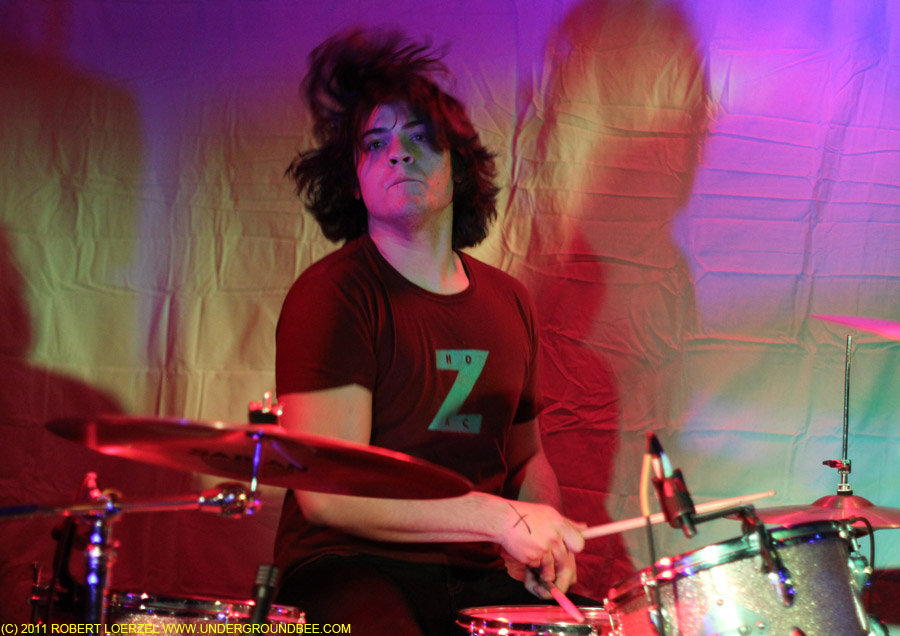






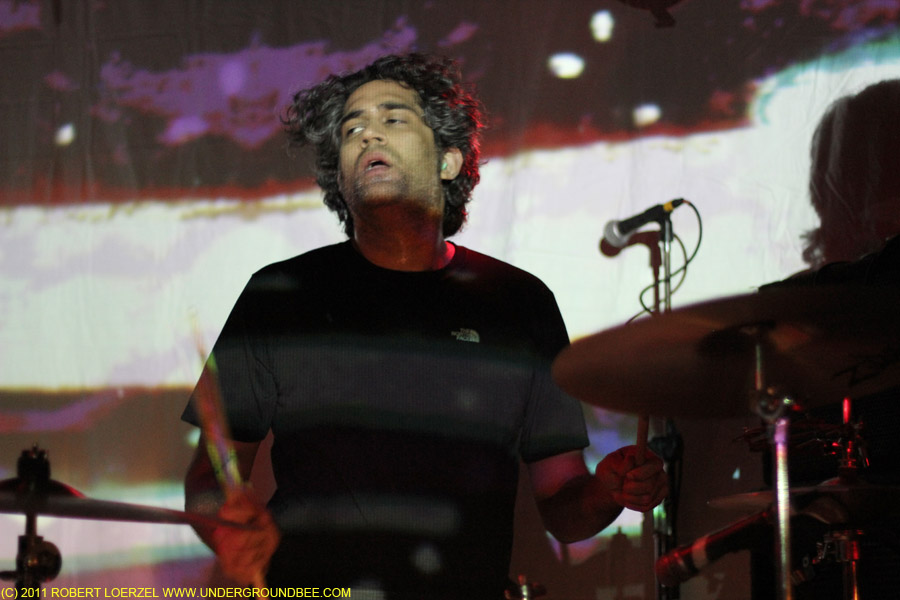


Le Butcherettes at Subterranean
Le Butcherettes inspired some rave reviews from people who saw them play at SXSW and Lollapalooza this year, and it’s easy to see why. The band, led and completely dominated by bloody-apron-wearing and stage-diving singer-keyboardist-guitarist Teri Gender Bender (aka Teri Suarez), plays with almost alarming intensity. Friday night at Subterranean in Chicago, Teri Gender Bender and her cohorts were in good form, playing songs that sounded at times like Rid of Me-era PJ Harvey and plunging into the crowd. Unlike the Lolla set, there was no vomiting.
Chicago Film Festival in Review
Reviews of films I saw at the recently finished 2011 Chicago International Film Festival. As always, some of these will be in theaters soon — if not already, depending on where you are.
A feeling of impending doom hovers in two of the most prominent movies that showed at the 2011 Chicago International Film Festival: Danish director Lars von Trier’s Melancholia and Hungarian Bela Tarr’s The Turin Horse. The end of the world seems imminent in both films.
In MELANCHOLIA, Armageddon comes in the form of a wandering planet that somehow managed to escape the notice of astronomers until now, since it was always on the other side of the sun. And now it’s heading straight for the earth. As science, this is completely absurd, of course, and von Trier surely knows that. The fact that this planet is named Melancholia is a pretty blatant tipoff that the whole thing is supposed to be a metaphor. Like von Trier’s other films, Melancholia plays around with a Brechtian notion of trying to wring emotion out of deliberately artificial dramatic constructions. Von Trier revels in showing us that he’s pulling the puppet strings, but he still wants us to be moved by his puppet show. He has succeeded in the past, and he does again during some passages of Melancholia — especially the first half, with a stunning performance by Kirsten Dunst as a disturbed and erratic bride — but the film doesn’t add up to a coherent whole. Wonderful actors give fine performances of half-baked characters and subplots, and by the end, the wait for that apocalypse turns wearying. (Melancholia is available for viewing now via iTunes before it arrives in theaters.)
MELANCHOLIA: TRAILER
The world may not literally be ending in THE TURIN HORSE, but it feels like it is. Perhaps it’s just an ordinary meteorological event, but the relentless wind blowing across the bleak Hungarian countryside seems like it will never end. The film’s central characters, a taciturn man and woman, are all but trapped in their home in an increasingly desperate situation. The whole world may not be collapsing, but this corner of it is decaying and falling apart, and as far as The Turin Horse portrays it, this is the entire world. As always, Tarr excels at beautiful black-and-white cinematography of the Earth’s crusty edges. Even admirers of Bela Tarr’s previous slowly unfolding epics (including the masterpieces Satantango and The Werckmeister Harmonies) may find The Turin Horse to be tediously paced during its first half. The way it shows the mundane everyday life of these characters as a repeating cycle is a bit like Chantal Akerman’s classic 1975 film Jeanne Dielman, 23 quai du Commerce, 1080 Bruxelles, although the rustic milieu could hardly be different. (Even the trailer for The Turin Horse is severely minimal — see below.) Eventually, Tarr’s quotidian details pile up, creating an oppressive feeling of hopelessness. The dull becomes demonic, building to a bleak climax of sorts — if you can call it that. Don’t expect any explosions or crashing planets. But it is epic, in its own singular way.
THE TURIN HORSE: TRAILER
The dependable, venerable Finnish director Aki Kaurismaki’s new film, LE HAVRE, won the Chicago International Film Festival’s top prize, the Gold Hugo. The setting and language are French, but Kaurismaki’s quirky Finnish filmmaking style is intact. A comic sense of timing is embedded inside the smart, economical editing; watch how Kaurismaki cuts cleverly from one shot to the next. As always, his dialogue is deadpan, showing a dry sense of humor, and his plot verges on absurdity without completely tipping into it. Kaurismaki’s eccentric fictional realm — which is, in its own way, almost as artificial as anything von Trier has done — collides with a real-world issue here: illegal immigration. Despite its odd style, the film makes a compelling argument for compassion that you carry with you out of the theater. There’s a wonderful sense of community and camaraderie among the characters in this charming movie. Kaurismaki has found humor and pathos in bleak situations in some of his earlier films; in Le Havre, he sees hope for humanity. (Le Havre opens Nov. 4 at the Music Box Theatre in Chicago — and Indie Wire has a delightful interview with Kaurismaki.)
Film website
LE HAVRE: TRAILER
The best film I saw at this year’s Chicago festival was THE KID WITH A BIKE, the latest by Belgium’s Jean-Pierre and Luc Dardenne. Each film by the Dardenne brothers feels like another episode in the remarkable, continuing drama they’ve been capturing on film since 1996’s La Promesse — a picture of the daunting challenges that people face every day when they live on the fringes of society: poor, undocumented, exploited, abandoned. This time, a troubled boy hurtles down streets on his bike with manic energy and emotion, while a benevolent woman tries to give him something more like a normal childhood. Like other Dardenne films, The Kid With a Bike seems to be so realistic that it could be a documentary, but in a subtle touch, the musical swells at certain key turning points in the boy’s story, heightening the sense that the plot holds moral lessons. In this touching and compassionate film, the emotions are completely earned.
Film website
THE KID WITH A BIKE: TRAILER
The Chicago fest included another film from Belgium about boys abandoned by their parents. Director Bouli Lanners’ THE GIANTS depicts the misadventures of three youths on their own in the Belgian countryside, smoking pot, breaking into houses and getting mixed up with a drug dealer. The plot drifts a bit, but the film deftly manages to be charming at some moments and alarming at others.
Film website
THE GIANTS: TRAILER
The Chicago festival’s New Directors Gold Hugo Award went to Finland’s Zaida Bergroth, for her film, THE GOOD SON — which could hardly be different from the other Finnish winner, Kaurismaki’s Le Havre. Filmed in a naturalistic style with strong acting performances, Bergroth’s drama about a famous movie actress and her overly protective teenage son is filled with creepy Oedipal overtones and a sense that something will go very awry. (And what do you know? It does.)
Film website
THE GOOD SON: TRAILER
KING OF DEVIL’S ISLAND, a Norwegian film by director Marius Holst, is a strong drama about a 1915 uprising at a reformatory — for all intents and purposes, a prison where the boys face constant abuse and where escape seems all but impossible. This is straightforward narrative filmmaking with some poetic touches (including tones of Moby-Dick), all of it highly effective in making us feel the desperation and boiling-over frustration of its protagonists.
Film website
KING OF DEVIL’S ISLAND: TRAILER
PLAY, a Swedish film by director Ruben Östlund, was one of at least two Chicago film fest selections that showed the influence of controversial Austrian director Michael Haneke. The influence shows here in the steady, unblinking eye of the cinematography as it documents some Swedish boys being bullied and harassed by thieves. There’s a sense that we’re watching surveillance video capturing the way people really behave when they don’t know they’re being watched. It’s a perceptive and complex film about anti-social behavior that evokes the feelings of terror and uncertainty one felt as a child when confronted by bullies. It also happens that film’s victims are white, while the juvenile criminals are black immigrants. This prompted some discussion at the film fest screening about whether the film is racist. Perhaps Östlund should have gone further in explaining the motivations of the black characters, but there’s no hint that they are inherently bad (any more than are the characters who make mistakes in the Dardenne brothers’ Belgian films). The film is about race: about the fearful attitudes some white people in places like Sweden have toward the darker-skinned immigrants now living among them. It’s compelling and thought-provoking filmmaking, possibly argument-provoking.
PLAY: TRAILER
MICHAEL, an Austrian film by Markus Schleinzer, was the other film fest entry showing Haneke’s dark, nihilistic influence. This profoundly unsettling and discomfiting drama focuses on a man who is keeping a boy prisoner in his basement and sexually abusing him. While most of the imagery isn’t graphic, it’s about as difficult to watch as you would imagine. The film is well crafted and performed, with a heart-stopping final shot. The pedophile remains an enigma, bringing us no closer to understanding why someone would do something monstrous.
Film website
MICHAEL: TRAILER
WITHOUT, an independent American film directed by Mark Jackson, is about a young woman who seems to be going a bit insane from isolation, boredom and grief. The film itself grows boring after a while — a typical problem with artworks that try to portray ennui — but it’s skillfully made, with a natural performance by its Joslyn Jensen.
Film website
WITHOUT: TRAILER from right on red films on Vimeo.
SACRIFICE, a historical Chinese epic directed by Chen Kaige, is frequently overwrought. Words echo on the soundtrack whenever there’s a flashback. The music sounds like a vaguely Chinese version of Enya. Characters sporadically display those supernatural acrobatic martial-arts skills, but move around like normal people most of the time. The story plunges viewers into a bloody sequence of battles and betrayals before telling us who the characters are or why we should care. The film finally finds its footing in its middle section, an occasionally moving portrait of a single father raising a changeling as his own son, but Sacrifice never fully persuades us of its story.
SACRIFICE: TRAILER
ANDREW BIRD: FEVER YEAR, a documentary about the Chicago musician by director Xan Aranda, is a smart mix of concert footage and behind-the-scenes glimpses of Bird creating his music. It sounds and looks lovely. Let’s hope Bird changes his mind about not giving this film a DVD release or a regular theatrical run. It deserves to be seen beyond the festival circuit.
ANDREW BIRD: FEVER YEAR: Official Trailer (2:45) from Andrew Bird: Fever Year on Vimeo.
ON THE BRIDGE is a documentary by French director Olivier Morel, but all of it takes place in the U.S., where Morel filmed interviews with Iraq War veterans trying to cope with Post Traumatic Stress Disorder — as well as the parents and sister of one veteran who committed suicide. These stories, some of them haunting, need to be seen and heard.
Film website
ON THE BRIDGE: TRAILER (preceded by ad) by ZadigProductions
MISS BALA by Mexican director Gerardo Naranjo
is another film that feels as if it needed to be made. With drug cartels tearing apart Mexico and exacting an almost incomprehensibly high death toll, there’s a need for movies that honestly depict the bad news from south of the U.S.-Mexico border. Miss Bala works as both an action film and social commentary. It does fall somewhat into confusion in its final scenes, as it becomes more difficult to keep track on who’s on which side, but that may be part of the point. Corruption and betrayal are so endemic that it’s impossible to know who to trust.
Film website
MISS BALA: TRAILER from Miss Bala on Vimeo.
Occupy Chicago, October 22, 2011
Dum Dum Girls + Crocodiles
It’s pretty obvious by now that Girl Groups are back — and I don’t just mean rock bands with female singers and musicians. I mean bands that evoke the famous Girl Groups of the 1960s. Today’s Girl Groups tend to channel the sweetness of that sound through the loudness of garage rock, however. Dum Dum Girls are one of the finer practitioners of this sort of music, and the band put on a fine performance Friday night (Oct. 14) at Chicago’s Empty Bottle, with catchy vocals and crunchy guitar chords. The concert came with an excellent bonus: a thrilling and energetic opening set of shoegazy rock songs by Crocodiles. The main Dum Dum Girl, Dee Dee (aka Kristin Gundred), joined Crocodiles onstage for one stage, ending it by kissing Crocodiles singer Brandon Welchez (who happens to be her husband). The first performer of the night, Colleen Green, was a lo-fi amateur in comparison with what followed; pretty voice, but she needs an actual band.
Portishead at the Aragon
A long absence makes the legend grow. And when Portishead hibernated for a decade — releasing no records and doing no tours from 1998 to 2008 — the cool, enigmatic English band started to seem like a musical holy grail. Oh, to see Portishead to perform live again — or to see it for the first time, if you were foolish enough to miss their concerts in the 1990s (as I was). And then in 2008, the band finally released its third studio album, sounding edgier than ever. But other than a performance at Coachella, no U.S. tour was forthcoming. Three years later, it has finally happened, and Portishead played Wednesday night (Oct. 12) at Chicago’s Aragon Ballroom.
Portishead makes music with a very private sensibility, like feelings and memories echoing inside someone’s head. And so, it seemed appropriate how introverted singer Beth Gibbons was onstage for most of the concert, hunched over the microphone, her hair sometimes obscuring her face. Nodding her head was the closest she got to dancing. Meanwhile, the band — Portishead members Geoff Barrow, Adrian Utley plus three more members, shifting around on instruments — played faithful but fresh versions of the studio arrangements. Films flickered behind Portishead as the band played five songs from its classic 1994 debut Dummy, one from 1997’s self-titled album, seven from 2008’s Third and one recent nonalbum track, “Chase the Tear.”
All of the group’s diverse influences were clearly audible — from the twitchy spins of turntables and aggressive dance beats to sophisticated balladry that evokes earlier eras ranging from ’60s soul music all the way back to the German cabaret of Kurt Weill — and yet it all sounded of a piece, fitting together into the distinctive sound that is Portishead. While the Aragon’s acoustics are often atrocious, it sounded all right where I was standing (maybe 100 feet in front of the stage) … except for the grating static crackles that destroyed all the beauty of the song “Mysterons.” When that problem was fixed halfway through the song, a big round of applause went up, but I’d have preferred a do-over of the whole song.
In the middle of the set, the three touring musicians left the stage and Portishead’s core trio played a beautiful, heart-stopping rendition of “Wandering Star,” with just bass guitar, a screwdriver running over guitar strings and Gibbon’s lonesome voice, which soared higher in the song’s final passage, filling the gaps in this spare version of the song with a wordless imitation of a symphony. Then the rest of the band returned, and Portishead launched into the jarring keyboard-and-drums riff of “Machine Gun.” What a contrast.
After acting so shy and understated for most of the concert, Gibbons descended from the stage during the final song of the encore, “We Carry On,” walking along the security barricade and touching the hands of her fans. When she got back onto the stage for the last moment of the night, she was all smiles.
SET LIST: Silence / Hunter / Mysterons / The Rip / Sour Times / Magic Doors / Wandering Star / Machine Gun / Over / Glory Box / Chase the Tear / Cowboys / Threads / ENCORE: Roads / We Carry On
Chicago’s theater season off to a strong start
Chicago’s fall theater season opened over the past few weeks with a flurry of major opening nights that might make you feel the way Tribune critic Charles Collins did back in 1936. I happened the other day across this quote from Collins, who had just seen several plays on Chicago stages: “I come up from under the heavy wave of first nights … blinking my eyes and shaking stars out of my hair. This has been a surfeit of pleasures akin to a debauch…”
Let’s not go quite that far. Is the current theater season so delightful that you’d call it a “debauch”? Not exactly — but a few excellent productions of top-notch scripts are on the city’s stages.
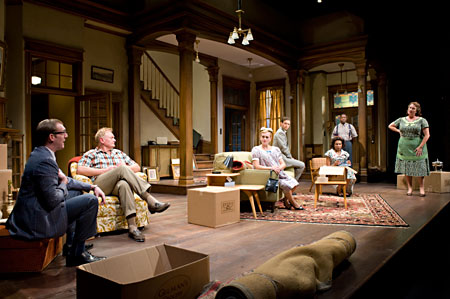
The best of the bunch is playwright Bruce Norris’ 2011 Pulitzer Prize winner, CLYBOURNE PARK, which Amy Morton is directing at Steppenwolf Theatre. It’s curious that this drama, which has such a strong Chicago theme running through it, debuted in New York instead of Chicago, where Steppenwolf has premiered most of Norris’ previous plays; it feels like the play has arrived in its true home. If you’ve read anything about Clybourne Park, you probably know it’s about racial change in Chicago neighborhoods. The first act happens in 1959, showing the white family moving out of the home where the black characters from an earlier play, Lorraine Hansberry’s classic A Raisin in the Sun, are about to move in. White flight happens in between the two acts. After intermission, it’s 2009, and whites are moving back into the newly gentrifying neighborhood. All of this may sound rather schematic, but Norris goes beyond than this superficial framework with his usual dark, lacerating sensibility and observational powers. The cast is terrific, no one more so than John Judd in Act 1, as he builds from subdued quiet to emotional, goose-bump-raising outbursts. A subplot about the deceased son of the 1950s homeowners gives Clybourne Park a haunting, tragic depth.
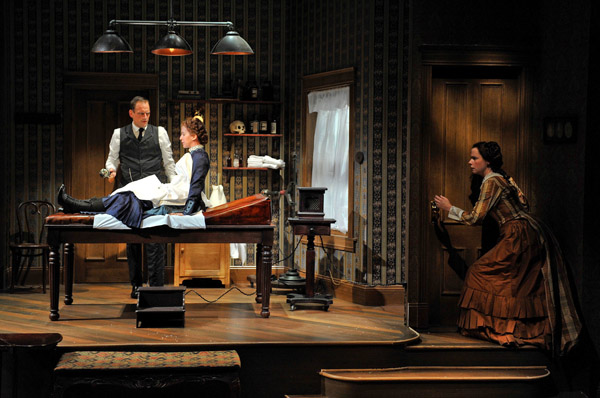
Sarah Ruhl’s IN THE NEXT ROOM OR THE VIBRATOR PLAY, directed by Sandy Shinner at Victory Gardens Theater, is a wise and witty dramatization of the Victorian Era’s confusion and ignorance over female sexuality. If you haven’t read much about the actual history of this topic, you may be surprised and even disbelieving of the facts — but Ruhl’s script is not far from the truth. You do wonder: Could these people have been so blithely unaware of their own bodies? But Ruhl and Victory Garden’s wonderful cast breathe life into these characters, persuasively showing people grasping for the truth through the fog of Victorian moral codes. (Victory Gardens’ production ends Oct. 9, so sorry, you may already be too late if you haven’t seen it.)

John Logan’s RED, directed by Robert Falls at the Goodman Theatre, is an impressive two-man drama about art. The two men are famed abstract artist Mark Rothko and a more-or-less-anonymous assistant who’s working in his studio. The dialogue is mostly argument and speech-making, but that’s not the problem one might imagine. It’s believable that Rothko was the sort of self-important man who would spend his time making grand statements about his art. And as played by Edward Gero with glaring intensity, Rothko almost makes you believe what he is saying in the first half of the play. And then his gradually more assertive assistant (played by Patrick Andrews) is equally persuasive as he tears down Rothko’s pretense in the play’s second half. The result is a fine debate about art and commerce, with a strong emotional undercurrent. The meticulous set, a re-creation of Rothko’s studio, becomes the canvas for a breathtaking final moment of light and darkness.
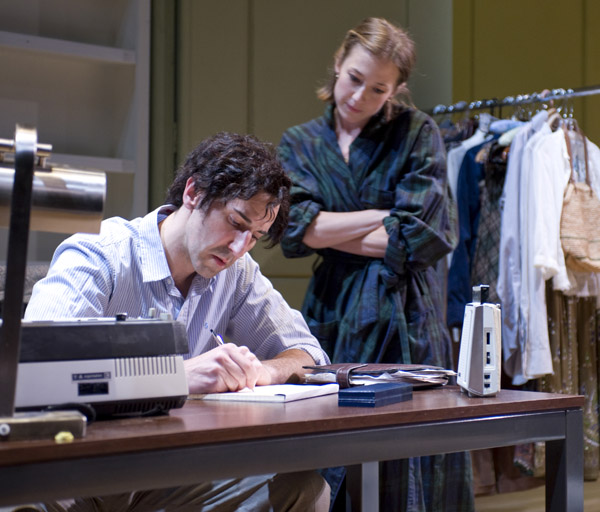
Tom Stoppard’s THE REAL THING, directed by Michael Halberstam at Writers’ Theatre in Glencoe, is considerably funnier on the stage than it is on the page. Of course, that’s true of many scripts, but in this one, actor Sean Fortunato is particularly effective at bringing out the wit of his character, a playwright with romantic entanglements and some difficulties dealing with real-life people as opposed to the characters he creates in his scripts. Carrie Coon and the rest of the cast are in top form, as well. As it keeps jumping ahead in time, Stoppard’s play takes some puzzling to figure out; it may be a little too much of a puzzle. But ultimately this is a rewarding production of a thoughtful play on the intersections between art and real-life love.
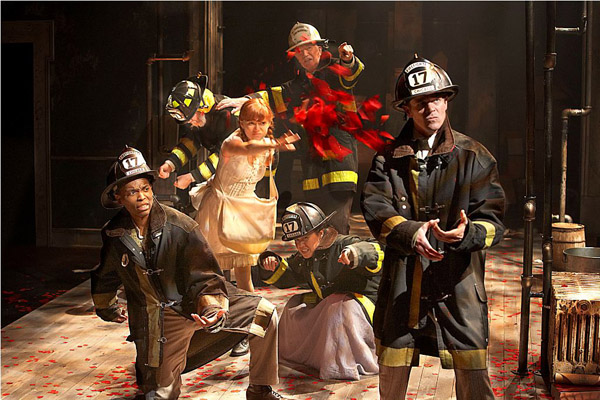
THE GREAT FIRE, written and directed by John Musial at Lookingglass Theatre, is a misfire, alas. It’s too jokey by half as it recounts the Great Chicago Fire of 1871, with deliberately anachronistic references to Rahm Emanuel, TIF districts and fire department radios distracting from the more authentic historical moments. Lookingglass makes its usual effective use of small props to convey big spectacle, and the show is diverting enough, but overall it feels like a squandered chance to tell the real story.
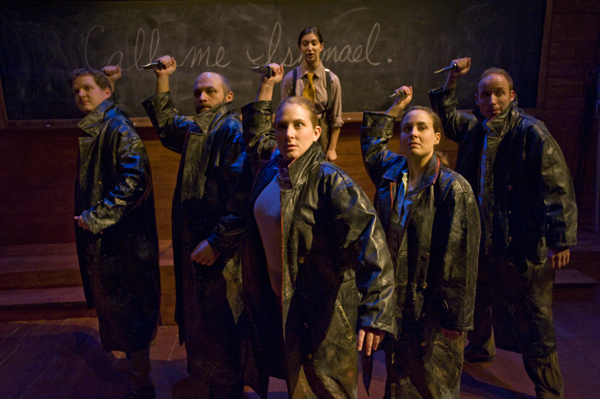
MOBY-DICK, conceived and directed by Blake Montgomery at the Building Stage, is a fresh and exciting take on that familiar classic American novel by Herman Melville. The roles of Ahab, Starbuck, “Ishmael” and other crew members are constantly juggled back and forth by three male and three female cast members. Whoever’s wearing a big black seafaring coat at any given moment is Ahab. But then, multiple coats appear … are they all Ahab? By refusing to assign each character to a single actor, this production sacrifices some of the emotional depth that might have resulted from more focused performances. However, the clever gambit is successful in another way, heightening the feeling of obsession, which is so central to this story of a mad sea captain hell-bent on killing a white whale. Driven forward by Kevin O’Donnell’s sensational percussion, Moby-Dick unfolds on a set that looks like a college classroom merged with a whaling ship. The play itself is a similar combination of smart lecture with fun adventure.
Mekons do Pecha Kucha at SPACE
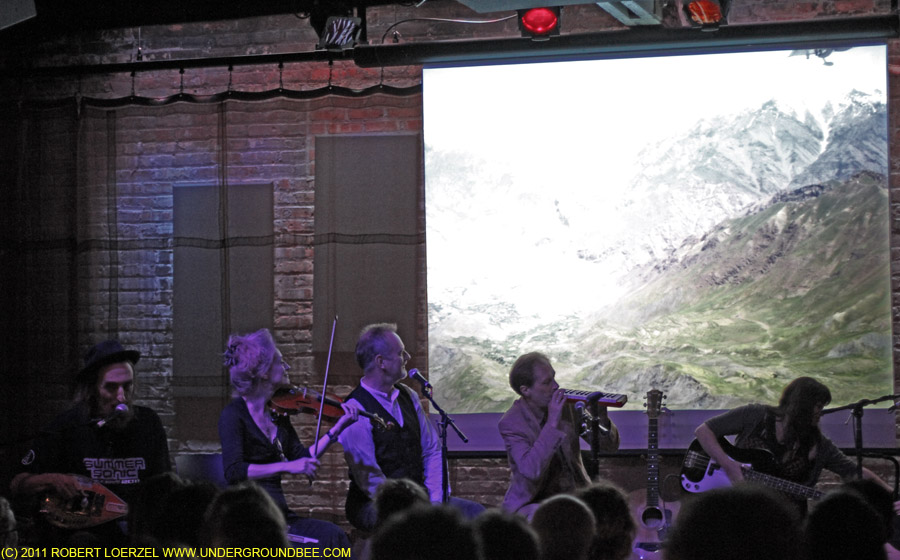
Leave it up to the Mekons to stretch the concept of a concert into strange realms yet again. Touring to promote their excellent new record, Ancient & Modern (or is that Ancient & Modern: 1911-2011 — it’s proving hard to determine exactly what the title is), the seemingly unstoppable old punk-art-country-whatever band played two shows this week in Chicago. Alas, I was unable to attend last night’s electric rock show at Lincoln Hall, but I was at SPACE in Evanston Tuesday night (Oct. 4) for the stranger evening of mostly acoustic music and Pecha Kucha slide-show lectures. Originating in Japan, Pecha Kucha is a program consisting of people speaking about a variety of topics as slides are projected, with presentations (supposedly) limited to 6 minutes and 40 seconds.
So on Tuesday, the Mekons not only performed music — each of them also got up to speak and show some pictures. Sally Timms spoke about a suggested walking tour in Yorkshire, England, while Sarah Corina introduced us to the part of London where she lives, Brixton. Rico Bell gave a hilarious and illuminating talk about paintings of livestock, including some fantastically large pigs — both historic paintings and his own artworks inspired by them. Susie Honeyman proposed a fascinating project to send music across the water at Scotland’s Isle of Jura. Lu Edmonds assumed the role of a pilot with Mekon Air and took us on a ride to Tajikistan, while the band made ridiculous sounds to simulate a dangerous airplane flight.
And then the music began. Part one of the set included “Hole in the Ground,” “Thee Olde Trip to Jerusalem,” “Geeshi,” “Honey Bear” and “Heaven and Back.” Although the Mekons were sitting in a half-circle for most of the evening, Timms and Tom Greenhalgh stood up to sing a few times, and Greenhalgh even kicked up one of his legs a couple of times during “Heaven and Back.” Like other Mekons acoustic shows, it was loose and a little shambling, but whenever all those voices came together, it had the glorious feeling of a rousing English drinking song or a hoedown. “Who doesn’t like to rock when you’re sitting down?” Timms cracked at one point.
Intermission was followed by more slide shows. Filmmaker Joe Angio talked about the “Revenge of the Mekons” documentary he’s making. Tom Greenhalgh spoke about … well, what did he speak about? It was the most peculiar and difficult to summarize talk of the evening, but the most poetic. Steve Goulding discussed his recent experiences playing with the reunited Graham Parker and the Rumour in a new film by Judd Apatow. And Jon Langford told us about Welsh author Arthur Machen. Then came more music. A few people in attendance seemed to be impatient with the Pecha Kucha stuff, but most of it was pretty fascinating, presenting the personalities and interests of these musicians in a rare way. “I don’t care if you don’t like talking,” Langford said. “Talking is communication.” (Once the band started playing again, some cheeky audience member heckled, “More slides!”)
The second “musical interlude,” er, set of the evening included … well, I believe I’m missing one song from the set list, due entirely to my sloppy handwriting. But here’s the rest: “Arthur’s Angel,” “Diamonds,” “Space in Your Face,” “I Fall Asleep,” “Orpheus,” “Waltz,” “Shanty,” “Hard to Be Human.” And then an encore. The band never actually left the stage, but Timms said, “We’ve got two more songs, so pretend that we went off. … We’re back!” The encore was “Wild and Blue” and “Last Dance.”
Tribute to Diane Izzo
Singer-songwriter Diane Izzo, a former Chicagoan, died of cancer in February at the age of 43. Many of her friends and musical collaborators gathered Sunday (Oct. 2) at the Hideout for a concert billed as “the First Annual Diane Izzo Memorial Concert.” The poster for the concert also featured a title taken from one of Izzo’s lyrics: “Yeah, we’re pitiful but we’re gods.” I missed the first set of the evening (with Crooked Mouth String Band and Beau O’Reilly & Jenny Magnus) but arrived in time for a beautiful and moving ritual performed by a Buddhist monk blowing into conch shells and horns and ringing gongs and bells. And then Hideout owner Tim Tuten got choked up as he recited the lyrics from the song “O Death,” which Izzo had performed with the Pine Valley Cosmonauts. As Tuten noted, that was part of an effort to repeal the death penalty, and this year, Illinois did just that.
After a spoken-word performance by Cheryl Trykv came the centerpiece of the evening: a performance by Friends of Diane Izzo. Jim Becker, other members of Califone and a revolving set of musicians functioned as the band, while various singers stepped up to the microphone and performed Izzo’s songs. It was a true celebration of her life and music.
The evening closed out with sets by Souled American and Califone. Souled American played a sort of alt-country in the 1980s and early ’90s — before it was widely known as alt-country — but haven’t released an album since 1992. On Sunday, Souled American sounded as creaky and ramshackle as ever, playing loose, shaggy folk-rock songs.
Califone played with heightened intensity, perhaps inspired by the occasion. A highlight was a cover of the Izzo song “Freight Train,” which Califone stretched out into a meditative epic, with Tim Rutili playing a single note on his guitar that sounded positively monumental as it pierced the air. When the song finally died down, he remarked, “I just want to play one note now.”




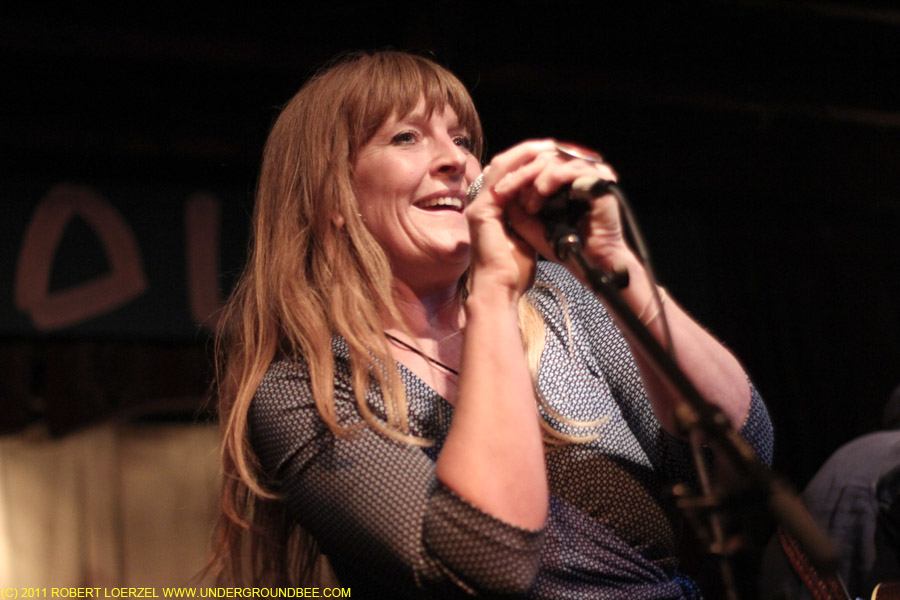
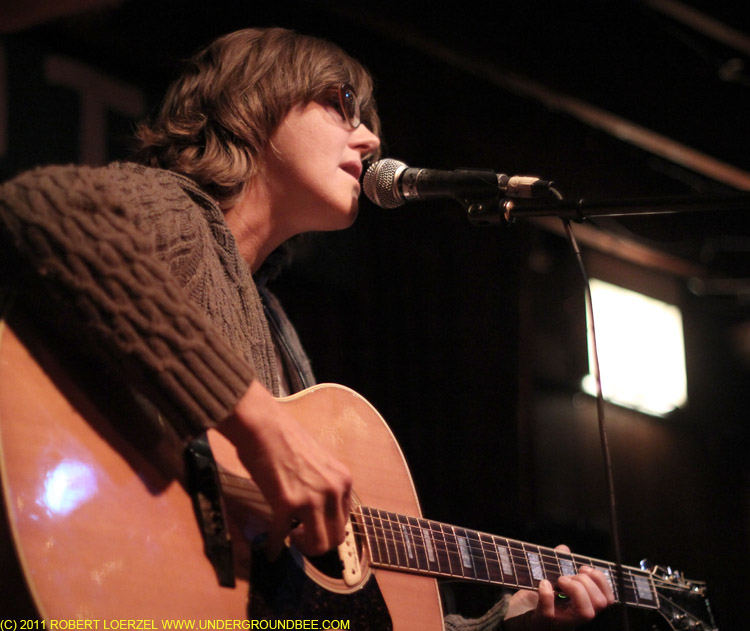
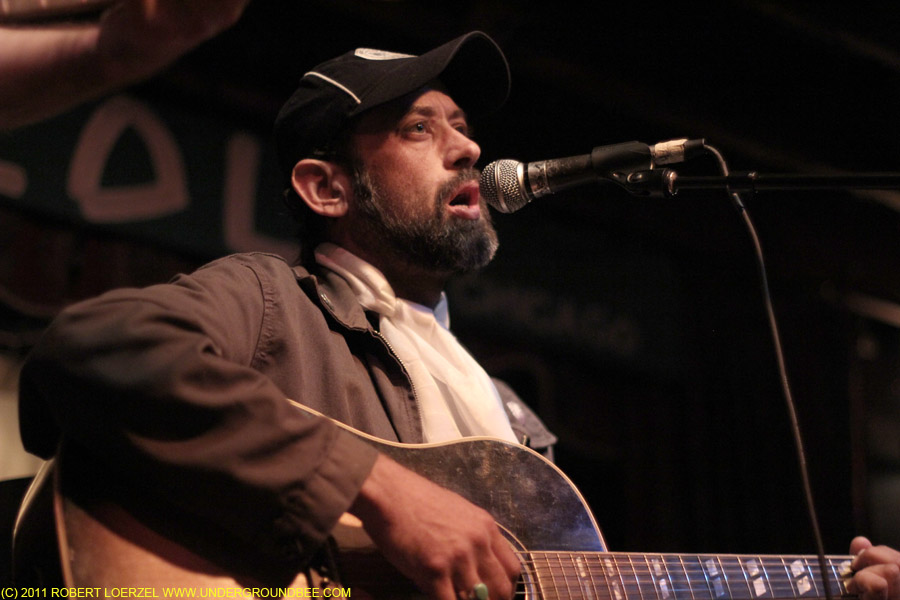


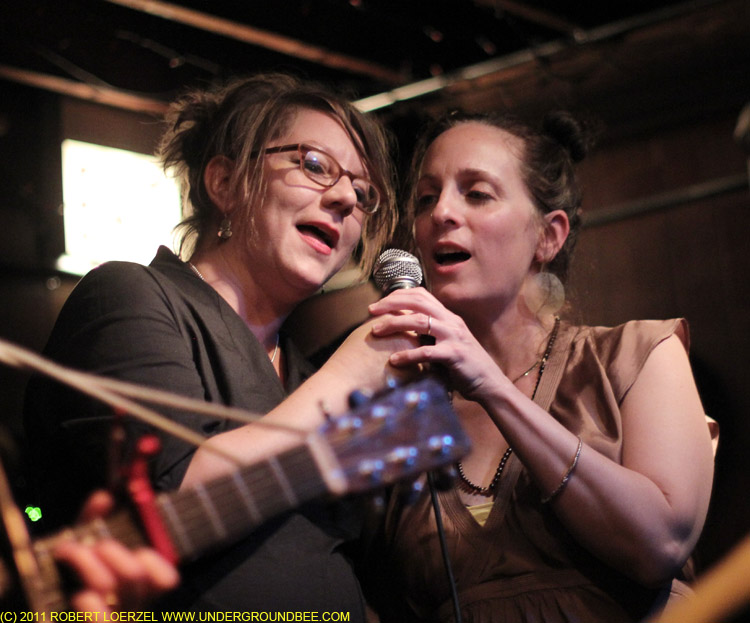

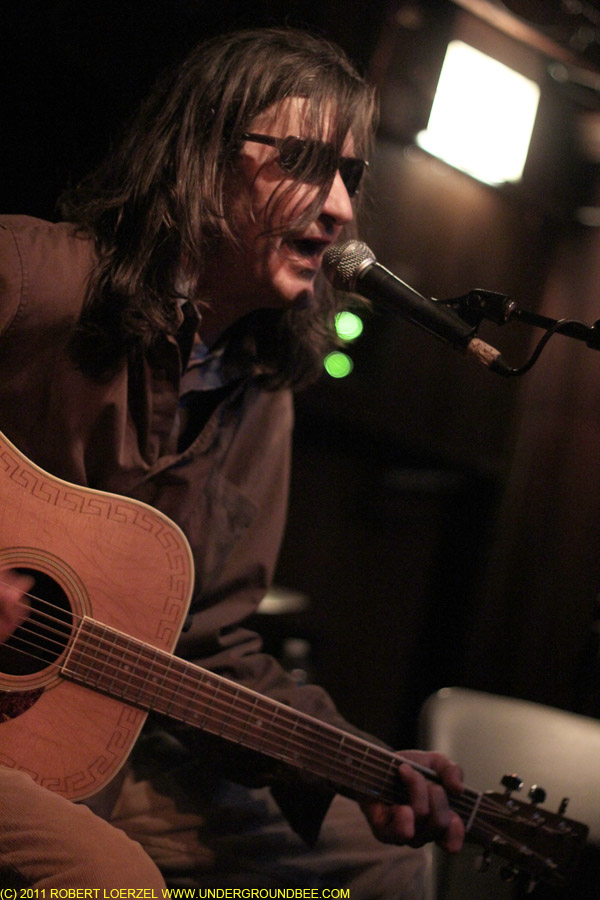
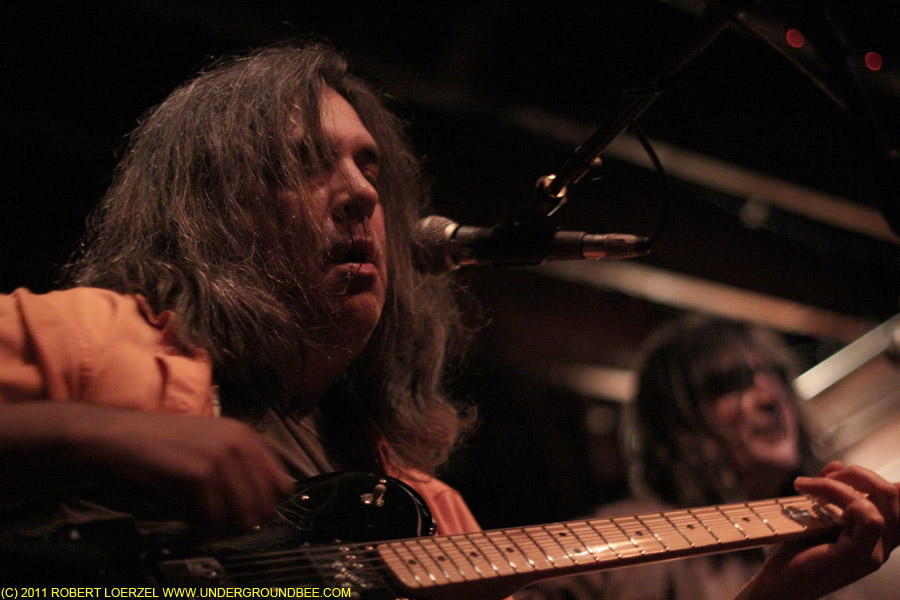
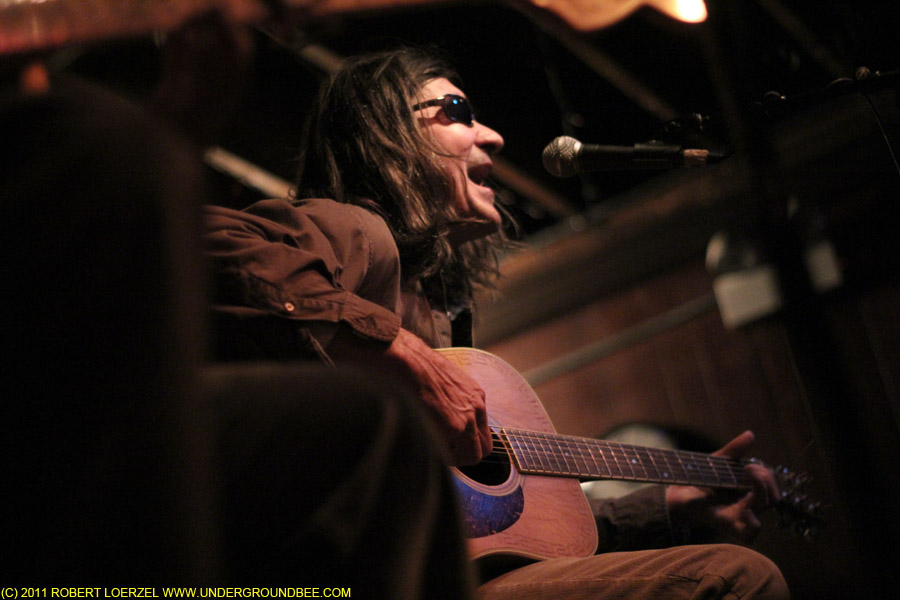
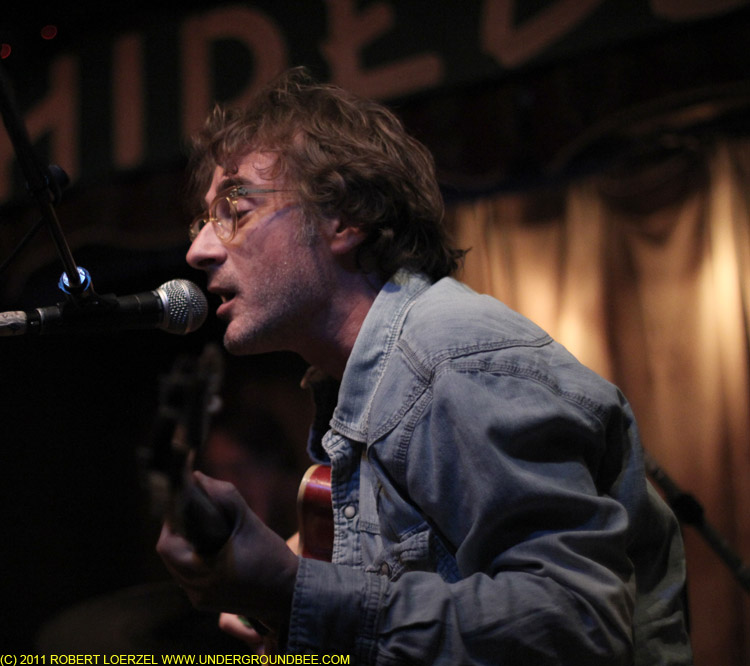
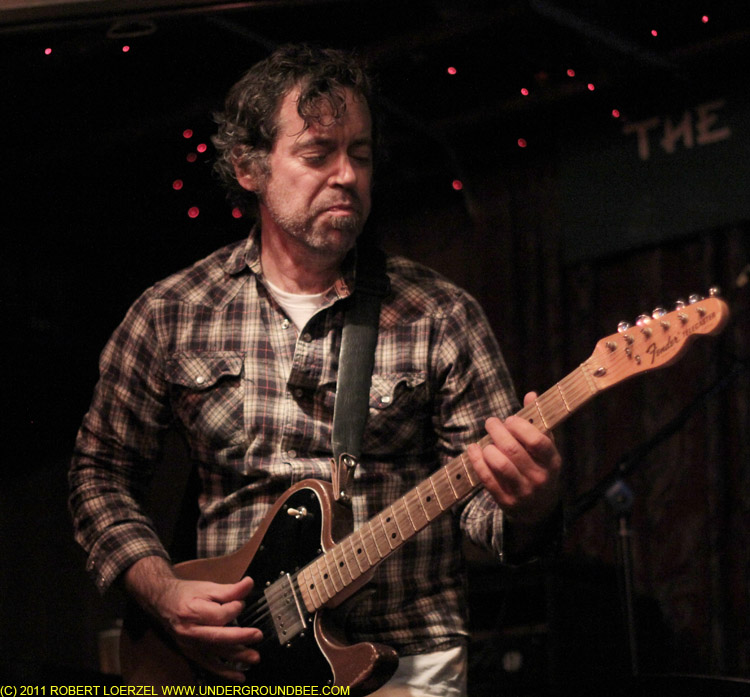
Cultivate Festival
The Chipotle restaurant chain has its very own “music director”? Yes, it does. And he was DJing Saturday (Oct. 1) at the Cultivate Festival in Lincoln Park, a free event sponsored by the restaurant chain with bands, chefs and, of course, burritos. Whatever you think of Chipotle or corporate branding of music, this was a pretty nice festival — and probably the last outdoor music I’ll see in 2011.
The headliners were Calexico, a band with an appropriate Tex-Mex musical flavor, but alas, I was not able to stay that long. I did catch cool sets by the Cave Singers, Rural Alberta Advantage and White Rabbits, who had a special guest on bass guitar: Britt Daniel of Spoon. I always thought White Rabbits sounded a bit like Spoon (maybe it’s the way they use piano), and this confirmed that. And as always, Rural Alberta Advantage sounded like Neutral Milk Hotel, not that that’s a bad thing.





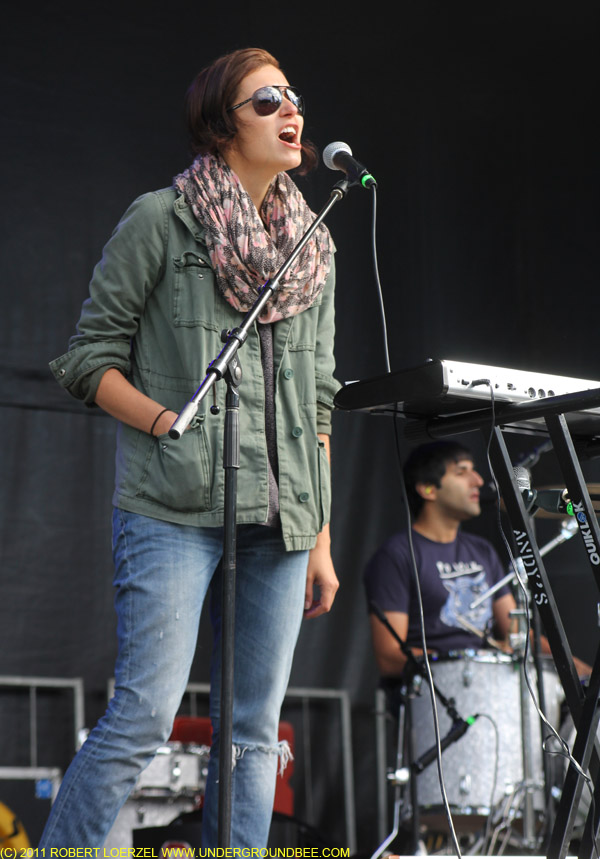
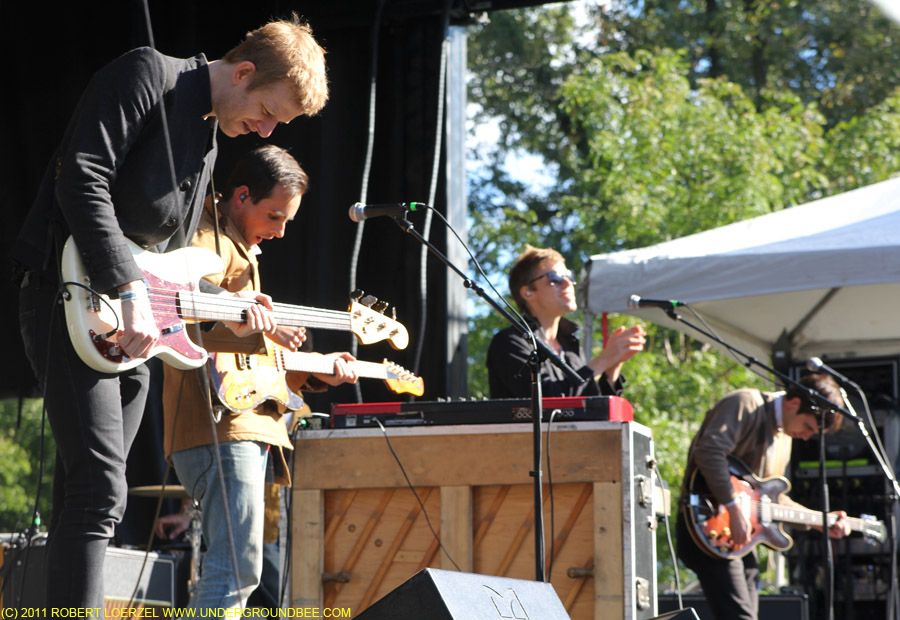

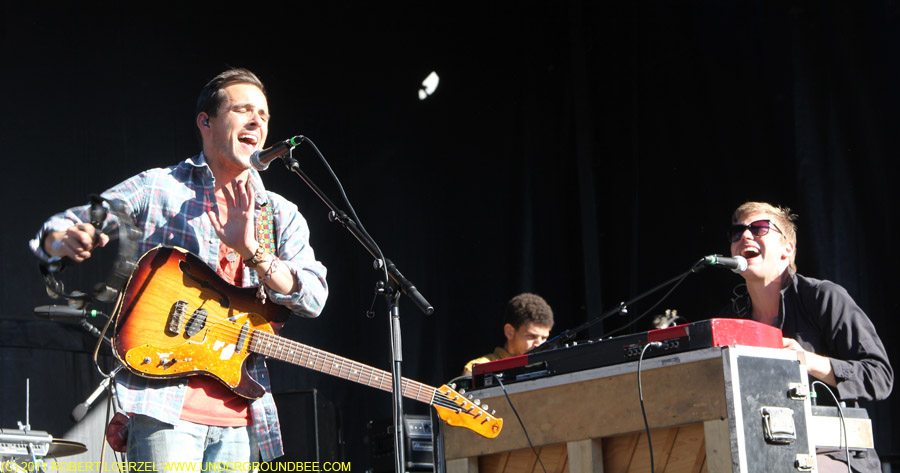
An Interview with Sally Timms
The Mekons have a strong new album, Ancient and Modern, and the band plays Tuesday (Oct. 4) at Evanston SPACE and Wednesday (Oct. 5) at Lincoln Hall. I interviewed Sally Timms of the Mekons a couple of weeks ago for an article in Pioneer Press. Here’s a longer transcript of my conversation with Timms.
Q: Let’s talk about the new album.
A: OK. I wish you were getting one of the more intellectual members, but I’ll try my best.
Q: Why don’t you just tell me how this particular record came together, what the process was like?
A: As far as the original concept — generally, that’s how it starts, with all the records. The concept begins. And that begins in different ways. I wouldn’t necessarily say I’m behind the different ideas for that. But they kind of come out of the ether. We end up talking about similar things. And I think this is really Jon and Tom talking about … there was the idea that the generation that served in the First World War were dying off, the last British serviceman died last year, I think, who served in the First World War, Harry Patch. And so I think these conversations had been happening because there was a lot of run-up to this 100-year period. And then looking at the similarities of what was happening then and what is happening now. … The Edwardian period was considered very shallow. In a lot of ways, it was frivolous and consumerist. Then there were these changing ideas that were fomenting underneath it. And you can definitely see similarities with things that are happening now. It was a kind of almost superficially comfortable lifestyle, but underneath it there are plenty of cracks and things were degenerating. It came out of those ideas — that the modern world was beginning and now we’re sitting, almost looking at, weirdly enough, the tail end of the modern world. Space travel is finished.
Q: We’re having trouble sending someone up to the space station.
A: Right. Are we really dreaming those ideas any longer? There was, through that whole post-Second World War period, a kind of optimism that I would say is, definitely in the West, disintegrated. And being led to wars that are basically wars about money and not about morals. And just the world disparities. Who’s controlling what. And yet, we kind of think it’s OK, until it suddenly hits us, and then it’s not. So I think those ideas were coming a lot to the surface with them.
Q: So are the Mekons just sitting around one night and this is the topic of conversation and you say, “Let’s do an album about this?”
A: (Laughs.) No. It doesn’t really, to be honest with you. I’d say it almost a little backwards. There are people who deal with ideas, and there are people who deal with playing, and a mishmash in between. So, I’d say what we do is we decide to make a record and we book time to do it in different places. And then people will come with these — Jon will come in with books. Tom will come in with ideas. Lu will come in with some stuff. And people will bring in a variety of different snippets of ideas. And what happens over the course of recording and writing is those ideas would coalesce. I’d say maybe someone had a title to begin with. I doubt it. I doubt if anyone really thinks that what it’s going to be. I mean, you know how it works. There’s little things knocking around, people are kind of formulating, and as everything develops, you kind of go: ‘Oh, this is it. This is what it means.’ But at the time, I don’t know if it was as coherent as that. So what happens is people get together with books and ideas. We all get together in one place. We don’t really write songs separately. That doesn’t happen. No one comes in with a finished song. No one really walking in with finished lyrics. It’s very unusual. I can’t even think of an instance in which that happened. So, basically, with the Mekons, we always make the rule, somewhat a little unspoken, that we do the work when we’re together. And that is block books. And obviously, we live on different continents. Half the band are in the U.K. and half are in the U.S. So what we have to do is make time. And we booked a house about half a mile from Tom’s place in Devon, which is extremely rural anyway, in the middle of nowhere. We found this large rental house and we all moved in there with recording equipment. And then he would come at night after work, because he has a day job and four kids. We would get together and we started formulating the songs at that point. Some of them, actually, in the space of three or four days, final vocals were done on them. Others were completely torn up and rewritten. And then we booked another chunk of time in a Welsh residential studio. And we did the majority of the rest of it there. And then Lu took it away and did tons and tons of stuff on ProTools. He added a lot of elements to it like the fall-apart bit in the middle of “I Fall Asleep.” He did all that himself. So, it came together in different stages.
Q: In one of the interviews I read that Jon gave, I think he said the house near Tom’s place had pictures of nude ladies on the wall?
A: It looks like something out of Lord of the Rings. It’s a thatched cottage nestled against a giant cliff by a tiny river, just over a stone bridge. It’s a very odd little home. It’s beautiful, but it’s completely — well, there are a couple of neighbors, but it’s sort of in the middle of nowhere.
Q: So is there any truth to the story that you came downstairs awakened by Tom doing some recording in the middle of the night?
A: Yeah, there was a tendency to run late. But it might have been slightly exaggerated, because I go to bed at 9 o’clock, so it might have just been 11:30. (Laughs.) That’s the middle of the night for me.
Q: I believe you told me once that you see your part in this process as an editor of sorts?
A: Yeah, I’m a good editor. I wouldn’t say I’m a good starter. I don’t find it easy to write songs myself. But what I think I’m good at is looking at the overview and the shape of things. I’m good at sequencing. So I think what I’m good at is when something is done, I can very much help it be finished. I think I’ve probably got a good critical eye. So that is a role I have. I also have the role of doing all the shit jobs that no one else wants to do, like … booking bands and making sure that they all get on the flight. So I play a sort of servant role, with occasional intellectual pluses. But then, I’m in a bad mood about this today.
Q: You sing lead vocals on three songs on the album. Should someone listening to the album think those are the songs you had more of a role in writing?
A: No, it doesn’t work that way. I mean, literally, we all — I wouldn’t say I do much lyric writing. Very occasionally. Melodies and maybe some ideas for arrangements. I don’t even read into the different songs being different band members’ personalities or commentaries.
Q: How would you describe the sound of this record and where it fits in with other Mekons records?
A: People say this to me a lot: ‘All the records sound different.’ But to me, they sound the same, because it’s the same instrumentation going on. Some are quieter, some are louder. I suppose a record like Me doesn’t sound like other things we’ve done, but even that, I would say, does. … The closest record, I would say it sounds like, which is one of my favorite Mekons records, is Curse of the Mekons. And I think there’s a lot of elements in that, there’s a lot of spaciousness and then there’s these odd little rock tunes occasionally. So it’s got those elements in it. But there are definitely parts of it that sound like Natural. To me, I don’t see them sounding that different. But I suppose, thematically, I can see why people would think that. Because they are called certain things and the sound is a certain sound. But I think we were moving away from recording another — we were almost starting to do another Natural because we were recording once again in a rural environment without a full studio setup, so the inclination was to make it a little more acoustic. And suddenly, we were like, ‘No, we can’t make another record like that. Let’s make it more rocking, man.’ So there’s a bit of both there. But I would say it’s got an airy spaciousness to some of it. ‘Warm Summer Sun’ definitely reminds me of something that might have been on Curse, or even earlier Mekons records. I think that almost sounds like an odd, spacey experimental kind of punk song, from that period. That’s kind of what it reminds me of. Or even going back earlier.
Q: Ian Caple worked on the record, and he’s been on previous records?
A: He worked on Natural as well. He’s a very easy person to work with. He seems to understand the Mekons’ sound, and he’s also very good at dealing with the fact that we’re bringing in stuff that’s been recorded in a lot of different places. So it needs to be someone who’s a pretty good technician who can knock that into some kind of cohesiveness, because it can tend to sound different if it’s done in different rooms. So he’s very, very good at that. And he likes us and doesn’t charge us a load of money, so good for him all around.
Q: So you’ve got the tour coming up, including the show in Evanston—
A: Yeah, that’s a weird one. We’re doing a slide show.
Q: Describe what that’s going to be all about.
A: Peter suggested it, he does Pecha Kucha — I can never say it right — night at Martyrs’, and he said, ‘The band should just do their own Pecha Kucha.’ And so we decided to call it Meka Kecha. And I didn’t really know if everyone would get their slides together, but it looks like they’ve all been very active. Eric is going to talk about various breeds of pigs, real and imagined. I don’t know if you know this, but he used to do all of these odd paintings, based on 16th century paintings of pigs and barnyard animals and sell those for quite a lot of money. So he’s going to show slides of those and his own imagined breeds of pigs and then real pigs. He’s not going to bring any real pigs. And then Lu’s idea, I can’t even remember it, because it was so odd. But I’m sure his will be fantastic. So I’m curious to see what people come up with.
Q: What’s your slide show going to be about?
A: The problem is, I actually haven’t prepared mine yet, because I thought, ‘Oh, everybody’s going to do one,’ and so we were worried about time limitations, and so I thought, ‘I won’t bother.’ But now I realize I have to, so I don’t know. Last time I did it, I did it about Yorkshire — a pretend walk around a part of Yorkshire that I came from. I don’t know. Maybe I’ll keep it in that theme. I haven’t quite worked it out. But I don’t think people will talk about the band. I think it’ll be interesting because nobody’s interested in just talking about music, and they all have very different interests. So I’m curious. And then Joe Angio, who’s making the Revenge of the Mekons documentary, is going to come in, too, and do a slideshow himself, which is fun. And we’re going to combine that with an acoustic show. We might split it up into slides, music and then interval, slides music. And then we’re going to do the loud representation of the album at the Lincoln Hall show. So it’s too different nights because, you know, a lot of the same people come and they need some encouragement. Variety. Not just for us, but for them.
Q: And is Tom able to make this tour?
A: He is making this tour. Shock. Horror. He hasn’t got on the plane yet, but I bought the tickets and his immigration is approved. We believe it is the return. Although I won’t believe it until he’s got on that plane and got off it. A full complement — and Suzie. It’s the full band. Because Suzie sometimes doesn’t come, but she’s coming, too. So everyone.
Q: Are you working on a new record of your own?
A: (Sigh.) No. (Laughs.) Not really.
Q: Why the big sigh?
A: Well, because I should be. And then to be honest, Robert, I can’t be asked. I worked really hard at the last one and no one really bought it. And I just feel like, ‘Myahhh.’ I know I should try, but it’s hard. It’s hard to do all that work and then, you know — not that I expect anything special to happen, but I like my pottery life now, I do my puppets with Kathleen Judge. We do shadow puppet shows, occasionally. We have this project, we’ve been doing shadow puppetry with her, four or five people, Jason Krebs. And we have a little art collective, so we come in and we do that. And I really enjoy that. I mean, I like making music, but I feel like, you know, I’m getting — I’m an old lady.
Q: I wouldn’t say that.
A: It’s not dignified. (Laughs.) No, I don’t know, I’m just being stupid. But I don’t know. I’m sure I will manage to make something, but what’s the hurry? It’s like, if I’m not feeling that, why force it? There’s enough friggin’ music out there. Do I have to get my little offering out and force it down people’s throats? I don’t know. Maybe I’m — my boyfriend said, ‘This is the late stage period for you, Sally,’ and actually it could be very interesting. People very often come into their own in their late stage. But obviously, I’m not quite old enough for my late stage yet.
Q: You still have your day job at, what is it, a law firm in Evanston?
A: I’m getting outside it right now, yeah. I am here. Yep.
Q: What exactly do you do there?
A: Property tax appeals. The most boring job known to man, in the most insane environment known to man. So it’s a combination of very dull and very, very bizarre. (Laughs.) That’s the most I’m going to say about it. And very, very understanding of needing to take time off, which is a major factor. And it’s a job. You know, it’s hard to find work. People are struggling. More jobs for the people, man.
Oval at the MCA
The German electronic music artist Oval (aka Markus Popp) makes intricate, odd little shards of sound. On his 2010 album O the noises he uses in his palette sometimes seem surprisingly similar to the acoustic pluck of real strings, with the breathy whisper of actual, physical objects moving in the air. But nothing is really identifiable. These seem like recordings of some alien instruments never seen. The dense bursts of frantic whirs are fascinating sonic sculptures, but it’s difficult to listen to whole album’s worth in one sitting.
The same goes for Oval’s performance Friday at the MCA Chicago, part of the Empty Bottle and The Wire’s Adventures in Modern Music festival. Impressive in small doses. Tedious at length. Oval seemed to be mixing up the elements of his music, adding a bit more of a beat at times, but never pausing long enough between “songs” for the audience to applaud … or do whatever it might do. As with anyone who performs music on a laptop, it was impossible to know what Oval was doing … checking email while he was letting iTunes play his tracks? No, probably not. But the performance was so minimal, it was hard to say.
Hideout Block Party
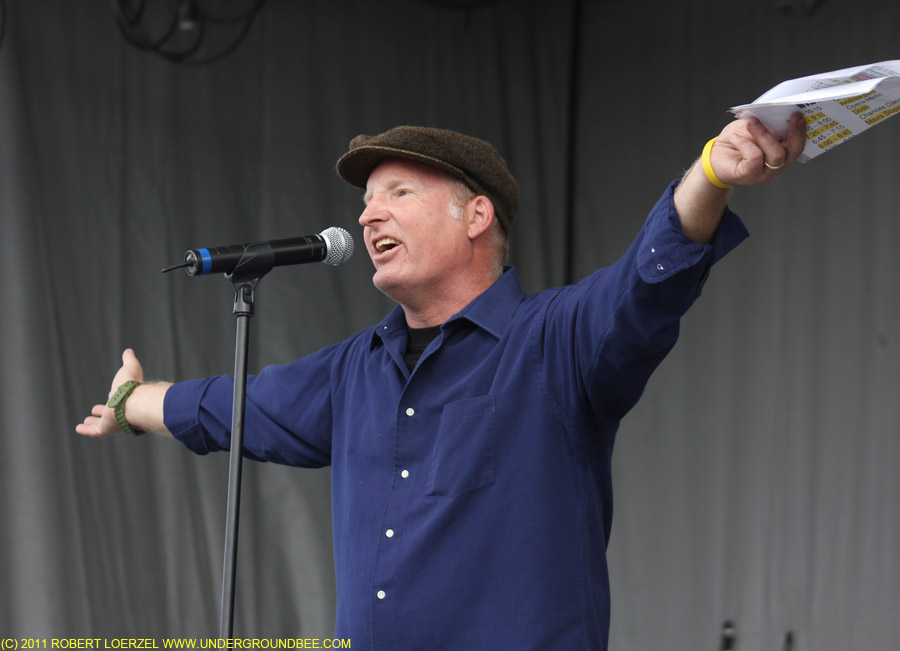
The Hideout celebrated its 15th anniversary in true Hideout style, with a day full of top-notch music. Even the weather turned out pretty nice on Saturday (Sept. 24) — a little chilly at times, but without the downpours of rain or hail that had been predicted. It was a perfect day for the Hideout Block Party, and the diverse concert lineup was a superb representation of musicians who consider the Hideout as their home base, stars who have played there in the past and simply great musicians.
During his set (the final one of the night), Andrew Bird reminisced about sleeping in the Hideout’s upstairs offices a few times! “I don’t know what would’ve happened if it weren’t for the Hideout,” he said, echoing remarks a lot of people on the stage made throughout the day. Bird played several of his most popular songs, but he also tried out several new tunes, bringing out Nora O’Connor to sing harmony vocals (and a verse on one of the songs). His encore was a lovely cover of the Handsome Family song, “So Much Wine” — an apt choice.
Earlier, Bird and O’Connor both made guest appearances during a rousing set by Mavis Staples, who raved about how much she loves the Hideout. “If I could be, I’d be here every day,” she said. “They treat us like royalty.” Staples also made some cutting remarks about the turmoil in today’s American politics, adding an even more passionate edge to her songs that evoke the civil rights movement of the 1960s. That “tea” that’s become a symbol of conservative Republicans? Staples said it’s Kool-Aid. Bird joined in when Staples played the Band’s “The Weight,” and Staples called Nora O’Connor (who did backup vocals on the last Staples album) her “sister.”
Another highlight was the set by the legendary Booker T. Jones, who played some of his recent material as well as the most famous songs he wrote back in the ’60s: “Time Is Tight,” “Born Under a Bad Sign” (originally recorded by Albert King, written by Jones and William Bell) and, of course, “Green Onions.” Jones played guitar on a few songs, but the Hammond organ (played through the Leslie rotating speaker cabinet) is truly his instrument, and those thick notes sounded as cool as ever.
The set by Jon Langford’s Skull Orchard was deepened by the inclusion of the Burlington Welsh Men’s Chorus, who added their strong voices to Langford’s songs inspired by his memories of Wales. Earlier, White Mystery rocked with typical abandon for the small crowd that showed up at the start of the day, with their red hair flying. Kids These Days played a lively blend of musical styles (hip-hop, indie rock, horns). The Eternals were even funkier than usual. Andrew Bird’s drummer, Dosh, also played a short set of his multilayered instrumental compositions, which led into Bird’s set and the appearance of an illuminated whale coming through the crowd, courtesy of the musical performance art group that calls itself Opera-Matic. That’s just the sort of thing you’d expect to see at a Hideout Block Party.

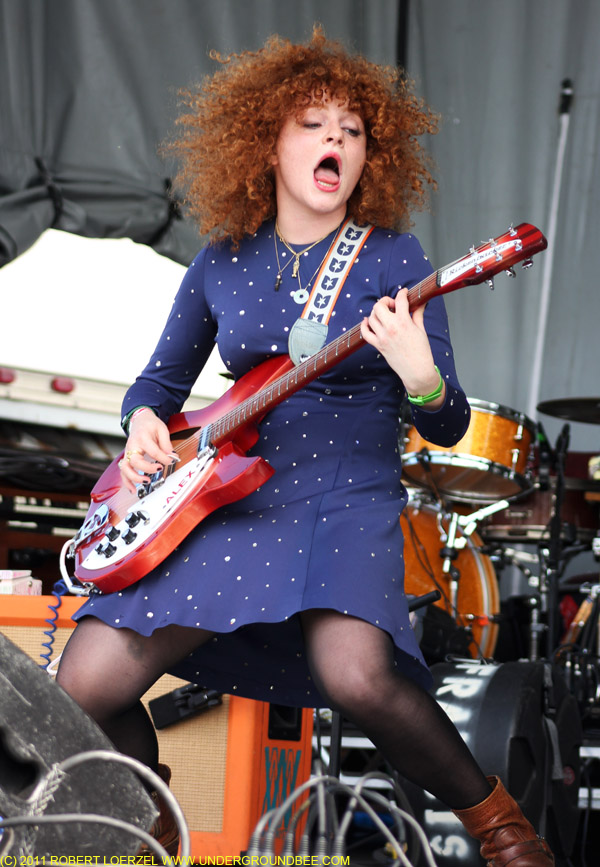
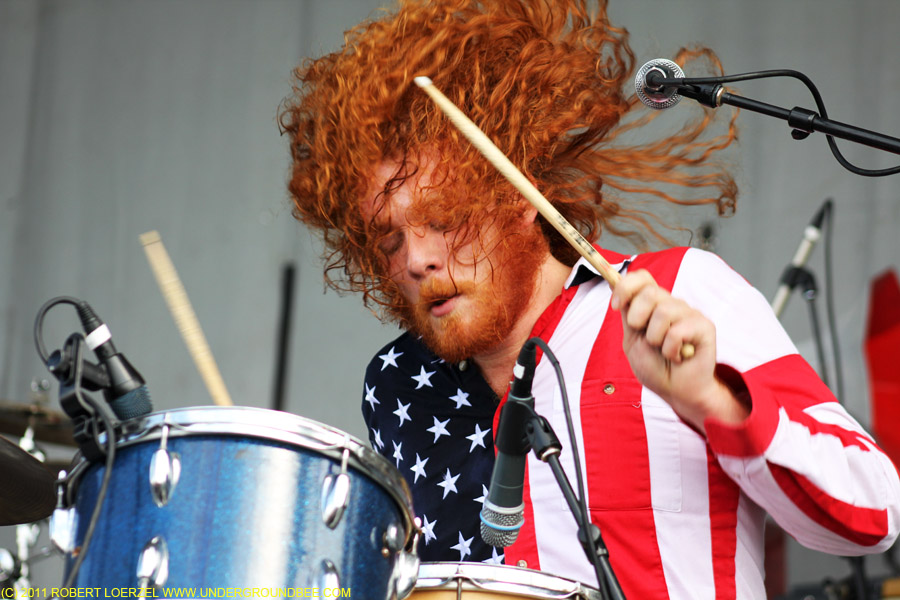
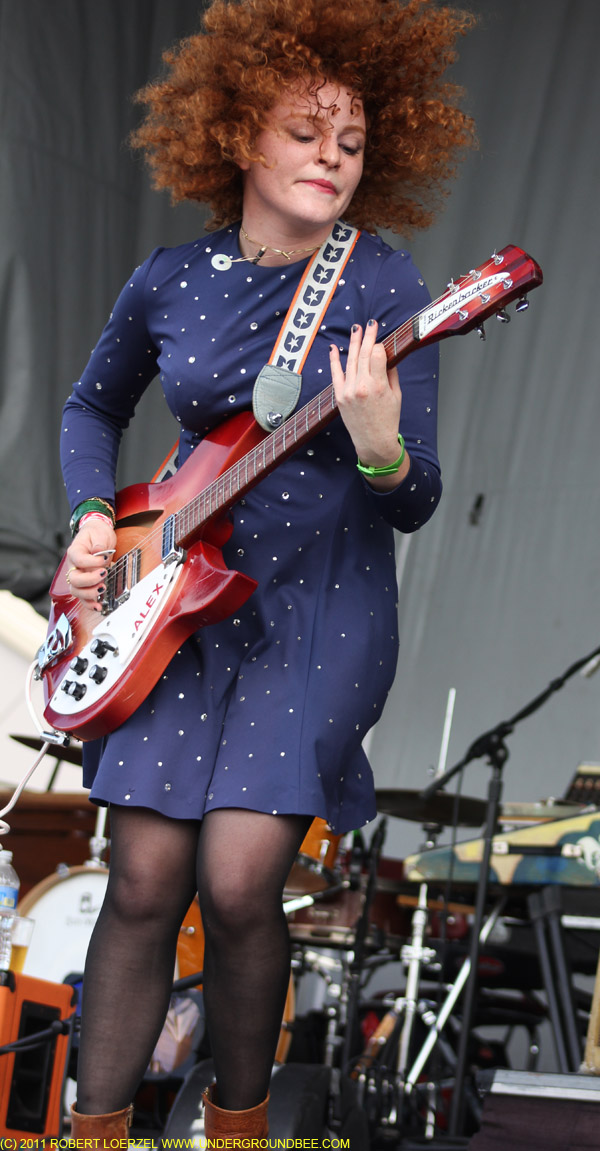
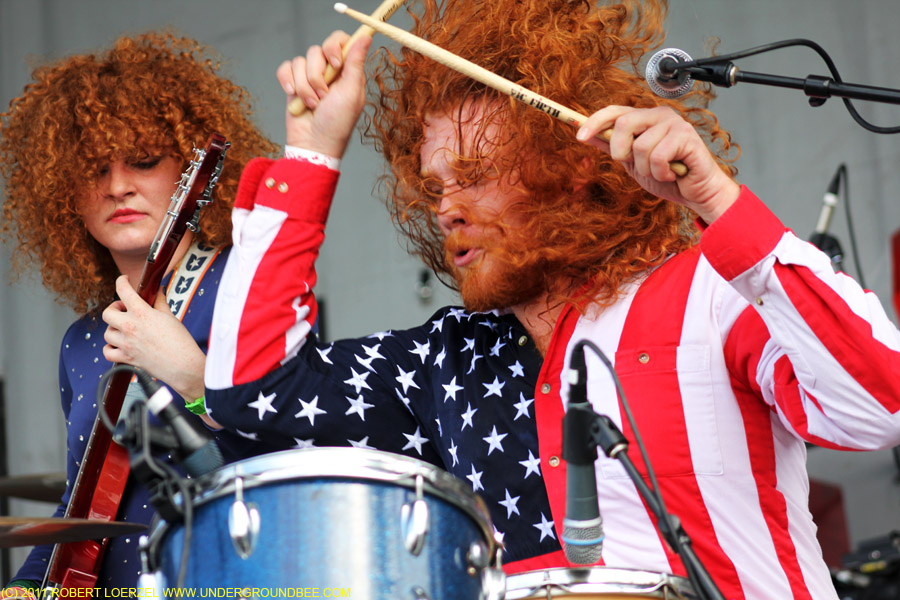
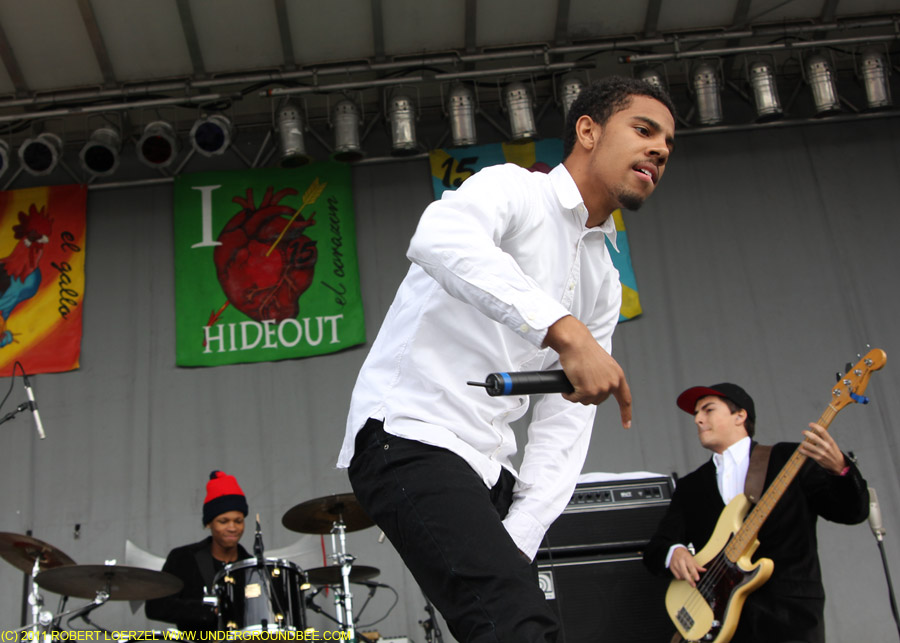

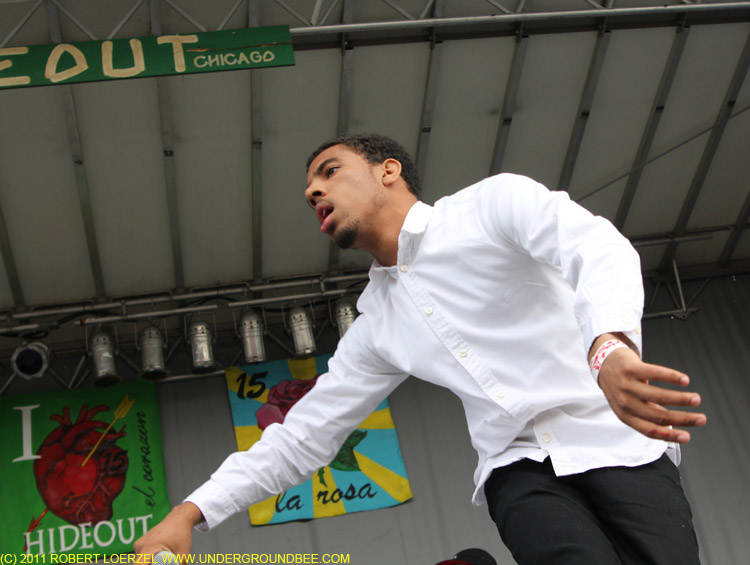
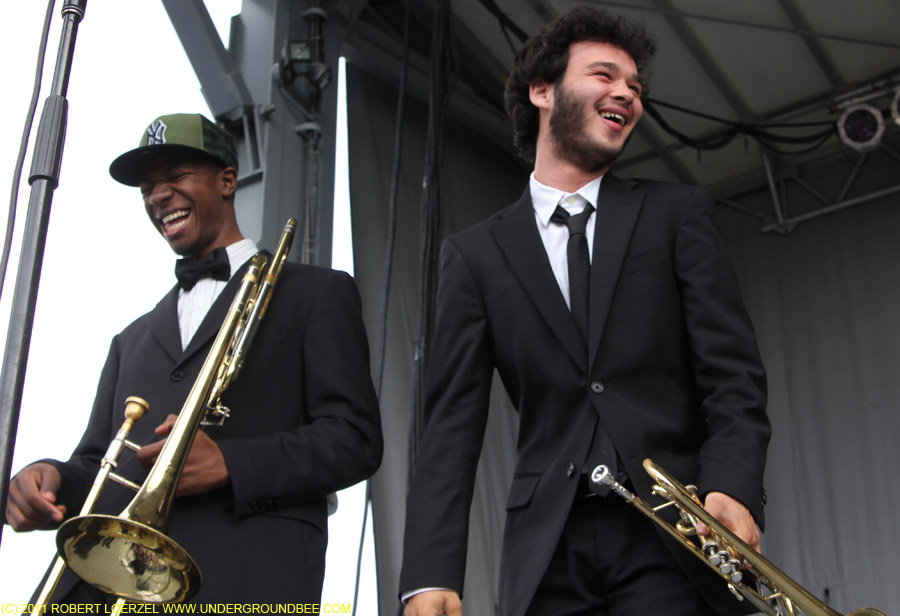
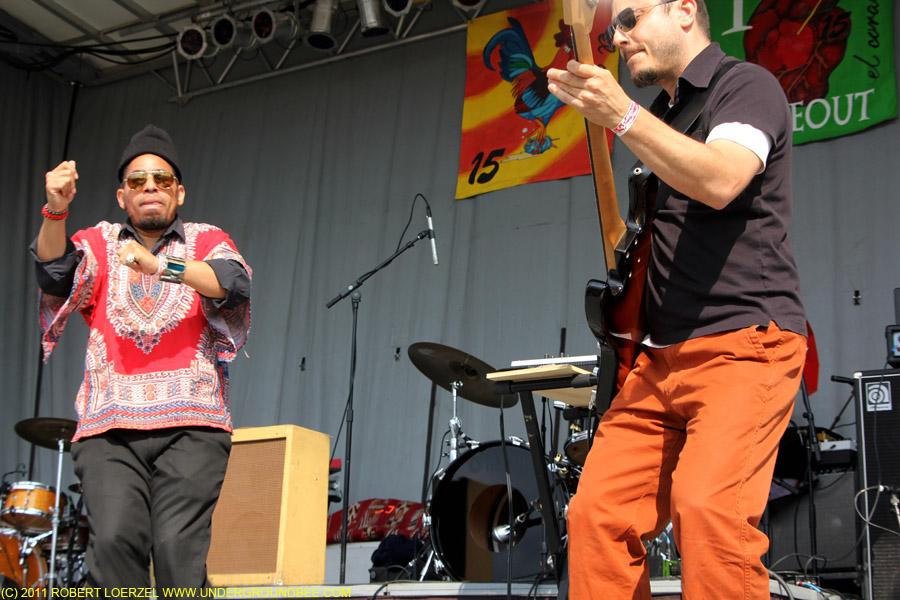
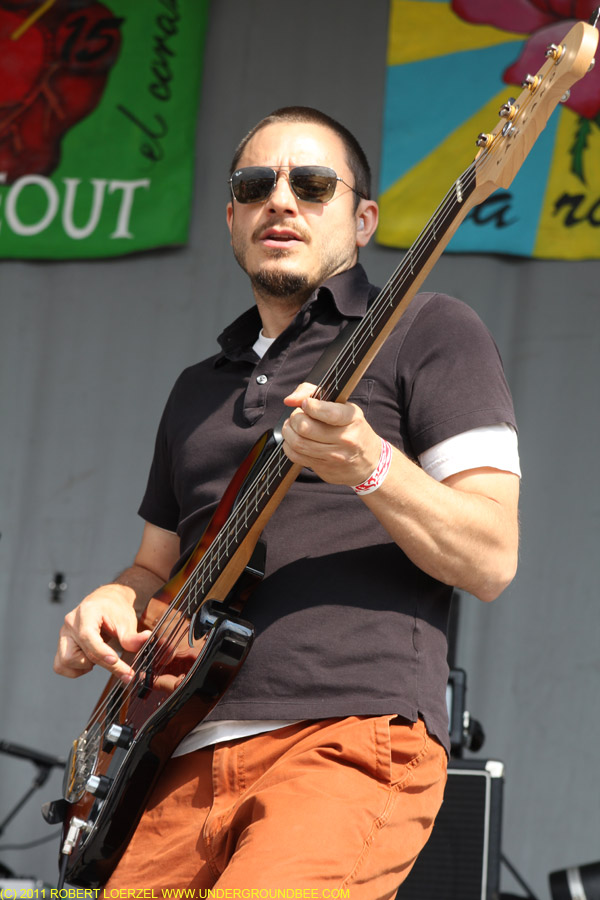

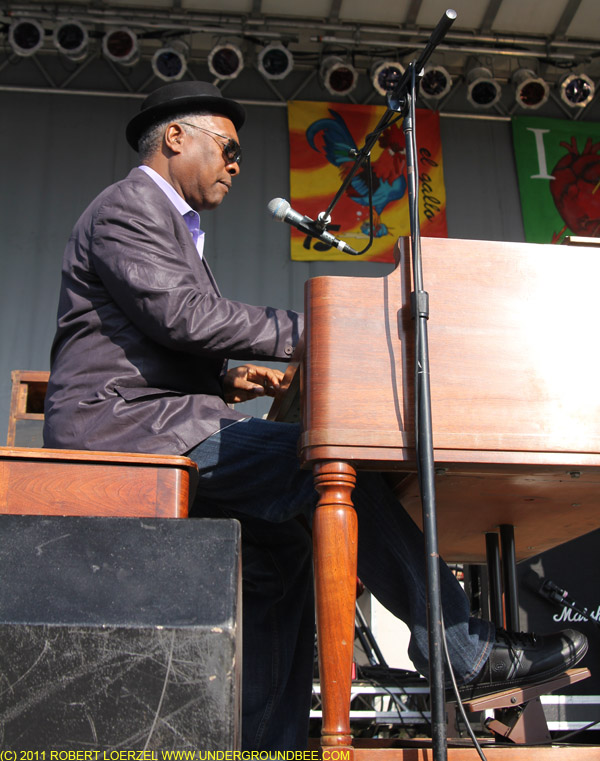
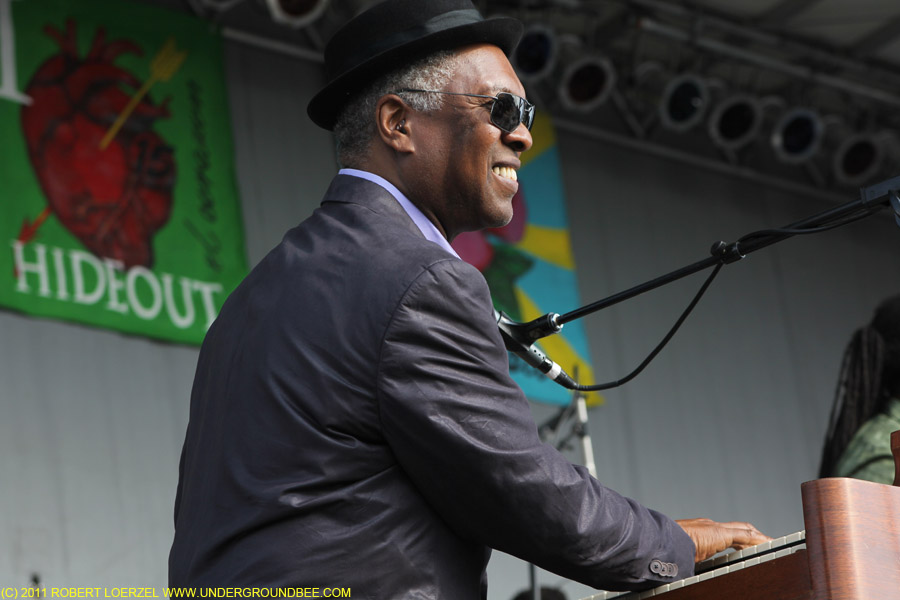

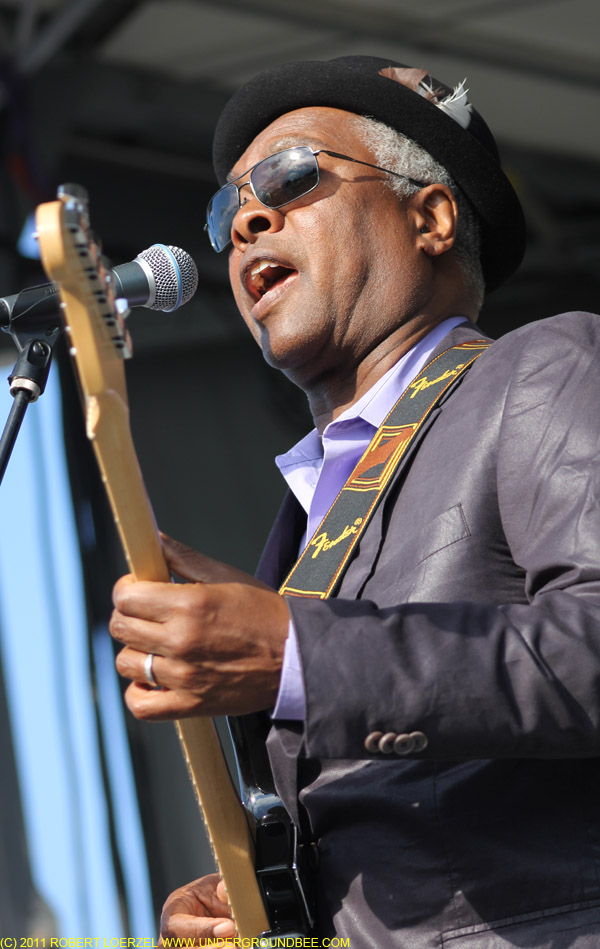
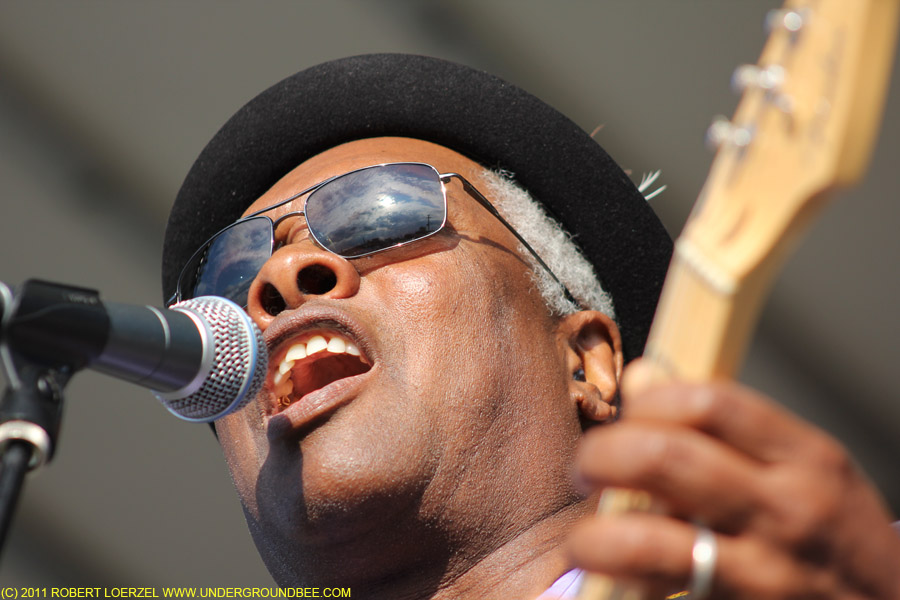
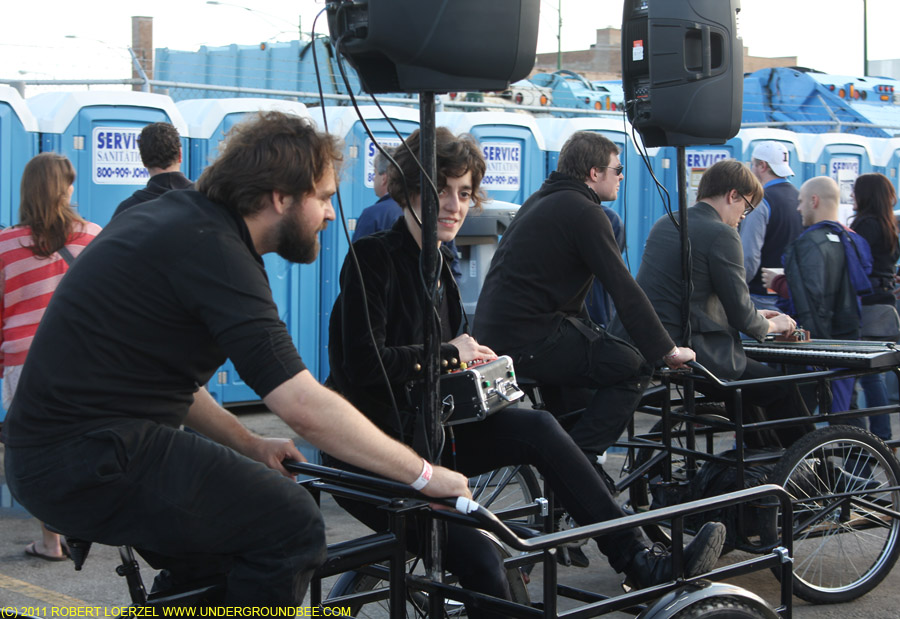
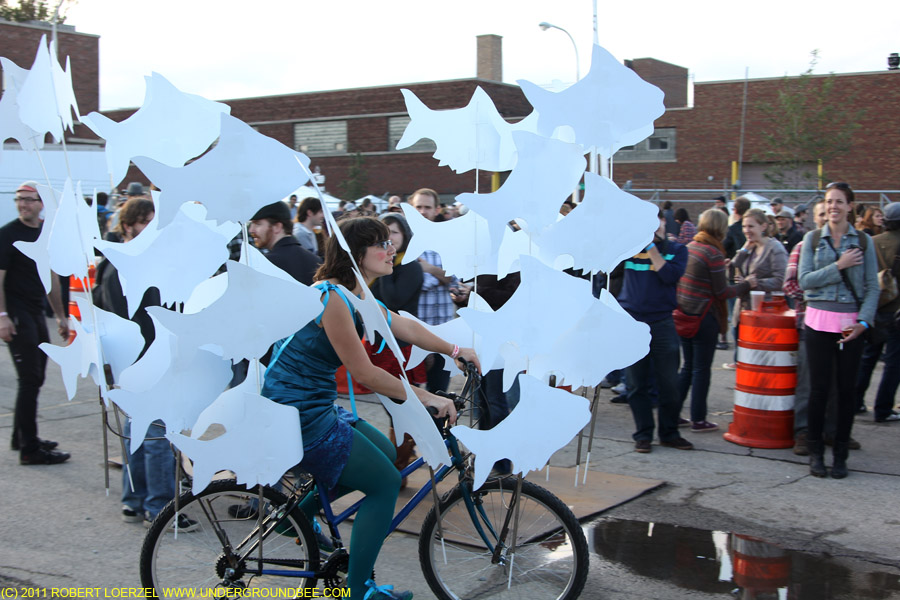
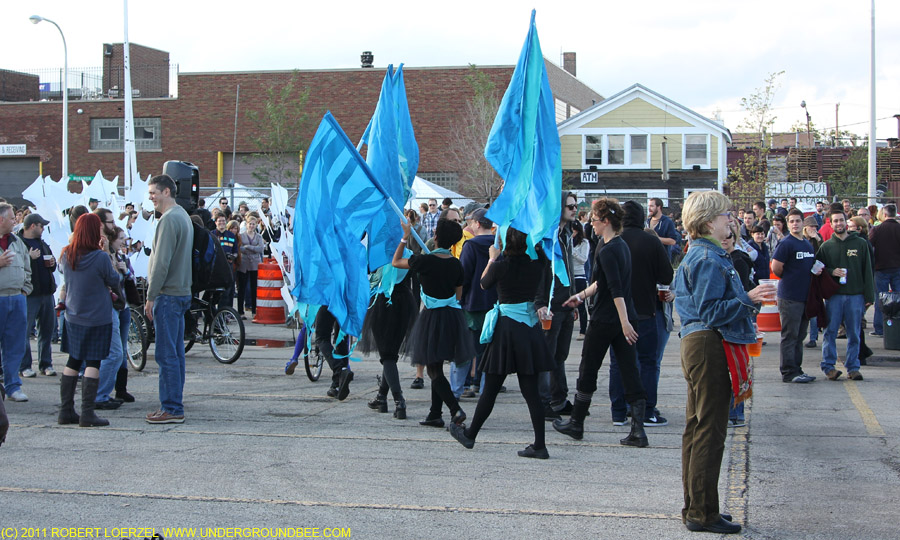
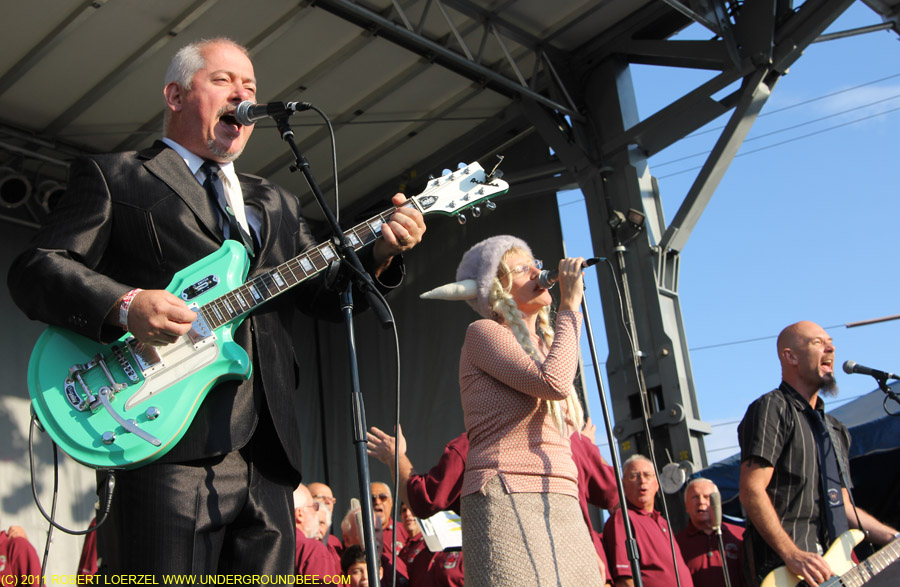
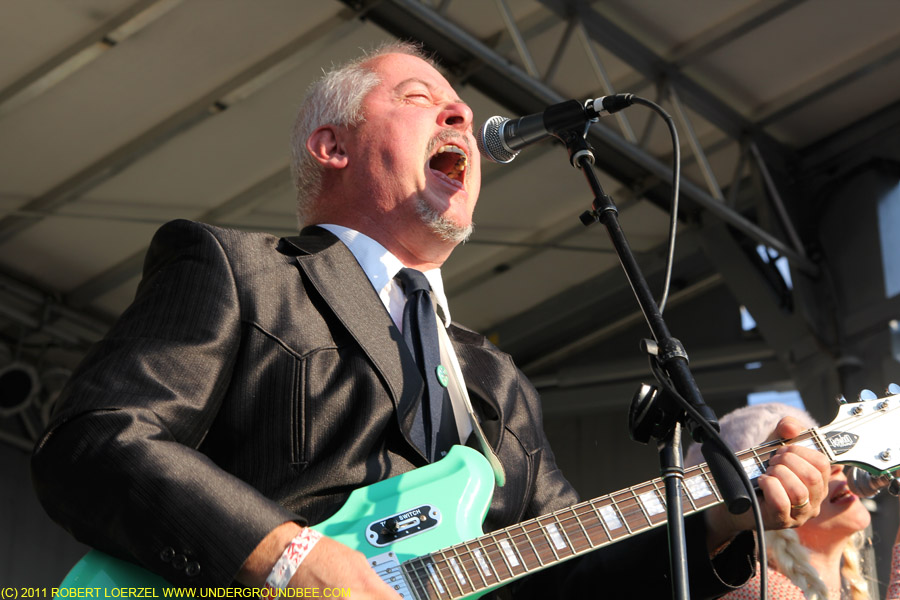
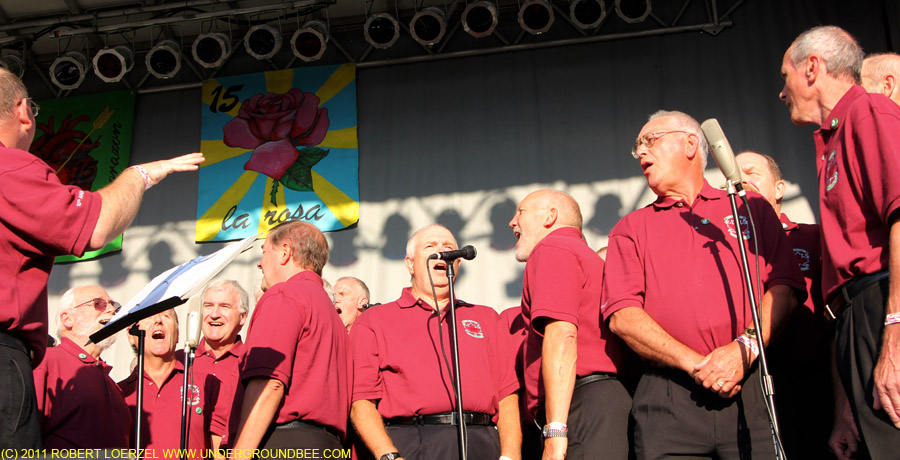


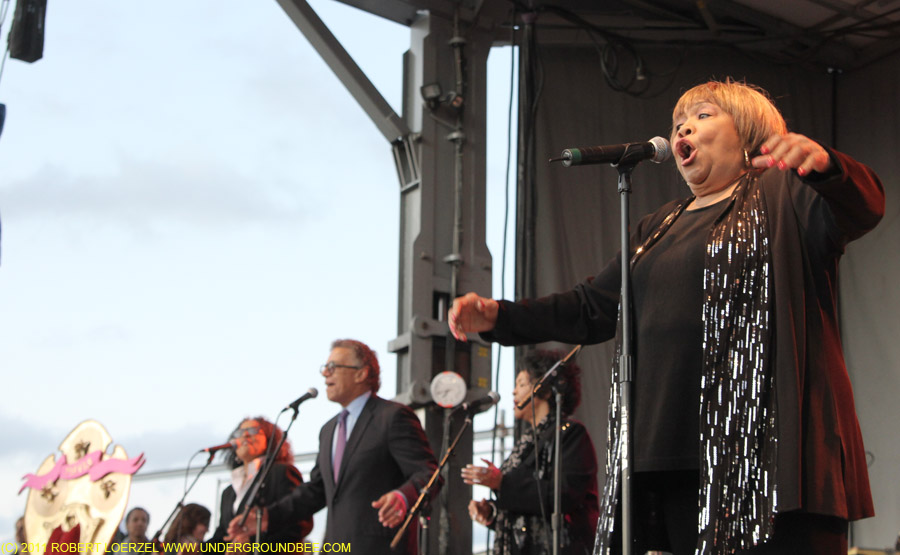
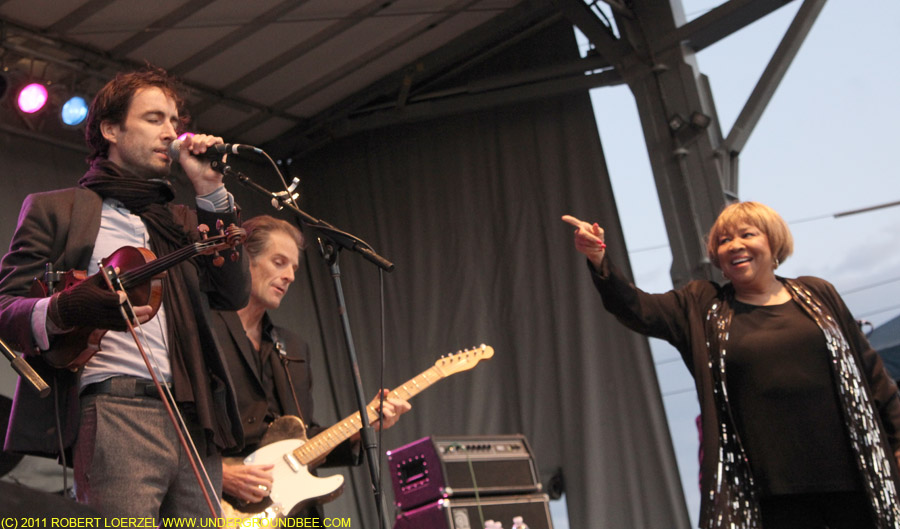
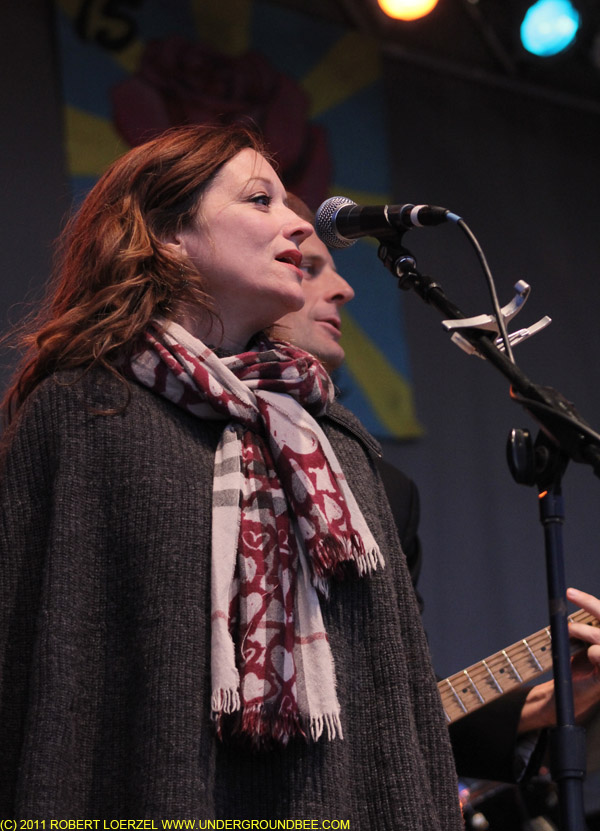
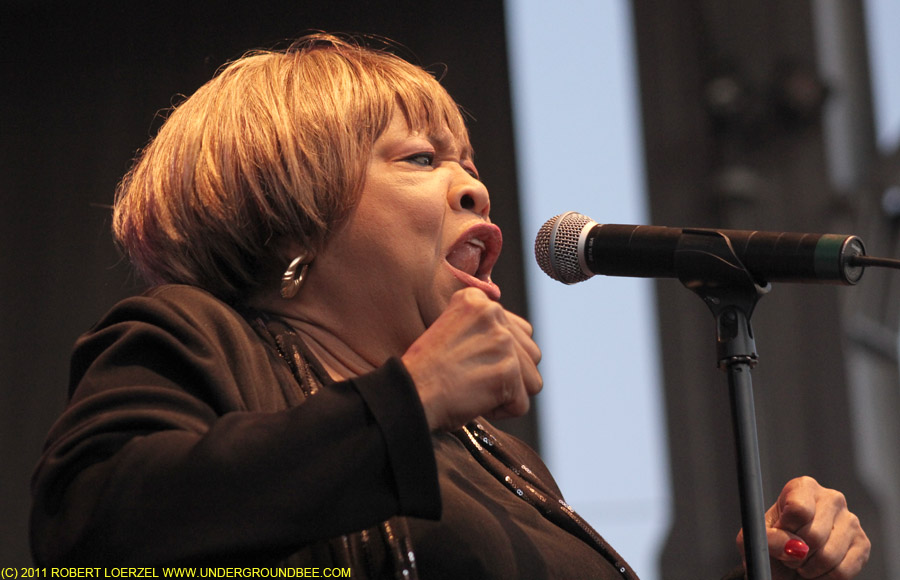






Some Hideout prehistory
The Hideout celebrates its 15th anniversary with the annual outdoor show known as the Hideout Block Party this Saturday. And tonight, there’s a photo exhibit across the street at High Concepts Lab. I’ll have some pictures in that show, along with other photographers — including Jim Newberry, who was interviewed yesterday on WBEZ. The anniversary has drawn some great media coverage this week, including: Althea Legaspi’s story for WBEZ, Christopher Borrelli’s story for the Tribune, and Dave Hoekstra’s story for the Sun-Times.
As some of that coverage notes, the Hideout’s actually much older than 15 years. That’s just how long it’s been a music venue. The bar itself has been there since 1934, or longer. (Prohibition? What’s that?) Curious, I hunted through the searchable archive of Chicago Tribune article, looking for any references to the old Hideout. I didn’t find any, but I did find a few stories about happenings near the corner of Wabansia and Elston, which is the Hideout’s neighborhood.
According to this story, from Dec. 7, 1899, the area was known as “The Valley” back then, and it sounds like a rather ramshackle sort of place. If you wanted to demolish a building in that era, you could just put up a sign saying “HELP YOURSELF,” and the neighbors would promptly tear it apart. And there was a character in the neighborhood known as “Jack the Ripper.” Note that the address of this house and stable is shown as 55 Wabansia. This was Chicago’s old street numbering system, which changed over to the current system in 1909. 55 Wabansia would have been very close to where the Hideout stands today, at 1354 Wabansia, maybe a few doors away. According to this story, the house had once been a saloon run by “Old” Keating sometime around the late 1860s or early 1870s.
On Jan. 20, 1925, the Tribune published this reminiscence of what the larger area including Wabansia was like in the 1880s and 1890s:
Not surprisingly, the area near the Hideout saw its share of crimes over the years. Here’s one from Feb. 27, 1902, when a man was robbed of 20 cents.
The industrial neighborhood around the Hideout included a beer warehouse, which suffered this unfortunate incident, reported on Jan. 8, 1940:
Crime struck again when $25,000 worth of “soap products” were stolen in a hijacking at Wabansia and Elston, as reported on July 18, 1963:
Too bad there isn’t more in the archive about the Hideout itself. But then again, guys hanging out in a bar isn’t the sort of thing newspapers generally write about … unless something bad happens.
The Raincoats at the Double Door
It’s hard to believe that the legendary punk (or post-punk?) band the Raincoats, which formed in the late ’70s, had never played in Chicago until Monday night (Sept. 19), when they headlined at the Double Door. Then again, this is one of those bands whose legend has grown over time, thanks largely to a famous fan, Kurt Cobain of Nirvana, who sang the praises of the Raincoats and helped the band to revive its career.
Their reason for touring now and finally coming to Chicago was the re-release for their second album, 1981’s Odyshape, which is a prime example of what makes the Raincoats’ music so striking and unusual. That sound came through in their live show, too — which included songs from Odyshape as well as the Raincoats’ 1979 self-titled debut. The music does seem to form odd shapes, as the violin, guitar, bass and drum lines twitch around one another. The group always sounded a bit primitive and imperfect — thankfully, they didn’t fall into the hands of a producer who tried to smooth out all of the rough edges on those early albums. The current lineup of the band includes founding members Gina Birch and Ana da Silva, along with violinist Anne Wood and drummer Vice Cooler. In concert Monday, their music still sounded primal and peculiar.
The Necks at the Hungry Brain
Chicago’s Hungry Brain hosts improvisational music every Sunday — jazz and other hard-to-define sounds — with help from the Umbrella Music organization. It’s a quirky little venue that feels like a Beatnik’s living room grafted onto an old-fashioned bar. This past Sunday (Sept. 18) the Hungry Brain hosted a rare local appearance by the esteemed Australian band the Necks. This group sticks with a formula — album-length pieces of music that build from a quiet motif to layers of shimmering sound and then subside back to silence — but it’s a formula with infinite possibilities, after all. The two sets they played Sunday proved that. The Necks did it all with piano, upright bass and drums, a fairly standard jazz combo arrangement that yielded far from standard results. At times, the oscillating patterns of the three instruments sounded electronic or orchestral, despite the apparent lack of special effects.
thenecks.com
Charles Bradley at Brilliant Corners
Another one of the year’s standout records is No Time for Dreaming by Charles Bradley, a terrific soul singer in the style of James Brown who’s belatedly getting attention after decades of obscurity. Read his bio here: http://thecharlesbradley.com/#bio. Bradley’s been through a lot over the years, including the experience of grieving over his brother’s murder. He pours those experiences into his songs, and when he played Saturday (Sept. 18) at the Brilliant Corners festival, the songs were bursting with emotion. There were sexy songs, too, and Bradley danced with come-hither moves. And what a voice this guy has. Some of his soul shouts gave me chills.
He asked the crowd to listen to the words of the final song of the set, “Why Is It So Hard,” saying, “Listen to the lyrics and you’ll know the story of my life,” he said. “It’s taken you to bring me forward to do some good.” His feelings clearly came out of real experience as he belted the chorus, “Why is it so hard to make it in America?” As the curtain closed on the stage, Bradley jumped down and hugged everyone he could.
Bill Callahan at Brilliant Corners
Cryptic singer-songwriter Bill Callahan’s record Apocalypse is one of the year’s best, and his new songs sounded brilliant Friday night (Sept. 16) at the Brilliant Corners of Popular Amuseuments festival in Chicago. So did his older songs. Callahan’s two backing musicians fleshed out Callahan’s spare guitar playing without overwhelming it. Matt Kinsey’s electric guitar lines sounded like extensions of what Callahan was playing, integral and necessary parts of the melodies, as opposed to decorative layers. Neal Morgan’s drumming did more than keep the rhythm, adding colors to the sound, and intensifying the aggression in certain key moments. “We’re having a slightly better time with each song,” Callahan remarked midconcert, in his low-key manner. That indeed seemed to be the case.
Callahan’s lyrics are sometimes puzzling, inviting listeners to impose their own meanings. During one of the quirkiest songs on the new record, the anti-anthemic anthem “America!,” Callahan slipped into a bit of “Amazing Grace.” Callahan’s singing was understated, but he conveyed a great deal of melody in a few notes.
Brilliant Corners of Popular Amusements

A new festival made its debut in Chicago this past weekend: Brilliant Corners of Popular Amusements, which combined rock and world music with circus acts and a carnival in Eckhart Park. I was there Friday and Saturday. The festival is an interesting concept, and the music lineup was strong, but attendance was spotty. The chilly weather may have been partly to blame, as well as the admission prices: per night to see music, per circus act. Those aren’t exorbitantly high prices compared to many concerts, but they’re steeper than what people expect to pay for a street festival. And what about getting some interaction between the circus acts and the musicians?
I’ll post separate reviews and photo galleries for the two acts that were the main attractions for me: Bill Callahan on Friday night and Charles Bradley on Saturday. I also dug the Krautrock grooves of Chicago band CAVE, and Sidi Toure’s hypnotic African guitar music on Friday. On Saturday, A Hawk and a Hacksaw were another highlight, with their Balkan and Greek dance rhythms. The final band of the night Saturday was School of Seven Bells, who sounded all shiny and pretty but not terribly exciting, in my opinion. I missed Sunday’s part of the festival, though from the comments I saw on Twitter, it sounds like headliners Shellac drew a good crowd and Dan Deacon was his usual entertaining self.











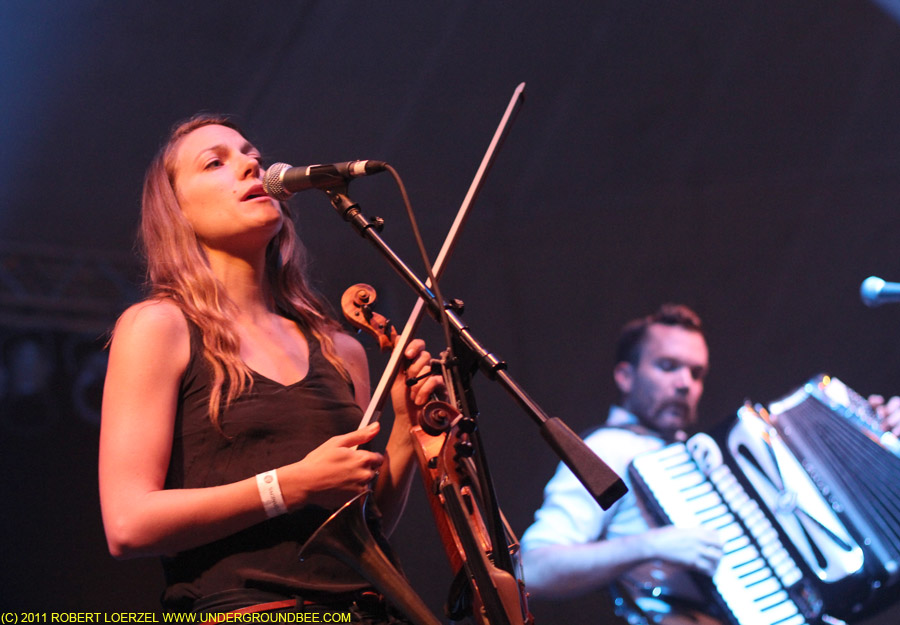

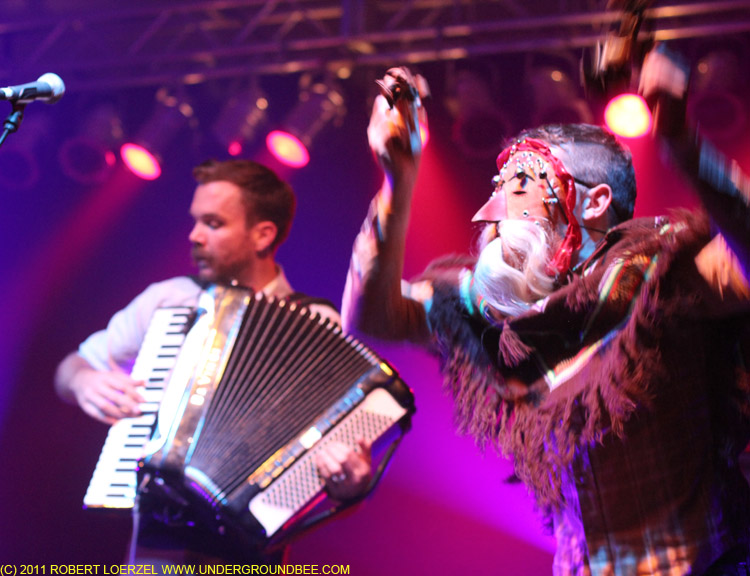
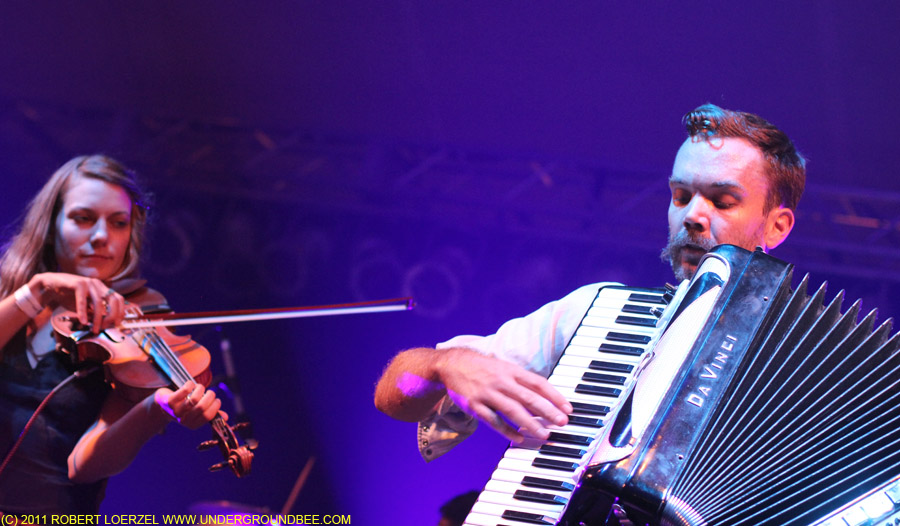
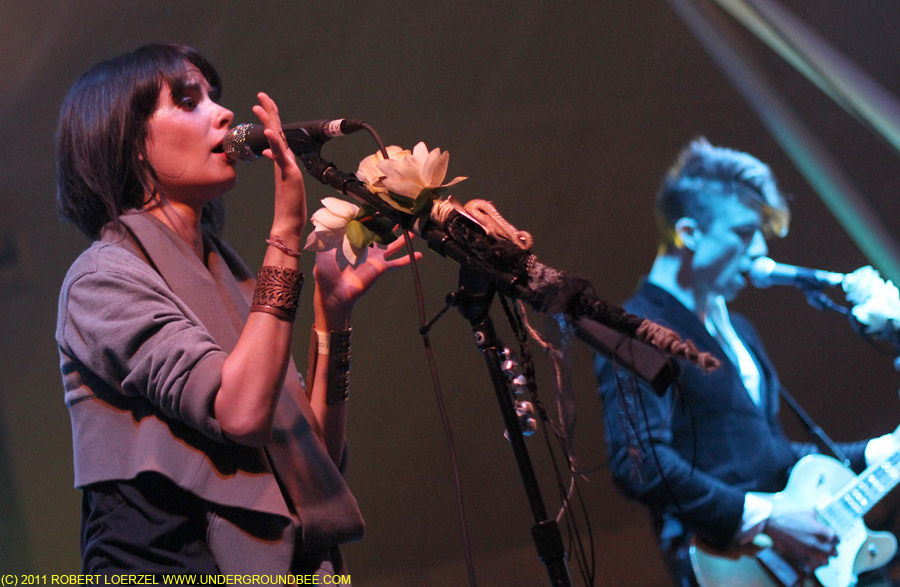
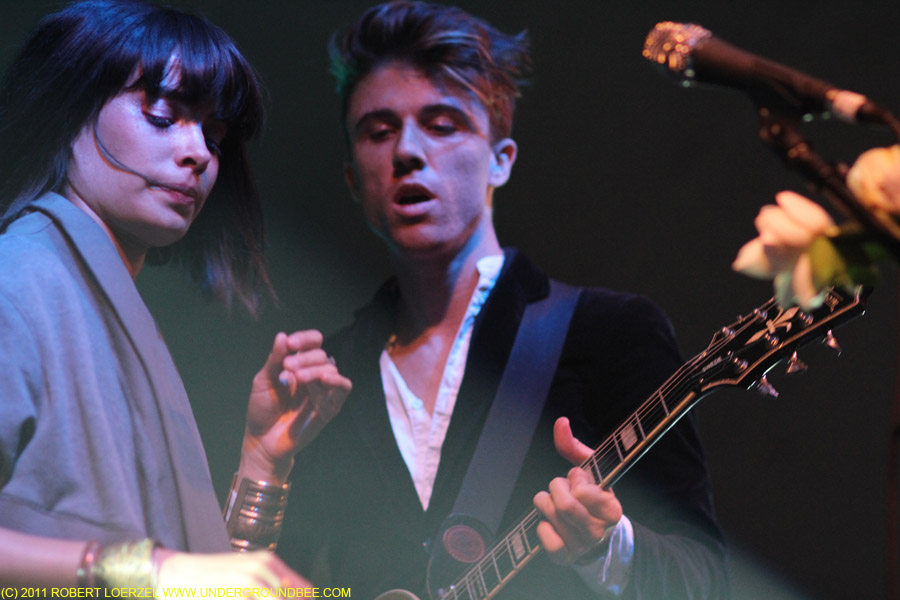
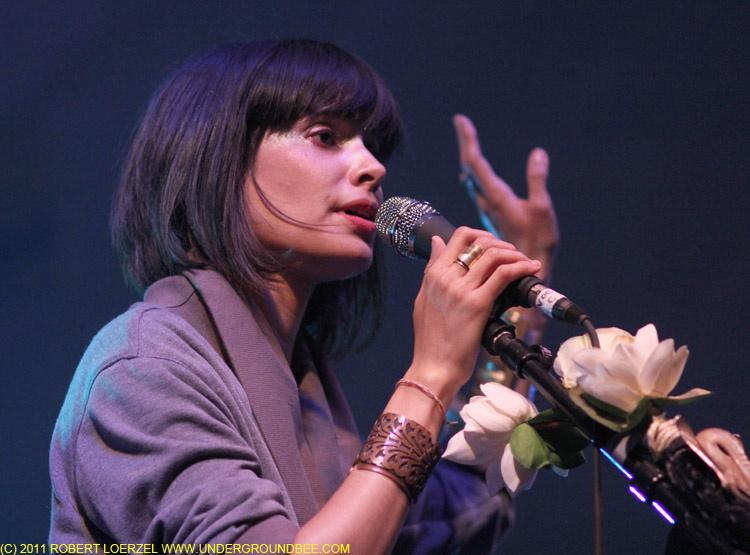
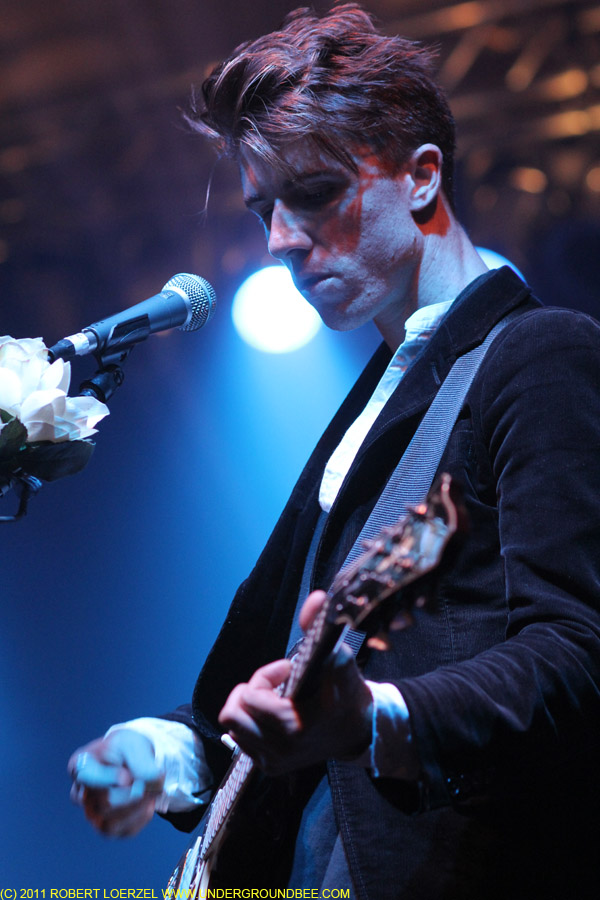
Richard Thompson at Evanston Space
For a long time now, Richard Thompson has been one of the best singer-songwriter-guitarists around, and if you’ve ever seen him live, you’ll know that he’s also an affable raconteur with a charming personality and a quick wit. It was a great pleasure to see Thompson again on Monday night (Sept. 12) at Evanston Space, an intimate venue. And I was fortunate to get a chance to speak with Thompson earlier by phone, for an interview that appeared in Pioneer Press.
As always, Thompson made his guitar sing, often sounding like an entire band — or two or three guitars, anyway. When Thompson plays solo acoustic shows, such as this one, he shows just how much music one player can make with that instrument. It almost seems like magic when Thompson continues playing chords, bass lines or counter-melodies as he solos on top. He had only one guitar with him on the stage all night. It was all he needed.
Thompson played songs from throughout his career, going back to his early days in Fairport Convention for a tribute to Sandy Denny with “Who Knows Where the Time Goes.” (“It was a band of no great consequence,” he said. “We just invented folk rock. Well, bits of it.”) He also played songs from his years recording with his then-wife Linda, including “Down Where the Drunkards Roll” and “I Want to See the Bright Lights.” And Thompson played what I believe are two new songs, one that included the lines “Northern girls will gut you” and “In the dream I’m running,” and another with the line, “Good things happen to bad people.”
The dark, quiet songs were especially haunting: “The Ghost of You Walks” and the sinister “Hope You Like the New Me.” And Thompson’s classic song “Pharaoh” seemed more topical than ever. Introducing it, he said, “This is my song of financial paranoia. Join me. Wallow in it for a while.”
He played a few of the songs requested by audience members, including “Why Must I Plead?” and “Tear Stained Letter,” although he noted that he needed some help on that one, since he was lacking a band. Glancing around the stage and shrugging, he remarked, “I told the band, ‘9 o’clock. Heathrow…’” One side of the room sang the vocal harmonies and the other side struggled to duplicate the song’s sax section. After hearing the audience’s first attempt at singing, Thompson instructed us further: “Harmony. That’s when notes join in a pleasing manner.”
Although Thompson has no shortage of his own songs, he played a few covers, including Chuck Berry’s “Little Queenie.” Afterward, Thompson said being in Chicago inspired him to play it. “I didn’t want to play that song, but I could feel the pull, Chess Studio pulling me.” Later, just as I was thinking about shouting out a request for Frank Loesser’s song “Hamlet (Dog Eat Dog in Denmark),” which I’d heard Thompson play in concert before, he did it. And near the end of the set, he obliged when another audience member called out for his version of Britney Spears’ “Oops! I Did It Again” — a cover that started out as part of Thompson’s 1000 Years of Popular Music project. Yes, it’s a bit of a joke, but it’s also further proof that Thompson can play just about anything.
SET LIST:
Bathsheba Smiles
The Ghost of You Walks
Valerie
Northern Girls (new song?)
Johnny’s Far Away
Pharaoh
1952 Vincent Black Lightning
Little Queenie (Chuck Berry cover)
Who Knows Where the Time Goes?
I Want To See The Bright Lights Tonight
Hope You Like the New Me
Good Things Happen to Bad People (new song?)
Why Must I Plead
Hamlet (Dog Eat Dog in Darkness) (Frank Loesser song)
Down Where the Drunkards Roll
Tear Stained Letter
Oops! I Did It Again (Britney Spears cover)
ENCORE 1:
Cooksferry Queen
Persuasion
ENCORE 2:
One Door Opens
Dimming of the Day
Soul Train 40th anniversary concert
Given how popular the TV series Soul Train was for so many years, it was no surprise that a huge crowd turned out Monday night (Sept. 5) for an all-star concert at Millennium Park’s Pritzker Pavilion celebrating the show’s 40th anniversary. Estimating crowd sizes is difficult to do with any precision, but the emcees said 20,000 or more people had packed into the park. One thing is for sure: Someone was sitting in nearly every seat in the pavilion, except when they got up to dance.
The stars of the concert were the Chi-Lites, the Emotions, the Impressions and Jerry “The Iceman” Butler, each singing a few of their biggest hits, and all of their voices sounded great. They were backed by an orchestra and band conducted by Tom Tom Washington, with top-notch arrangements that fleshed out the songs without overwhelming the vocals.
Gene Chandler was also billed to perform, but he only made it onto the stage for the big finale, when everyone came out for a rousing rendition of Curtis Mayfield’s “People Get Ready.” What happened to the set Chandler was supposed to perform? I suspect that time ran out, because of an alarmingly long gap between the Impressions and Butler, when emcees Herb Kent and Richard Steele were forced to kill time. It’s not clear what was happening there, but it was the one flaw in an otherwise smoothly run variety show. The creator of Soul Train, Don Cornelius, also spoke at the concert, as a new street sign in his honor was unveiled. “This is the biggest thing that ever happened to me,” he said.
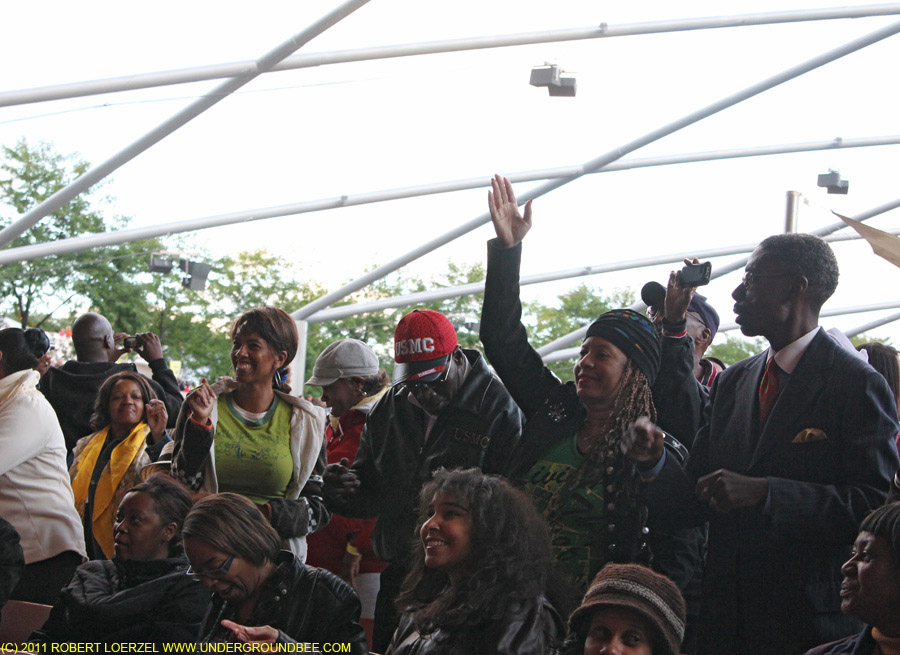
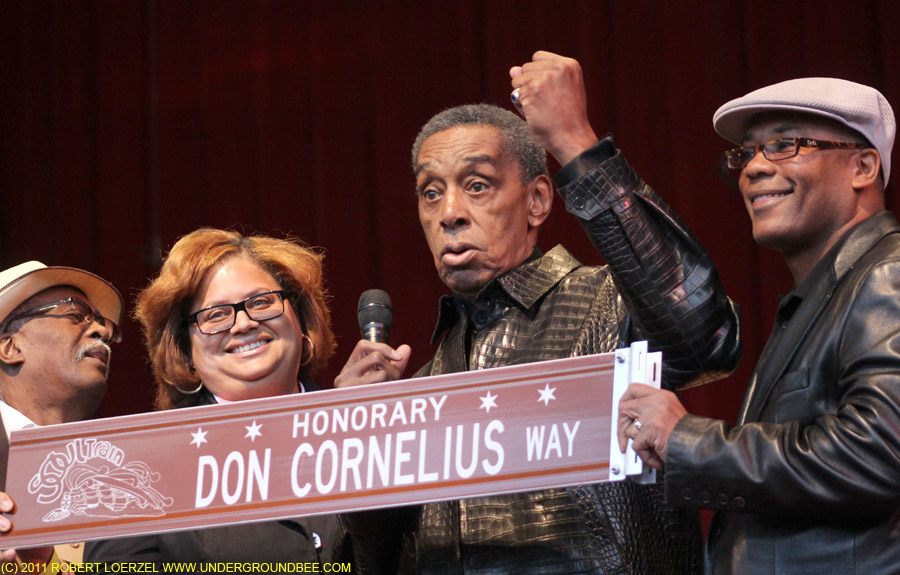
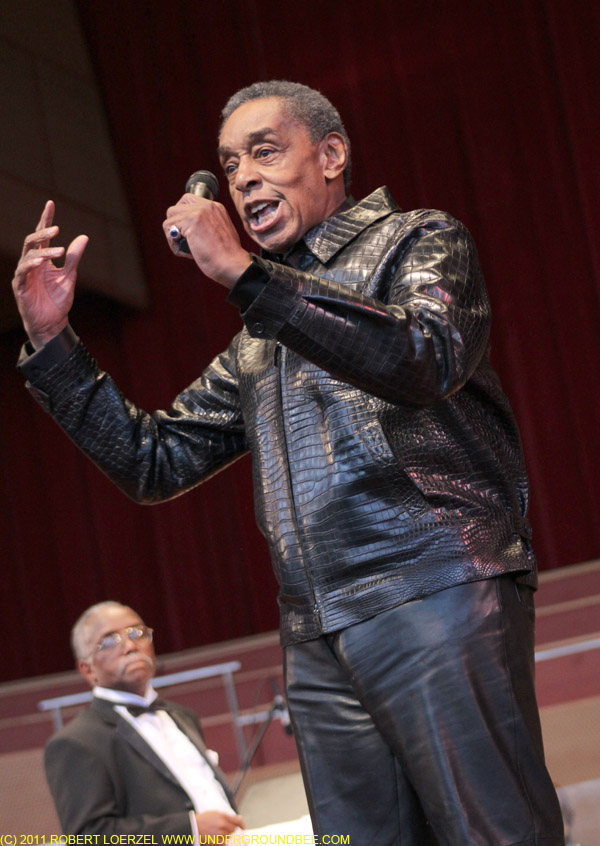

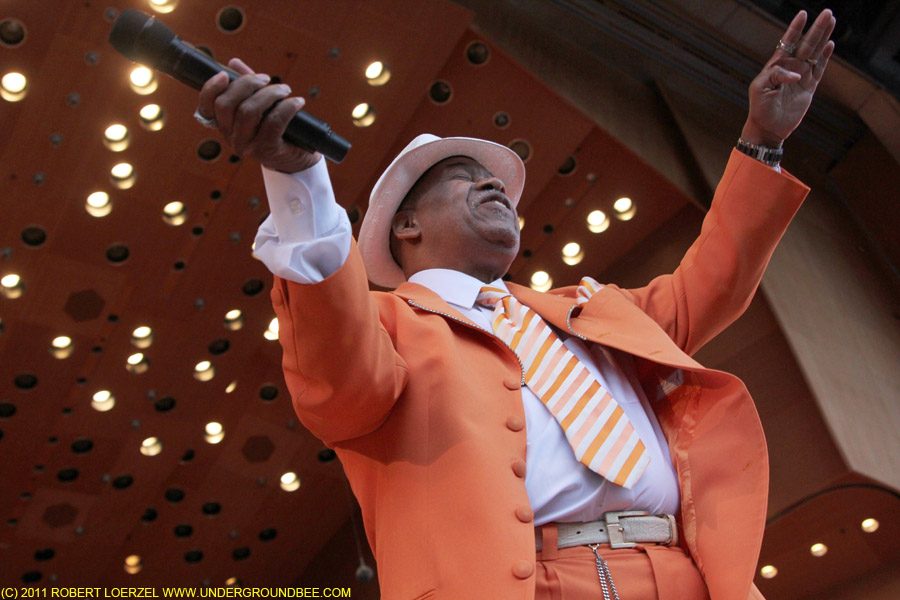
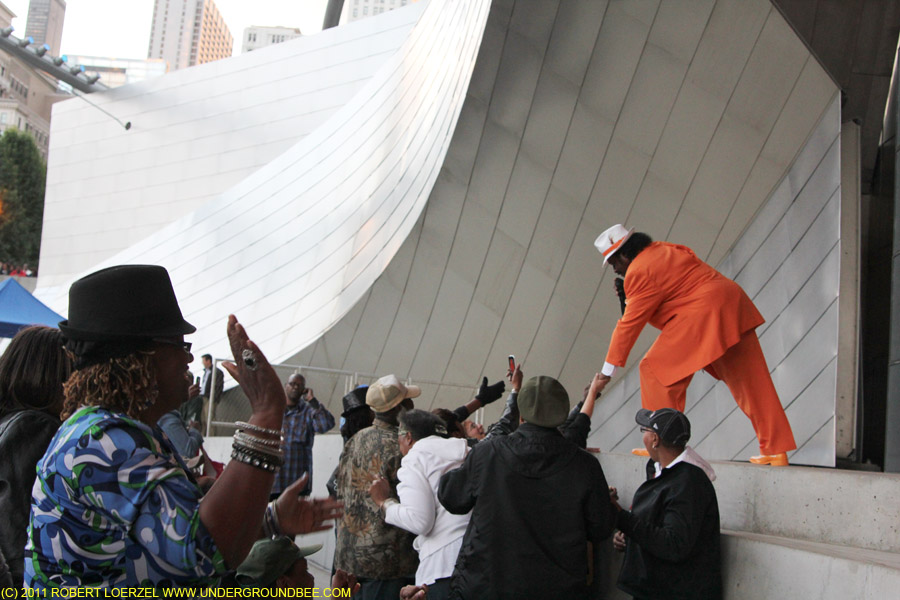
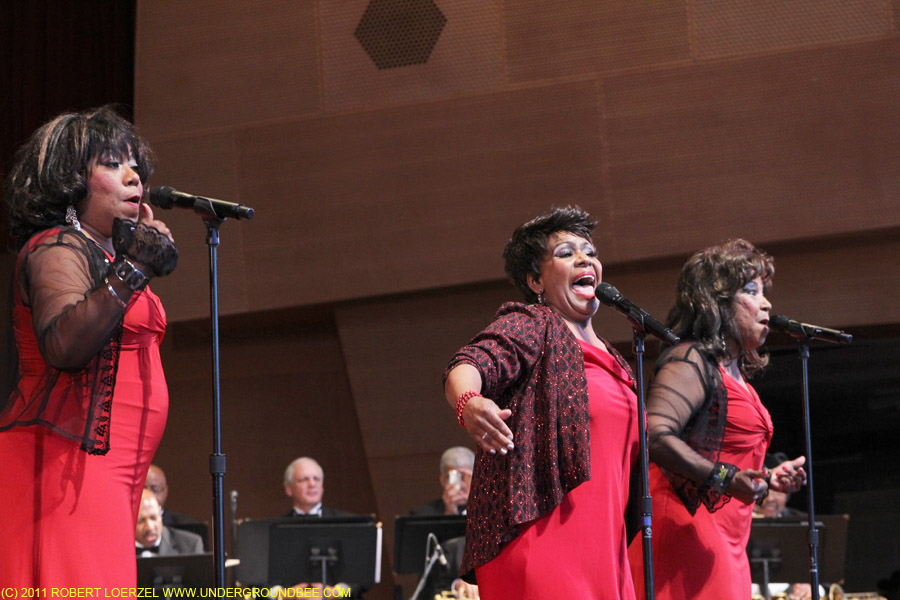
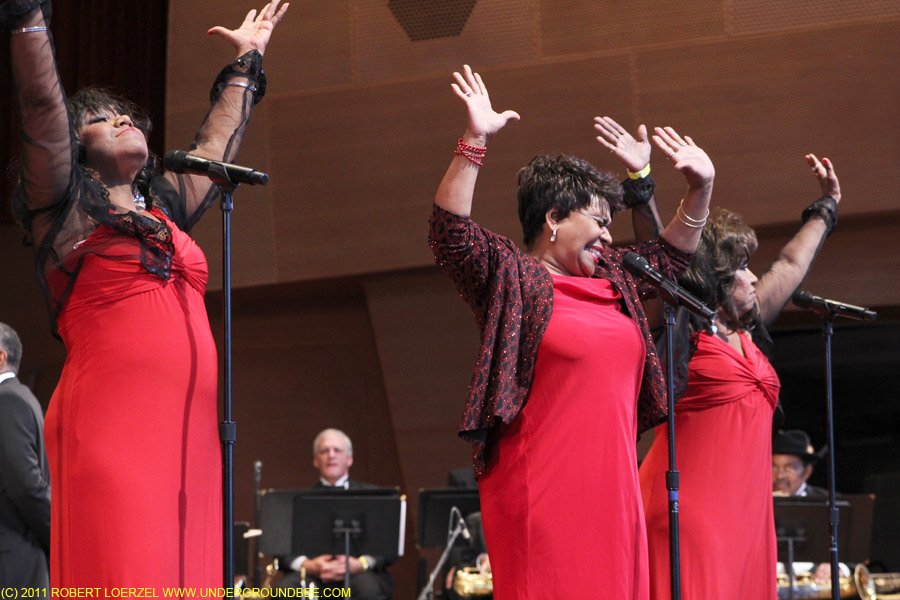
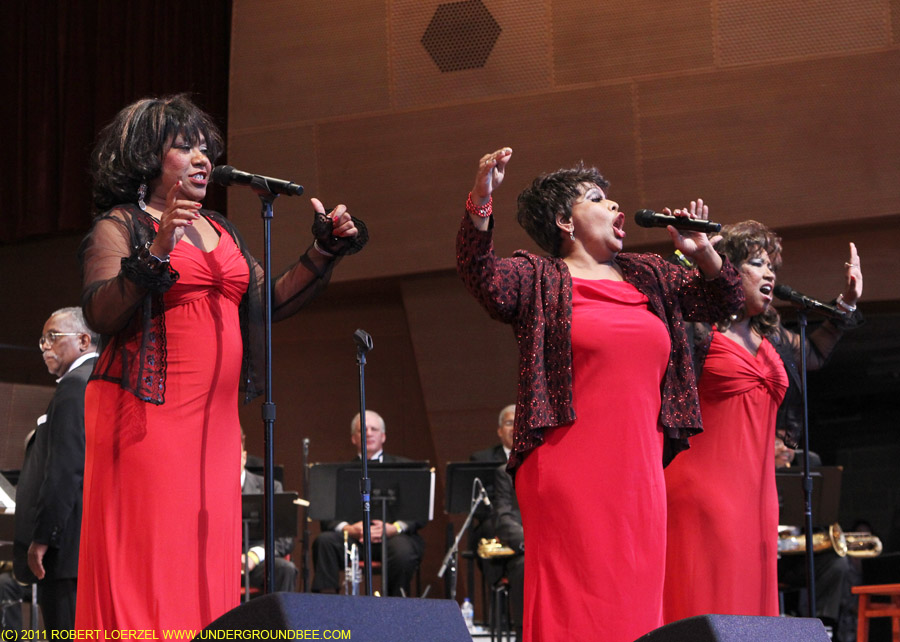
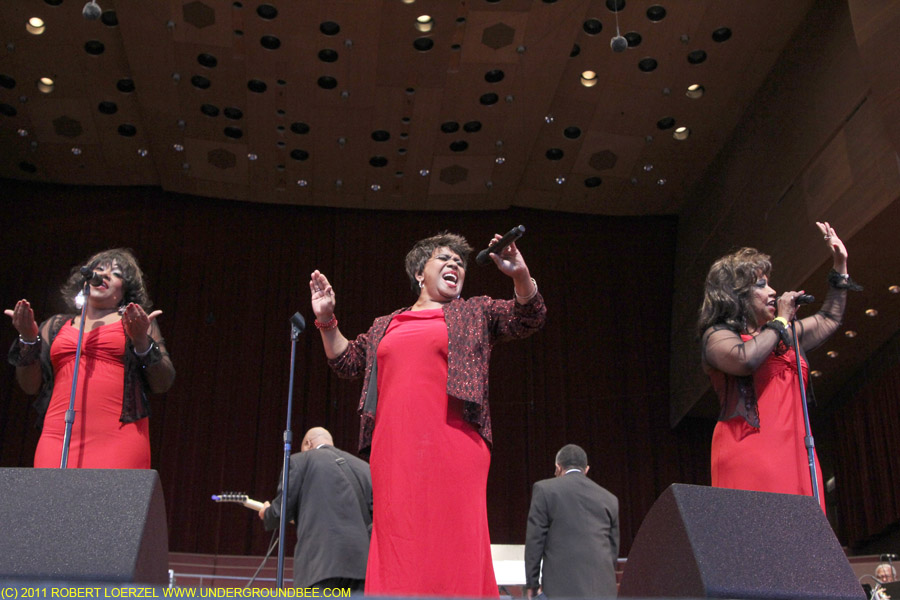
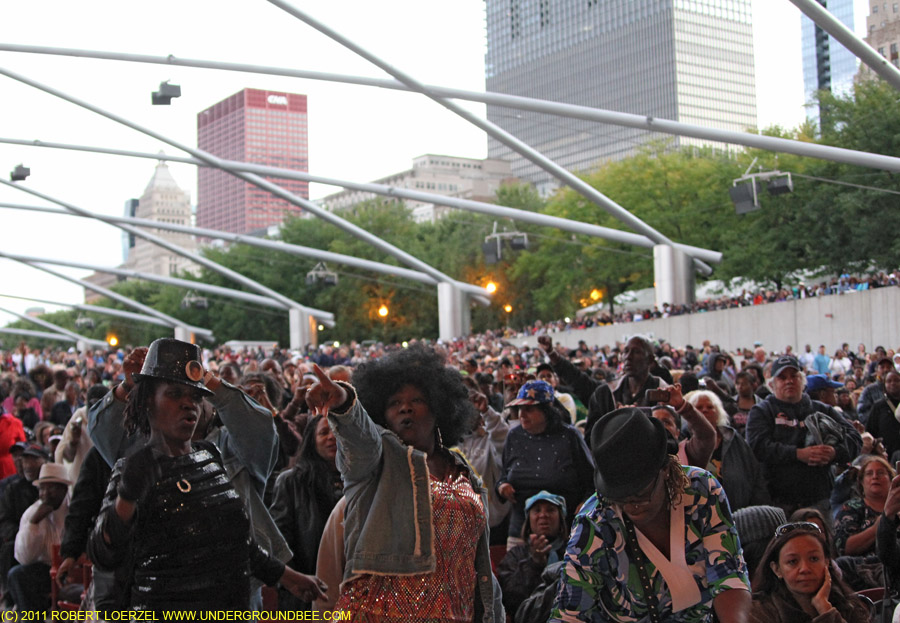
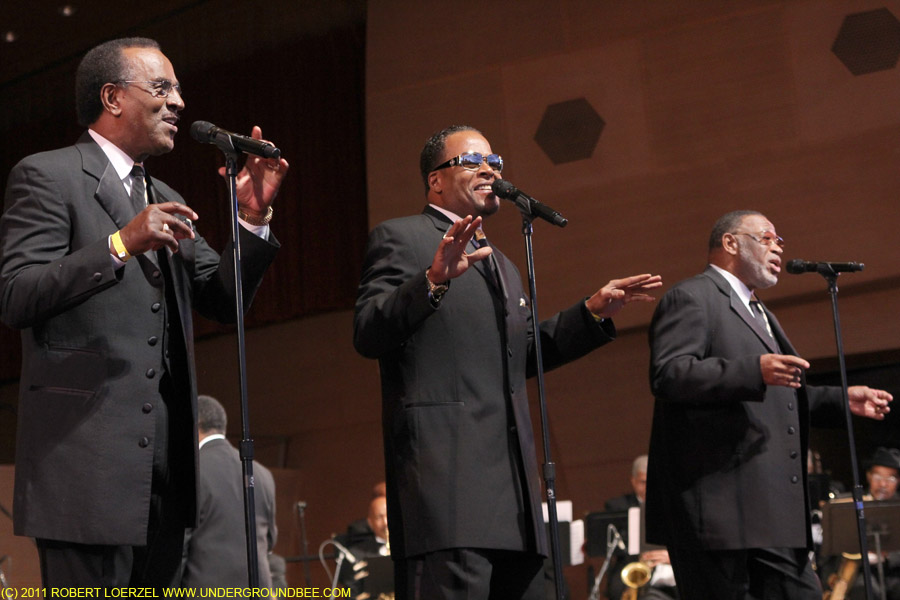
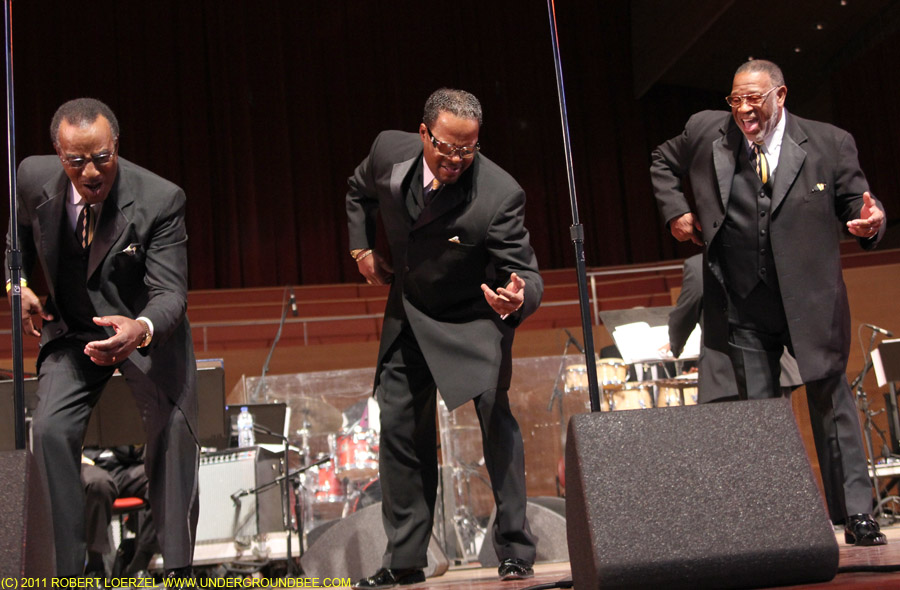
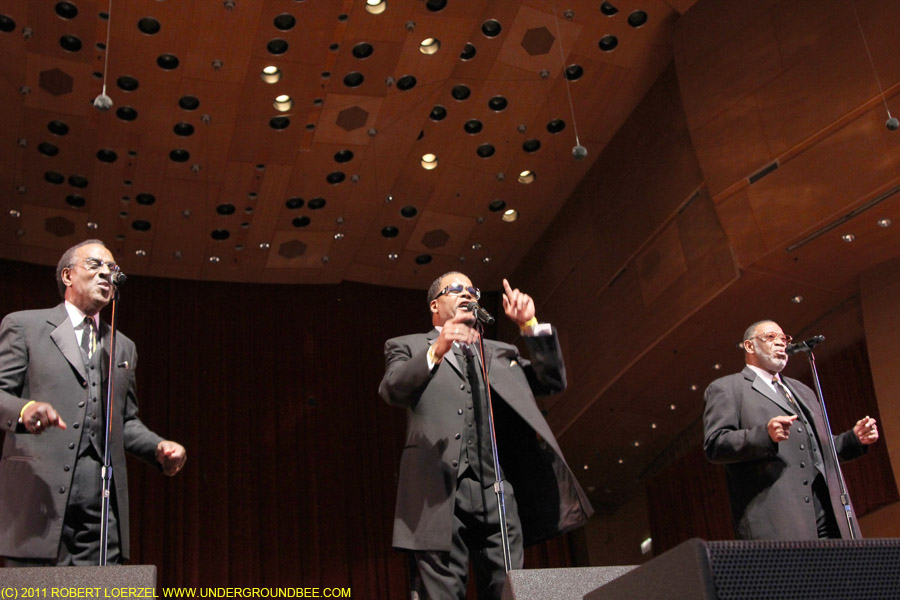
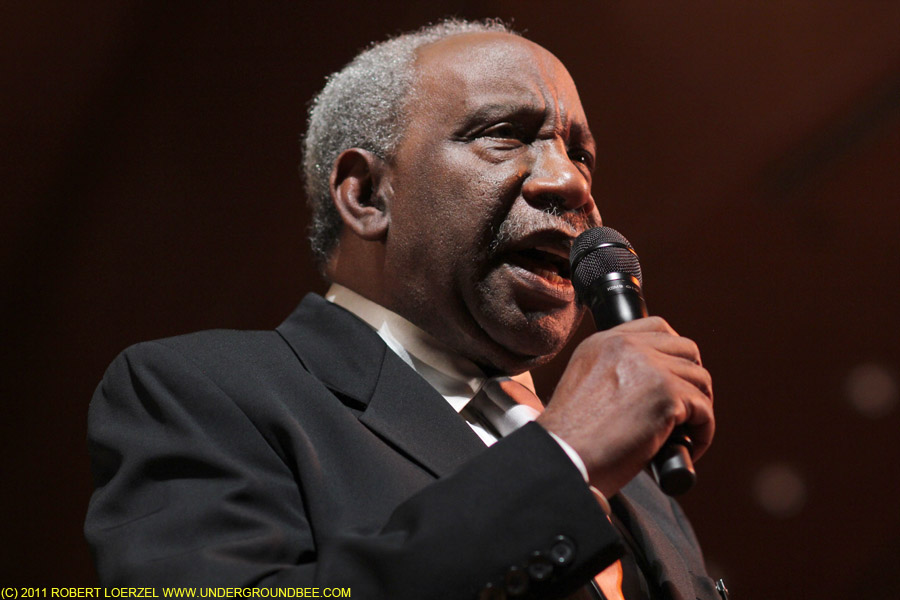
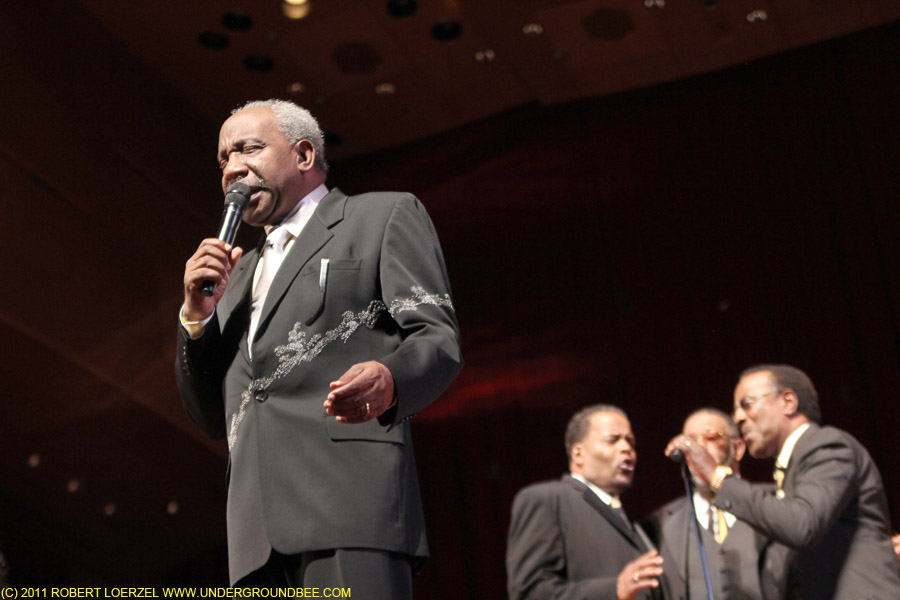
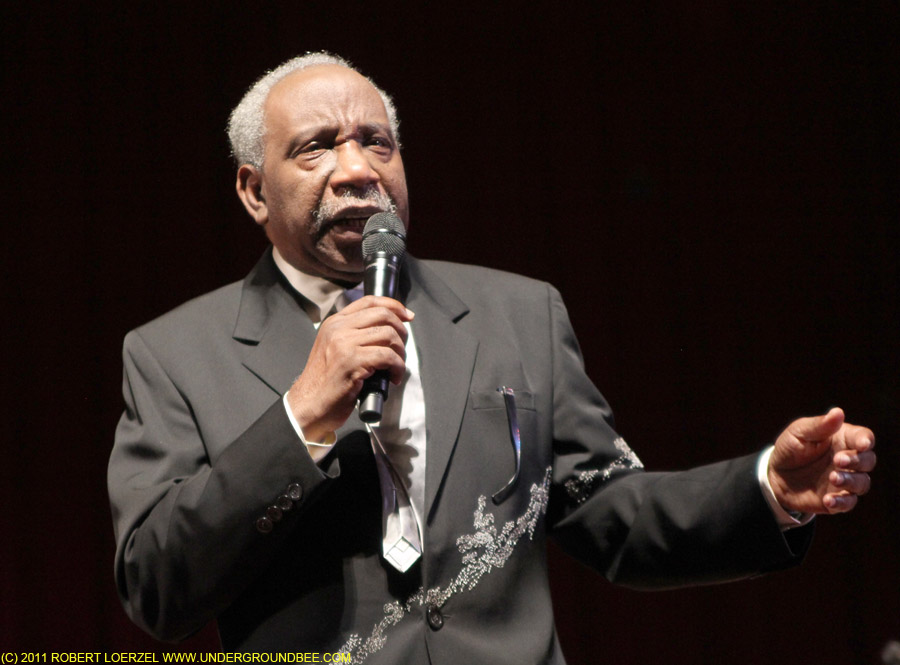
NRBQ at FitzGerald’s
NRBQ played a stupendously fun gig Saturday night (Aug. 27) at FitzGerald’s in Berwyn, but some folks are bound to wonder: Was this really, truly NRBQ? The legendary band was together for a good, long stretch of time, from 1967 until 2004. And now it’s back, but only one of the old-time NRBQ members, Terry Adams, is in the lineup. When Adams formed this newer band in 2007, at first he called it the Terry Adams Rock & Roll Quartet. Now, he’s decided just to call it NRBQ.
It’s essentially a new generation of NRBQ — a key member of the classic band making great music with three talented younger musicians, who are just about a perfect match with the old NRBQ vibe. And they’re not just playing the old NRBQ songs — they have an excellent new album, Keep This Love Goin’. (Order it at www.nrbq.com — and I received a copy straight from NRBQ headquarters in a brown envelope covered with about a dozen postage stamps.)
The lineup includes Scott Ligon, one of Chicago’s most stellar musicians, known for his work with Kelly Hogan and the Flat Five, among many other bands. (He was the subject of a wonderful 2007 cover story by Anne Ford in the Chicago Reader, “The Opposite of Selling Out: How a month of ‘Margaritaville’ and a bald man with a hair dryer convinced Scott Ligon to get serious about music.”) Ligon sings and plays guitar with NRBQ, handling lead vocals on many of the old songs as well as the new ones — including some that he either wrote or co-wrote. NRBQ is a terrific vehicle for Ligon’s talents and his obvious appreciation of a wide range of musical genres.
The new NRBQ also includes Austin, Texas, drummer Conrad Choucroun and Philadelphia bassist-singer Pete Donnelly, who’s also a member of the Figgs, and he’s contributing new songs as well.
Enthusiastic fans danced all night in front of the stage as Terry Adams made goofy faces and bounced around his keyboards. At one point, he even reached over to the accordion mounted on the FitzGerald’s wall next to the stage and pretended to play that. (Sorry, I missed getting a photo of that, alas.) There was no denying Adams’ youthful spirit.
Thankfully, NRBQ did not neglect its new record during the concert, playing plenty of those new songs, which range from rollicking old-fashioned boogie-woogie to Pet Sounds-esque chamber pop. During two long encores, NRBQ dug deeper into its catalog, playing oldies such as “Me and the Boys” “Wacky Tobacky,” “Captain Lou” and “Get Rhythm.” The audience would’ve gladly stayed for a third encore.
The Sanctified Grumblers opened the show with their distinctive washboard-rhythm old-timey blues. It was cool to see bassist Tom Ray supplementing the duo’s spare sound.
The War On Drugs at Schubas
It’s been almost three years since the Philadelphia band called The War On Drugs released a great record called Wagonwheel Blues and performed at Schubas. Since then, one musician from the band, Kurt Vile, has attracted some acclaim of his own (and he has more or less left The War On Drugs). Now, there’s finally a second album by The War On Drugs, Slave Ambient. And the band was back at Schubas Friday night (Aug. 26).
It was a four-piece band this time, compared to the stripped-down three-man lineup that played here in 2008. The sounder was fuller, sometimes positively dense. Led by singer-songwriter-guitarist Adam Granduciel, The War On Drugs essentially plays a sort of folk rock, but on the new album, it has a trippy, slightly psychedelic air wafting through it, as the dreamy songs run into one another. Live, that sound was cranked up, and Granduciel let himself get lost in reverb-drenched guitar solos. The new record’s nice, but the band hasn’t topped its excellent 2008 song “Arms Like Boulders,” which was a highlight of the set.
The first band of the night was Tammar from Bloomington, Indiana, who were also bathed in reverb, with barely decipherable vocals echoing inside the rhythms. The middle act on the lineup was Caveman, a Brooklyn band getting some attention lately. From what I heard, the band’s usual drummer was missing, but with two musicians banging the drums, there was certainly no lack of rhythm.
Steve Reich concert in Millennium Park
Composer Steve Reich turns 75 on Oct. 3, and musical ensembles have been celebrating that landmark birthday this year by performing Reich’s music. Two estimable new music groups based in Chicago, eighth blackbird and Third Coast Percussion, joined forces and brought in assorted friends to play three pieces by Reich Monday (Aug. 22) at the Jay Pritzker Pavilion in Millennium Park. It was a magnificent way for Millennium Park to wrap up this summer’s series of “Dusk Variations” concerts.
The four members of Third Coast Percussion started out the evening with Reich’s Mallet Quartet, which was followed by a mixed ensemble playing the Double Sextet (with two sets of musicians on flute, cello, violin, cello, piano and vibraphone) — a piece that Reich won the Pulitzer Prize for, after eighth blackbird played its world premiere.
But the main attraction was the hourlong composition in the second half of the concert, Reich’s seminal masterpiece Music for 18 Musicians. The interlocking, interwoven patterns of notes rising up from the Pritzker stage sounded like a living organism, a whole greater than the sum of its parts — although it was fascinating to focus in on the individual parts as well. The music of Reich and other minimalists such as Philip Glass has a mechanical quality, evoking electronica as well as old wind-up music boxes, but a live performance is never completely mechanical. On Monday evening, the precision of the playing was impressive, but it was the human quality of how those notes meshed together without ever being completely robotic that made Reich’s music sound so sublime.
High Places and Magic Key at Logan Square
The Empty Bottle sponsored another one of its free concerts at the Illinois Centennial Monument in Logan Square on Sunday, this time featuring High Places and Magic Key. Both are duos featuring a female singer playing keyboards with a guy playing drums or percussion. Both play music electronic pop songs with an indie-rock edge. High Places got a small crowd of people dancing near the stage, though it was not nearly as mobbed as it was for last month’s concert by Thee Oh Sees. Magic Key was the more intense of the two acts, with Aleks Tomaszewska showing some strong passion and daring in her vocals. (If Aleks looks familiar, you may remember her from the Chicago duo Aleks and the Drummer. Magic Key’s her new band, although as she explained in the Tribune, the new, larger band has morphed back into just Aleks and “the Drummer,” Deric Criss.
Finding music at Found Sound: Chicago
One of the summer’s most intriguing musical events in Chicago took place Saturday (Aug. 13). The venue? Various porches, backyards, storefronts and balconies scattered around the West Town and Ukrainian Village neighborhoods. This was Found Sound: Chicago, billed as “a series of intimate music & audio art performances.” I wasn’t able to see it all, but I did catch the first three performances of the day.
At 1 p.m., the musician-artist Steve Krakow, aka Plastic Crimewave, was sitting out on his front porch on Winchester with a banjo, an amp, various effects pedals and an extension cord running up to a window a couple of stories higher. Some people, maybe 20 or so, wandered up and sat down near the sidewalk or stood nearby as Krakow created a droning wash of sound, sometimes tapping the body of his banjo, sometimes plucking or bowing it. A few passersby who didn’t appear to know what Found Sound was all about paused to listen and watch.
Half an hour later, many of the people attending this performance walked a few blocks to a backyard, where the Lawrence Peters Outfit played some nicely old-fashioned country songs, including originals that Peters wrote for his band’s brand-new debut album, What You Been Missin’. The sunny day turned dark and cloudy as Peters played, and as a rainstorm loomed and the wind started to toss around the overhead power lines, Peters played an appropriate tune, the lovely and understated closing track from his CD, “The Wind.”
By the time when the third act of the day, Mark Booth, began his performance inside the Corbett vs. Dempsey art gallery, it was pouring rain outside. Some hail even tinkled against the windows. Booth used a laptop to create a sound collage that began with the antique sounds of a gramophone and melted into a variety of creaks, buzzes and hums.
What did I miss the rest of the day? Performances by Heartichoke, Andy Slater, the meme, Matthew Hale Clark, Piss Piss Piss Moan Moan and Shearing Pinx, and Judson Claiborne. Kudos to Penny Duff and Michale Slaboch for creating Found Sound. Wouldn’t it be cool if this sort of thing happened on a regular basis in places around the city?
Here’s a video from the Found Sound: Chicago website with some of the days highlights:
Found Sound: Chicago | August 13th, 2011 from Found Sound: Chicago on Vimeo.
My Brightest Diamond at Millennium Park
My Brightest Diamond, aka Shara Worden, deftly bridges the realms of indie rock and classical music. She once aspired to be an opera singer, and her formal training shows in her spectacular vocals. She also studied composition, and that shows in the sophistication of what she writes and plays. She’s one rock performer who really deserves to have an orchestra playing behind her, at least on special occasions, so it was wonderful that she got the chance on Monday, Aug. 8, to play at Millennium Park’s Jay Pritzker Pavilion with fully symphonic accompaniment by the Chicago Youth Symphony Orchestras.
How beautiful it was to hear the concert begin with the opening notes of “Dragonfly” from My Brightest Diamond’s 2006 debut album, Bring Me the Workhorse — those swooping, sweeping violins. The concert was filled with terrific moments like that as Worden and the young musicians played songs from My Brightest Diamond’s first two records and the new one, All Things Unwind, which comes out Oct. 18 on Asthmatic Kitty. CYSO faculty member Brian Baxter took Worden’s arrangements for six instruments and expanded them into full orchestral scores.
And this was not the sort of staid or restrained performance one might expect in the classical context. Worden, wearing a striking silver-and-black-checked dress, danced with glee and made grandiose gestures as she sang, playing guitar, ukulele, thumb piano and autoharp at various times.
Worden introduced some of her songs with stories, and she even told a children’s story of sorts as she explained how one of her new songs was inspired by the 1871 book At the Back of the North Wind by George MacDonald.
She said another new song was inspired by seeing Laurie Anderson in concert. The day after the concert, Worden met Anderson, who told her, “Maybe it takes more than a lifetime to learn how to love.” Worden took that line and wrote the song around it.
The weather was lousy for this outdoor concert, with rain pouring down at a few points, but it was dry enough under the pavilion near the stage. During one song, Worden injected some ad-lib lyrics: “Sh-sh-sh-Chicago, we don’t care if it’s raining.”
While watching all of this, I had to wonder whether any of the high school musicians in the orchestra were taking any special inspiration from the experience of working with Worden. She’s a great role model for anyone (but especially girls) who want to find their own musical path.
The concert was part of Millennium Park’s “Dusk Variations” series, which focuses on “music mixing pop and alternative genres with classical music.” Still to come: Rasputina on Aug. 15 and Chicago Counterpoint: A Steve Reich Celebration on Aug. 22.
mybrightestdiamond.com
cyso.org
Iceage, Metz and Anatomy of Habit
Thanks in part to a rave review on Pitchfork, the Danish band Iceage is getting some buzz. These very young noise-punk-rockers from Copenhagen played Sunday night (Aug. 7) at the Empty Bottle. Do they live up to the hype? Well, it was a pretty lively show, especially the second half of the set, when some fans started stage-diving and moshing — or was that just shoving? It’s hard to tell the difference sometimes. At the end, singer Elias Rønnenfelt leaned into the crowd and looked like he might start pushing around some people himself. How were the songs? Just OK — the energy was good, but what the vocal melodies often got lost. myspace.com/egaeci
In fact, both of the opening acts on Sunday were more impressive than Iceage. The Toronto group Metz pummeled everyone in the room with tight, loud riffs that never wasted a note, driven forward by some inventive drumming, many of the songs stopping on a dime. myspace.com/metztheband
The second band of the night was Chicago’s Anatomy of Habit, who deliver epic songs with so much drama that it feels almost like performance art or some sort of ritual. Singer Mark Solotroff dominated the stage, intoning the words in a goth baritone, but the two-song climaxed with the hammering, clanking sounds of the two drummers. (Actual chains were involved.) anatomyofhabit.bandcamp.com
The Last Straw returns
One of the bands that introduced me to alt-country — or whatever you want to call old-fashioned acoustic American string music — is a group that barely anyone has heard of: The Last Straw. Who, you ask? Well, it was sometime around 1988 or 1989 when I recall hearing Paul Budin of the Champaign rock band the Outnumbered saying something about how he was starting a new band that was going to play country music. (Full disclosure: Paul is a good friend of mine.) I graduated from college around this time, and I despised most of the country music I’d heard, which was mostly 1980s mainstream Nashville stuff. But I’d recently been struck by the greatness of At Folsom Prison when I heard it on the stereo in a campus bar called Eddie’s, as if hearing Johnny Cash for the first time. It would be a few years before I discovered Uncle Tupelo, who were just starting around this time. So I recall my reaction to what Paul said about starting a country band: Huh?
The Last Straw (who also featured another member of the Outnumbered, the very talented guitarist Tim McKeage) played a good number of gigs in Champaign, Chicago and elsewhere in the early ’90s, and I saw them several times at the Clearwater Saloon and the Heartland Cafe. They quickly made me a fan of the older sort of country music played by the likes of Hank Williams and the bluegrass of Bill Monroe. With their combination of guitar, fiddle and banjo, they helped me to see all the charms of this music. They released a couple of cassette tapes … and then they faded away. I think they were a few years ahead of their time. If they’d still been around when O Brother Where Art Thou spurred a revival of old-timey music, maybe the Last Straw would’ve gained more recognition.
Last Saturday (July 30), the Last Straw reunited for their first show in a long time — a one-time show organized by Budin at the Highdive in Champaign. And what a fine concert it was — some two hours of rollicking and tuneful original songs as well as the group’s favorite covers, all drawn from a rather big repertoire for a band whose recordings you can barely find anywhere. (The Last Straw was selling a new two-CD collection at the merch table, combining those early ’90s cassettes with a bunch of outtakes and live recordings, but it isn’t commercially available. Parasol Records has one 45 by the Last Straw in stock.)
For this show, the lineup included Budin, McKeage, Karen Lee Larson. Louis Yockey, Alton Patches and Thad Bales. The set included several songs written by drummer/guitarist/singer Matt Quirk, who was unable to attend, but the Last Straw recruited Brian Reedy, known for his inventive work with Lonely Trailer, to sit in on drums.
This gig was part of a weekend celebrating an old Champaign folk and jazz venue, Nature’s Table. The opening set was a sort of variety show, featuring a couple of songs each from Eric Fields, Jeff Barnet, Jeff Michel, Rick Schattnik, Emil Boulos and … Jack Logan?!? Yes, the great singer-songwriter Jack Logan, who hasn’t toured in ages, made the trip from his home in Georgia to see this gig and perform a couple of songs, backed by Budin and Reedy. Logan told me later: “I had a blast with Paul and his cohorts… I will drive any distance to experience Brian Reedy playing drums on ‘Shrunken Head.'” Now, if we could just get Logan to do a proper tour. (He told me he’s recording new songs, but it didn’t sound like he plans to tour anytime soon.) Come back, Jack Logan!
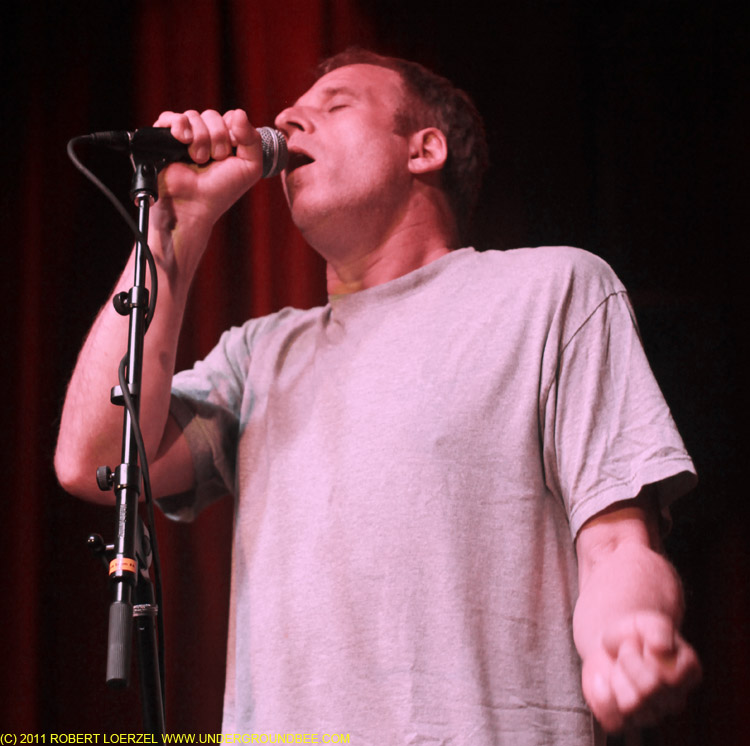

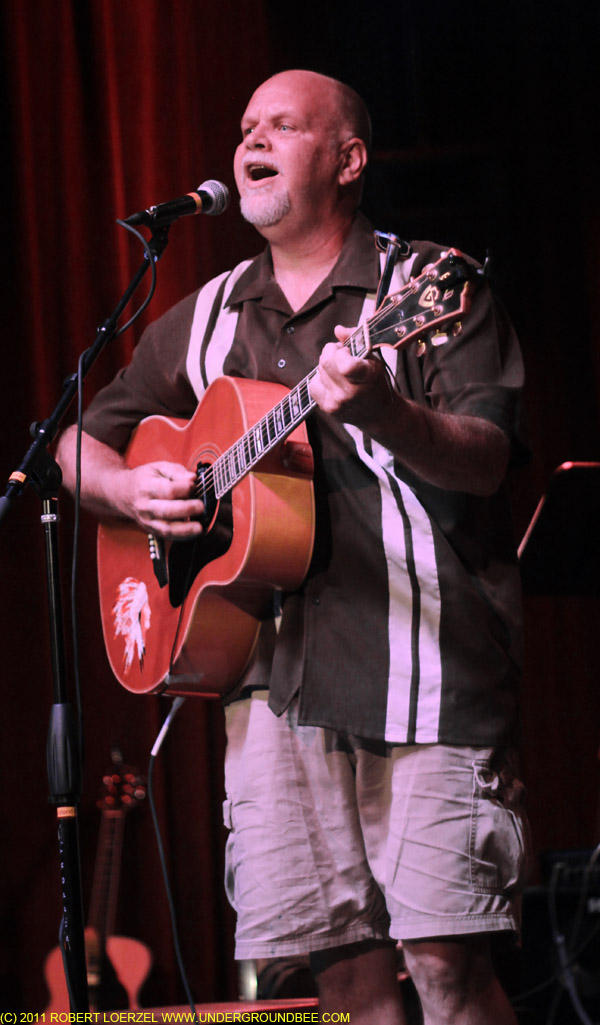
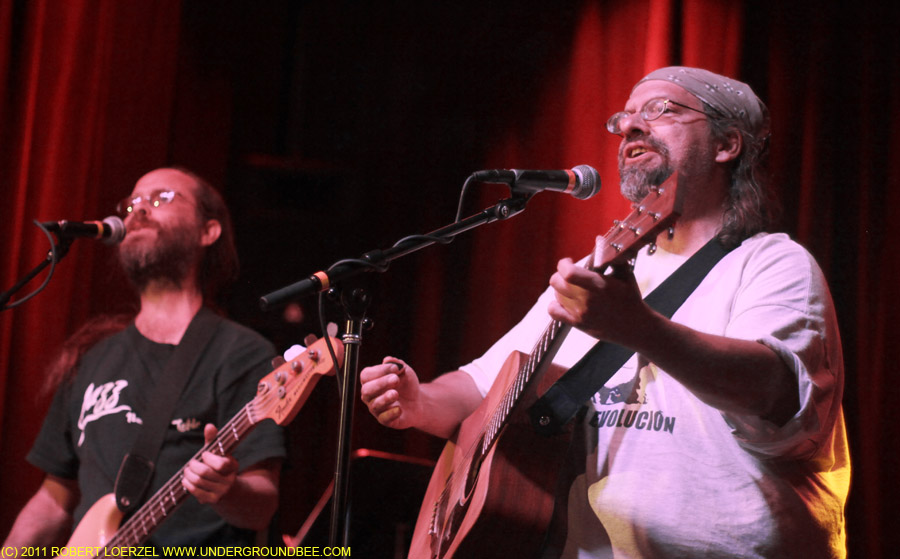
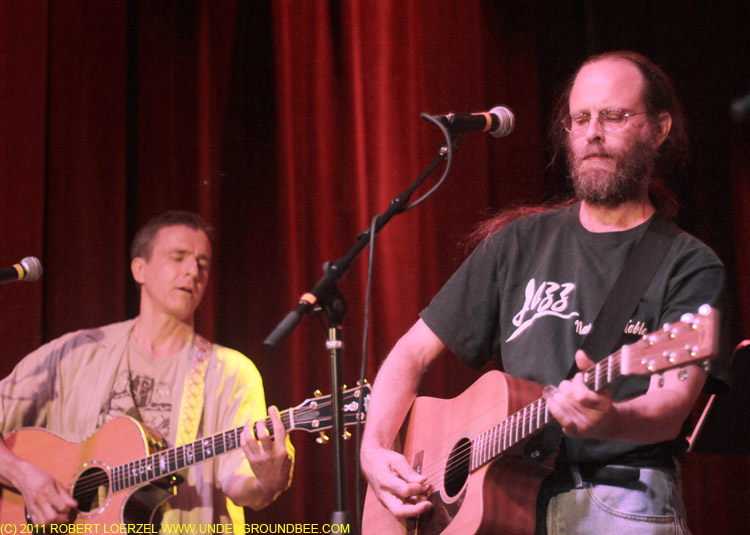
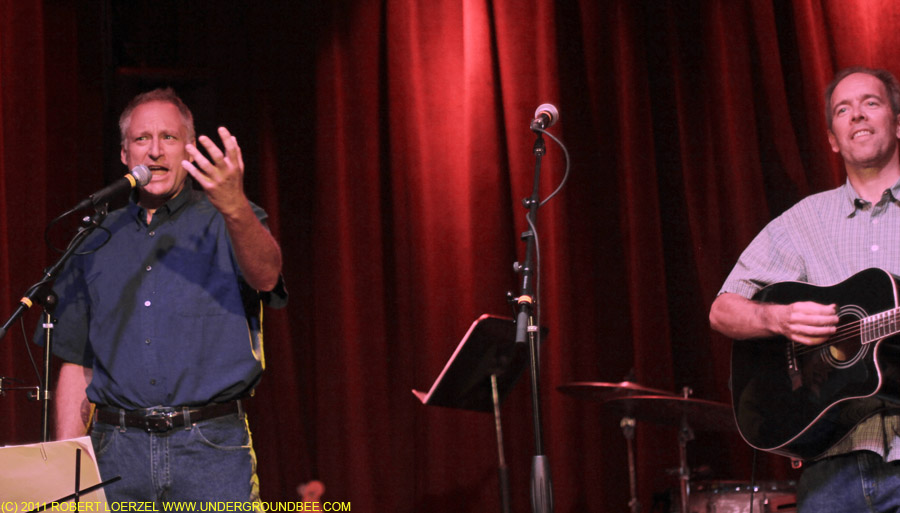
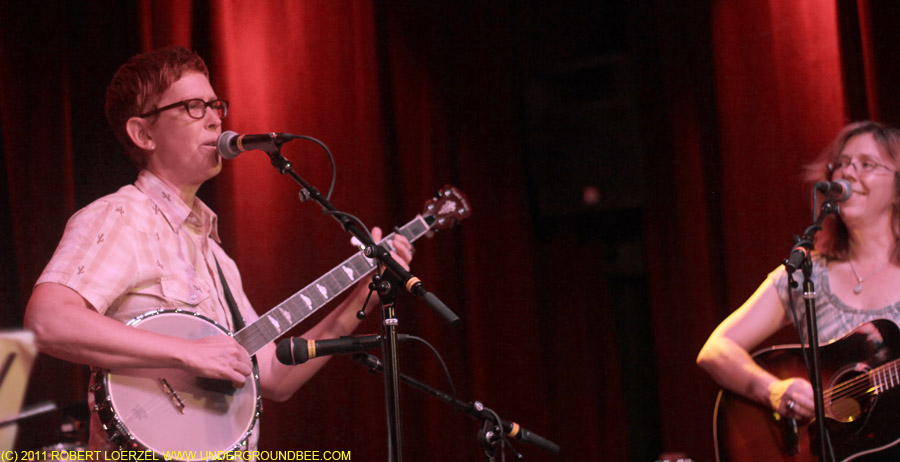
Cass McCombs and Lower Dens at the Hideout
During his July 25 concert at Millennium Park, Ted Leo gave the audience some good advice about what to do later that night: Go see Cass McCombs at the Hideout. McCombs has developed into a songwriter of great subtlety and artistry over the past several years, and his latest album, Wit’s End, is a beautiful collection of soft, sometimes whispered ballads with intricate arrangements. McCombs seems to be taking inspiration from the classic American Songbook style of songwriting as much as he is from the chamber pop music of bands such as the Zombies.
Last week at the Hideout, McCombs and his band played these songs and older tunes with a loose, at times apparently improvisational feel, creating the sensation that they were sculpting each song on the spot. Playing a bit like a jazz combo, the musicians took turns soloing during some of the songs. McCombs sang most of the songs with a light touch, softly hitting the high notes with just a touch of vibrato in his falsetto. The lights were set on dim — which was not helpful with my efforts to take photographs, but did fit the music’s late-night vibe. After starting out quietly, the 90-minute set stretched out into country and folk rock and then more rocking jams. It all wrapped up at a pretty late hour for a Monday night — just past 1 a.m. — but it was dreamy rather than sleepy.
myspace.com/cassmccombs
http://cassmccombs.com
The opening act, Lower Dens, is the new band led by singer-songwriter Jana Hunter, and the group played a cool set to start out the evening, climaxing with some music that had a strong Krautrock pulse.
myspace.com/lowerdens
http://lowerdens.com
Ted Leo at Millennium Park
Millennium Park’s Monday-night rock concert series, “Downtown Sound,” wrapped up on July 25 with a show by Ted Leo and the Pharmacists — but it’s hardly the end of this summer’s music at the Jay Pritzker Pavilion. The “Made in Chicago” jazz series begins Thursday, while the “Lunchbreak Music Series” and Grant Park Music Festival continue. And Monday nights will shift to the “Dusk Variations” theme next week — experimental classical music mixed with electronica, folk, rock and the avant-garde — including a must-see performance Aug. 8 by My Brightest Diamond. Check out the schedules here.
Like some of the other concerts at Pritzker, Monday’s featured a somewhat odd pairing of headline band and opening act. Ted Leo is a real rocker, while opener Rachel Ries is more of a troubadour type. Pritzker’s concert bookings can make for some unusual contrasts, but it’s rather cool to see this sort of diversity on the same stage in the same night. Ries (until recently, a Chicago resident) played a nice set of folk rock songs with a jazzy tinge. And then Leo and his Pharmacists treated the crowd to a complete performance of his first album from a decade ago, The Tyranny of Distance, preceded by several songs from his other records. Leo was playing with an injured knee, and he apologized for not being to jump around quite as much as usual, but it didn’t stop him from singing and playing those guitar chords with sweaty vigor.
Thee Oh Sees at Logan Square
As I said last month, the Illinois Centennial Monument in Logan Square is a pretty cool place to see a concert. The Empty Bottle’s series of free concerts at this lovely little picnic spot continued Sunday (July 24) with the great psychedelic garage rock band, Thee Oh Sees. Like last year’s show at Lincoln Hall, this one featured one catchy riff after another as well as some longer jams — and this time, the band had two drummers. The band played right in front of Logan Square’s tall monument with the eagle on top, and fans climbed into every available space around Thee Oh Sees, dancing and singing along.
myspace.com/ohsees
The well-chosen opening act was Chicago band Football, which includes members of various other local bands such as the Ponys, Baseball Furies, Hot Machines, Tight Phantomz, France Has the Bomb and A/V Murder. The guys were all wearing white Indian-style outfits (apparently purchased on Devon Avenue, if I heard right), and they sang indecipherable but head-bopping songs for 20 or 30 minutes, stomping and leaping with glee.
Football’s facebook page
Wild Flag at Wicker Park Fest
A band with two members of the late, great Sleater-Kinney (Carrie Brownstein and Janet Weiss)? Plus Mary Timony of Helium and Rebecca Cole of Minders? Where do I sign up? This was definitely a band I wanted to hear, and it’s understandable why their forthcoming debut is one of the year’s most anticipated albums — among us indie-rock fans, anyway. Wild Flag delivered on the promise Saturday night (July 23) with a headlining set of top-notch rock ‘n’ roll at Wicker Park Fest, playing what must be all of their songs with the same sort of energy and excitement I came to expect from Sleater-Kinney. And then they closed out the night with an encore consisting of two covers: the Rolling Stones’ “Beast of Burden” and Patti Smith’s “Ask the Angels.” That one broke down midsong, as Timony and Cole veered off into two different keys. The band stopped. Brownstein said, “Rock ‘n’ roll isn’t perfect. I don’t give a shit.” And then, after Brownstein acted out a scene of encouragement, channeling the coach on “Friday Night Lights,” the band played the song over again — sounding even more raw, but this time, in tune.
Gillian Welch at the Vic
It’s hard to believe it had been seven years since the last Gillian Welch concert in Chicago. Playing Friday night (July 22) at the Vic, Gillian Welch and her indispensable partner, David Rawlings, picked up right where they left off: beautiful songs with subtle harmonies and head-spinning guitar solos. Welch writes that sort of lyrics that strike you anew with their poetry and truth as you hear them sung in concert, even if you’ve heard them a hundred times before.
As the doors to the concert hall opened and fans began filing in, I noticed Welch walking on the sidewalk in front of the Vic. No one else seemed to notice she was right there. Onstage, her persona was not shy, exactly — but she seems modest, humble and matter-of-fact. “We may not look excited, but we’re really very excited,” Welch remarked at one point. Rawlings frequently won midsong bursts of applause for all those long runs of notes he pulled out of his guitar with what seemed like no effort at all. This is truly a duo, not a solo singer-songwriter act — the duo of Gillian Welch and David Rawlings, who perform under the name Gillian Welch.
The showiest Welch herself got all night was during “Six White Horses,” which she introduced semi-apologetically, explaining that it was recorded in the studio without much thought as to how the performance would look onstage. Here’s how it looked: Welch played the rhythm by slapping her hands on her thighs and clapping … and she even did a little dance during one part of the song, using her boots like tap shoes. It sounded remarkably close to the studio recording — and it was quite fun to watch, winning Welch one of the evening’s most enthusiastic rounds of applause.
Welch played all 10 of the songs from her excellent new album, The Harrow & the Harvest, which is one of the year’s best. After a lively version of the 2003 song “Wrecking Ball” — second time Welch and Rawlings had played the song so far on this tour — Rawlings said, “I think we’ll do you one better and play you one we haven’t played on this tour at all. I feel like we’re in friendly territory.” That was the intro to “My Morphine,” a classic song from Welch’s 1998 album Hell Among the Yearlings. Welch’s songs tend to be sad, but that one is among the darkest of all. The crowd loved it. Afterward, Welch remarked, “I figured most of you guys didn’t come to hear happy songs, so what the hell.”
The applause at the end of the night was loud, enthusiastic and sustained. Welch and Rawlings rewarded the crowd with two encores, including a cover of the country classic “Jackson” and finishing on a perfect note with “I’ll Fly Away.”
SET LIST: Scarlet Town / Elvis Presley Blues / My First Lover / The Way It Goes / Annabelle / The Way It Will Be / Wrecking Ball / My Morphine / Hard Times / Red Clay Halo / SET BREAK / No One Knows My Name / Tennessee / Silver Dagger / Miss Ohio / Six White Horses / Sweet Tooth (Dave Rawlings Machine song) / Dark Turn of Mind / Revelator / ENCORE 1: Down Along the Dixie Line / Jackson / ENCORE 2: The Way the Whole Thing Ends / I’ll Fly Away
Pitchfork: More photos
One last gallery of photos from the 2011 Pitchfork Music Festival.
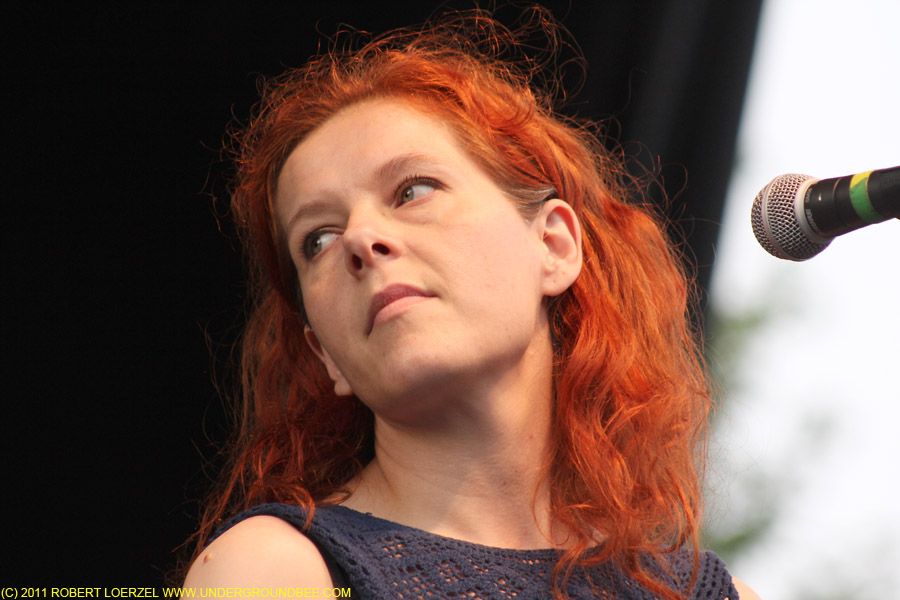
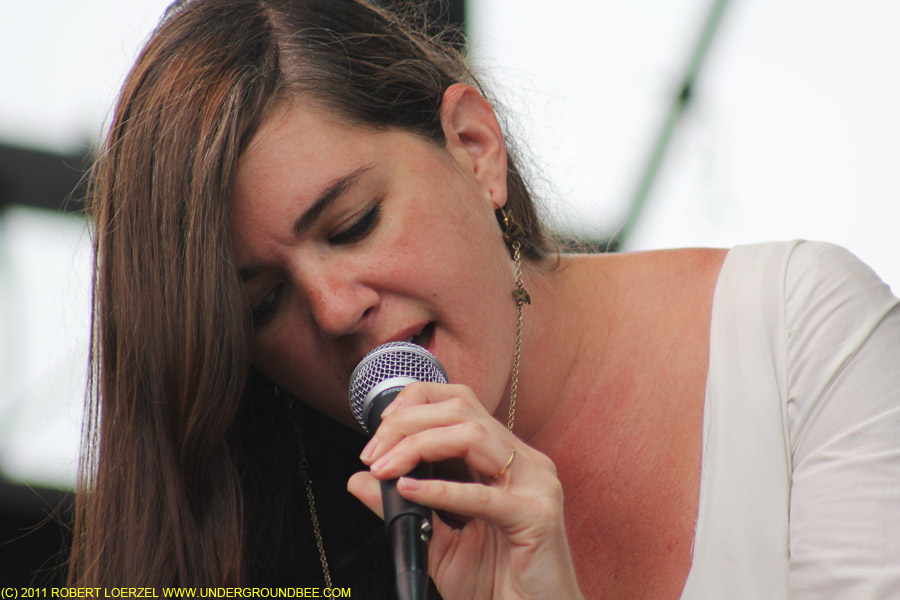


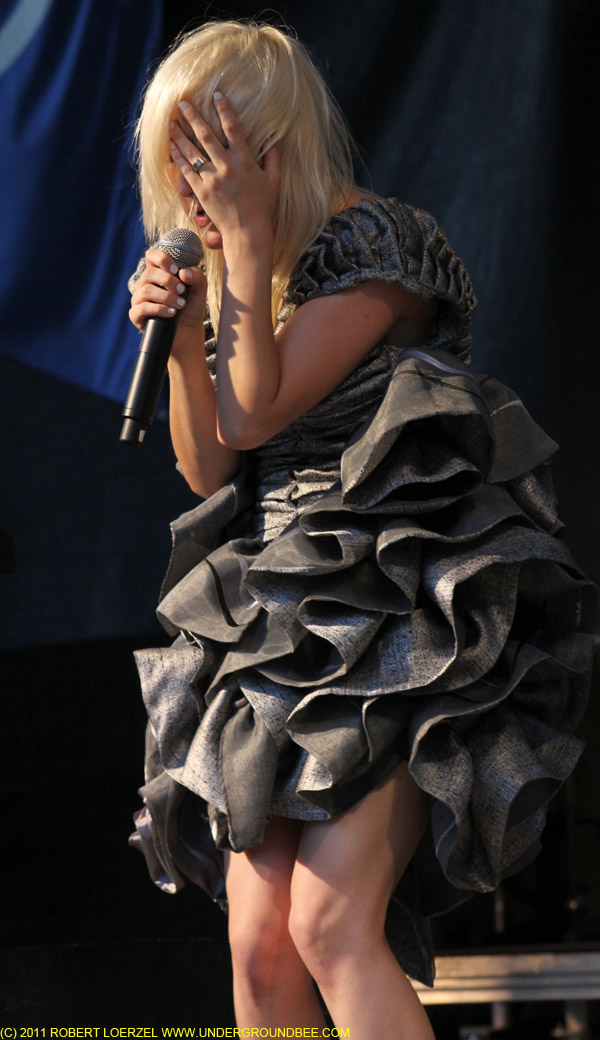
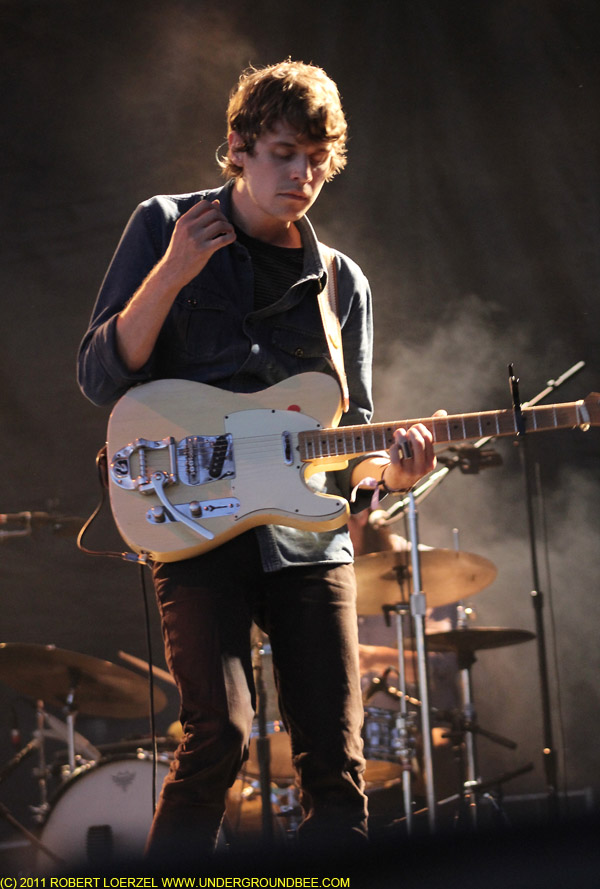

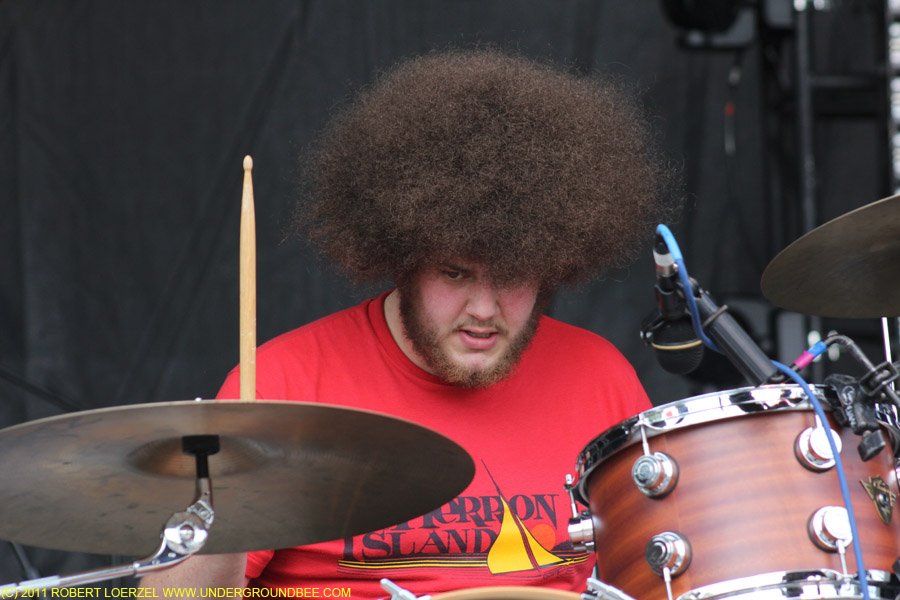

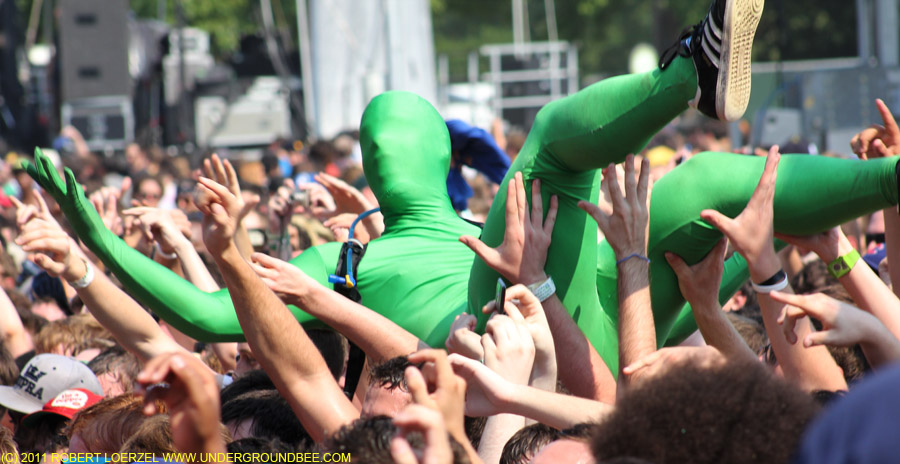

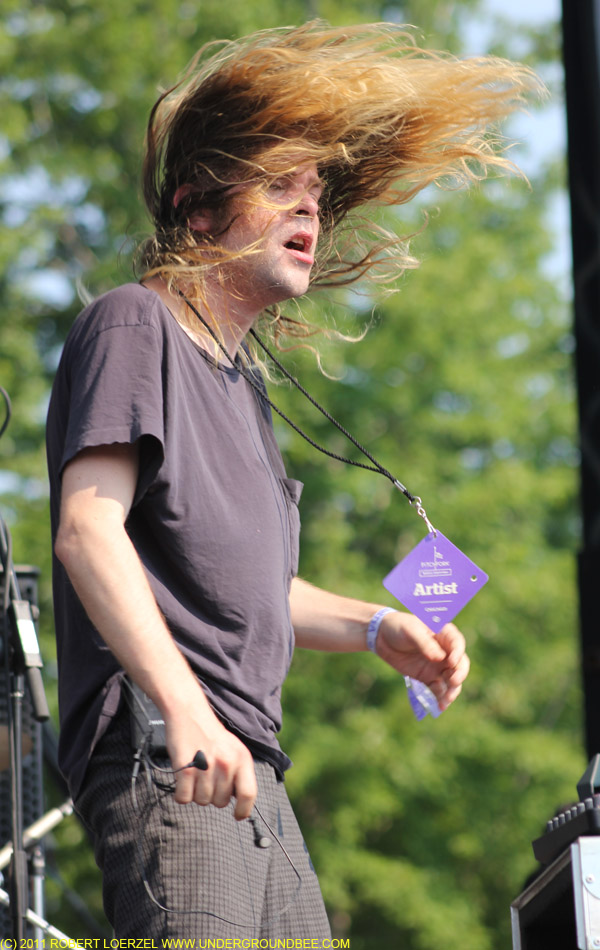
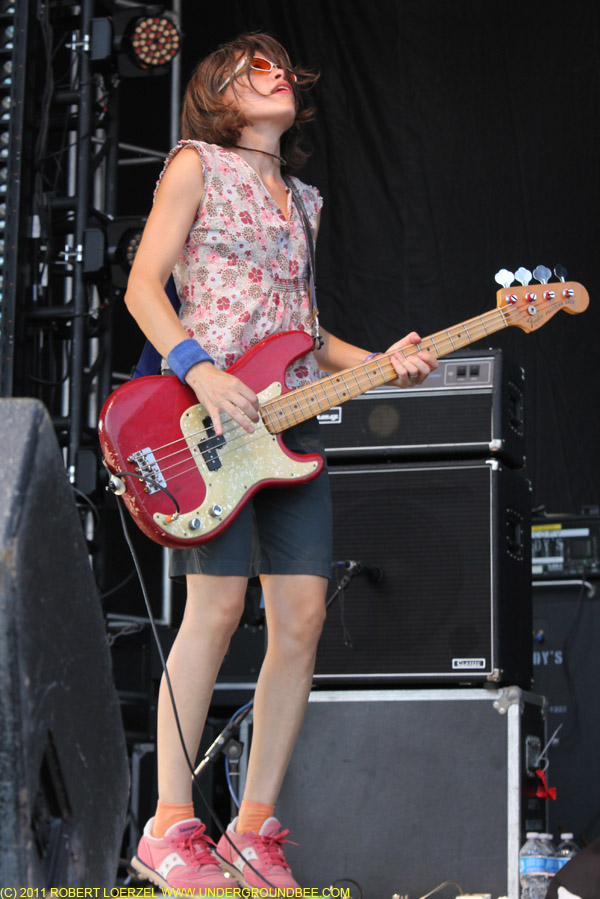
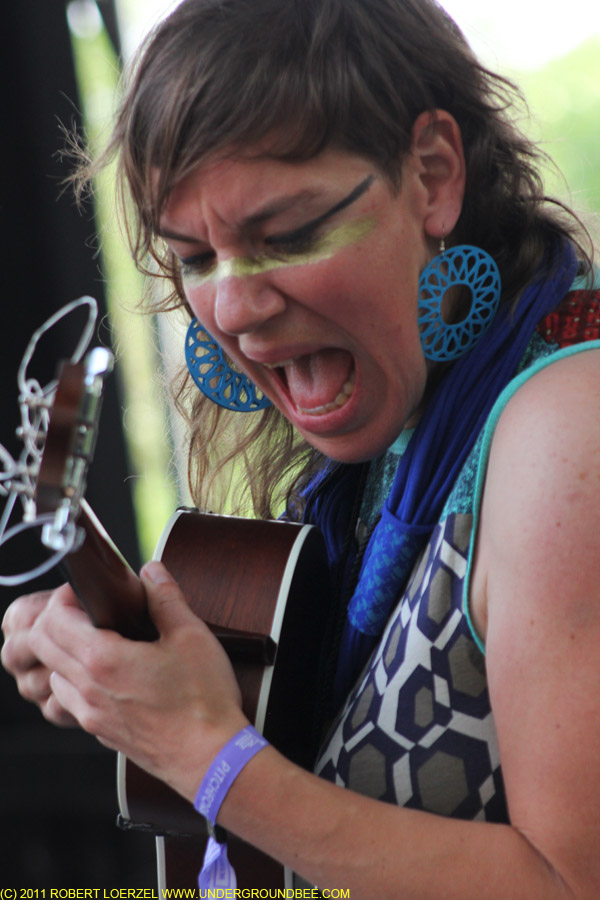
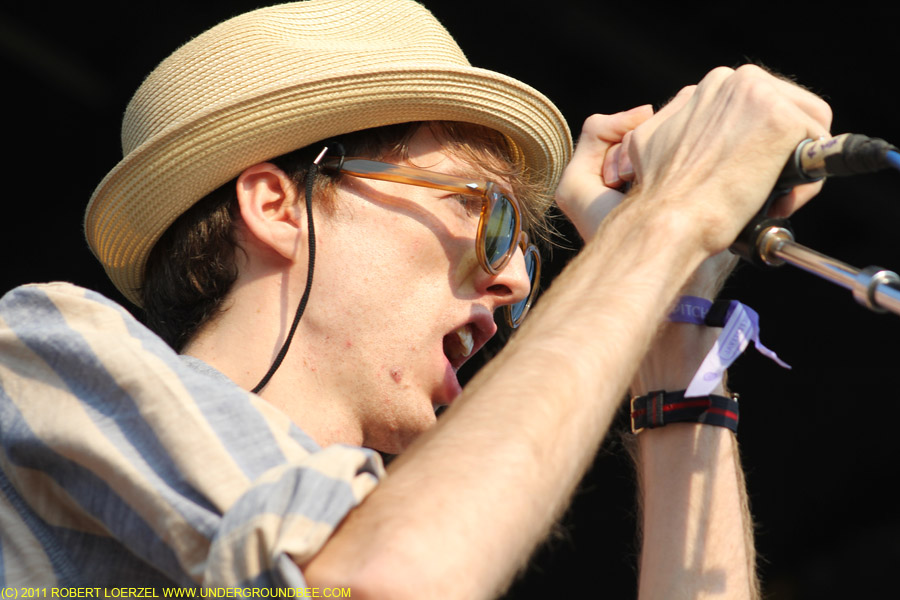
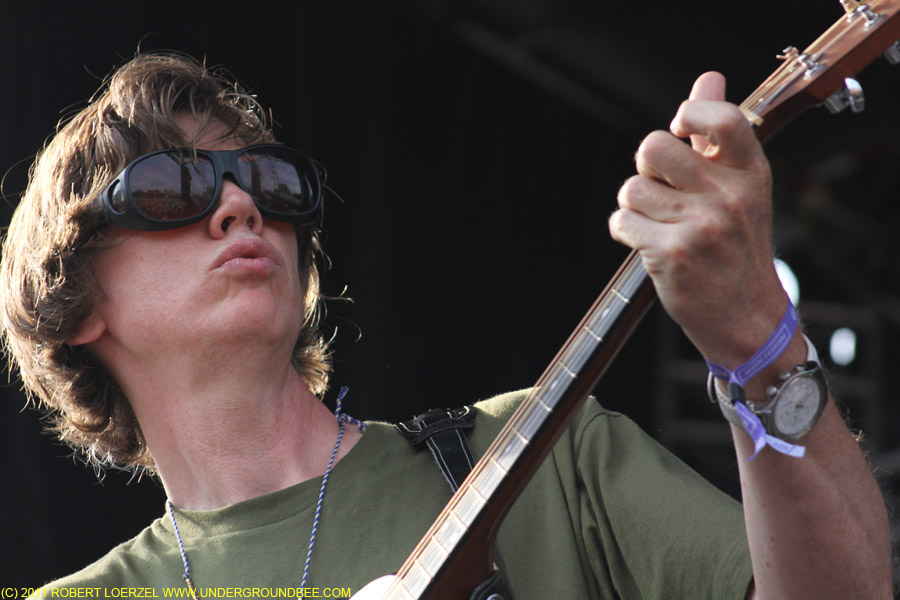
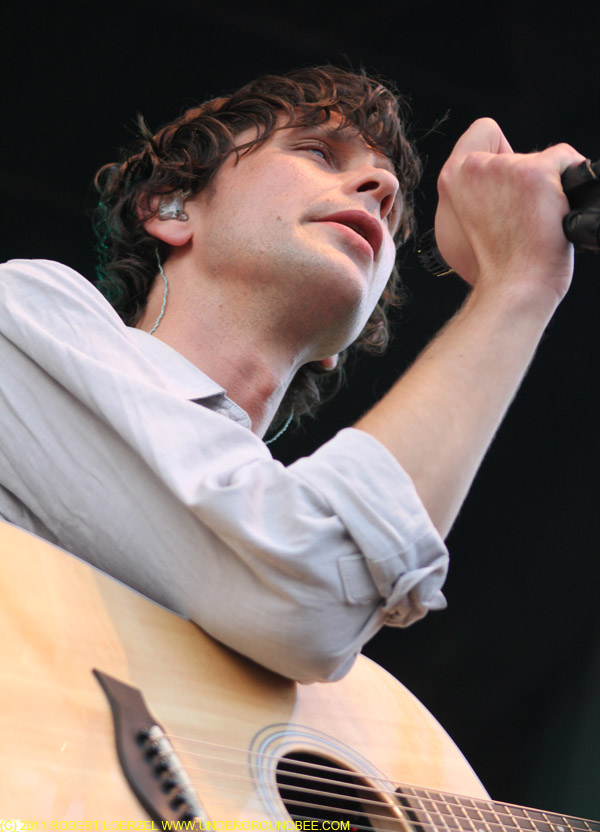
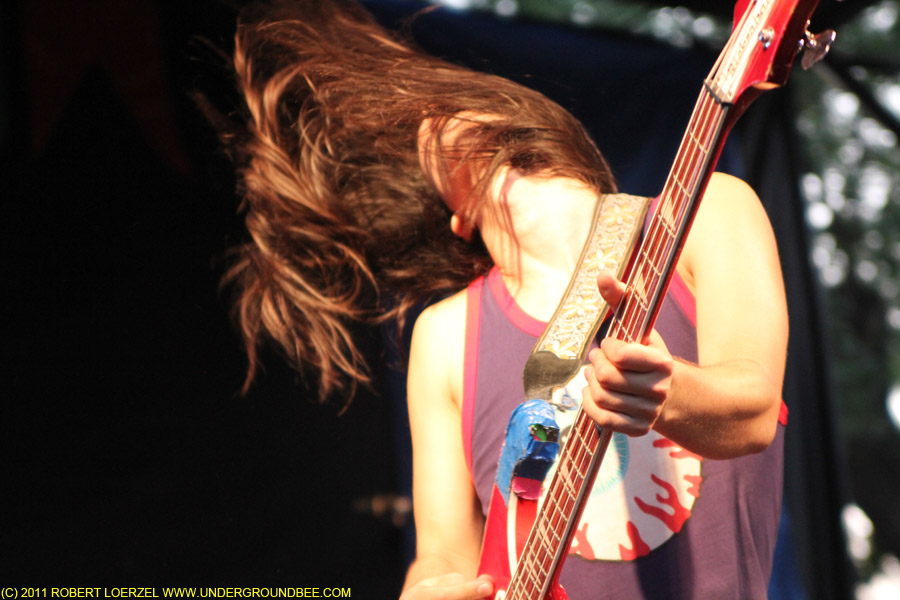
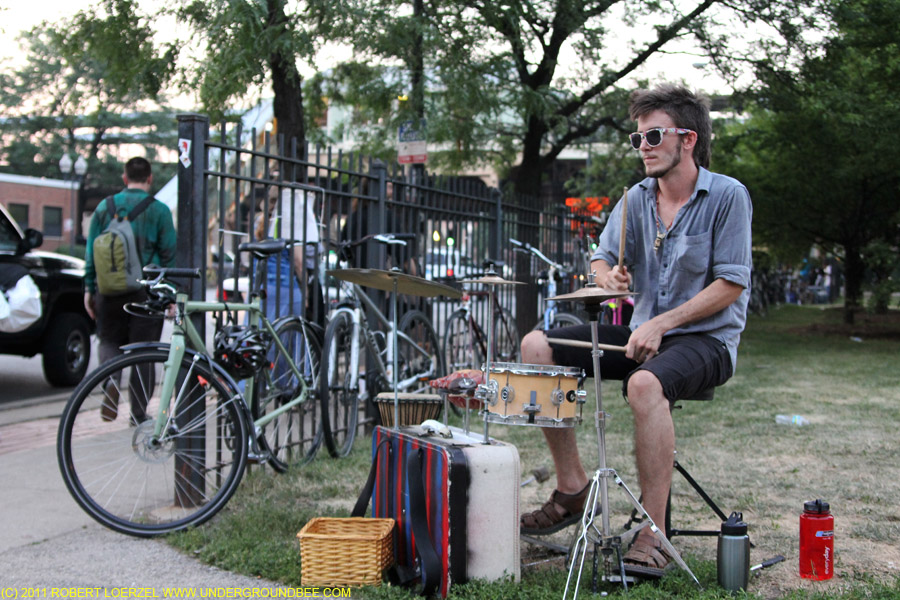
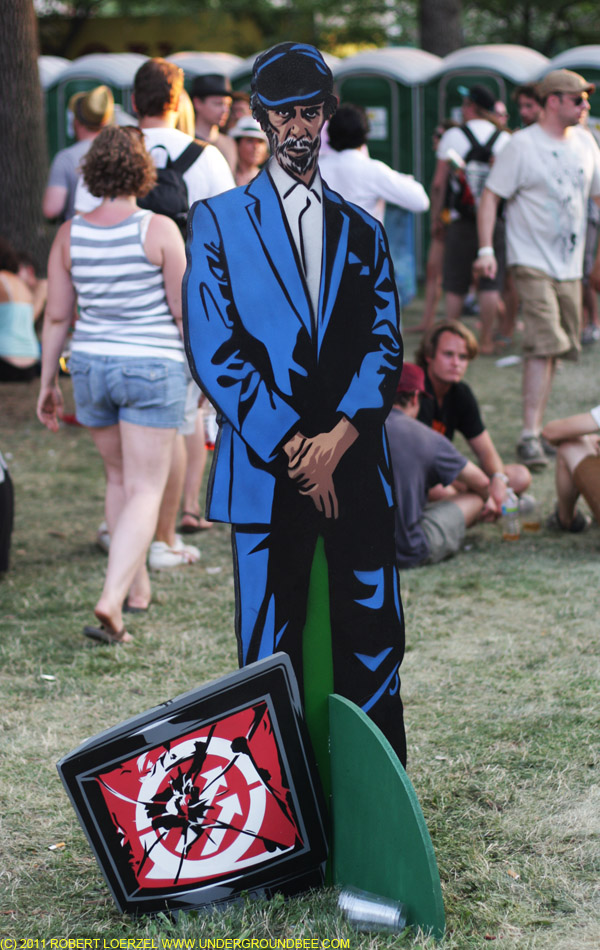
More Pitchfork Music Festival 2011 coverage: Day One Photos / Day One Review / Day Two Photos / Day Two Review / Day Three Photos / Day Three Review / Photos for WBEZ
Pitchfork Day Three: Review
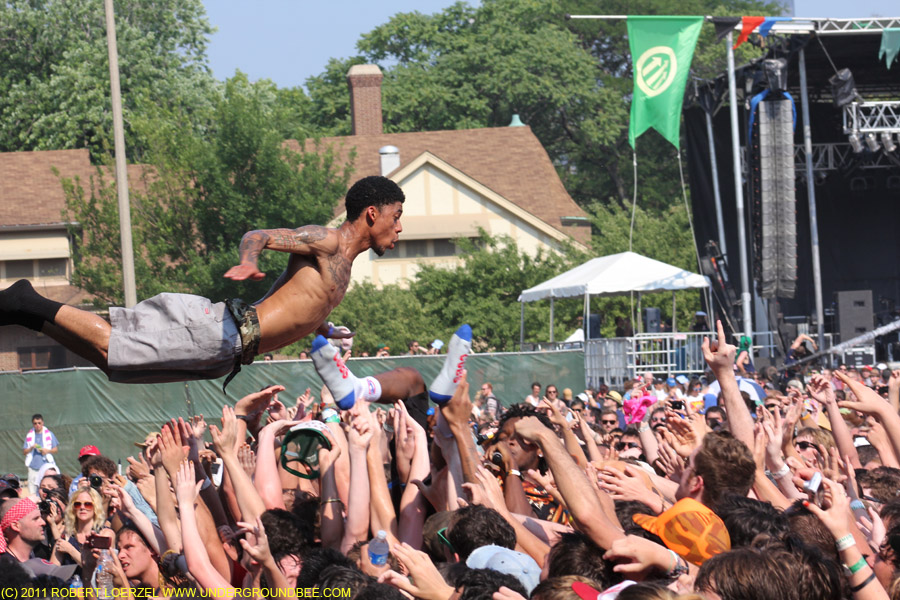
The big story of the 2011 Pitchfork Music Festival was Sunday’s performance by the hip-hop group Odd Future Wolf Gang Kill Them All (also known as Odd Future or OFWGKTA). Pitchfork’s decision to book this outfit sparked controversy, since Odd Future’s lyrics are pretty much a nonstop barrage of misogyny and violence. But hey, it’s got a good beat, right? During its midafternoon show, Odd Future delivered exactly what its fans were hoping for and its critics were lamenting. Band members jumped off the stage into the arms (or onto the heads) of their fans in the mosh pit … who were lifting their middle fingers into the air and crowd-surfing with reckless abandon. One person after another got pulled out of the crowd by the security staff (and kudos to those guys for dealing so well with a difficult and potentially dangerous situation). The audience sang and rapped along with a good many swear words and chants about killing police and causing various other sorts of mayhem. Most of the crowd seemed to be having a great time (although there must’ve been some people unhappy about getting crushed), and it’s doubtful many of them will go out today and do any of the bad stuff Odd Future was singing about. It all made for an exciting spectacle, but if you paused for two seconds to think about the foul lyrics, it was also unsettling.
Odd Future grabbed the most attention on Sunday, but the musical highlights for me were the Fresh & Onlys, Yuck, Kurt Vile and the Violators, Superchunk, Deerhunter, HEALTH and TV on the Radio. As for the other bands, I either didn’t hear enough to weigh in with much of an opinion (see: Darkstar, How to Dress Well, Ariel Pink’s Haunted Graffiti) or it just wasn’t my cup of tea (see: Baths, Toro Y Moi, Cut Copy).
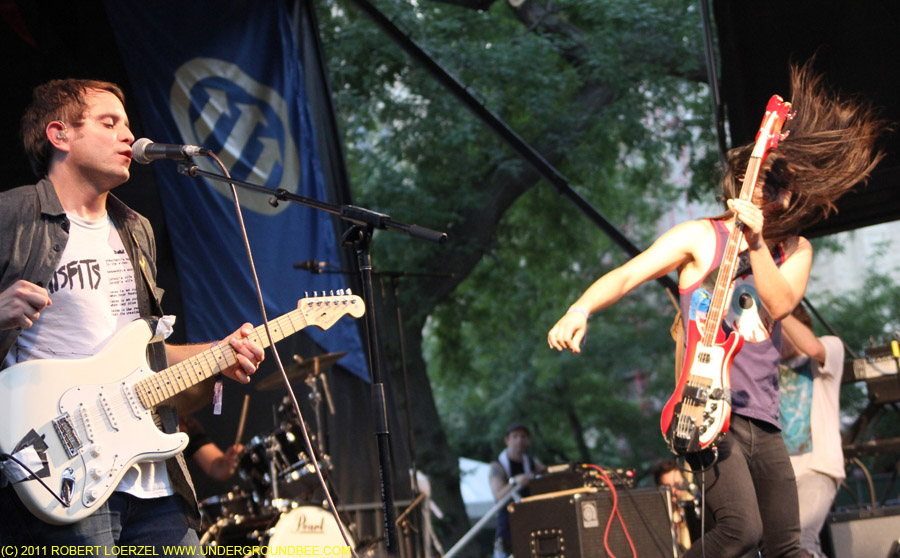
For that matter, I must confess that I was able to catch only a couple of songs by HEALTH before I had to hurry over to the line for the TV on the Radio photo pit, so I can’t really review that set, but what I did see was damn impressive, full of energy and creativity.
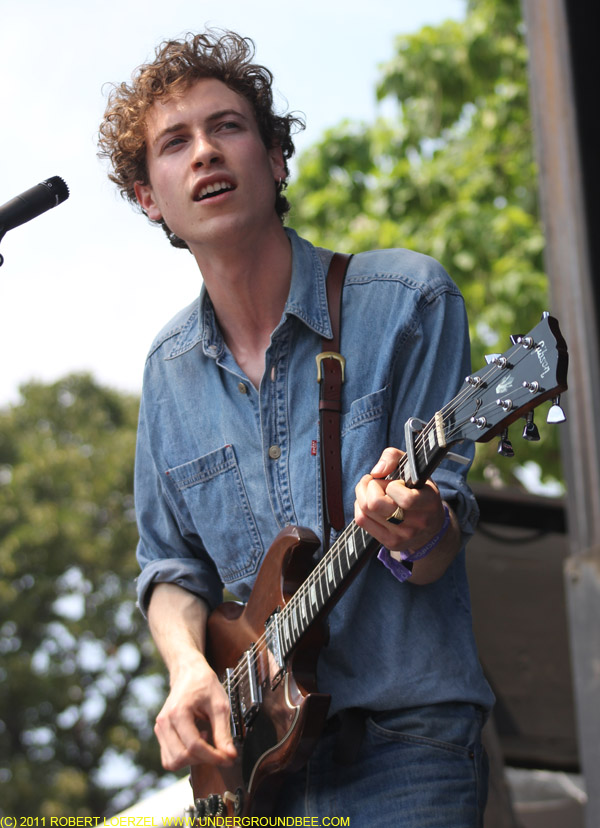
I’ve seen some folks remarking that Yuck’s performance fell flat for them, but I loved hearing the loopy guitar riffs and catchy vocal melodies from Yuck’s self-titled debut album (one of the year’s best) lifting up into the hot summer air. The band is still a little bit lacking as far as looking engaged onstage, but they’ve loosened up a bit since they played at Lincoln Hall this spring.
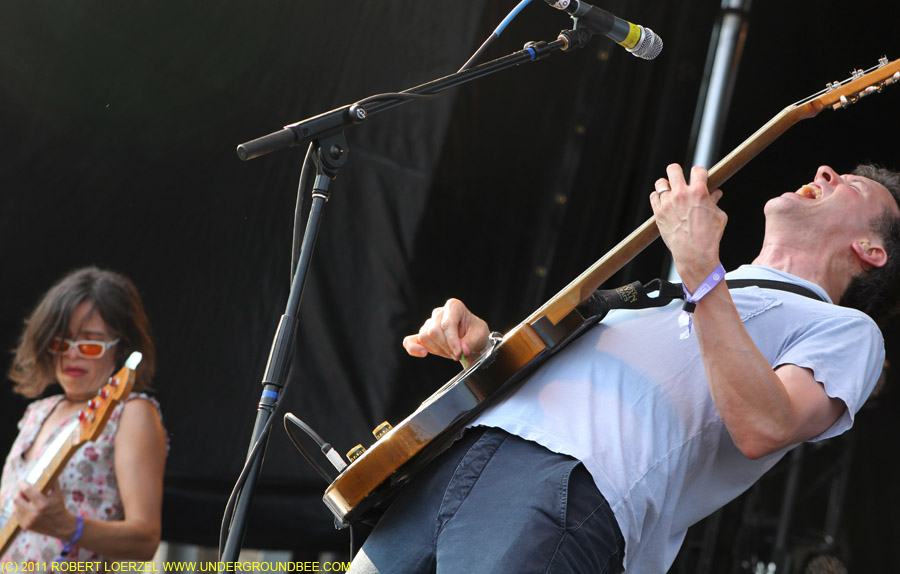
Superchunk was in no need of loosening up — when they played last year at the Taste of Randolph, singer-guitarist Mac McCaughan bounced around and jumped all night. He was at it again at Pitchfork, and if anything, bassist Laura Ballance was even more jumpy as the band cheerfully pounded out one great power-pop tune after another.

Kurt Vile can sound like a folk-rocker, with some touches of Bob Dylan in the way he writes and sings, but when he’s backed by his band, the Violators, the music has more of a droning, almost garage-rock edge to it, and that blend sounded wonderful Sunday afternoon, as the wind whipped around Vile’s long mane of brown hair.
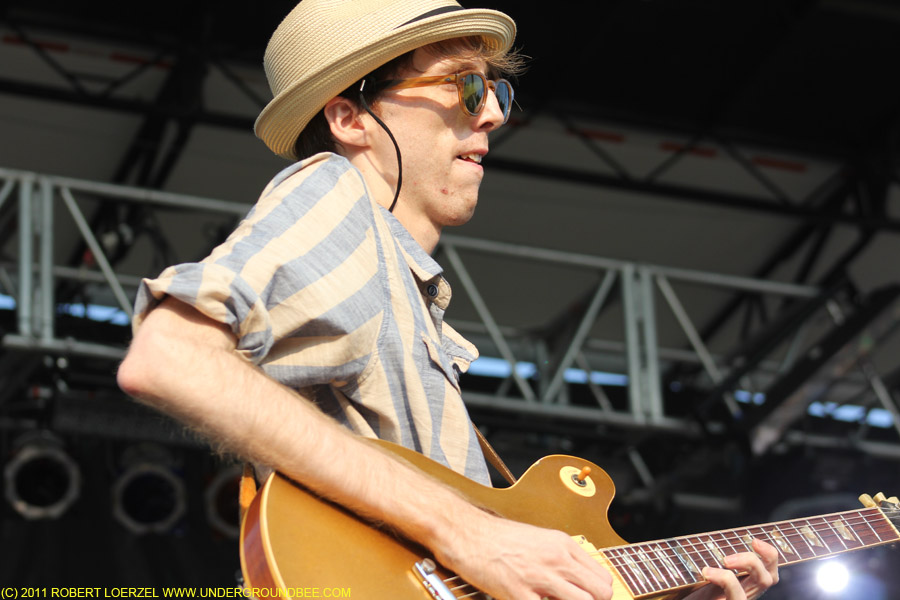
Deerhunter also delivered a solid performance (some of which I missed, alas). The band seems to be getting even better than it was when it made its debut at Pitchfork a few years ago, and the songs from last year’s Halcyon Digest album rang out strong and clear.
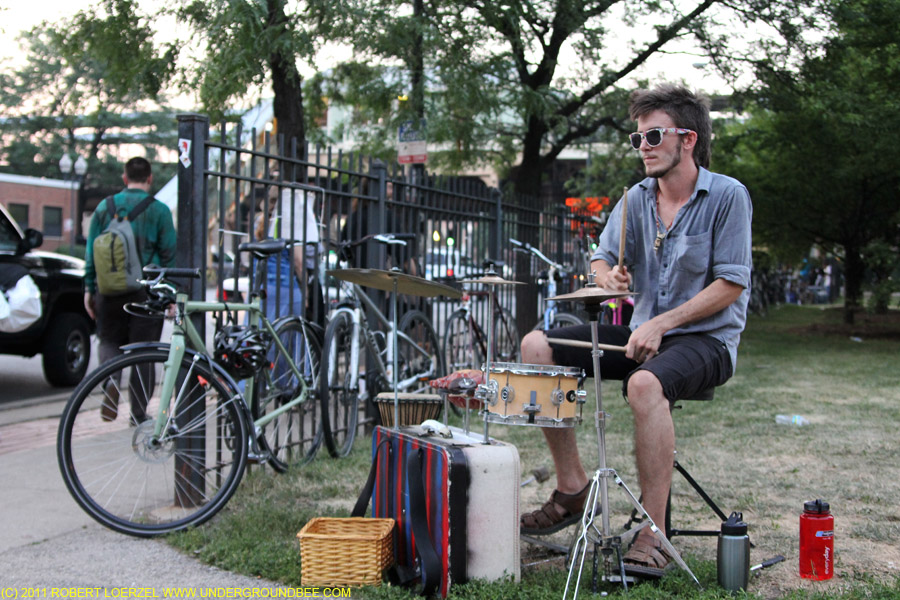
Before the headline shows each night of the festival, photographers were required to line up near the press entrance on the northwest corner of the park. On Saturday, around the corner from where we were standing, I heard a drummer on the sidewalk, just out of view, playing some jumping, jazzy rhythms. On Sunday night, he was playing outside the park again, but this time I got a chance to see him and drop a dollar in his basket. His name’s Jeff Austin, and his talent and inventiveness as a drummer were immediately clear. “You should be playing in there,” I told him, pointing to the park. “I’m working on it,” he said.
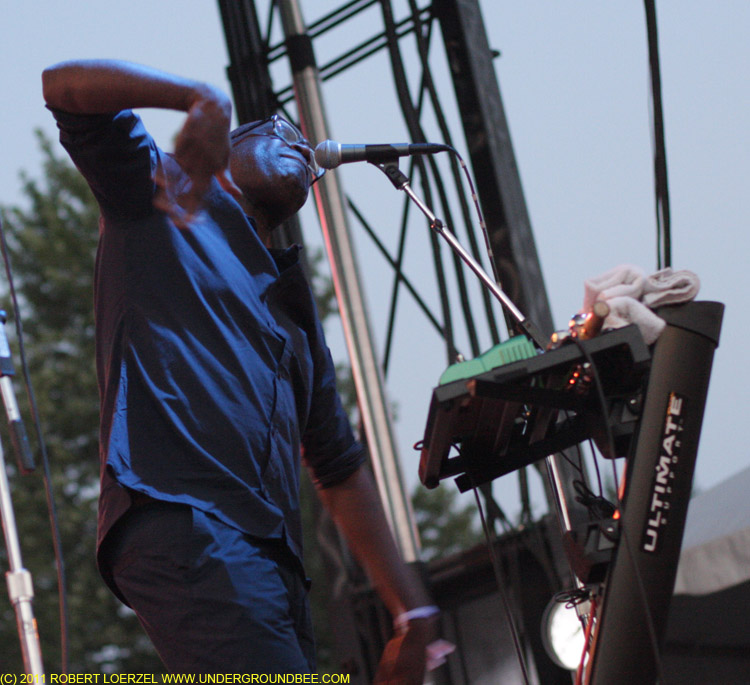
TV on the Radio fit the profile for a Pitchfork Fest headliner: a band with lots of critical cred as well as a big fan base. The group’s most recent album, Nine Types of Light, is somewhat lackluster, but the band still sounded vibrant in concert Sunday night, especially when it stuck with the bolder and more uptempo songs from earlier records. “Wolf Like Me” got the crowd moving and singing along, as you’d expect, and then the Pitchfork fans responded enthusiastically when TV on the Radio offered an unexpected cover of Fugazi’s “Waiting Room.” As one of today’s bands paid tribute to an older generation, it felt like a fitting end to another Pitchfork Music Festival.
More Pitchfork Music Festival 2011 coverage: Day One Photos / Day One Review / Day Two Photos / Day Two Review / Day Three Photos / More Photos / Photos for WBEZ
Pitchfork Day Three Photos
My photos from Day Three of the 2011 Pitchfork Music Festival in Chicago’s Union Park (Sunday, July 17).

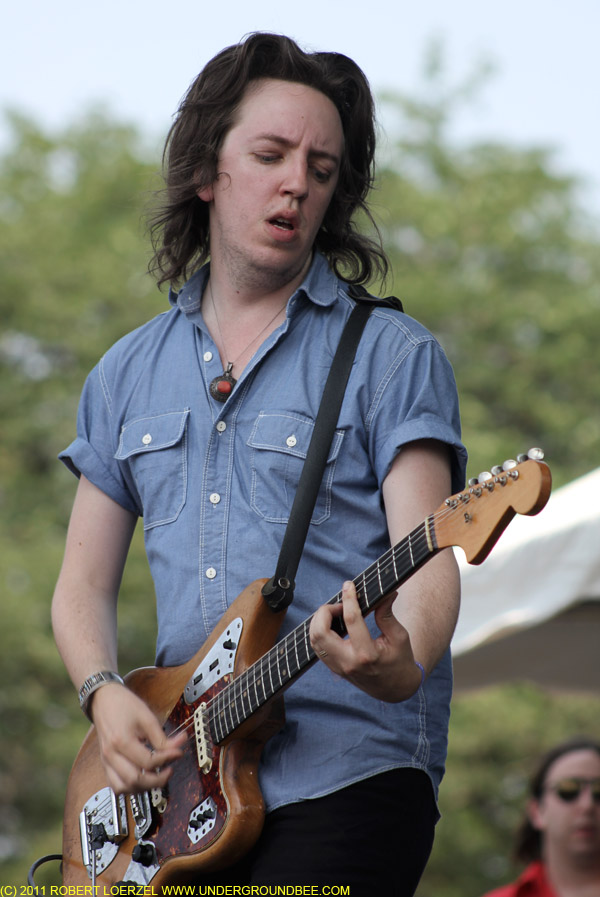


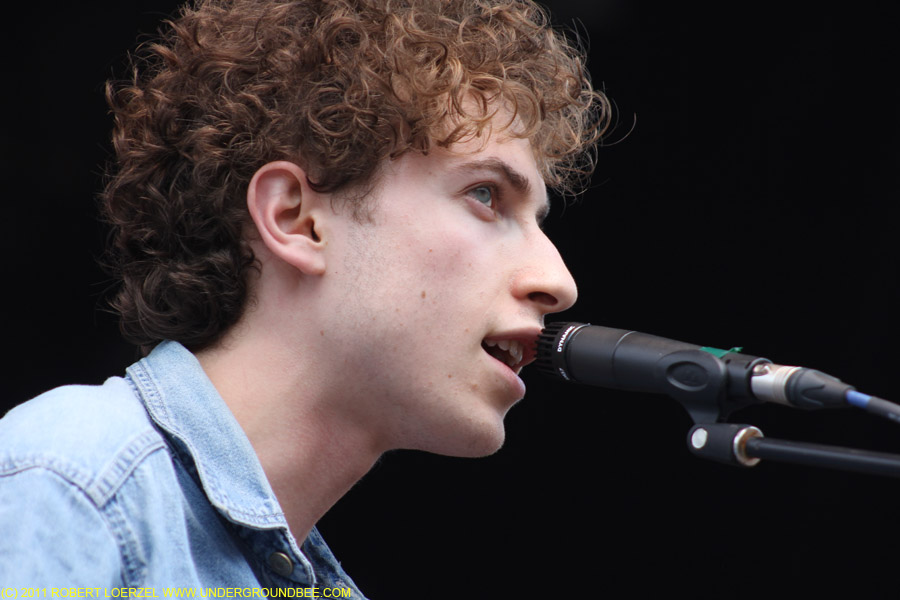
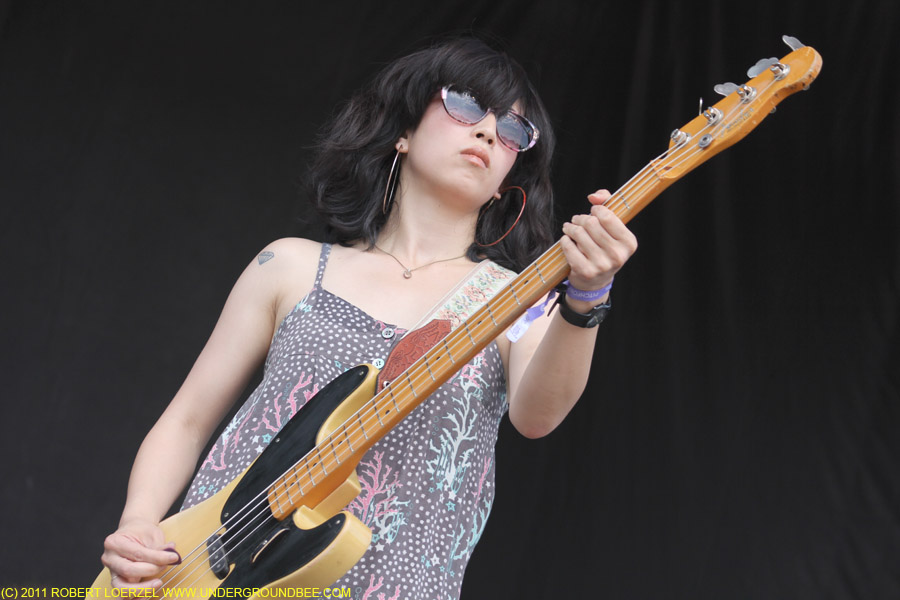
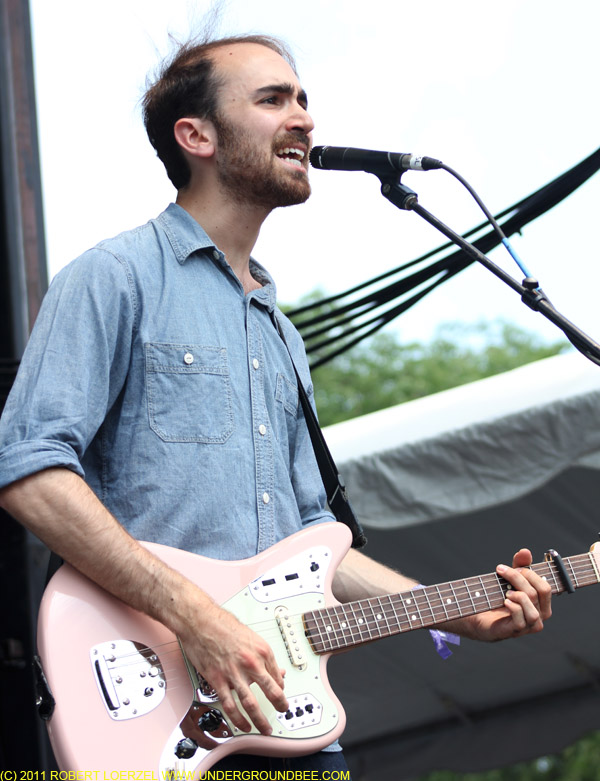


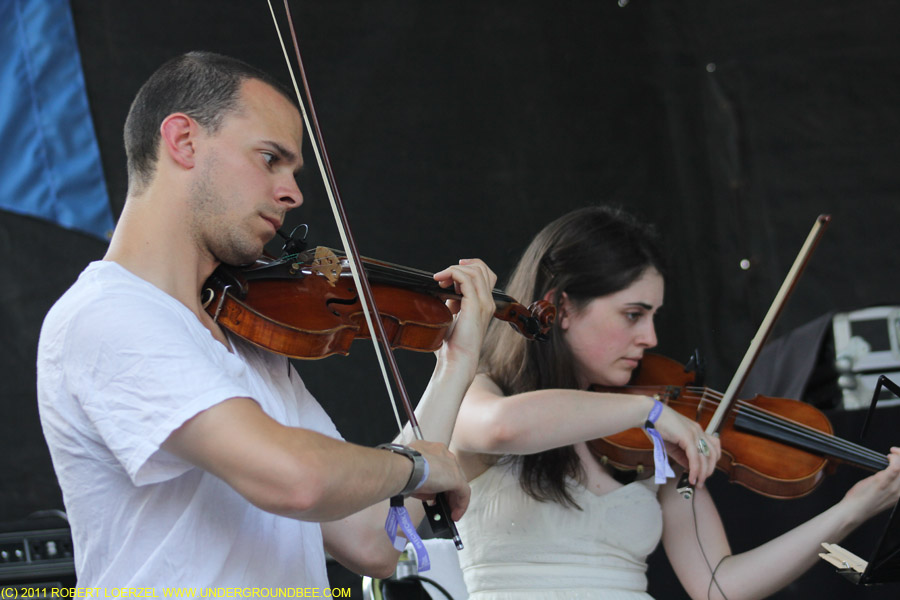
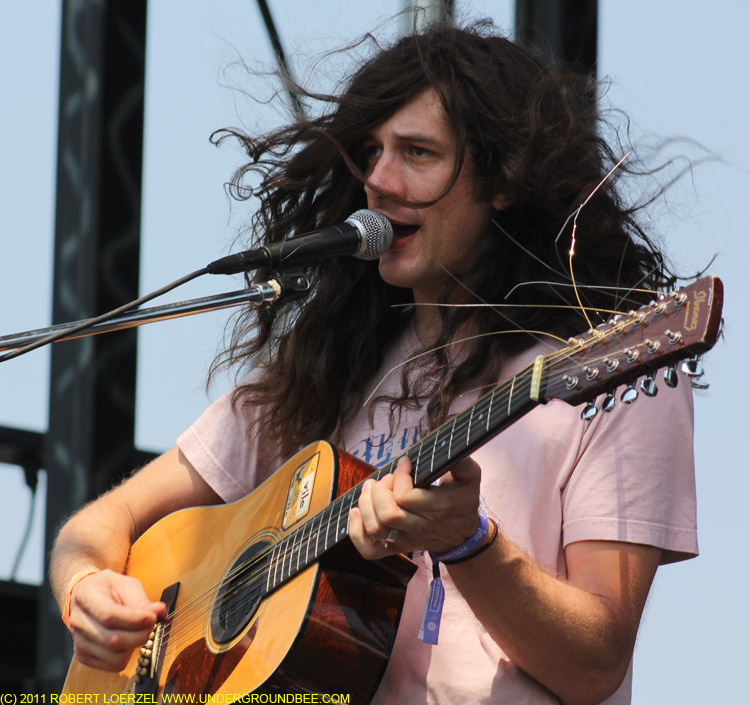
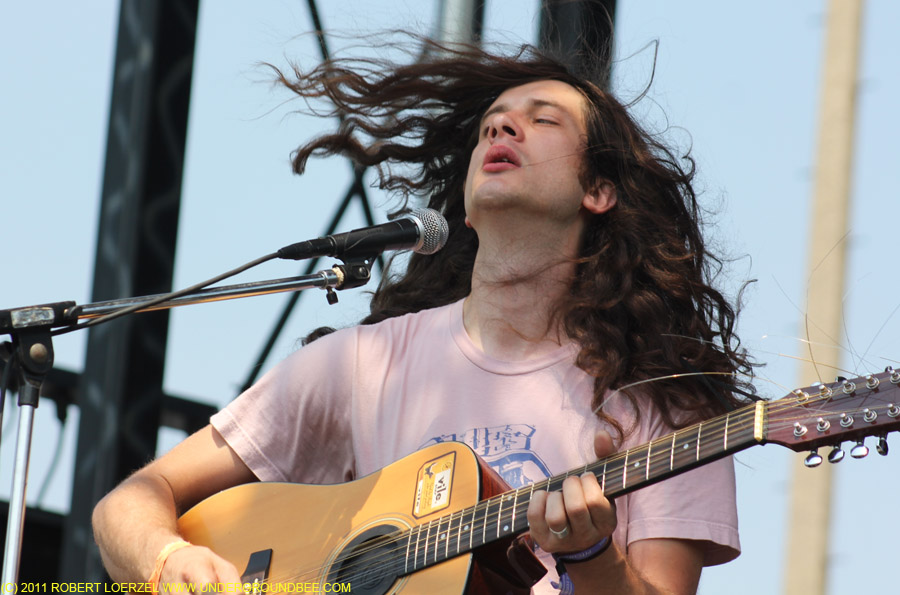

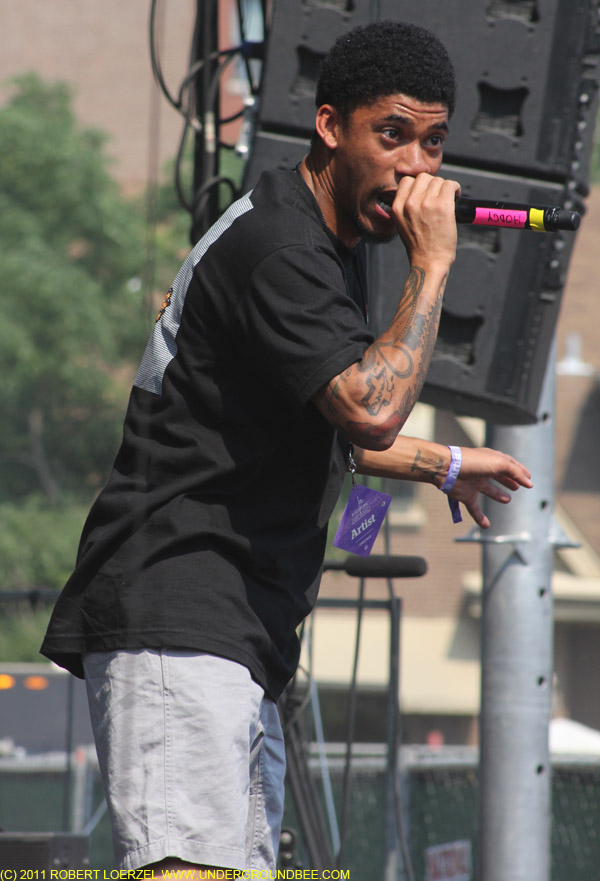
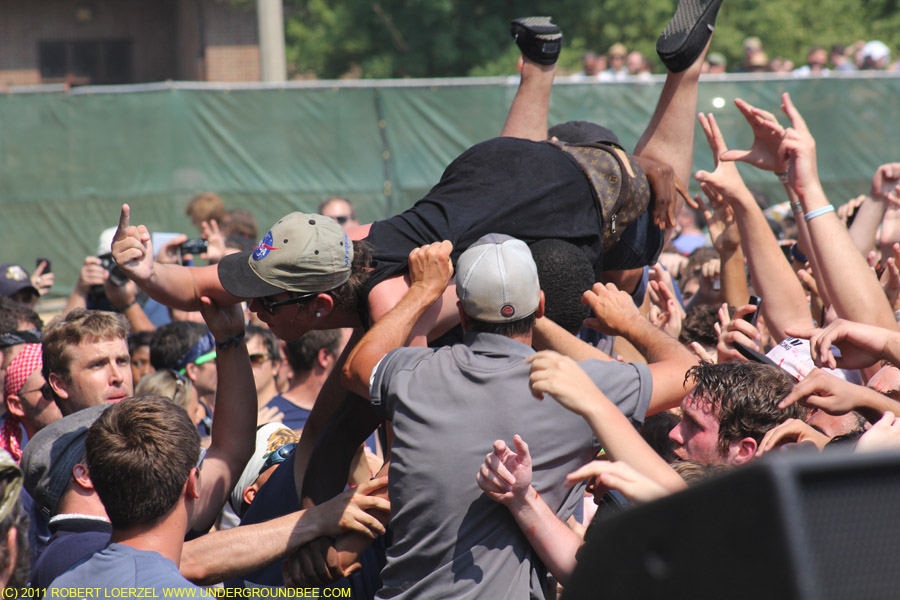
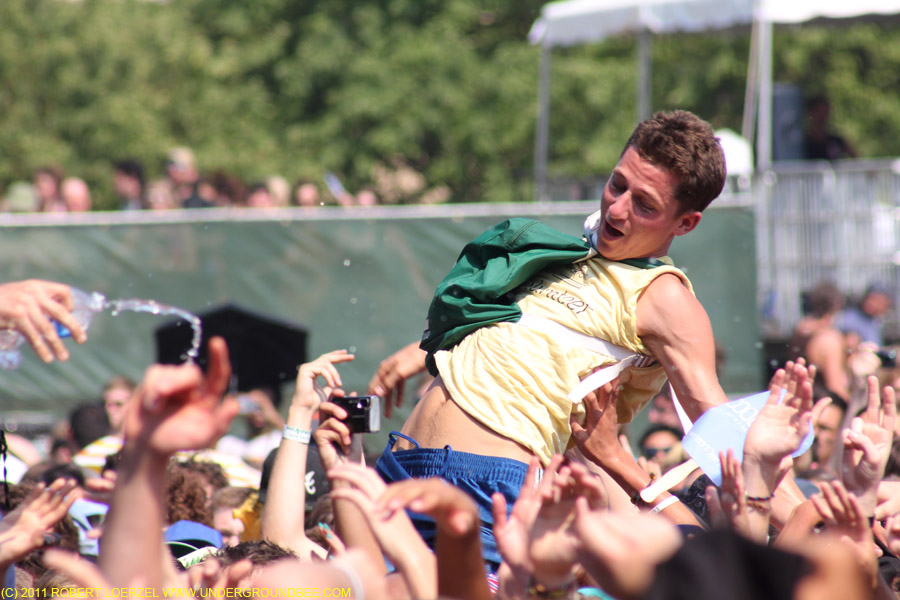
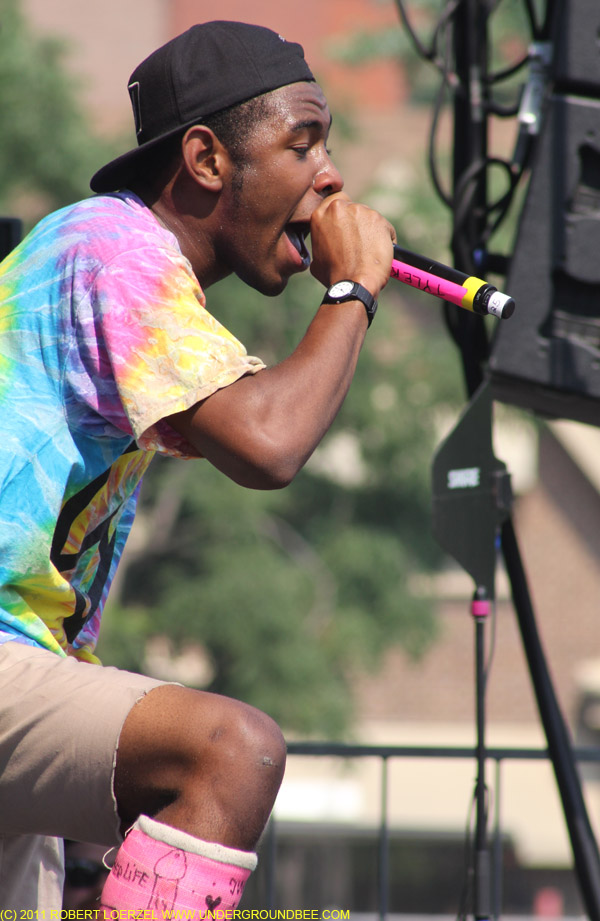
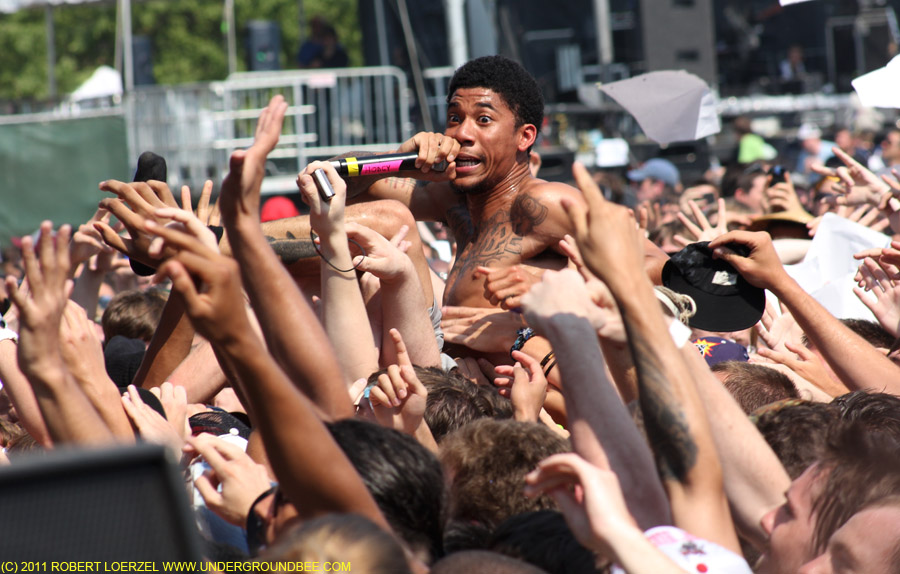

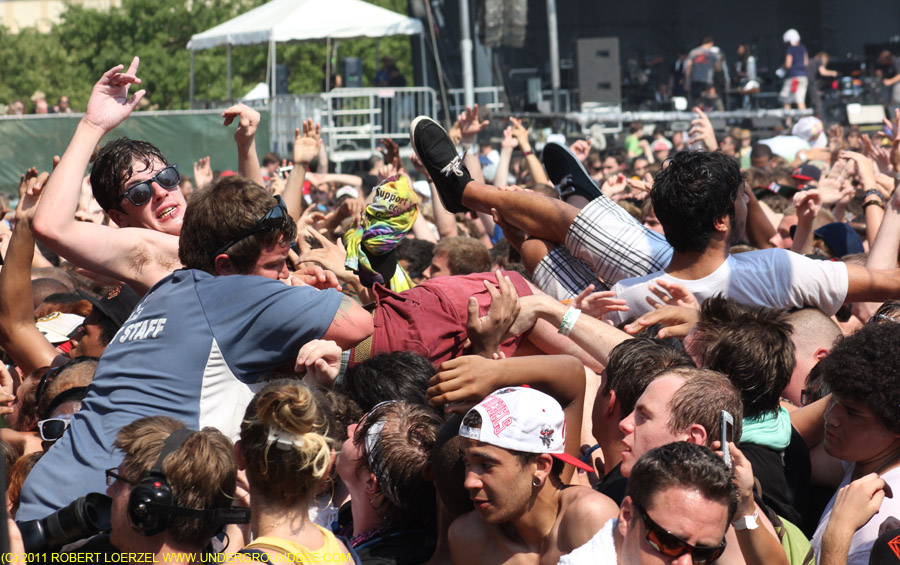

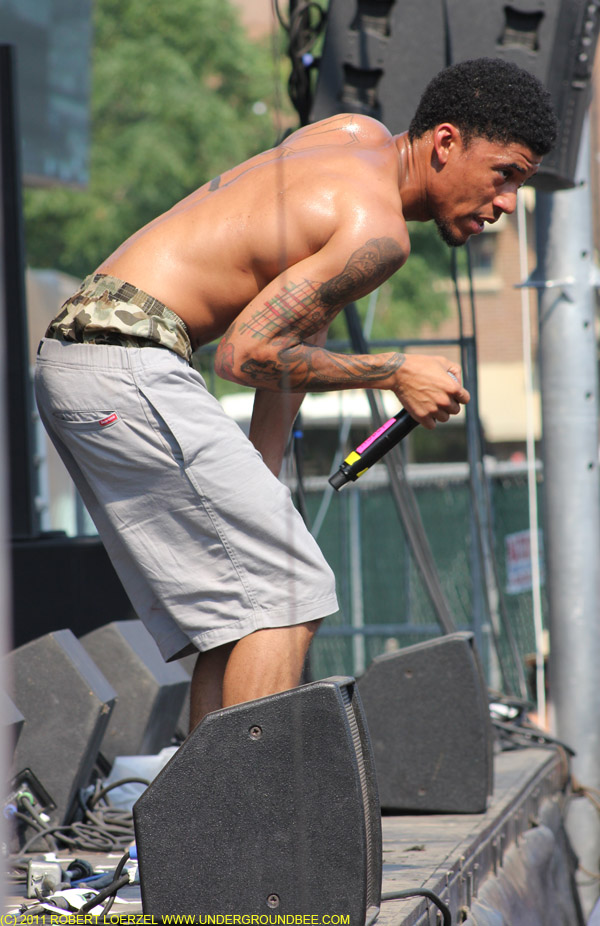
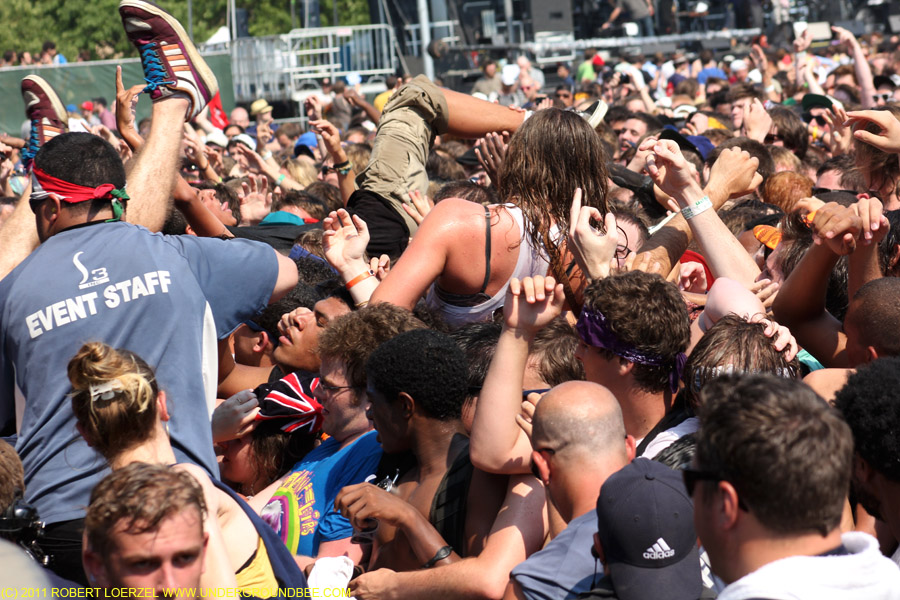

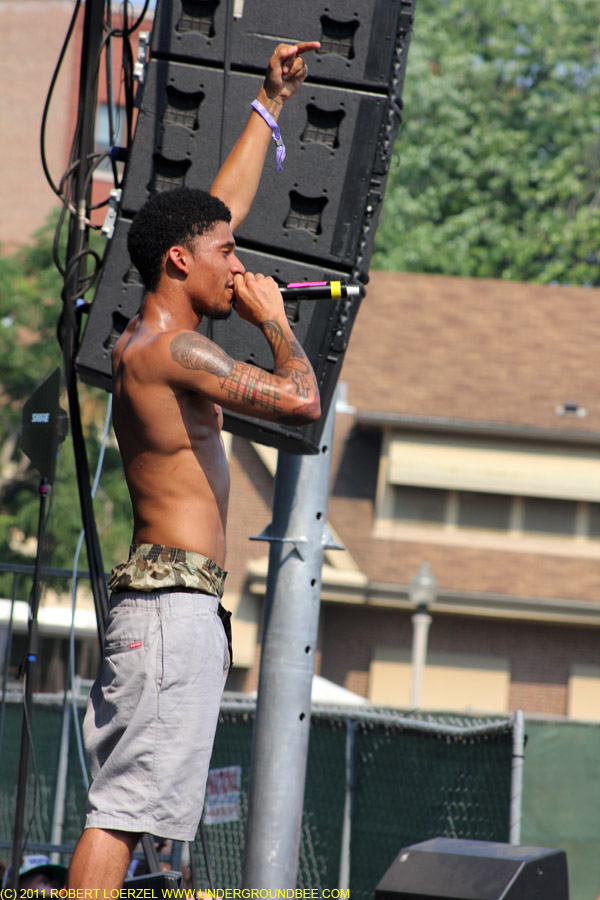
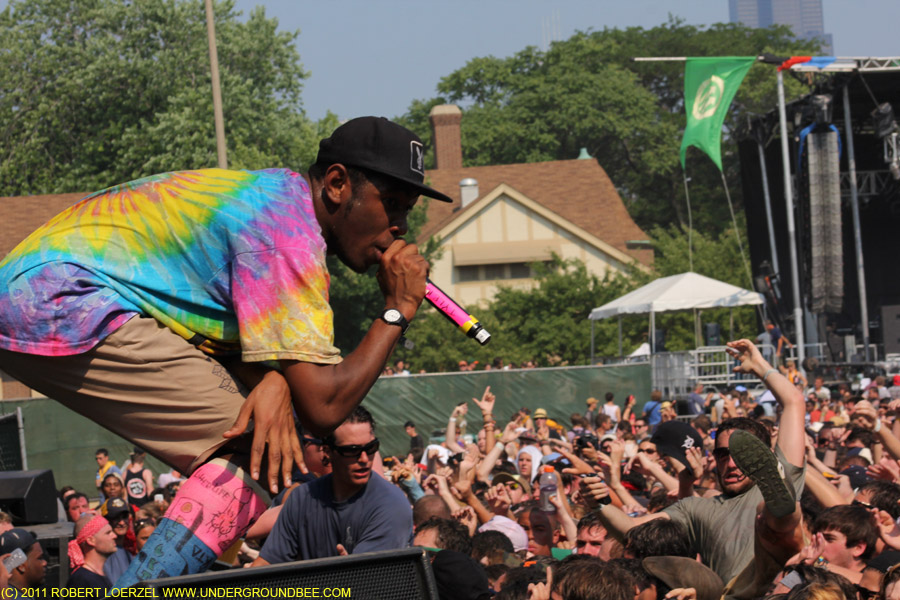

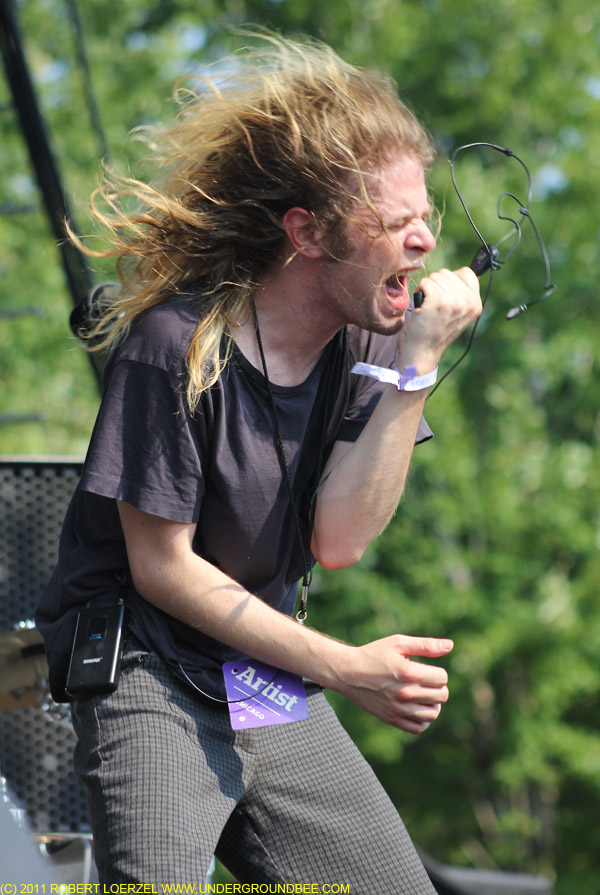


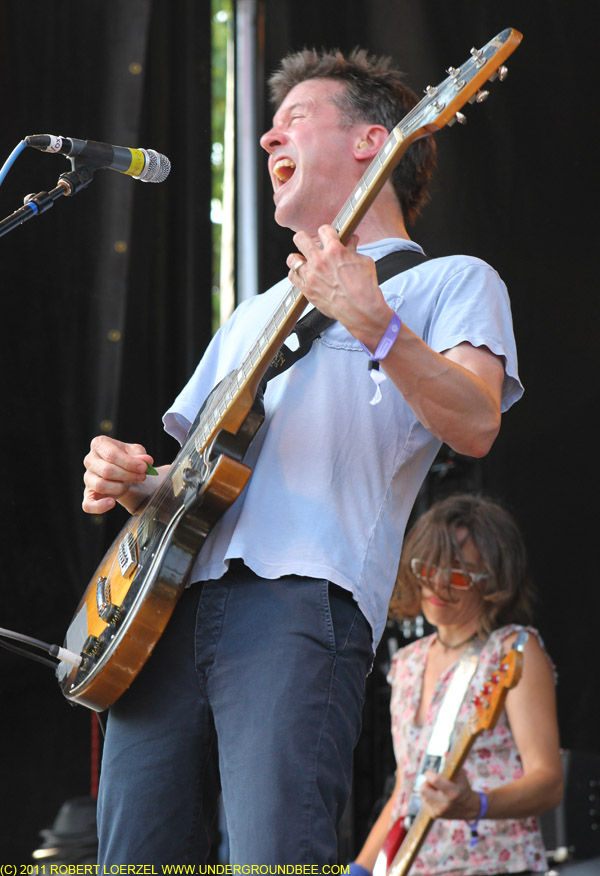


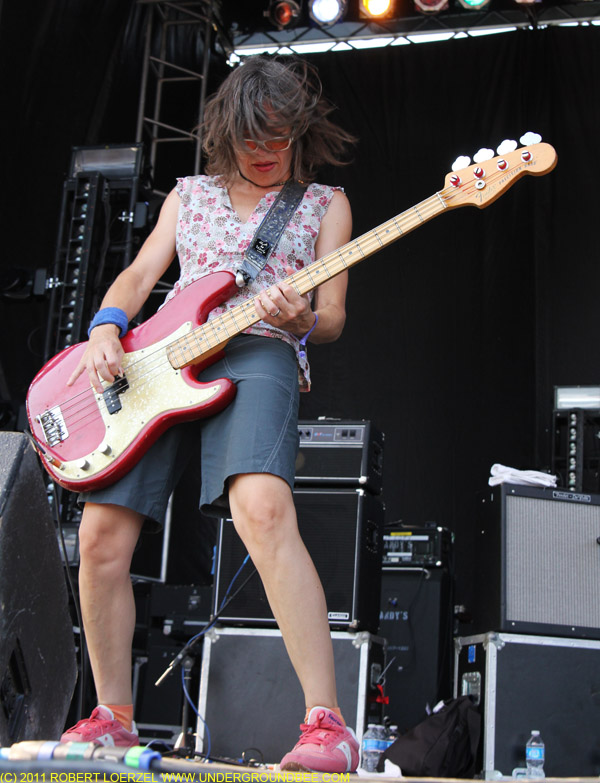
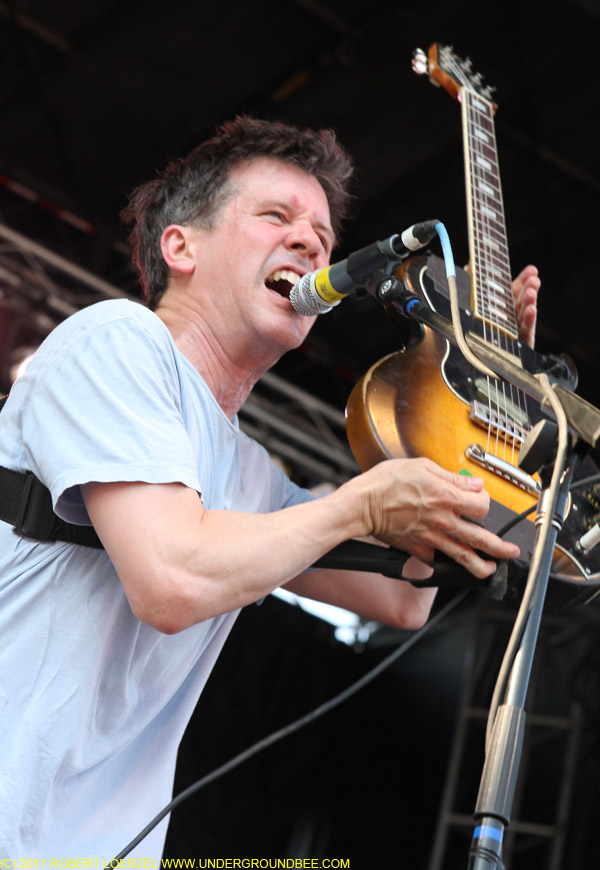


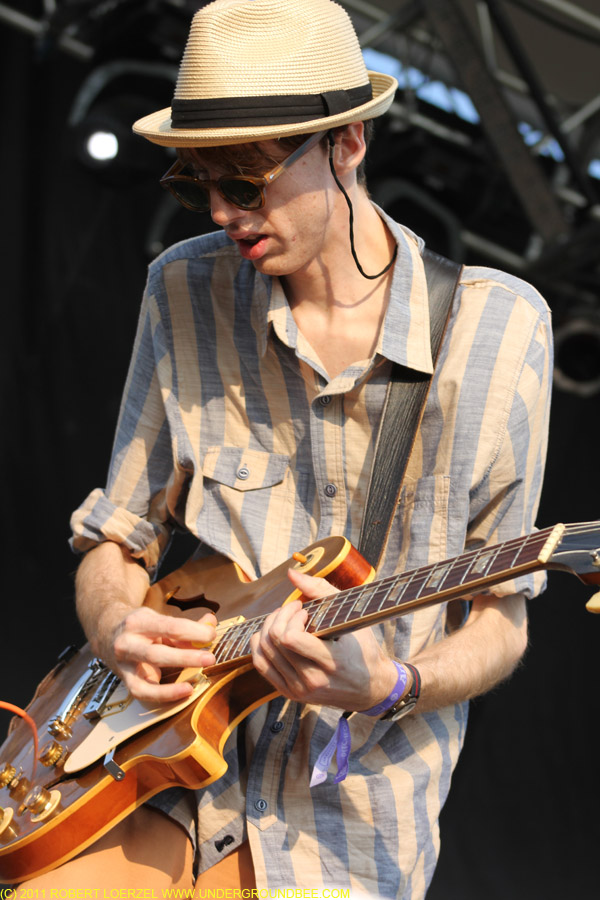
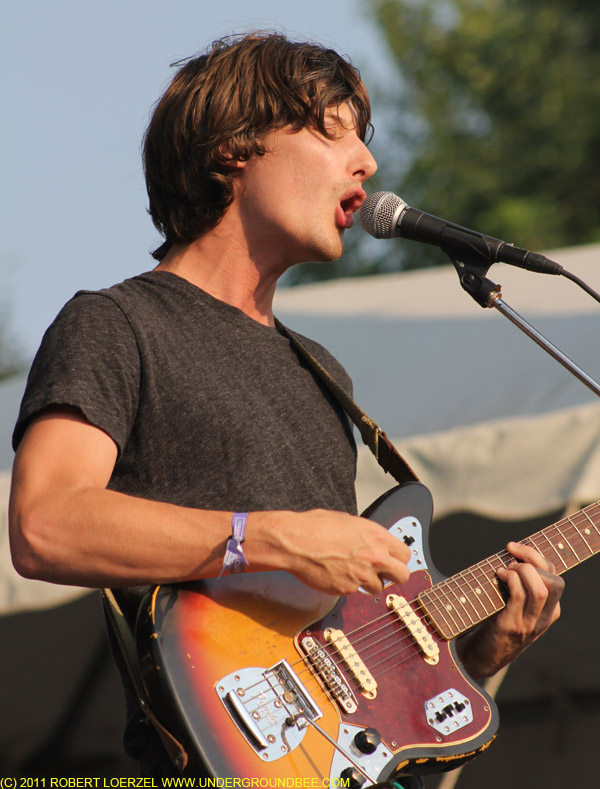
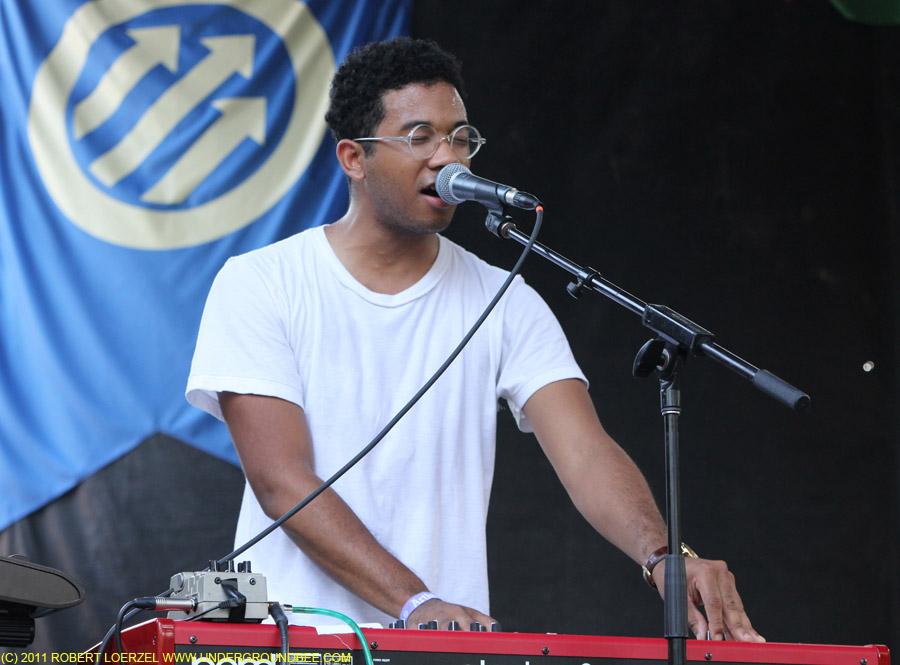


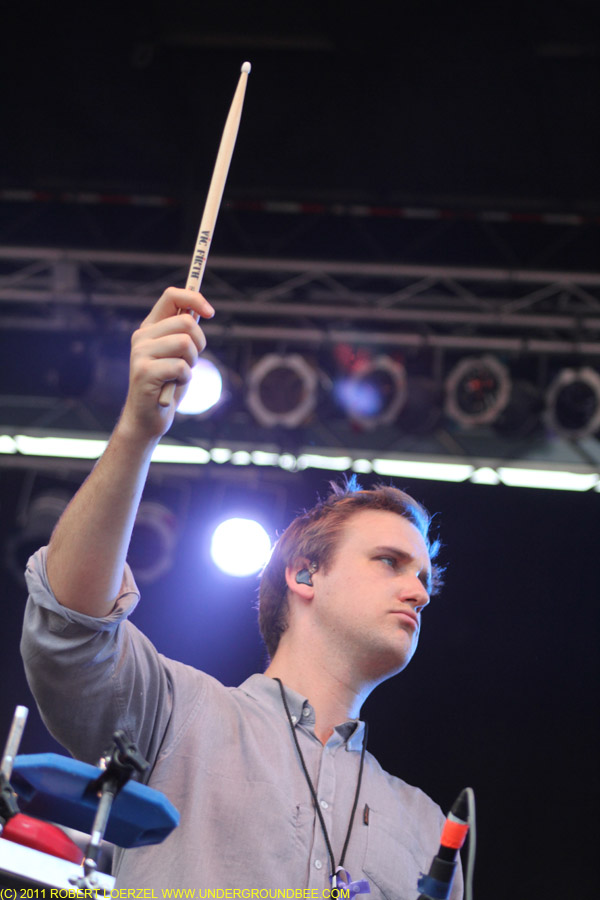
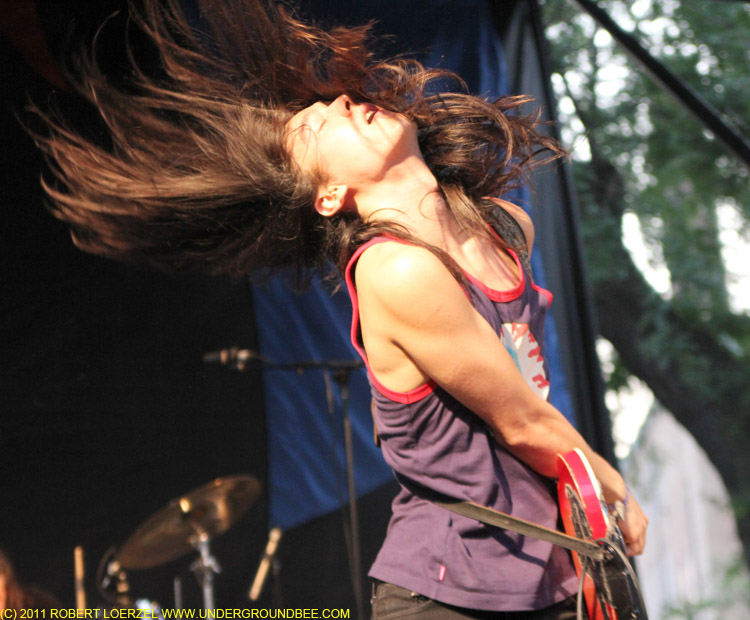

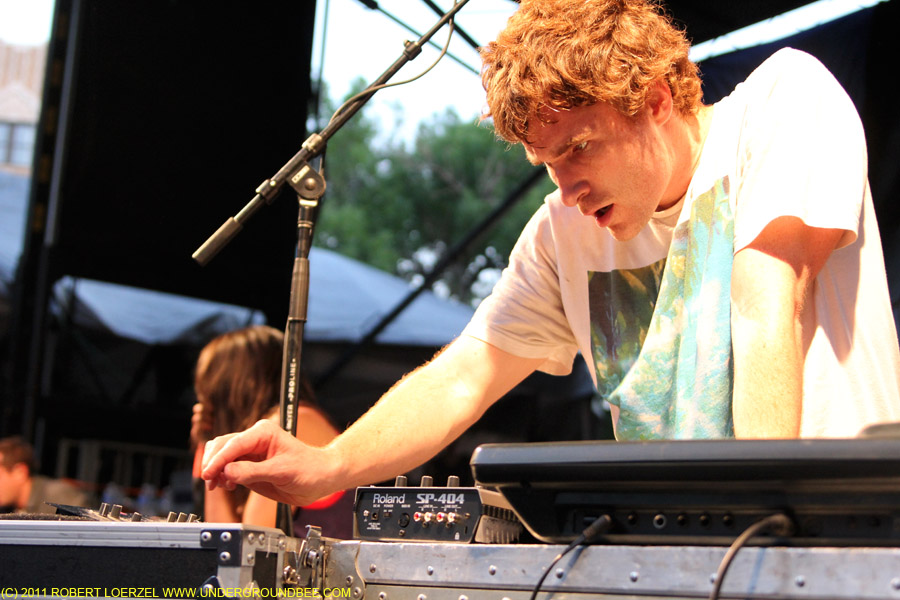



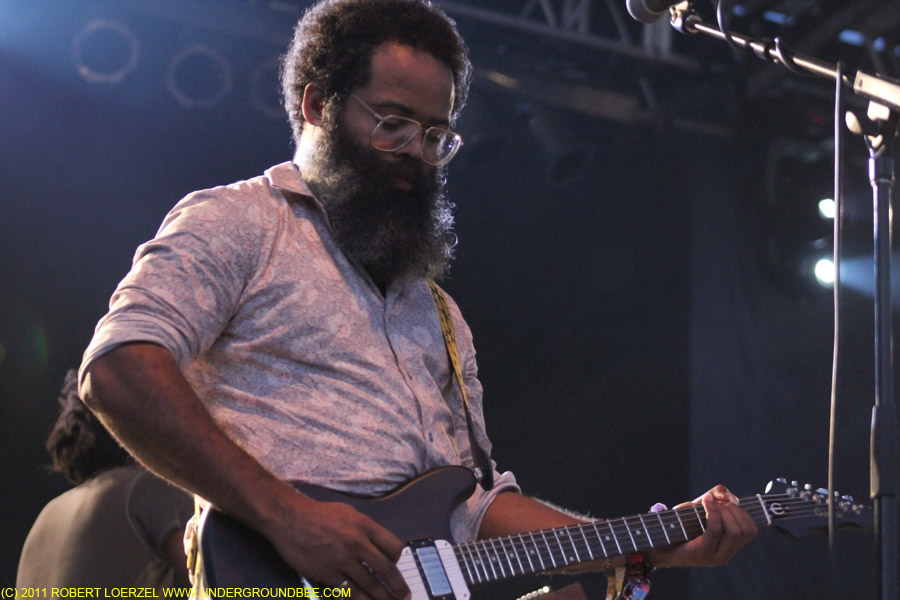
More Pitchfork Music Festival 2011 coverage: Day One Photos / Day One Review / Day Two Photos / Day Two Review / Day Three Review / More Photos / Photos for WBEZ
Pitchfork Day Two: Review
The 2011 Pitchfork Music Festival ran the musical gamut — from the softest and prettiest music to the loudest and most aggressive. And sometimes, the contrasting musical styles could be heard simultaneously, thanks to the sound bleed of noise from one stage wafting through the hot summer air to the other end of the park.

As the day began, the hip-hop of Crissy Murderbot and MC Zulu intruded on the lovely harmonies of one-woman choir Julianna Barwick. Thankfully, if you were close enough to the “Green” stage, Barwick’s sublime voice overpowered everything else, as she used looping to build so many layers of vocals — it was hard to tell at time if it was four parts of harmony or 25. It was a beautiful benediction of sorts to begin the day with.

Other highlights Saturday included the early-afternoon set by Woods, who have released three strong albums in as many years. The latest record, Sun and Shade, features a few longer jams and even some Krautrock-style beats — and the band offered up all of that during its Pitchfork performance. Singer-guitarist Jeremy Earl sounded vulnerable with his appealingly warbly falsetto, while G. Lucas Crane, as usual, sang into a headset and manipulated sounds from tapes to add psychedelic touches to the mix. (It’s hard to tell exactly what he is doing or contributing to the band just from watching him, but he seems to be a key player in making it all work.) Woods’ folkier songs sounded nice, but the bigger jams were the best, with the guitar/tape/whatever solos shimmering out across the park.
No Age’s pummeling punk rock (also using some tape effects) got the audience at the “Red” stage revved up — lots of people seemed to be throwing their water instead of drinking it.

Also on the noisy end of the Pitchfork spectrum, the band Off! (a sort of punk-rock supergroup with members from the Circle Jerks, Burning Brides, Red Kross and Rocket From the Crypt) played punk of a more old-school variety — you could actually hear some melodies hidden inside the growls — generating a similarly raucous response, including some crowd surfing. As singer Keith Morris remarked before the set, “We are going to bring a different flavor to the party.”

The band Destroyer inspires either love or hate reactions, and that was true of its set Saturday at Pitchfork. I like Destroyer frontman Dan Bejar’s contributions to the New Pornographers well enough, but his nasal, affected vocals put me off. Bejar’s fans insist there’s some real genius in his songwriting, but I’m just not hearing it. And Destroyer’s latest incarnation, with lots of soft-rock trumpet and sax, was particularly annoying.

The reunited Dismemberment Plan was buoyant, practically giddy, during its set. The guys certainly looked like they were having a good time playing their old songs. When they stuck with the more straightforward post-punk rock, with clean guitar lines, it sounded pretty good, too. The band’s forays into hip-hop and dance music were less successful.

I was peripatetic at Pitchfork on Saturday, running from one stage to the next and trying to get photos of everyone. I wish I’d seen more of the set by Zola Jesus, who completely dominated her stage. When I saw her two years ago at the Wire Fest at the Empty Bottle, she was an intense performer, but much more contained. (Here’s a photo of her from that show.) This time, she was striding the stage in a outlandishly frilly dress and singing with force.

DJ Shadow began his set by climbing into a giant golf ball and then staying inside it for a good 20 minutes or so, with nothing apparently happening on the stage… just a scintillating musical mash emanating from inside the ball. At least, we think it was emanating from inside the ball. The problem was that he was scheduled to play at an hour when the sun was still up, so the video projections onto the sphere were almost completely invisible. After a while, the ball spun around, revealing an opening on the other side, where DJ Shadow was sitting with his equipment. He asked if anyone had been able to see any of the projections, seeming disappointed that the environment wasn’t working for the show he’d planned. He continued to play an inventive mix, but the lack of visuals was a big minus.

Fleet Foxes turned out to be an excellent act to finish the night. They’re a pretty mellow band for that headlining spot, but their smartly composed folk rock and art-rock suites had a lively, spry feel, and the audience clearly included a lot of people intimately familiar with these songs. Cigarette lighters were lofted. Up-raised hands swayed. Some people even danced. On their second album, Helplessness Blues, Fleet Foxes has gone almost baroque with complexity on some of its songs, and the band’s interplay on mostly acoustic instruments was as dead-on as the vocal harmonizing. A little too mainstream for Pitchfork? Maybe, but the music was some of the best heard all day.
More Pitchfork Music Festival 2011 coverage: Day One Photos / Day One Review / Day Two Photos / Day Three Photos / Day Three Review / More Photos / Photos for WBEZ
Pitchfork Day Two Photos
My photos from Day Two (Saturday, July 16) of the 2011 Pitchfork Music Festival in Chicago’s Union Park.

















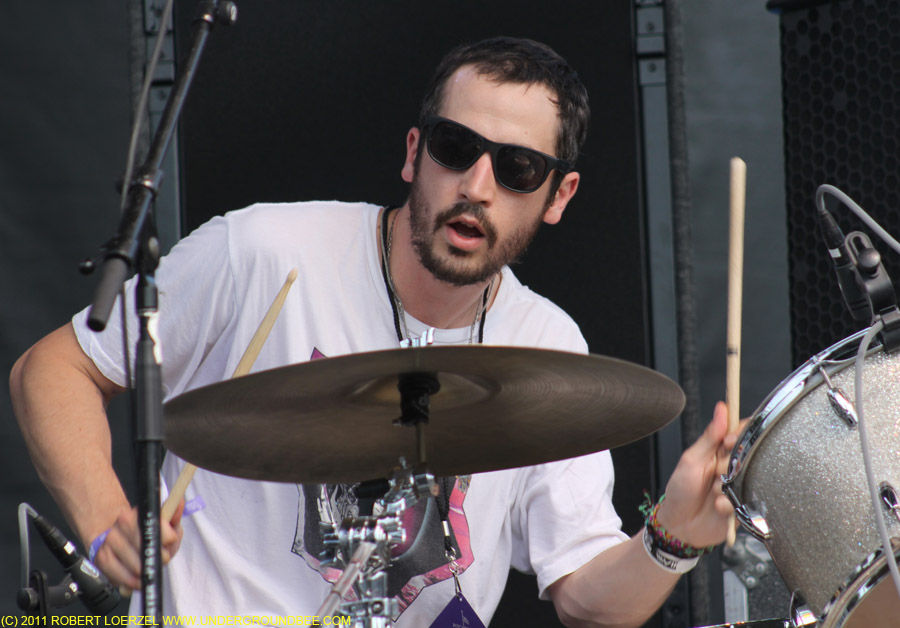

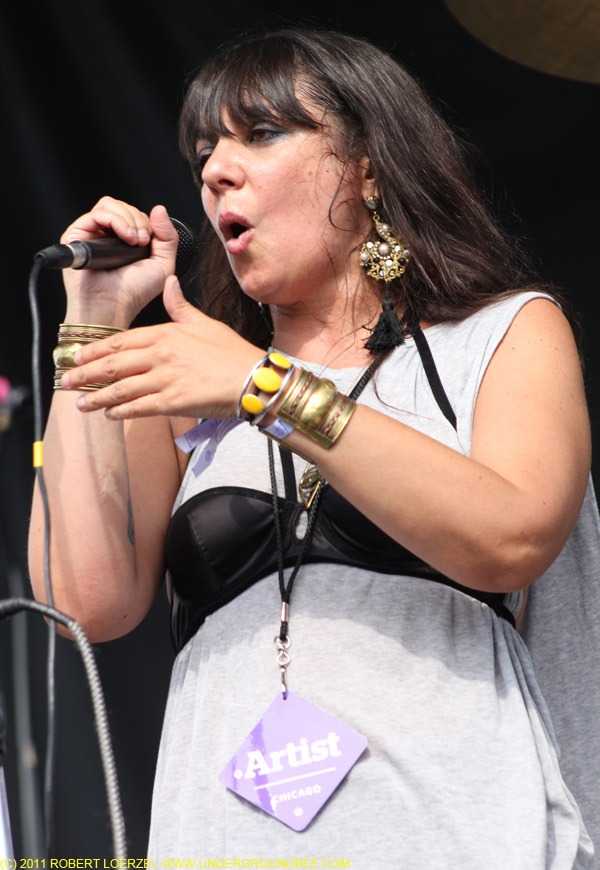


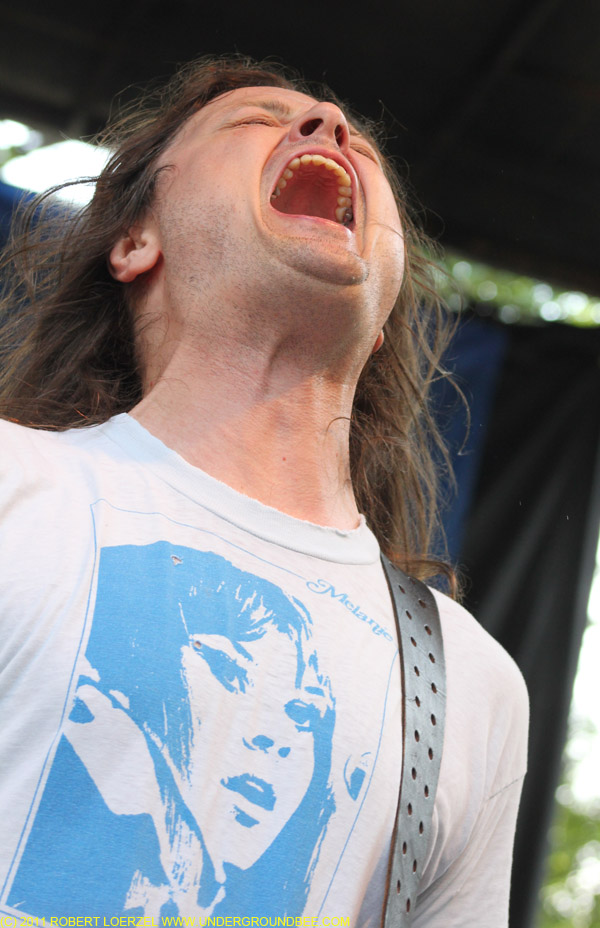

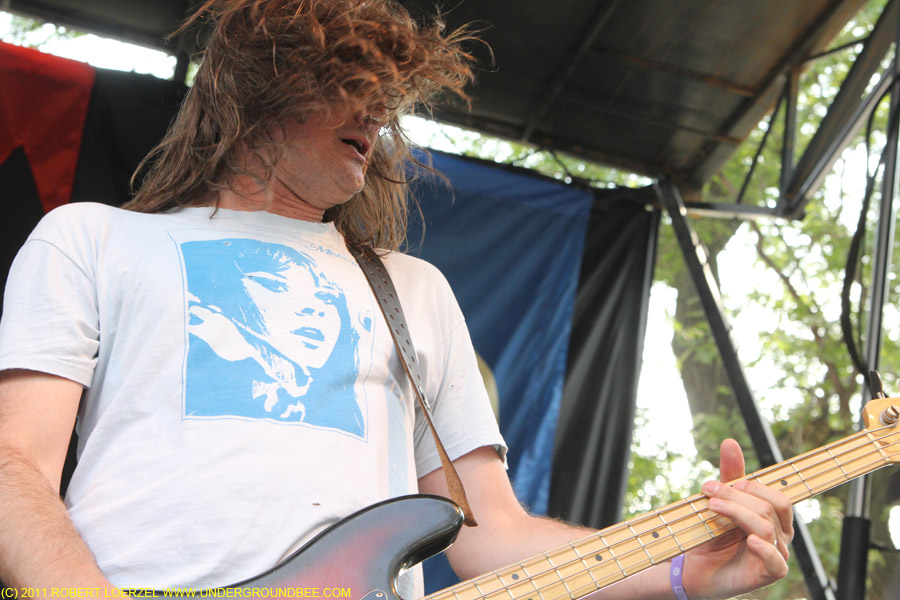
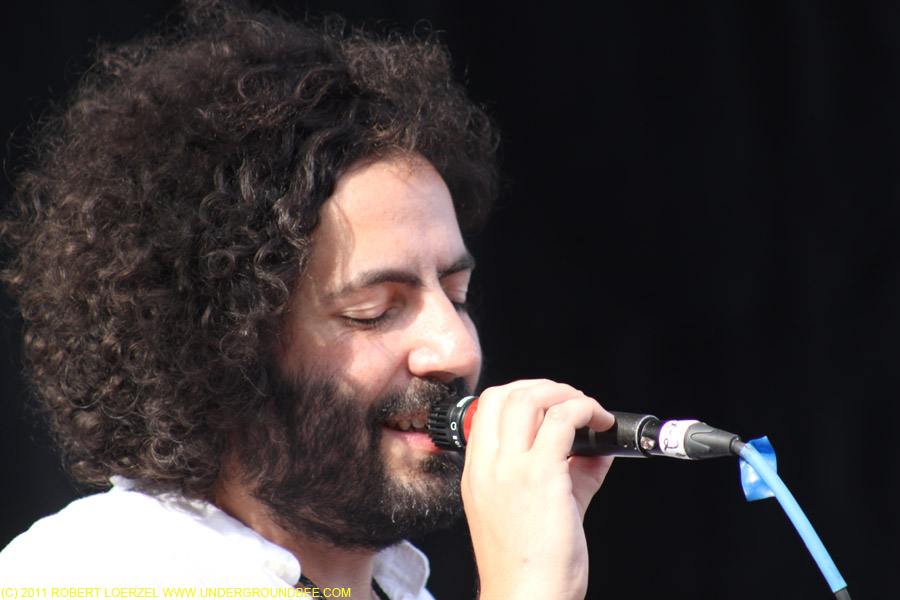

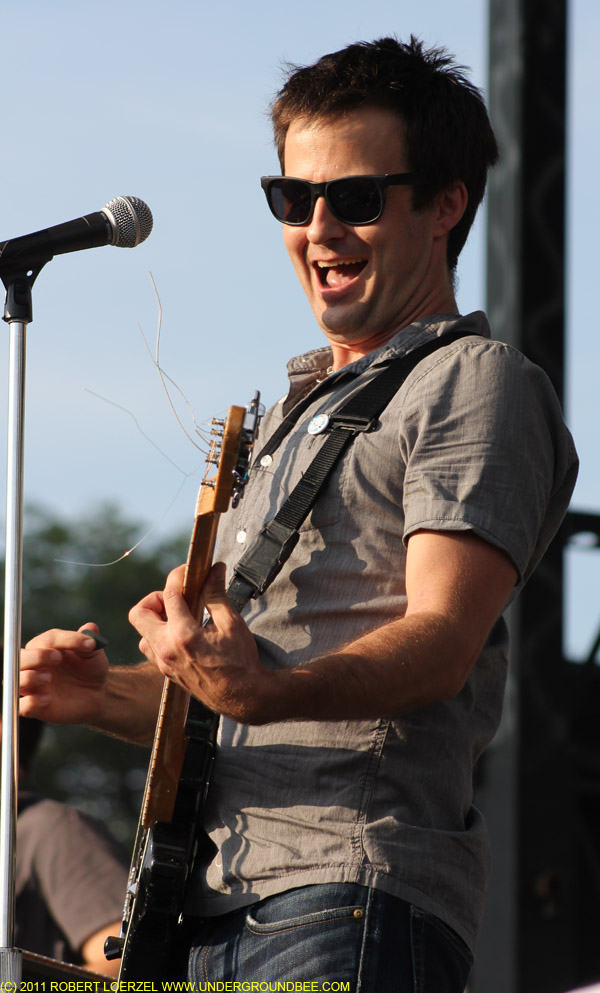




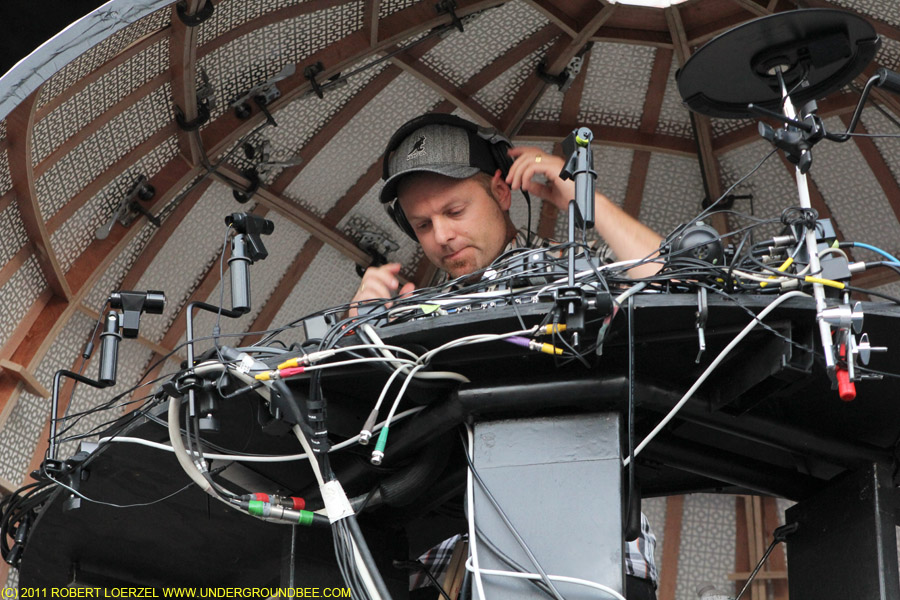





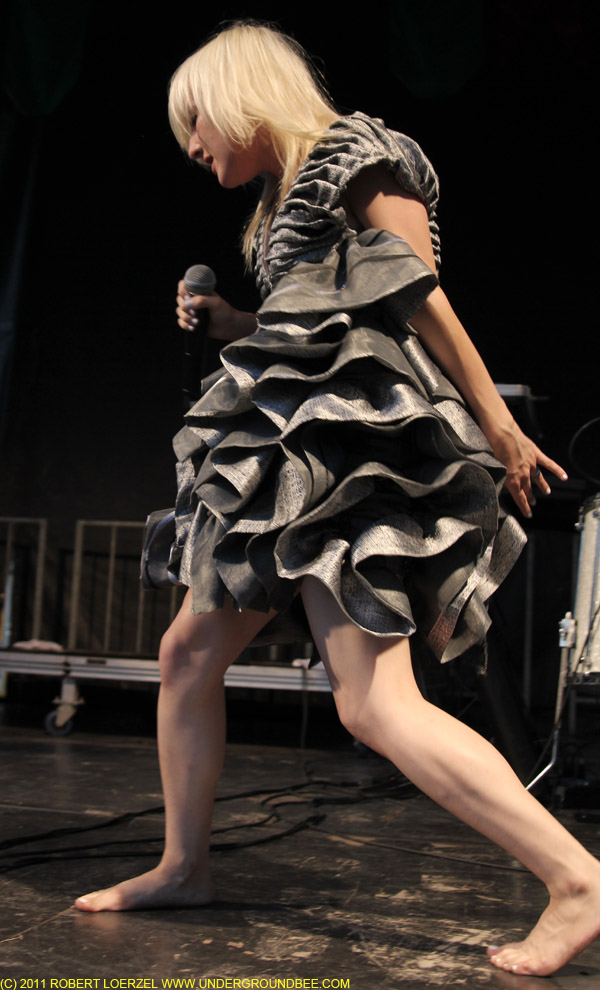
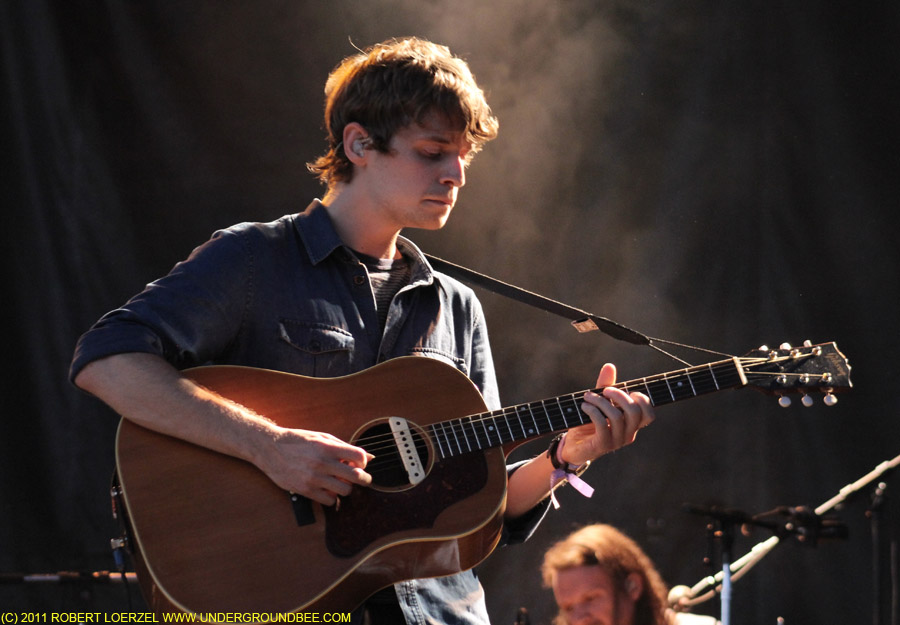
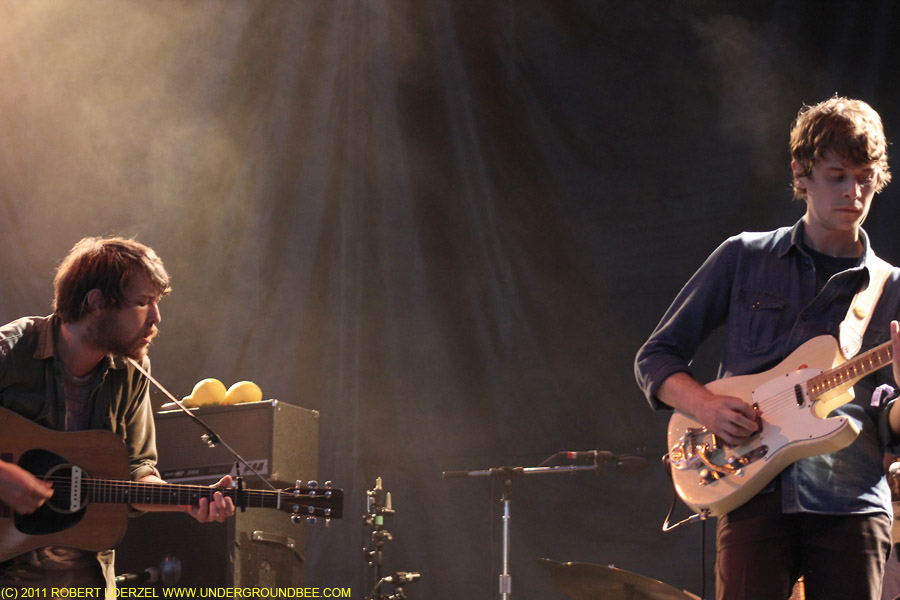

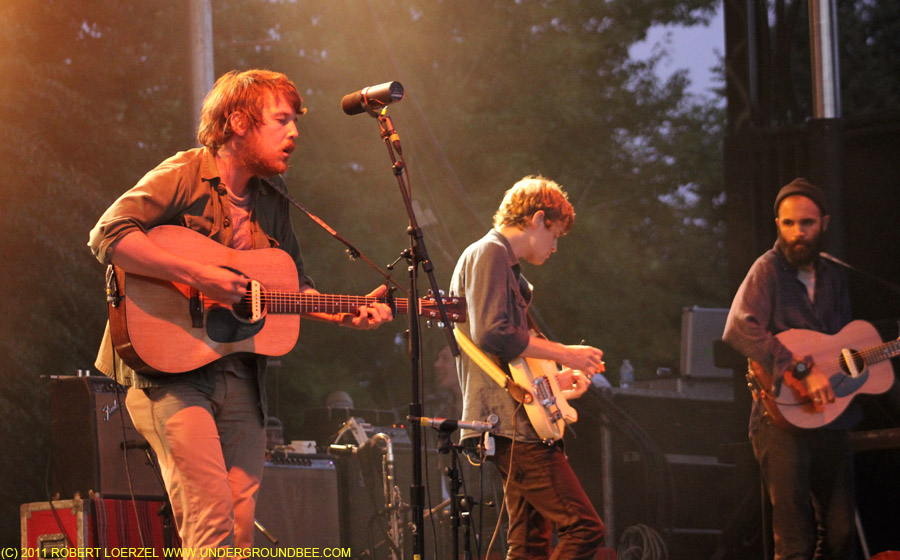

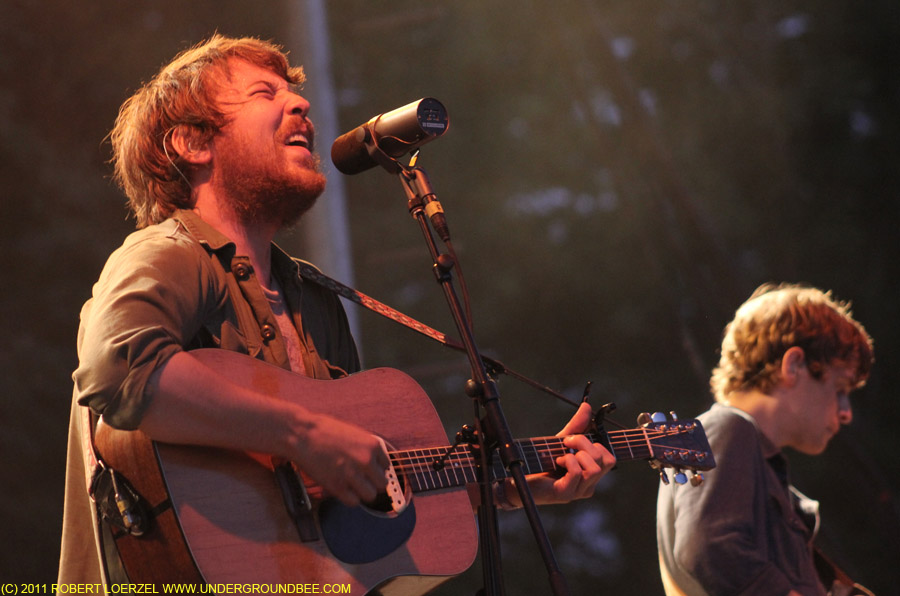
More Pitchfork Music Festival 2011 coverage: Day One Photos / Day One Review / Day Two Review / Day Three Photos / Day Three Review / More Photos / Photos for WBEZ
Pitchfork Day One Review
This year’s Pitchfork Music Festival includes some reruns from previous year’s editions — such as Friday’s headliner, Animal Collective — as well as the usual smattering of new acts that have received the Pitchfork website’s stamp of approval. It’s a reasonably diverse lineup and considerably more interesting than what’s coming up later this summer at the other big summer fest in Chicago, Lollapalooza.

In some previous years, the fest’s first day featured a theme, such as bands performing albums in their entirety or playing songs requested online by fans. This time, it was just a Friday full of music, with the show starting mid-afternoon. EMA (aka Erika M. Anderson, former member of the Gowns) got things off to a good start with her band’s set, which built from quiet verses to louder moments — not loud choruses or solos, so much as instrumental passages when the volume of the guitars and violin and drums went up, with Anderson showing a wakening sense of urgency, lifting up her guitar or kicking. For her last song, “California,” she put down her guitar and chanted to the crowd, almost like Velvet Underground-style spoken word, to dark, doomy string accompaniment. It was an odd mismatch with the rest of EMA’s music.
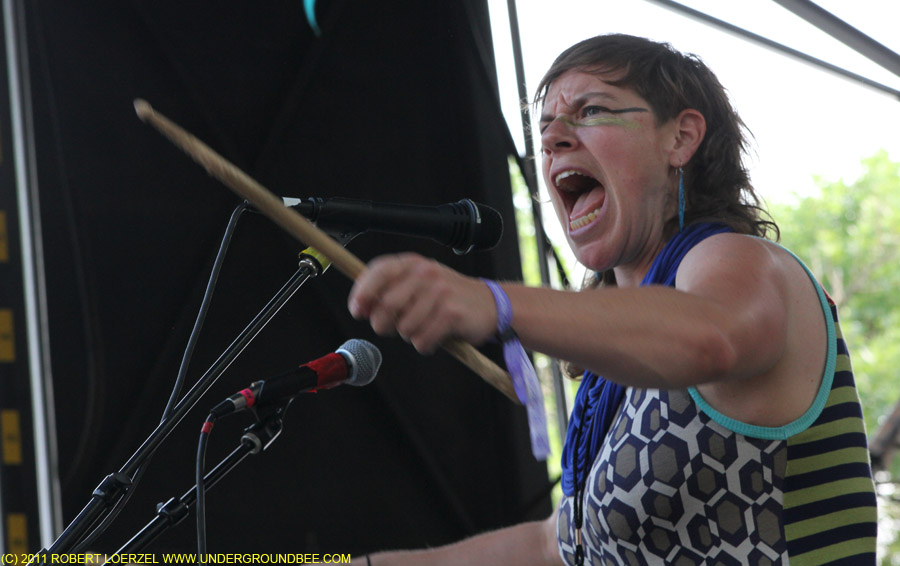
Tune-Yards (aka Merrill Garbus) was one of the day’s highlights, agilely reconstructing the complex, quirky layers of her studio recordings with assistance from three backup musicians, some looping pedals, a ukulele and her strong, brassy voice. Her latest album, W H O K I L L, has been praised by some critics as one of the year’s best records. As a live act, Garbus seemed like she was having a lot of fun. Making that complicated music wasn’t work for her — just a cool game. Her face often took on the intense look of someone screaming in anger, but then she would flash a disarming smile. And when the clattering percussion cut out in some passages, allowing her voice to come through almost a cappella, you could feel its strength.
In one of the scheduling conflicts that can drive music fans crazy, Tune-Yards was playing at the same time as Battles was across the park; I caught some of each set. Battles seems to have survived the departure of its multi-instrumentalist and vocalist Tyondai Braxton just fine. The emphasis was still on tricky time signatures, a sort of indie-rock version of math rock.
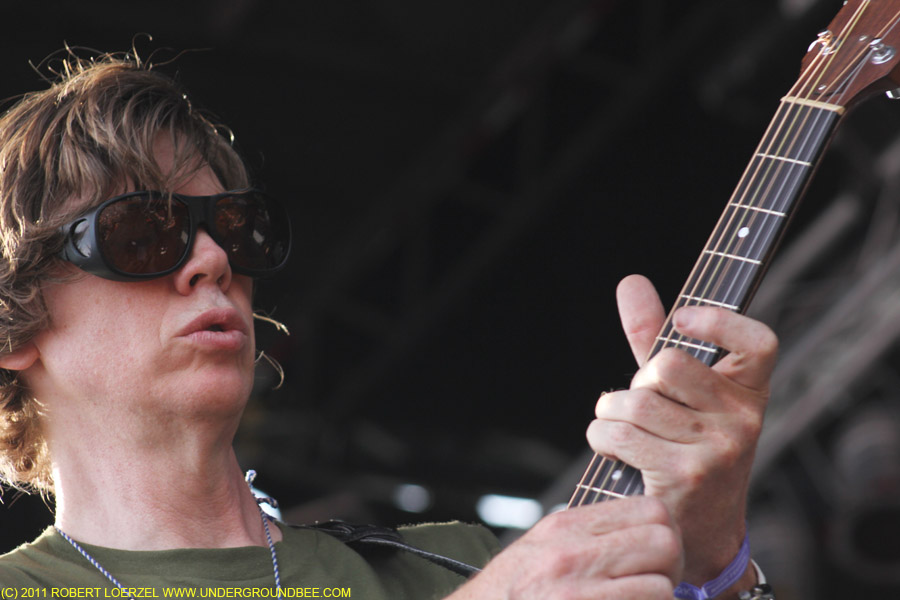
Sonic Youth’s Thurston Moore, who recently released a mostly acoustic and mostly mellow album, Demolished Thoughts, played a, yes, acoustic and mellow set of his solo music. “You guys want to hear songs about rape, incest and carnage?” he asked sarcastically just before playing alongside a harp and a violinist. “We’ll do the best we can.” If anything, Moore’s set was a little too lulling for the festival scene, but it’s a fascinating musical exercise to hear the sort of droning chords and alternate tunings he plays with Sonic Youth with all of the noise stripped away. Some of the songs feature just a small smattering of vocals, more like haiku than typical rock lyrics.
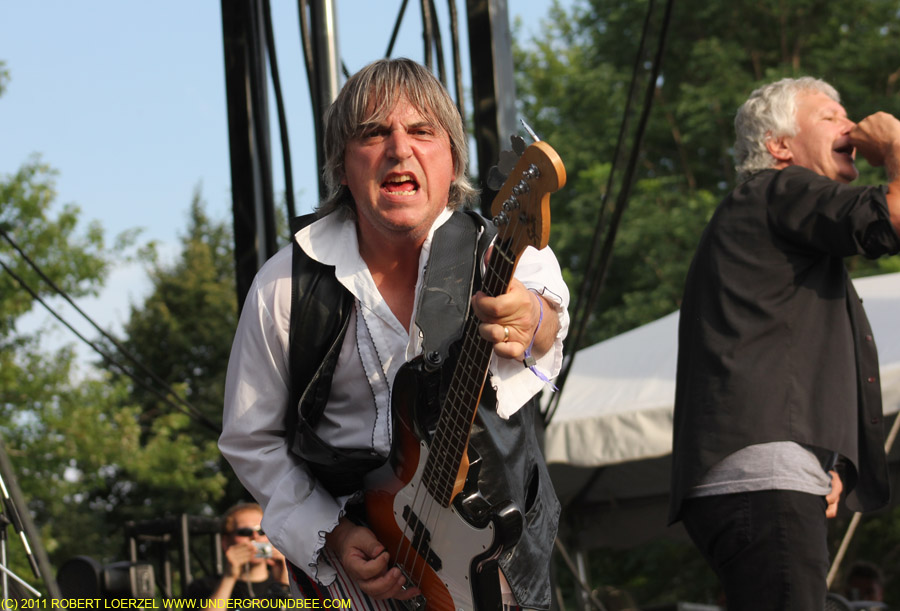
The reunited “classic” lineup of Guided By Voices — that is, to say, the version of the band that played on classic records such as Bee Thousand — played a set of greatest hits mostly from that era. Neko Case joined the band on harmony vocals on the first song of the set, “Echos Myron.” Robert Pollard already seemed to be fairly sloshed as the band began playing — although I heard another GBV fan remark that he seemed less drunk than usual. Either way, he was right on target with his singing of all those fantastic lyrics, even if he wasn’t at his sharpest with the kicks and jumps and microphone twirls. This lineup of GBV is apparently going back into retirement soon, but Pollard continues to be prolific with solo albums and other projects. And it will be a surprise if GBV doesn’t surface again in some form. Friday’s made a good case for keeping the band going until the end of the universe.

With her usual casual and unassuming air, Neko Case beautifully sang a strong set of songs, mostly drawn from her last couple of albums, plus a couple of new ones. Judging from that evidence, it doesn’t sound as if she’s going to make any dramatic change in her style of music on her next record — which is perfectly fine, considering how staggeringly great her last couple of albums have been, proving that she’s not just a fabulous singer but also a true poet of musical and lyrical form. Case’s band and harmony vocalist Kelly Hogan know exactly how to provide the perfect accompaniment for her. It was not only a joy to hear Case’s and Hogan’s voices blending, but also the way Jon Rauhouse’s pedal steel guitar sounds like a plaintive human cry, a third voice entering into the harmony.

And then came the headliner, Animal Collective. This band has played some interesting music over the years, and its 2008 performance at Pitchfork wasn’t bad. As I noted back then: “Nice trance vibe, though I wish it had taken off into higher realms.” This year, Animal Collective’s attempts at creating a trippy ambience just fell flat. The psychedelic visuals on the big video screens failed to distract from the fact that the songs had taken on an almost grating edge.
More Pitchfork Music Festival 2011 coverage: Day One Photos / Day Two Photos / Day Two Review / Day Three Photos / Day Three Review / More Photos / Photos for WBEZ
Pitchfork Day One Photos
My photos from the first day of the 2011 Pitchfork Music Festival in Chicago’s Union Park (Friday, July 15).
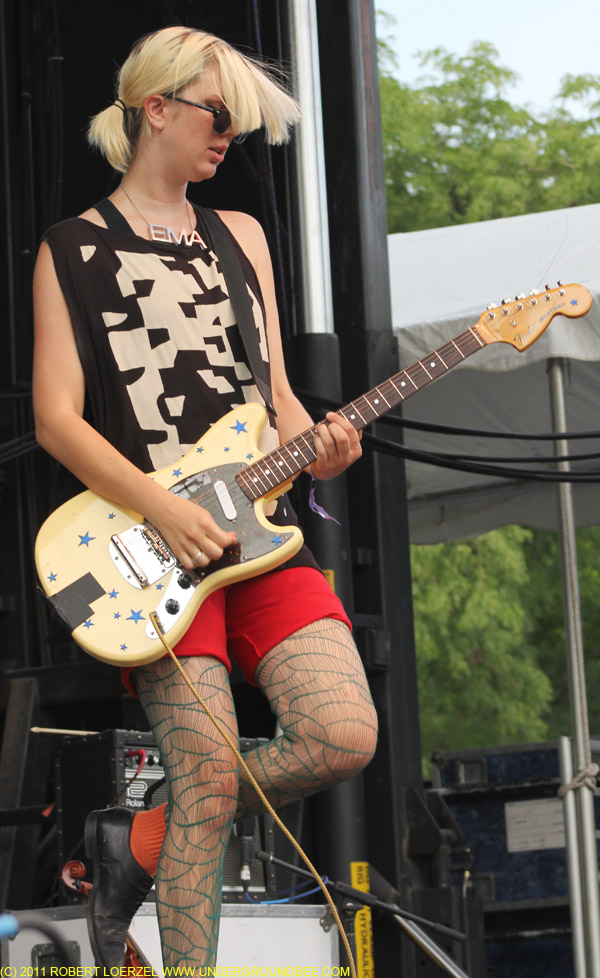
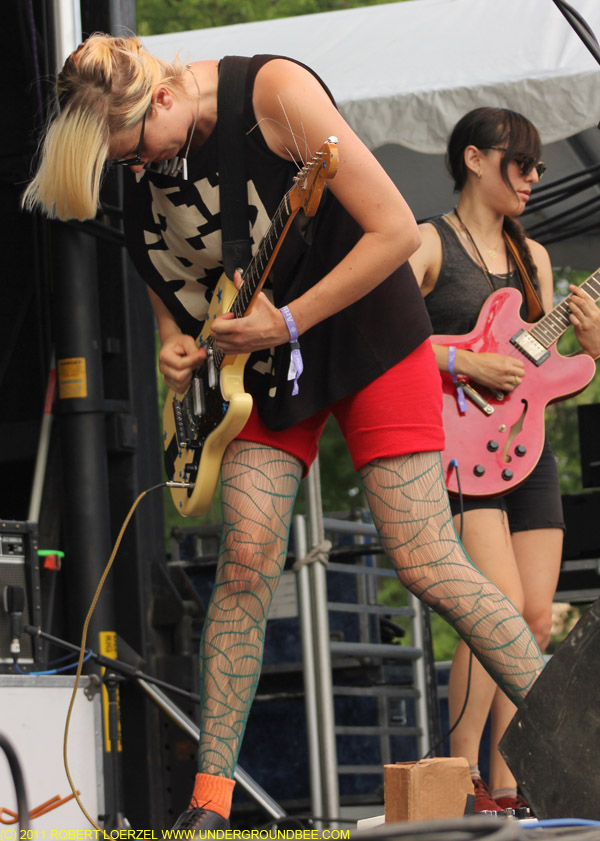

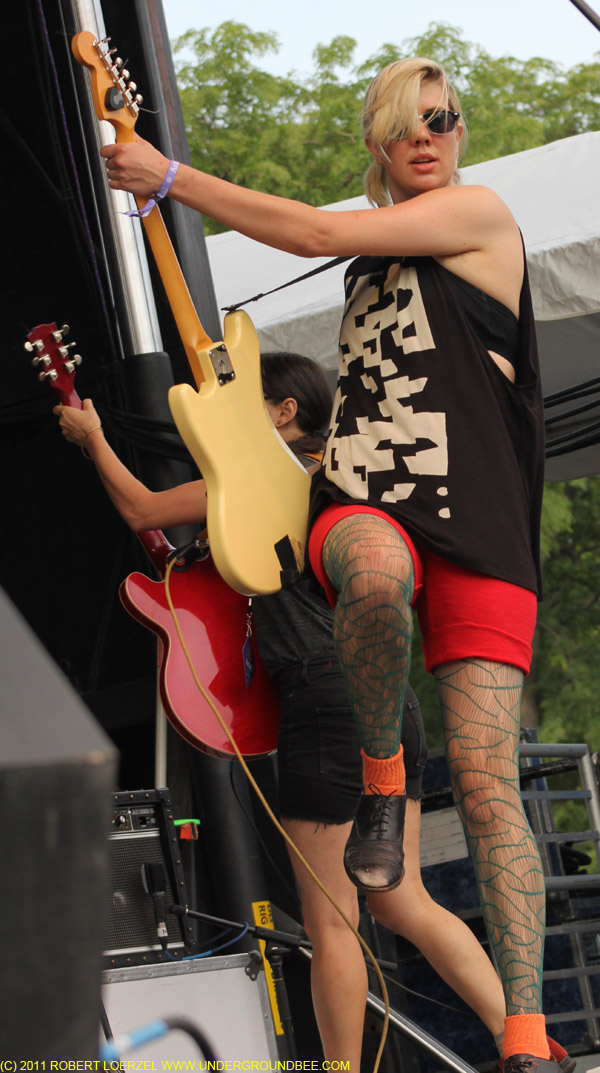
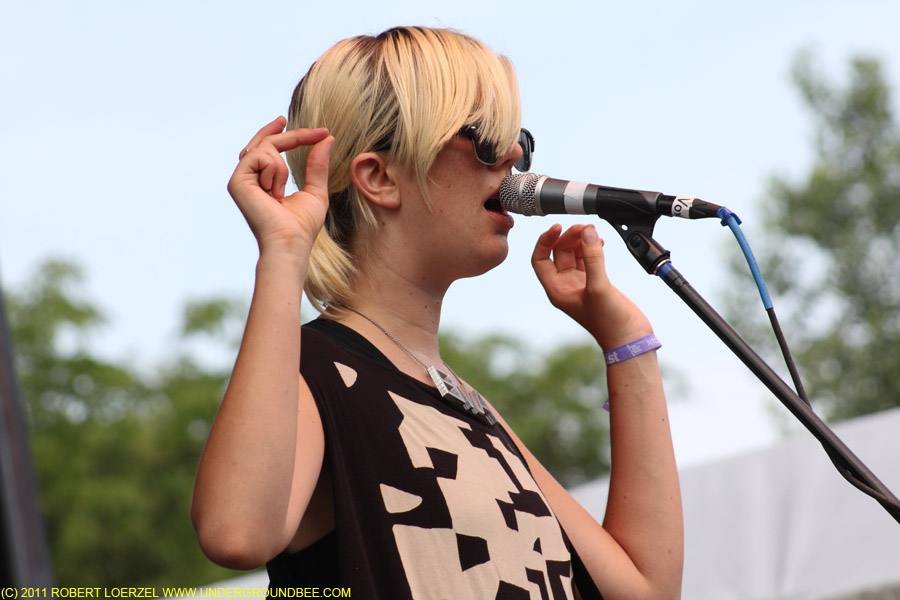
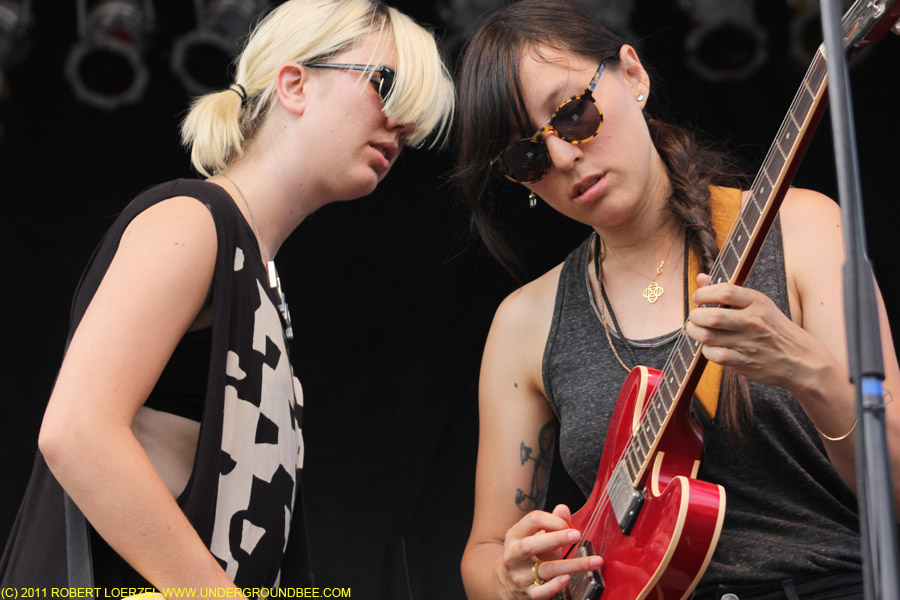

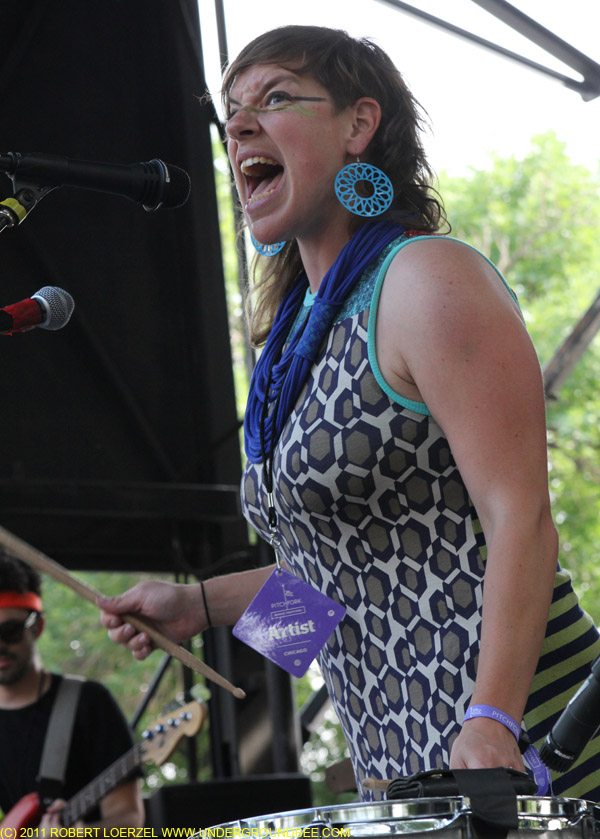


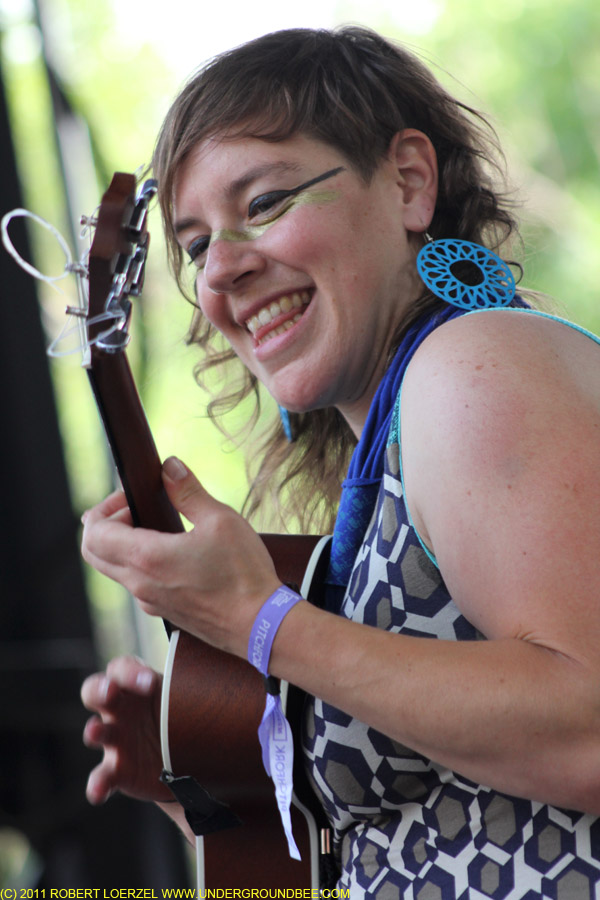

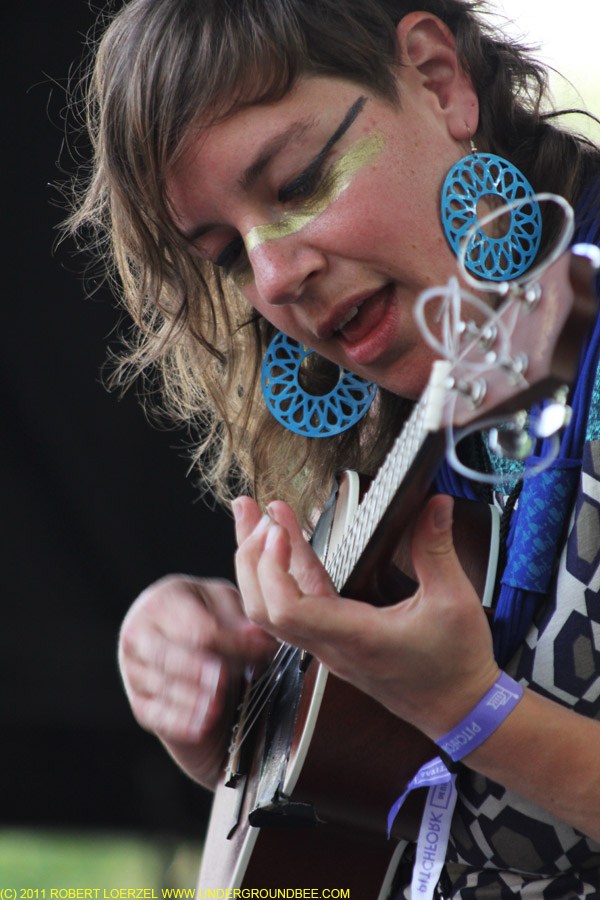
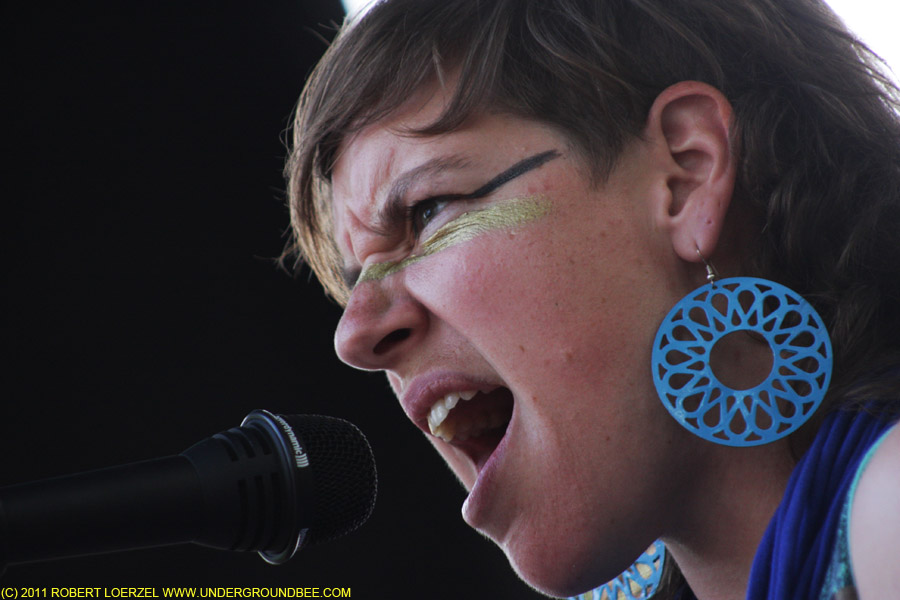
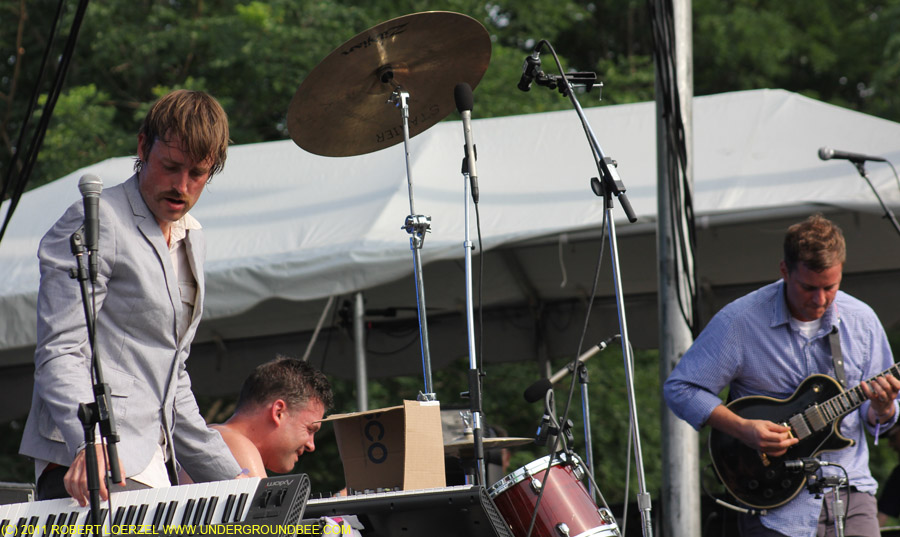
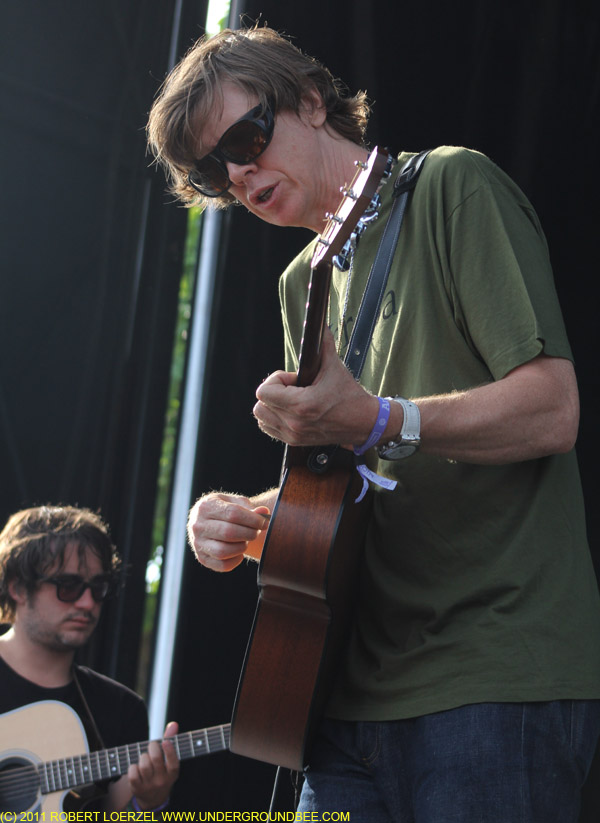

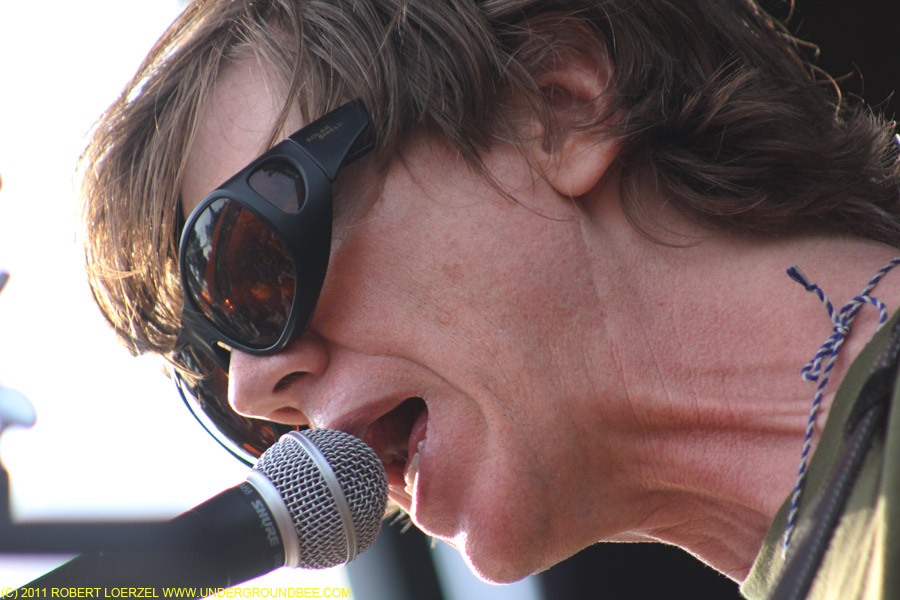
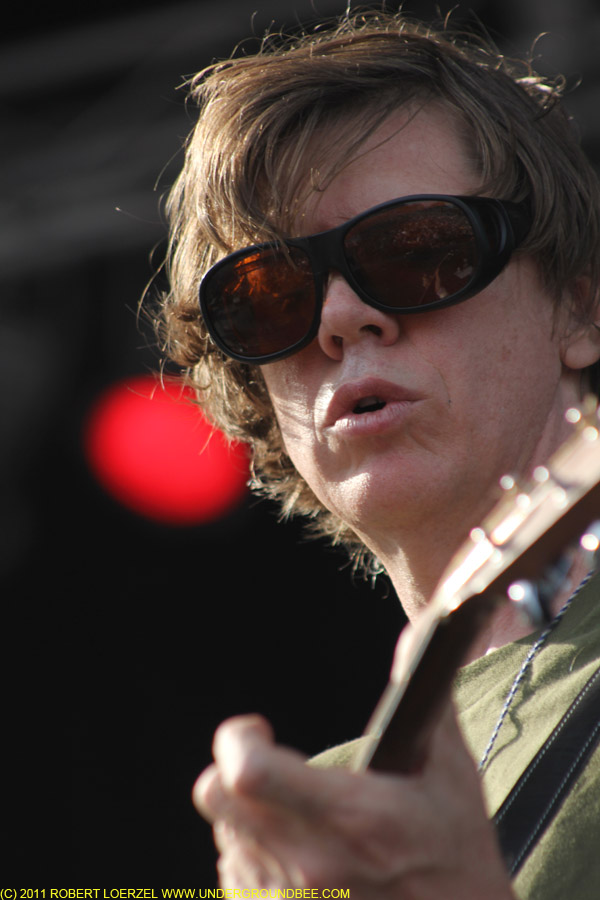
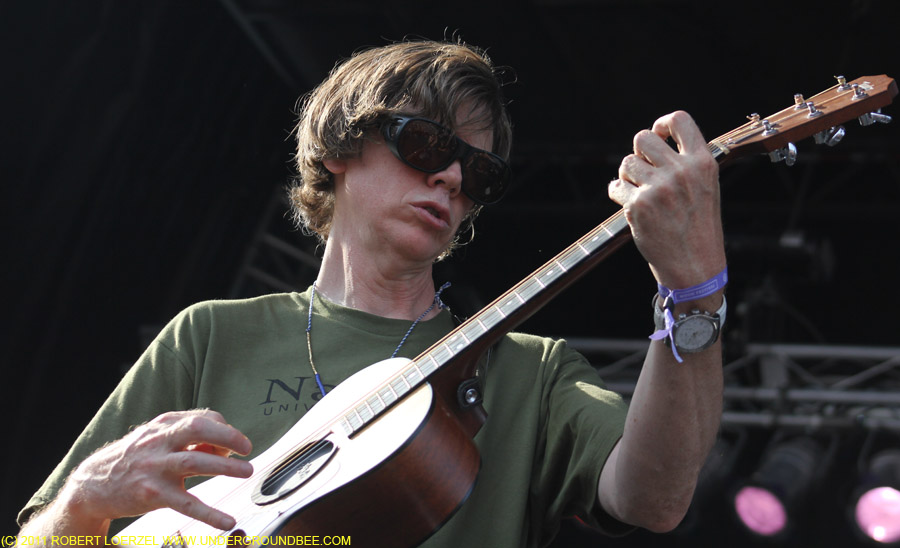
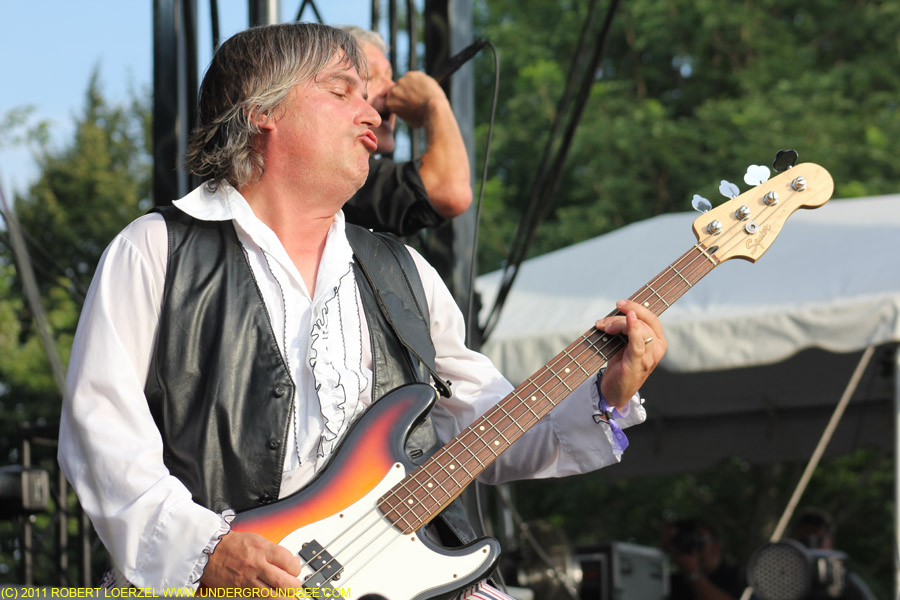
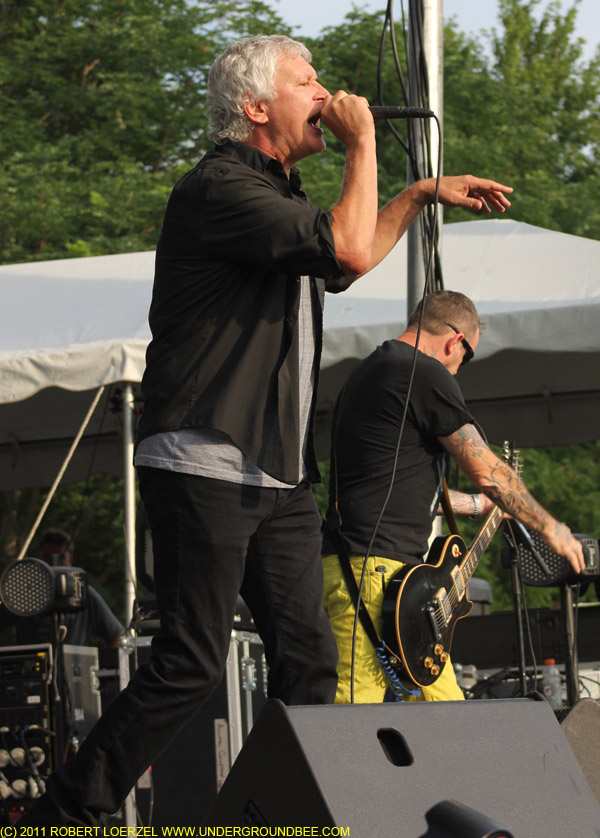

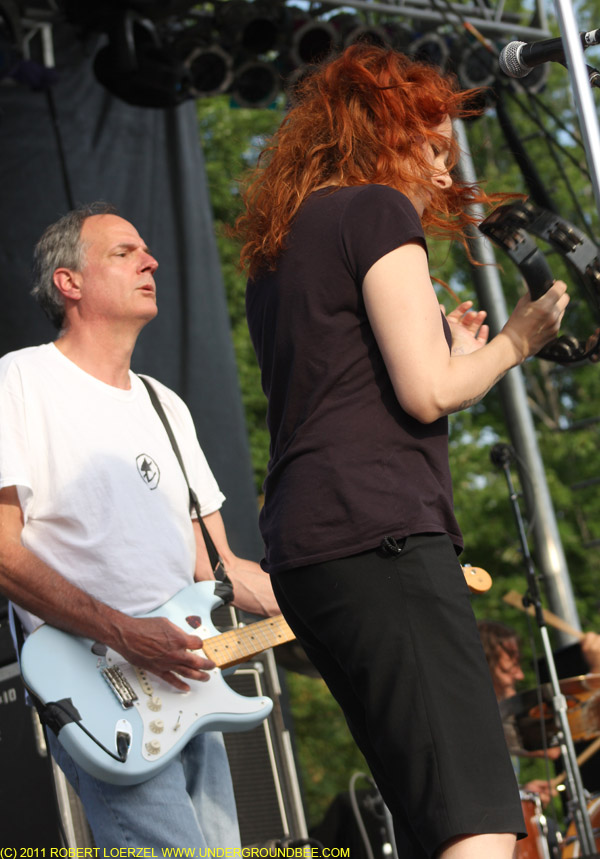

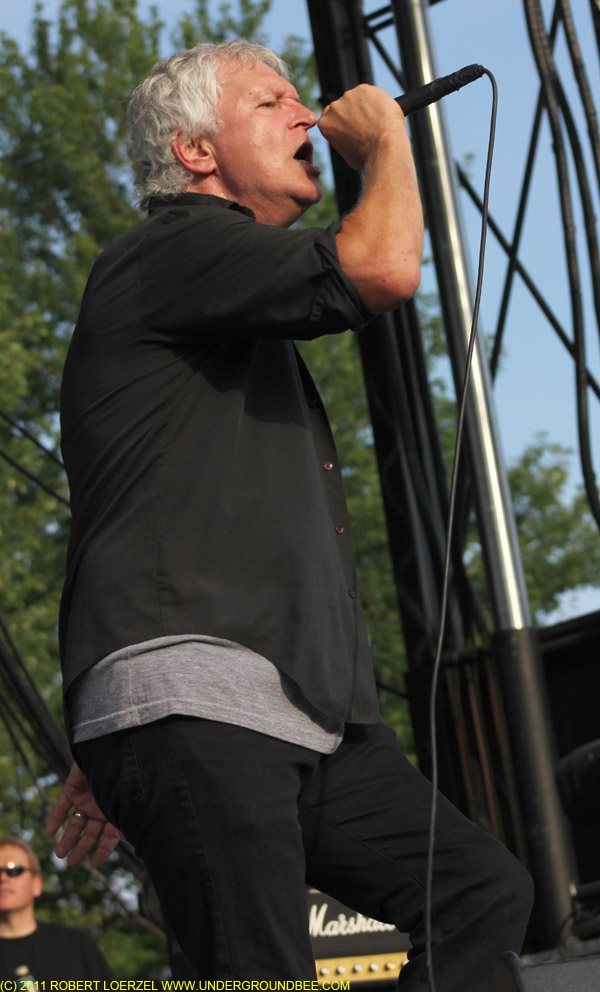
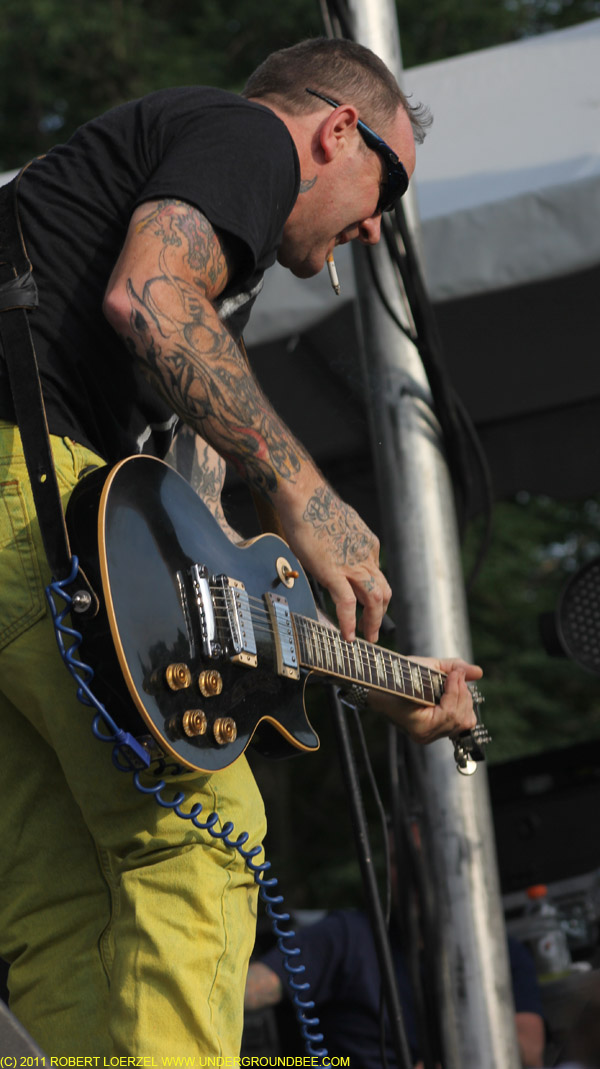
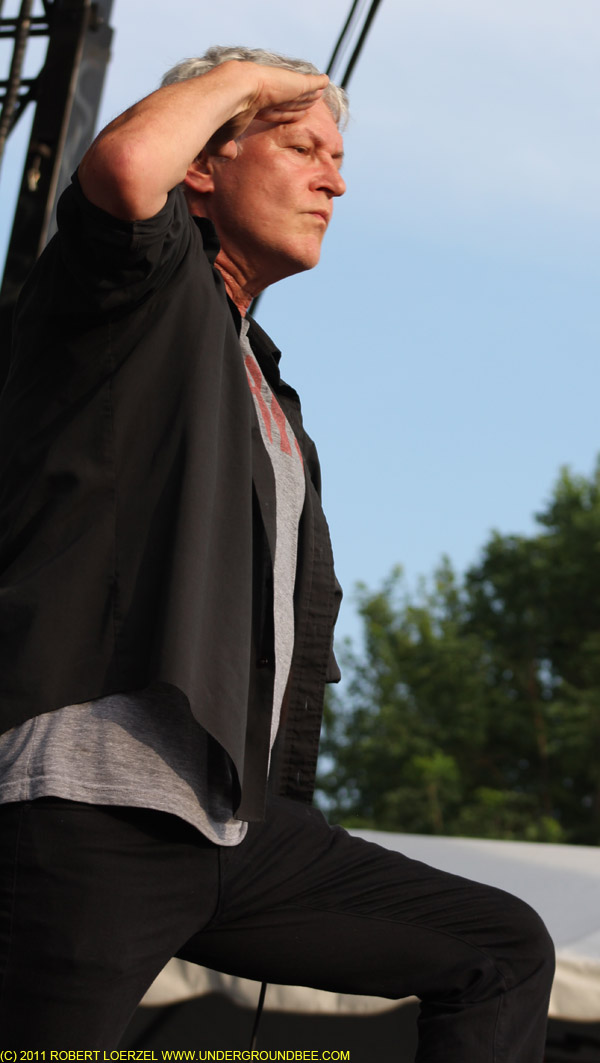
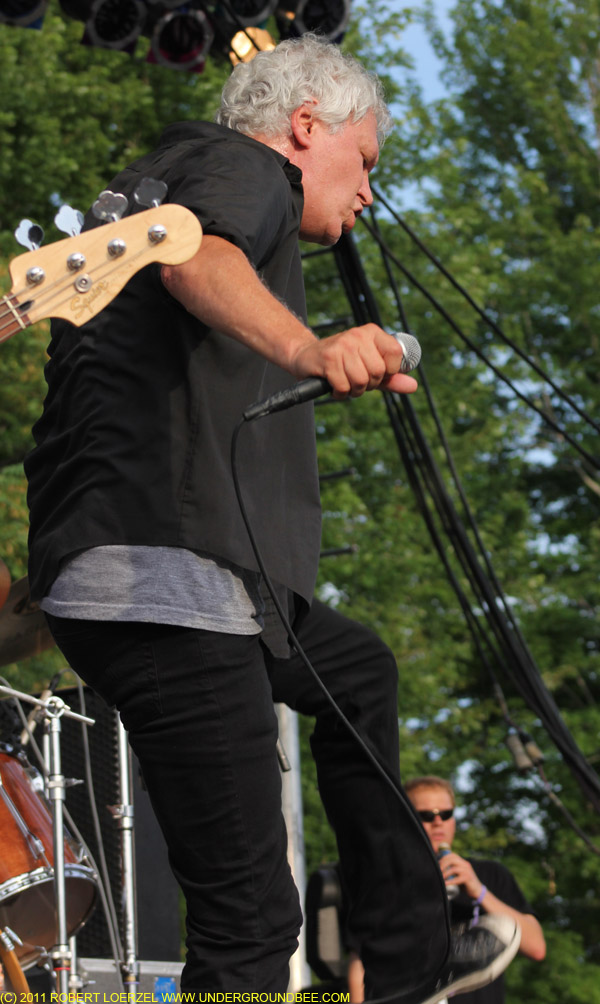
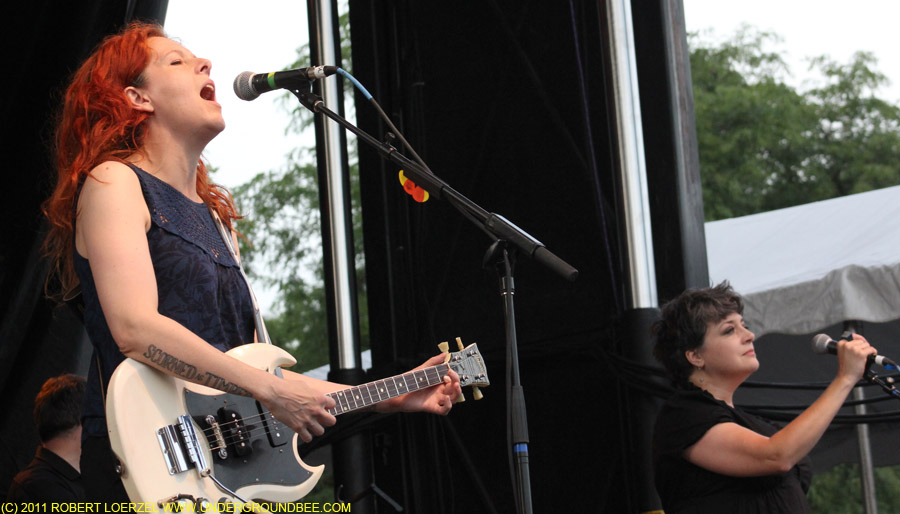

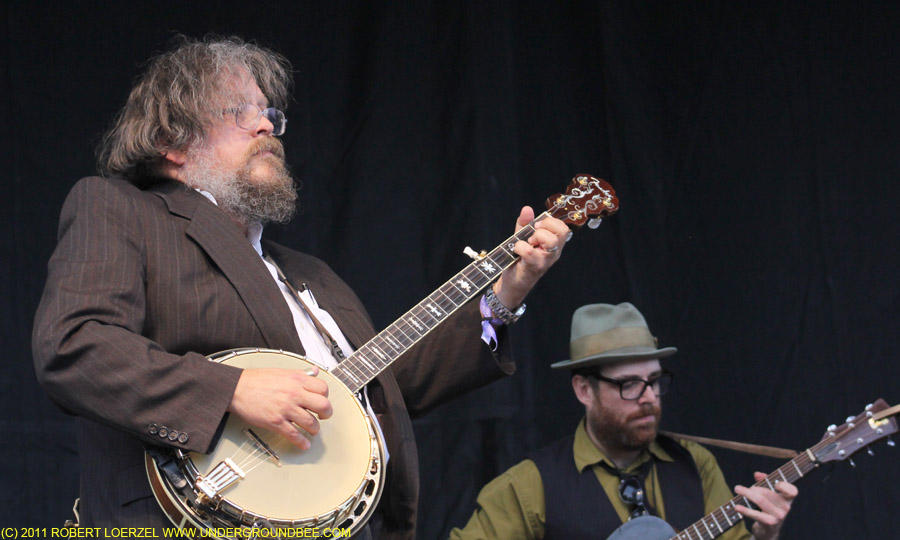







More Pitchfork Music Festival 2011 coverage: Day One Review / Day Two Photos / Day Two Review / Day Three Photos / Day Three Review / More Photos / Photos for WBEZ
The Flaming Lips revisit ‘The Soft Bulletin’
When an artist makes an album as good as the Flaming Lips’ 1999 masterpiece, The Soft Bulletin, you long to see an equally fabulous concert of that music — or dare one hope for a concert that somehow even surpasses the recordings you’ve come to love so much? Unfortunately, when the Flaming Lips played at Chicago’s Metro on July 17, 1999, the concert did not live up to the album. Sure, it was a night with an interesting and creative concept — a headphone concert, with the music on stage being transmitted by radio signal to headphones worn by each audience member. But the headphones didn’t end up providing an aural experience all that much different from the usual sound of a concert filling a room, and the band was struggling to figure out how to play its latest and lushest music in concert. At that point, the Lips had been reduced to just three band members, at a time when the arrangements were becoming more elaborate and layered. The band tried to pull it off live by using a lot of recorded background tracks, and it came off at times like a karaoke version of The Soft Bulletin.
In the years after that, the Flaming Lips transformed their live shows into confetti-filled circuses — an unlikely turn of events for a band that spent many years as a scruffy small-label band barely noticed by anyone. The Flaming Lips somehow became the band that knew how to put on a ridiculously fun party of a concert. In fact, after a while, the Lips started to feel like they were in a rut. Sure, it’s a blast to see people dancing around in alien and Santa costumes while Wayne Coyne cruises on top of the audience inside a plastic bubble, but how many times do you need to see that? And while the Lips fell into this routine, they largely ignored many of the great compositions they’d recorded on The Soft Bulletin.
And so, it was exciting to hear that the Flaming Lips had decided to play the entirety of The Soft Bulletin from beginning to end — including a show Thursday night (July 7) at the Aragon in Chicago. Now that the Lips are supplemented on tour with three extra musicians, they don’t have the same problems they did back in 1999 duplicating this music onstage. And finally! To hear the Lips play some of the wonderful songs they’ve been leaving out of their concert repertoire for too long — what a joy.
The show still fell short of the perfect Soft Bulletin concert I had summoned in my imagination. One flaw was that Wayne Coyne just talks too much. If he were more succinct and didn’t ramble so much between songs, it would improve the pacing. Still, it has to be said that his introductions to songs such as “The Spiderbite Song” and “Waitin’ For a Superman” — explanations of the personal stories and thoughts that went into the songs — gave them more emotional depth. Introducing “Superman,” Coyne summed up the theme of the whole album: “Knowing the wold can be full of pain, and what are we going to do about it? We sing songs.”
In some ways, this looked and felt like a typical Flaming Lips concert extravaganza, launching with Coyne in his bubble, along with confetti, balloons and smoke filling the air as the audience clapped and danced. The party vibe was infectious, but it didn’t always fit the dark-tinged and quieter musical passages. It was a relief when Coyne encouraged the remaining balloons to be popped before he sang “The Spiderbite Song,” sobering up the atmosphere a little bit. And as always, the Aragon provided muddy, echoing acoustics, not ideal to hear all of the nuances.
Those flaws aside, it was magnificent to hear songs such as “The Spark That Bled” — expertly arranged art-rock suites with haunting lyrics — played in their full glory. “Waitin’ for a Superman” was quiet and stirring, just Coyne singing as Steven Drozd played piano. At this moment, when I didn’t expect it, I found myself tearing up.
In an odd way, the bridge of “The Gash” — or is it a chorus? — feels like the climax of the whole album. It’s one of those rare pieces of songwriting that shows restraint, offering a catchy, soaring musical moment and then failing to repeat it. (This is one of the key questions of songwriting: How often do you repeat something, how many times to do play it over and over, hoping it’ll catch the listener’s ear?) Drozd sang lead vocals on most of this dense song, but Coyne returned to the mic for those cathartic few lines: “Will the fight for our sanity/Be the fight of our lives?/Now that we’ve lost all the reasons/That we thought that we had.”
That was followed by an equally moving performance of “Feeling Yourself Disintegrate,” which Coyne said was the song he was most reluctant to play. It still apparently stirs some raw emotions for him, and you could feel it in this performance. (In his introductory remarks to the audience before the concert, Coyne had said of the album: “It’s still kind of fresh. It’s kind of nerve-racking and all that stuff.”) The closing instrumental track, “Sleeping on the Roof,” ended with Coyne leaning into a footlight and making an atonal electronic buzz.
Appropriately enough, the first encore was a couple of songs from another big album, Pink Floyd’s The Dark Side of the Moon: “Brain Damage” and “Eclipse.” There’s definitely some Floyd in what the Lips were doing on The Soft Bulletin, and the band played a strong version of these Floyd songs. The second and final encore was “Do You Realize?” The confetti cannons were firing full-blast once again. I saw a woman crying.
